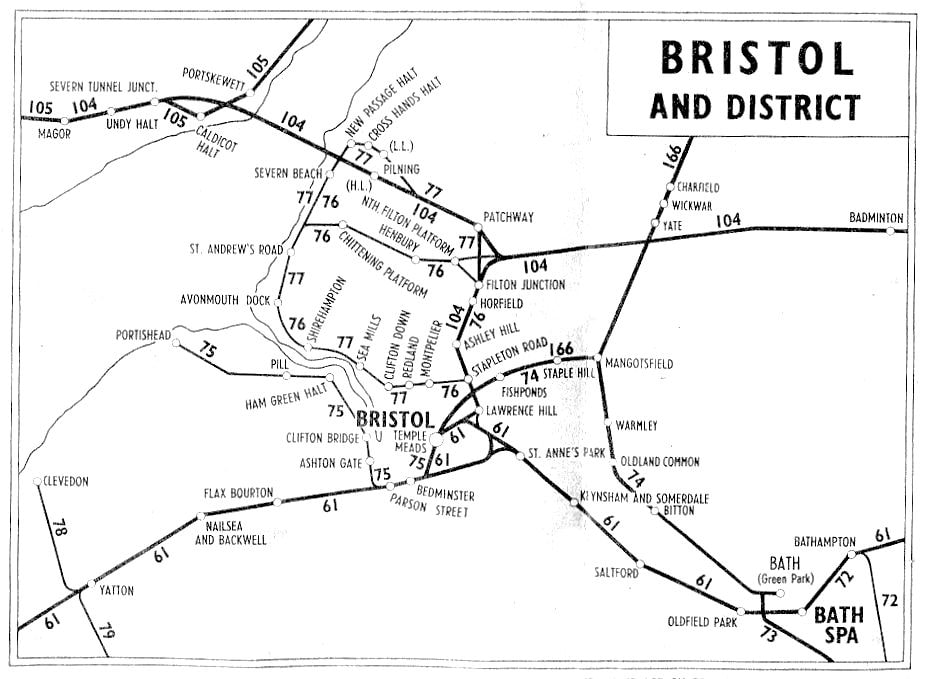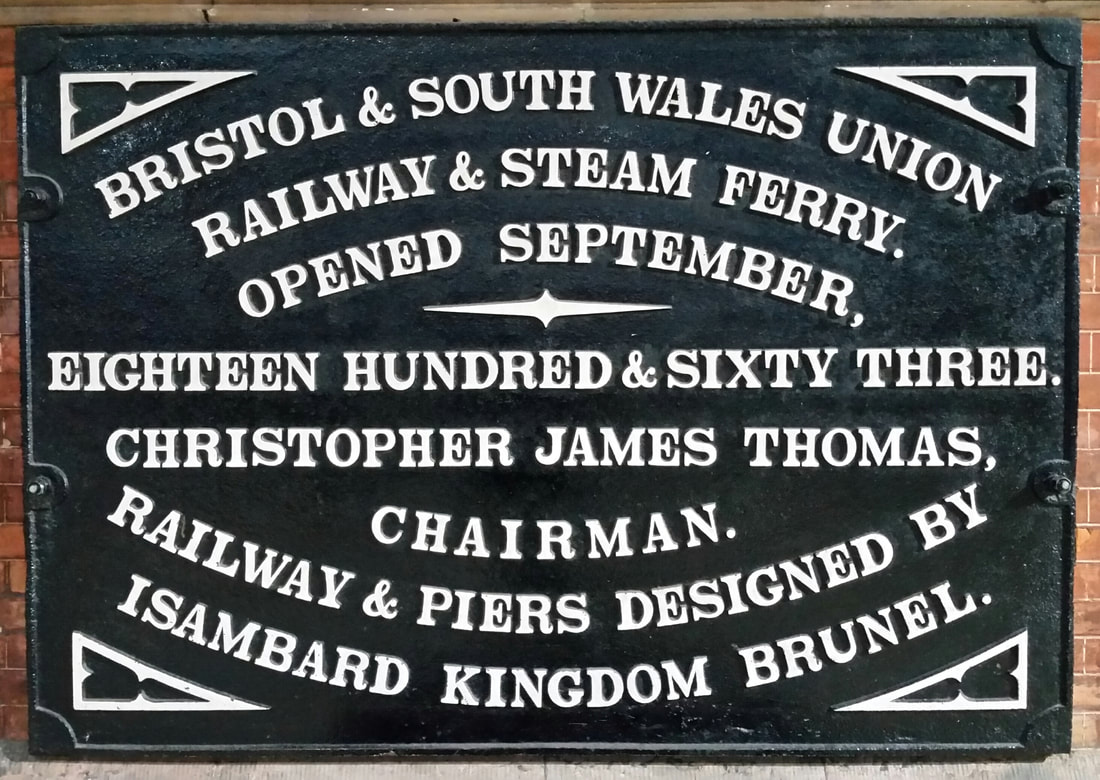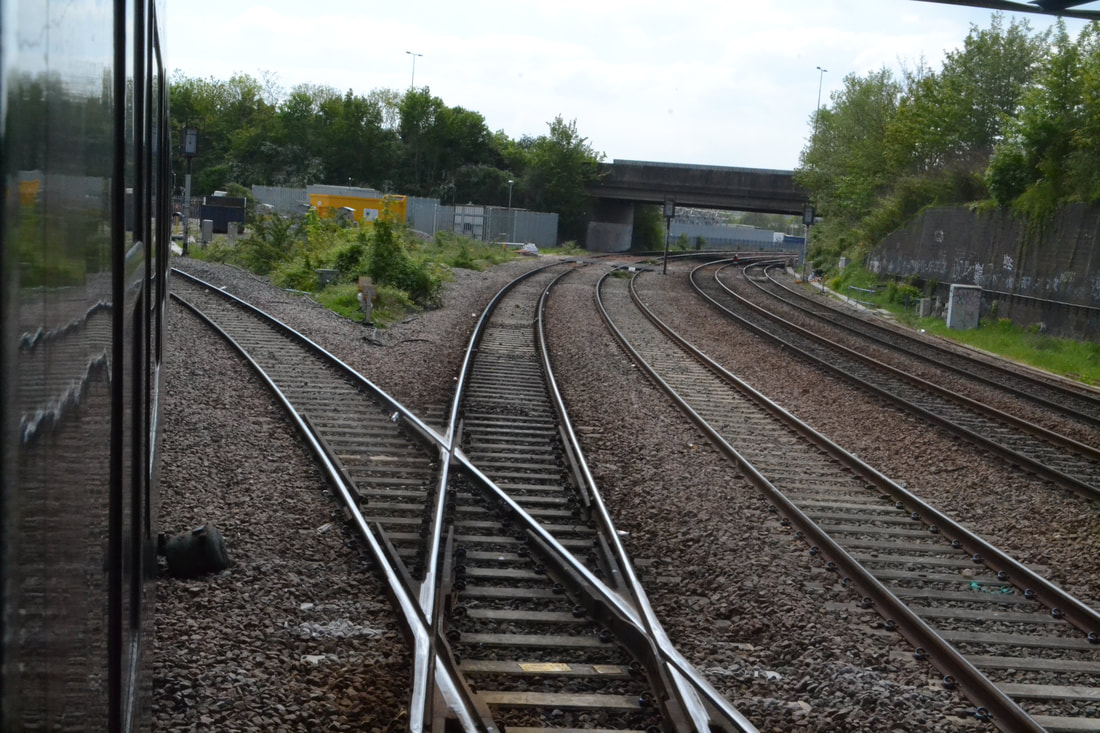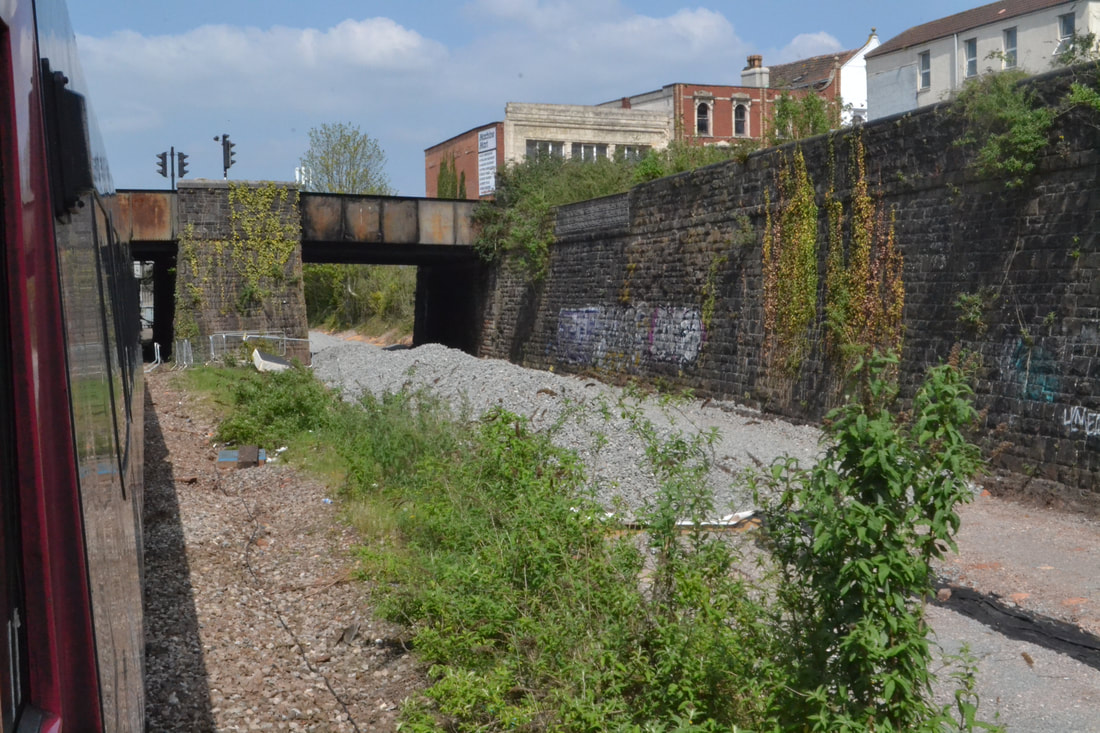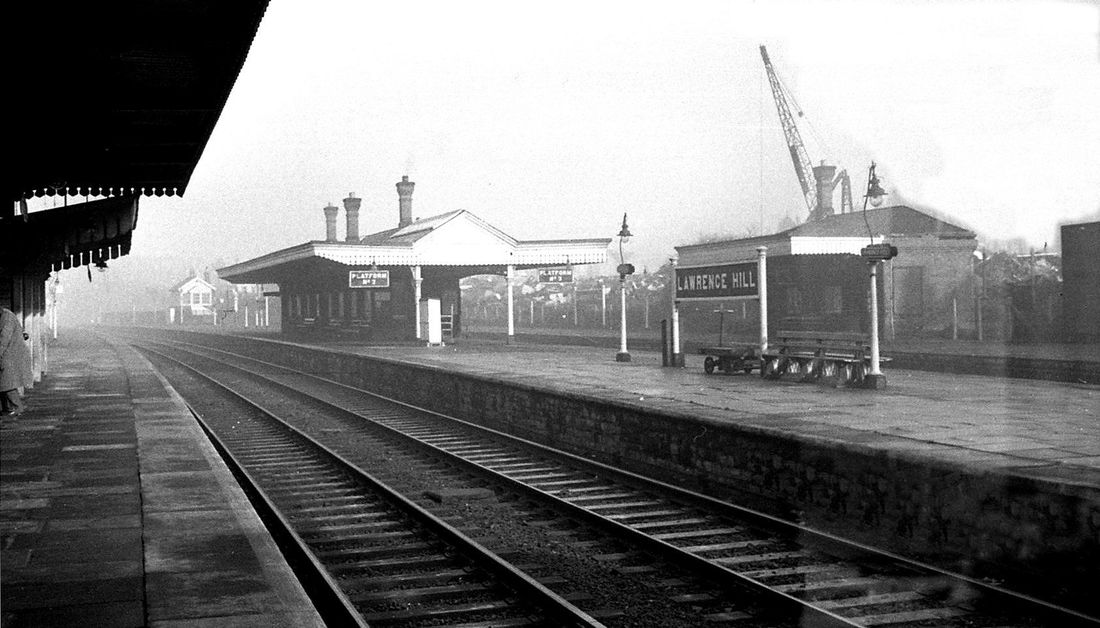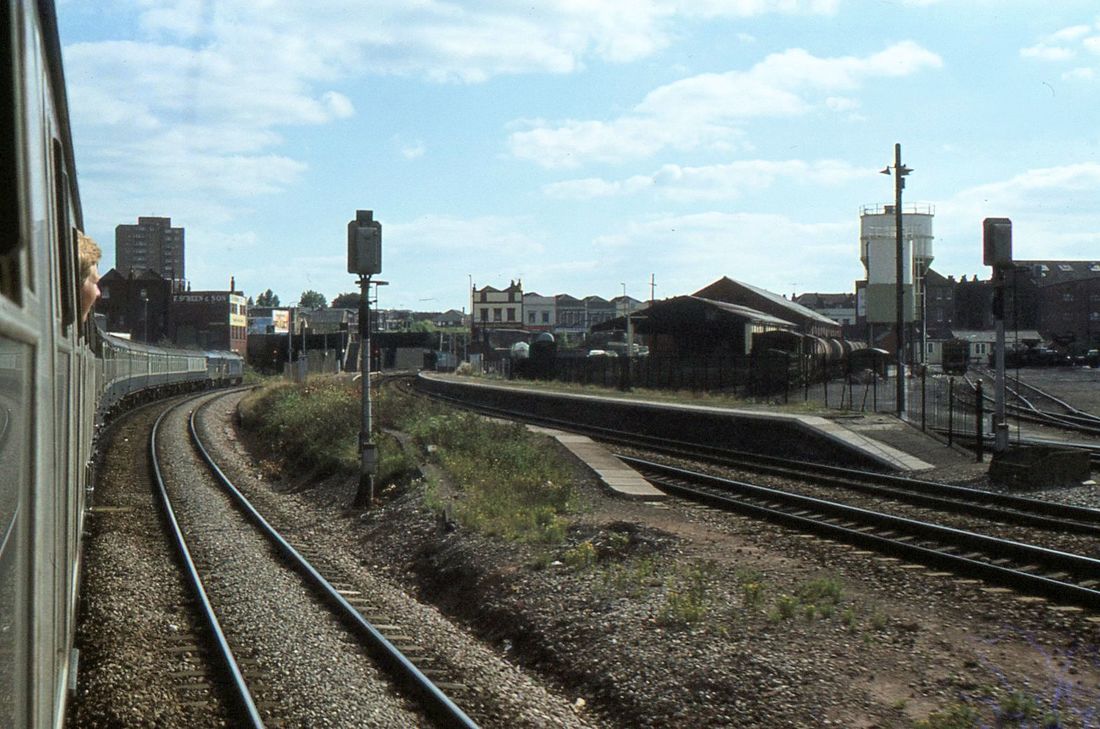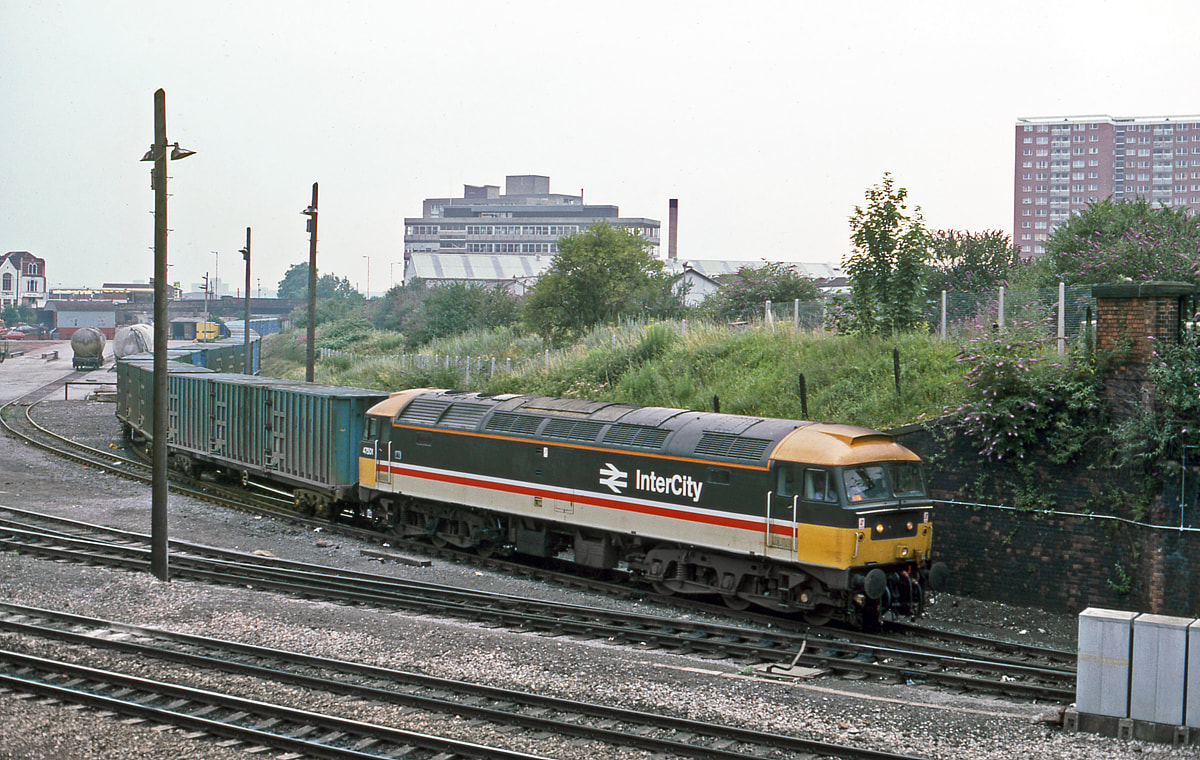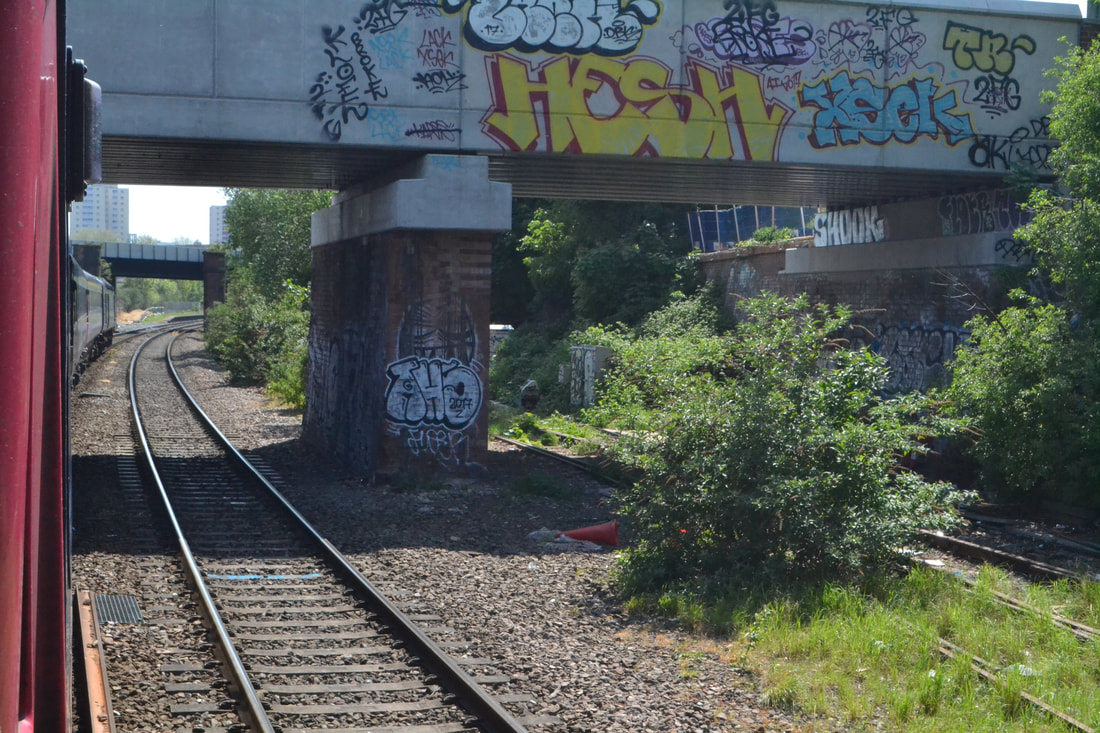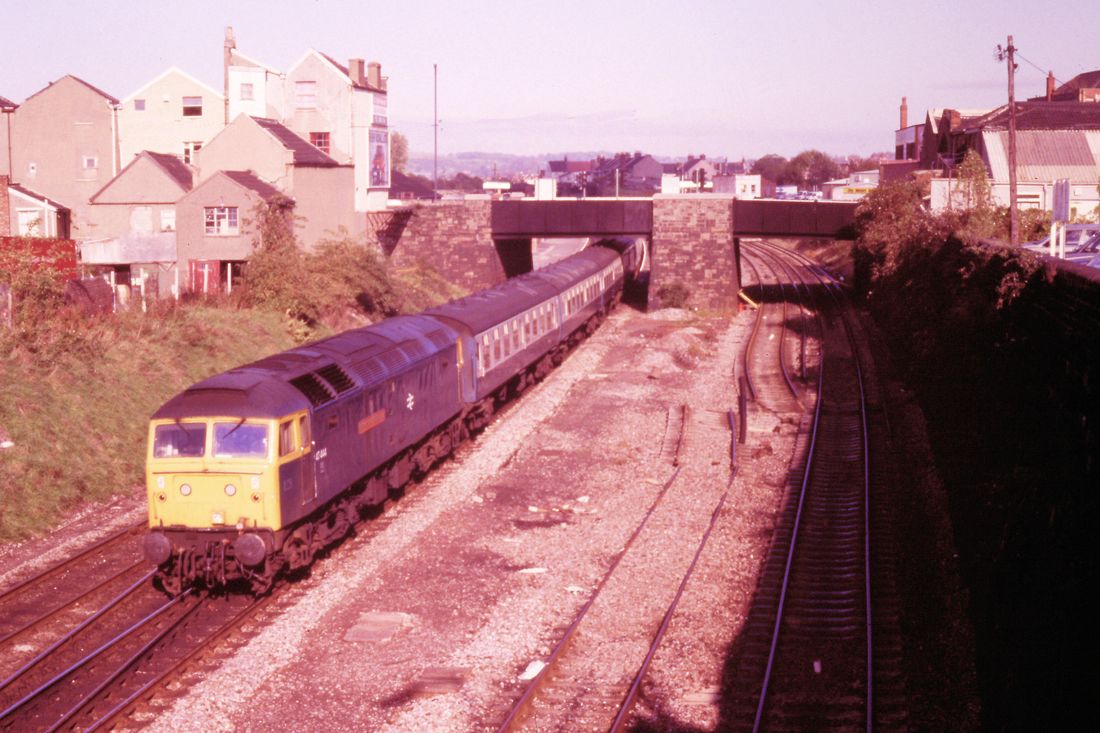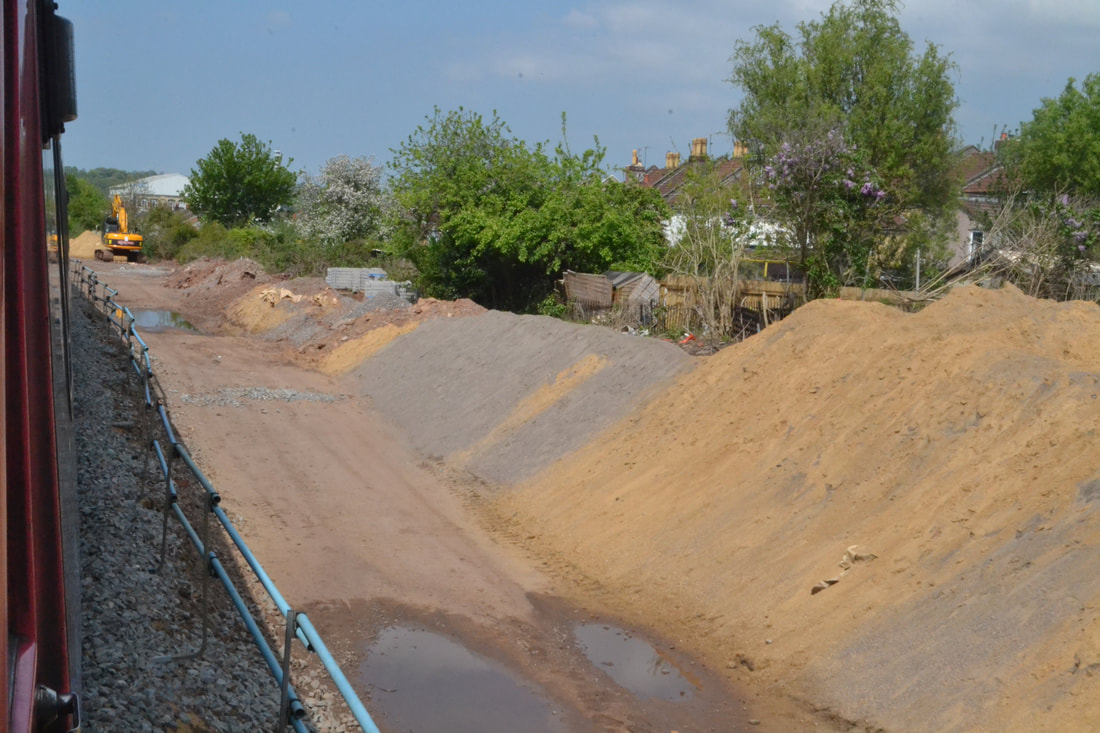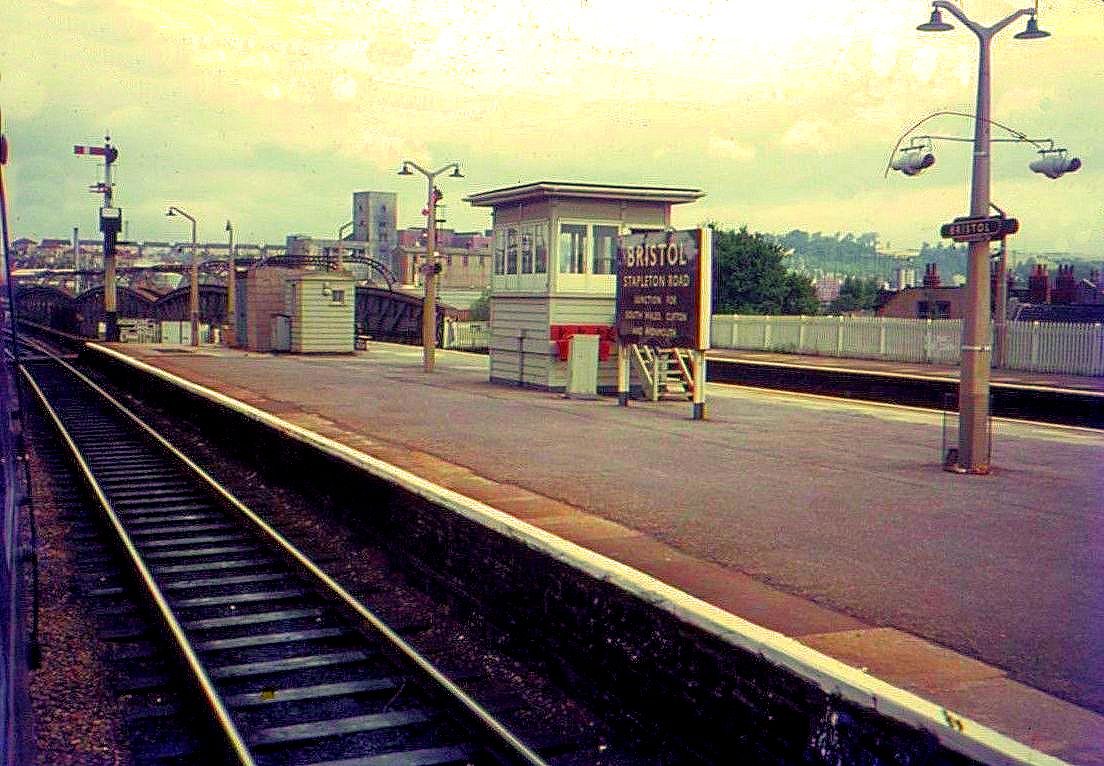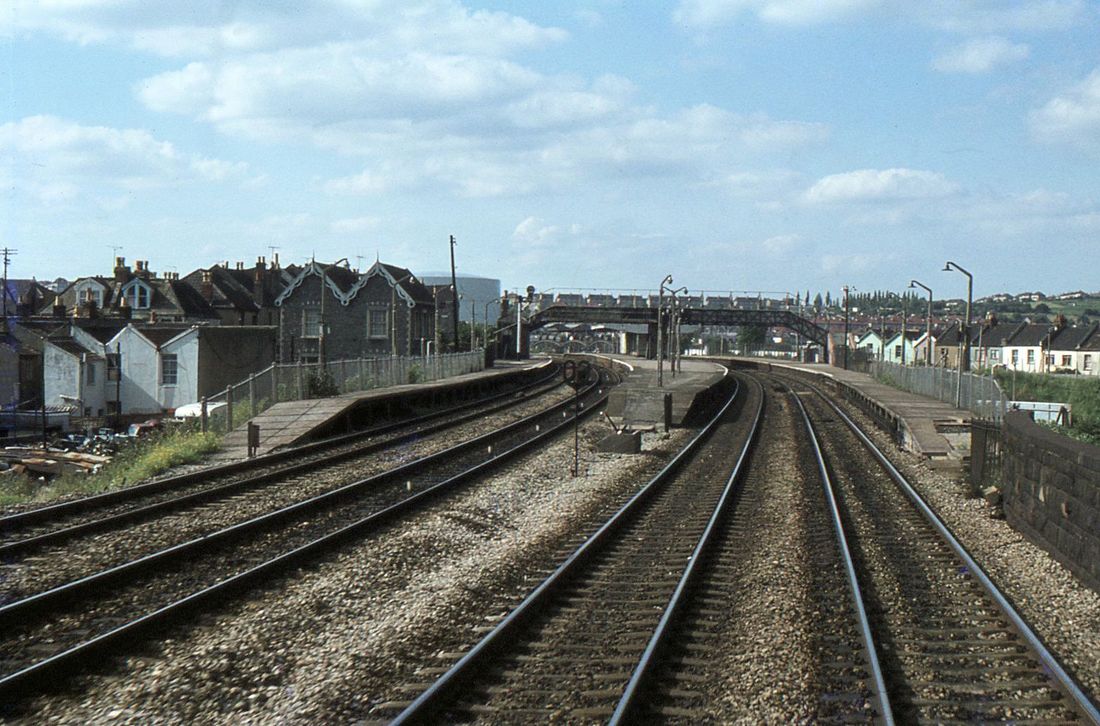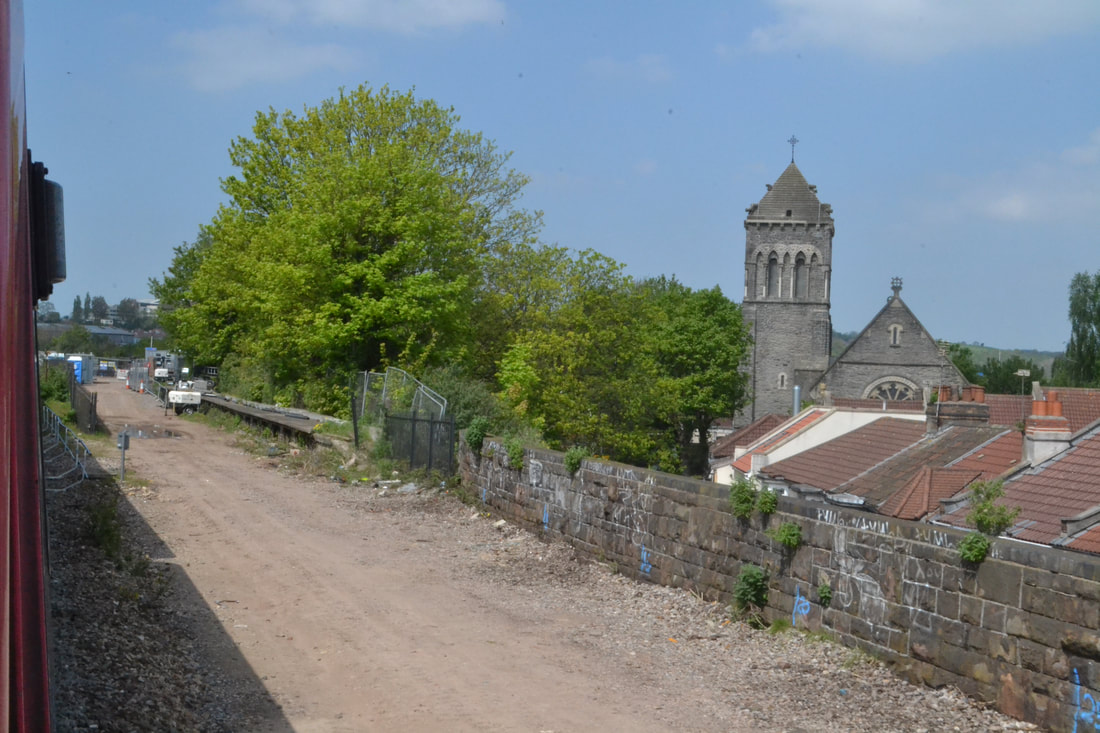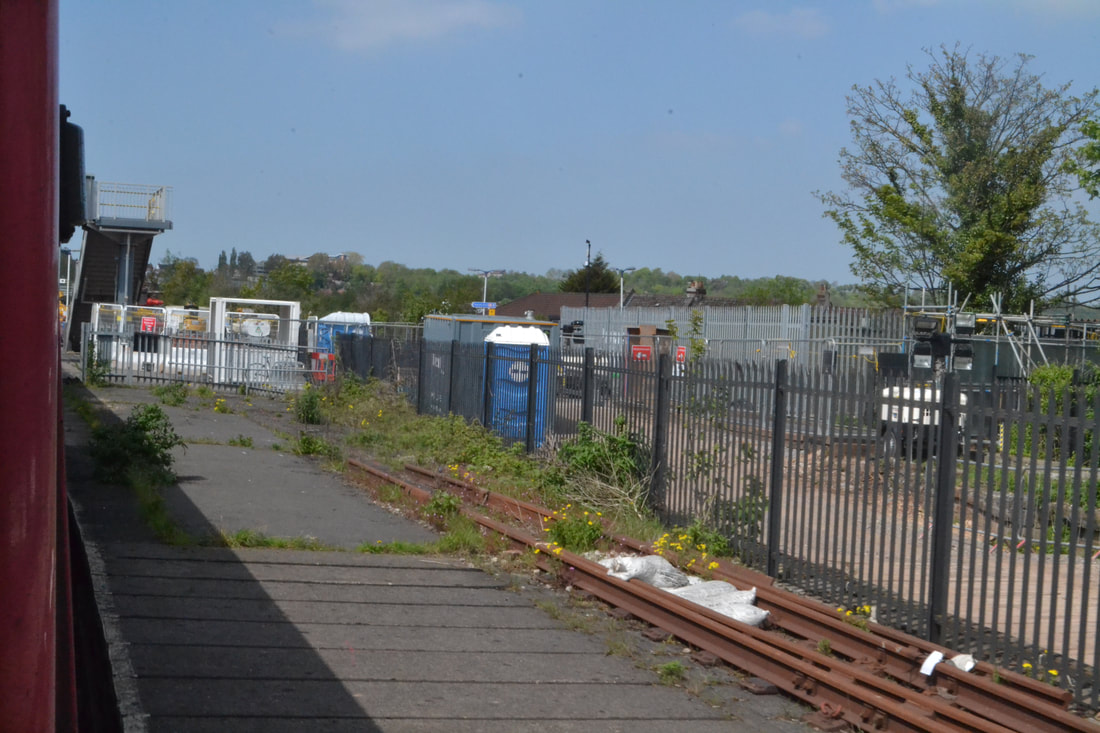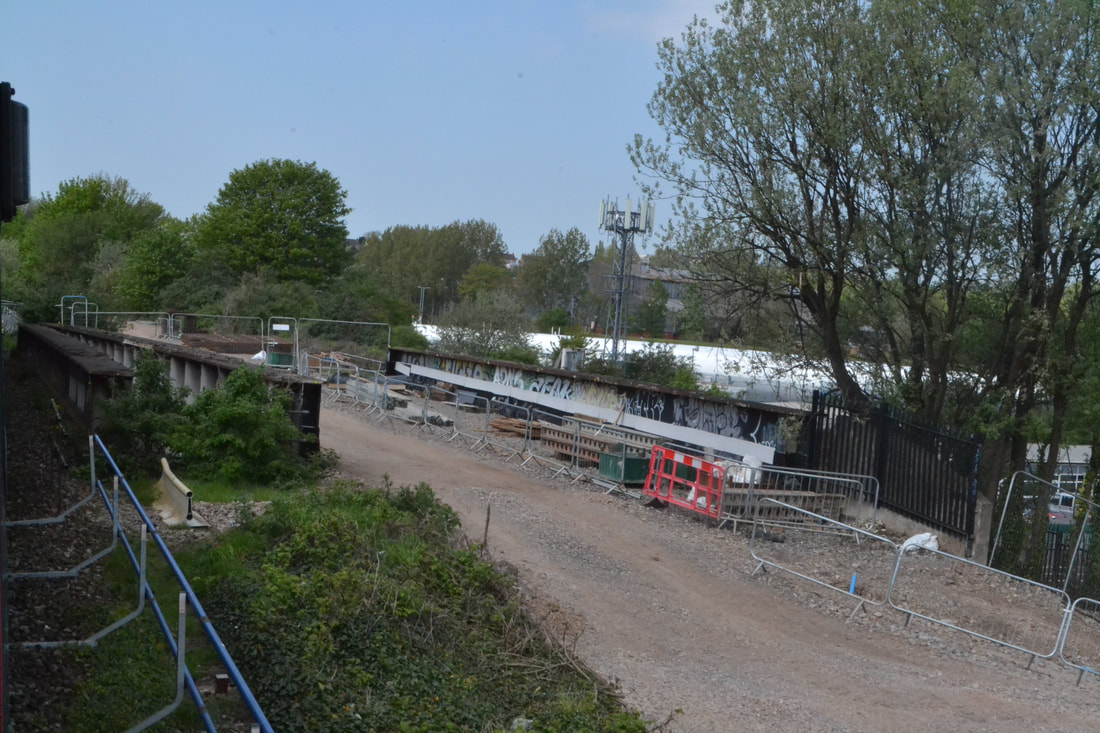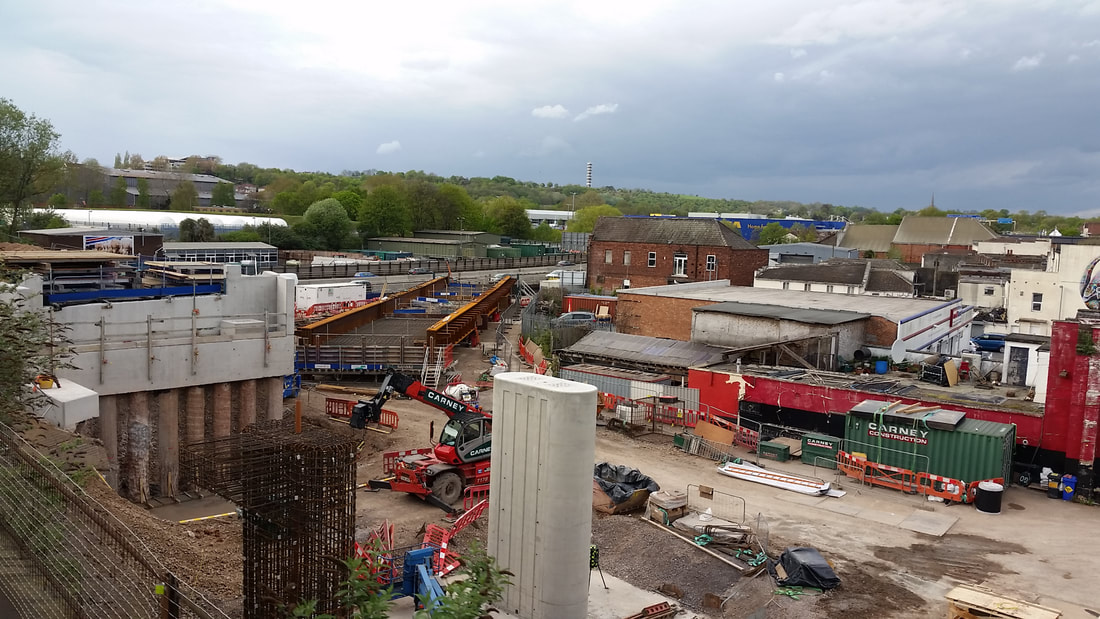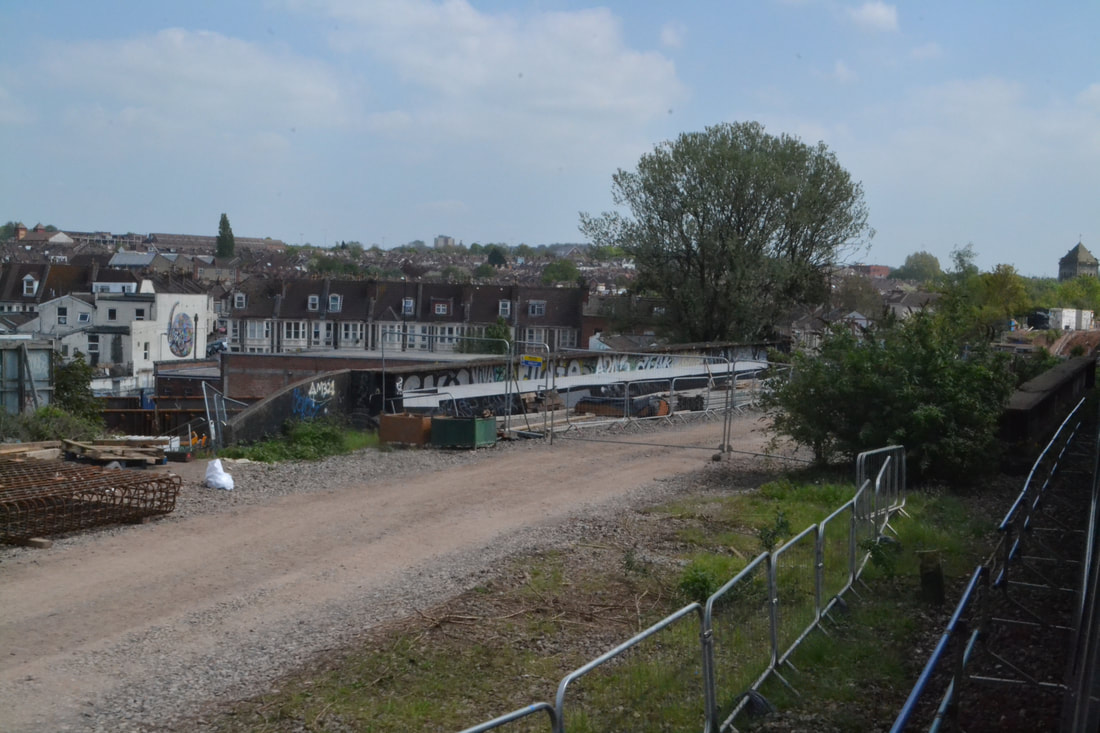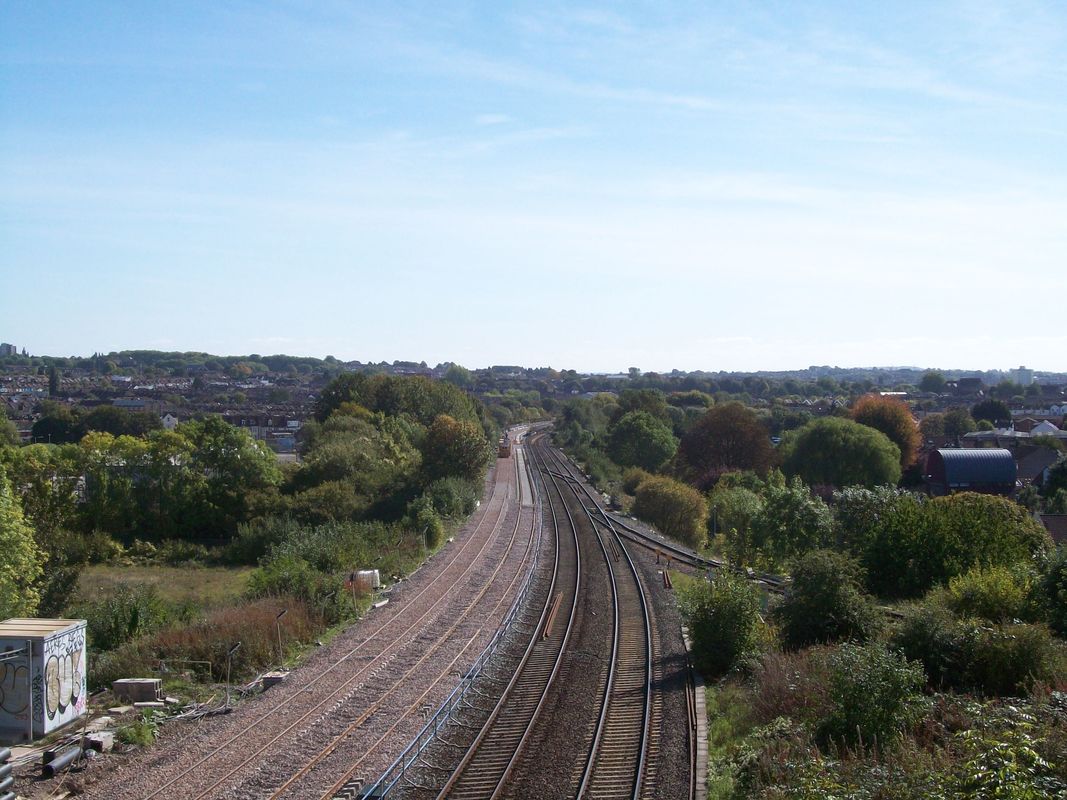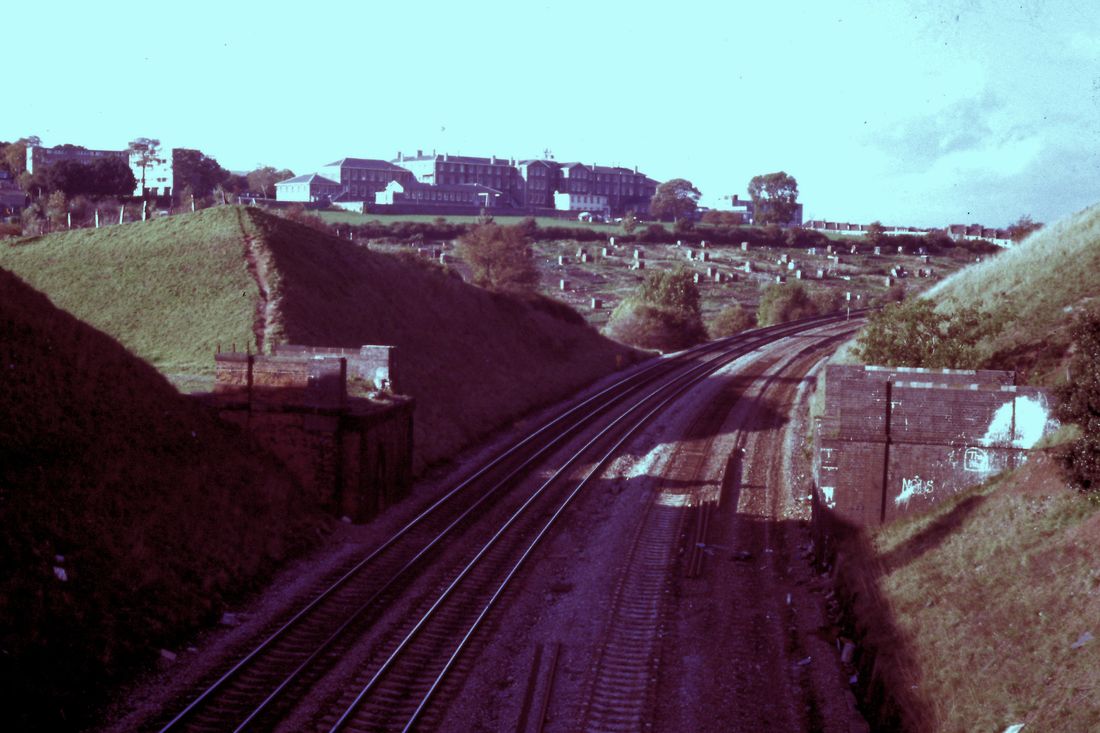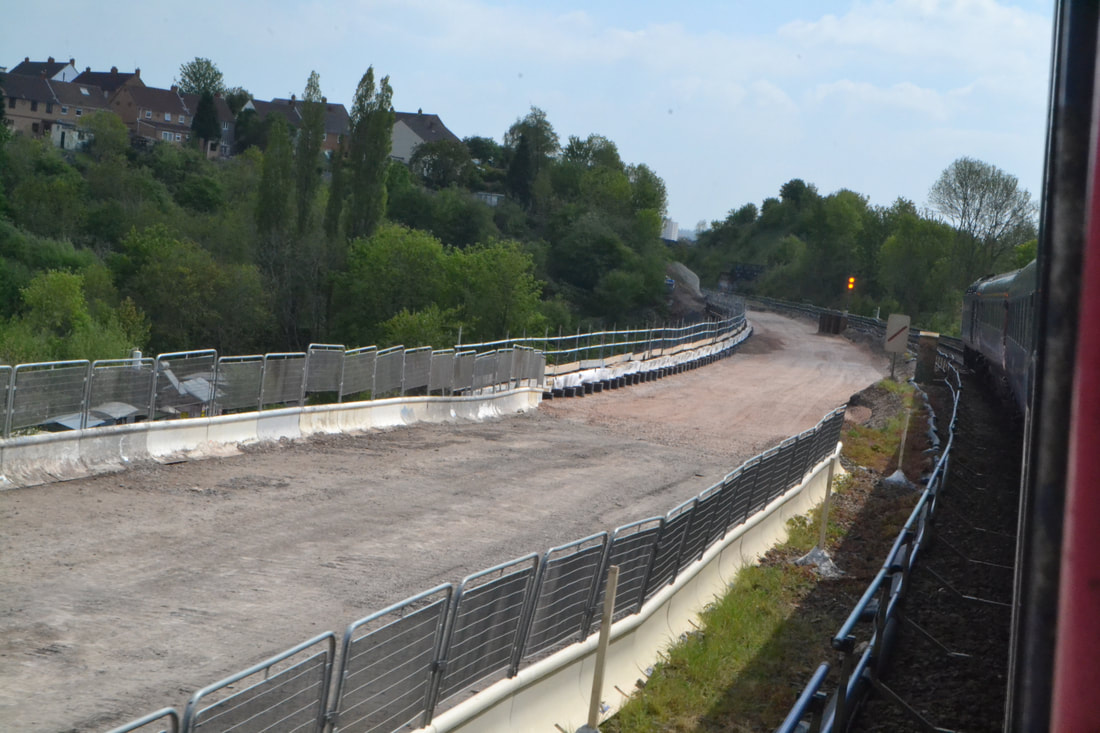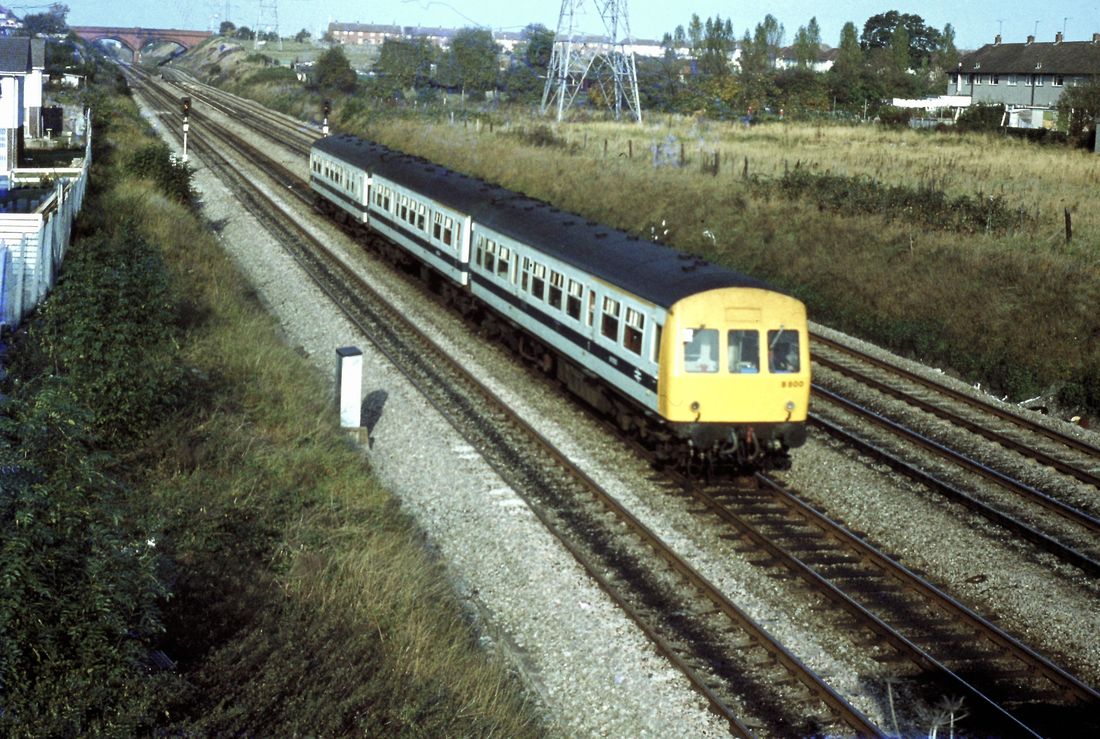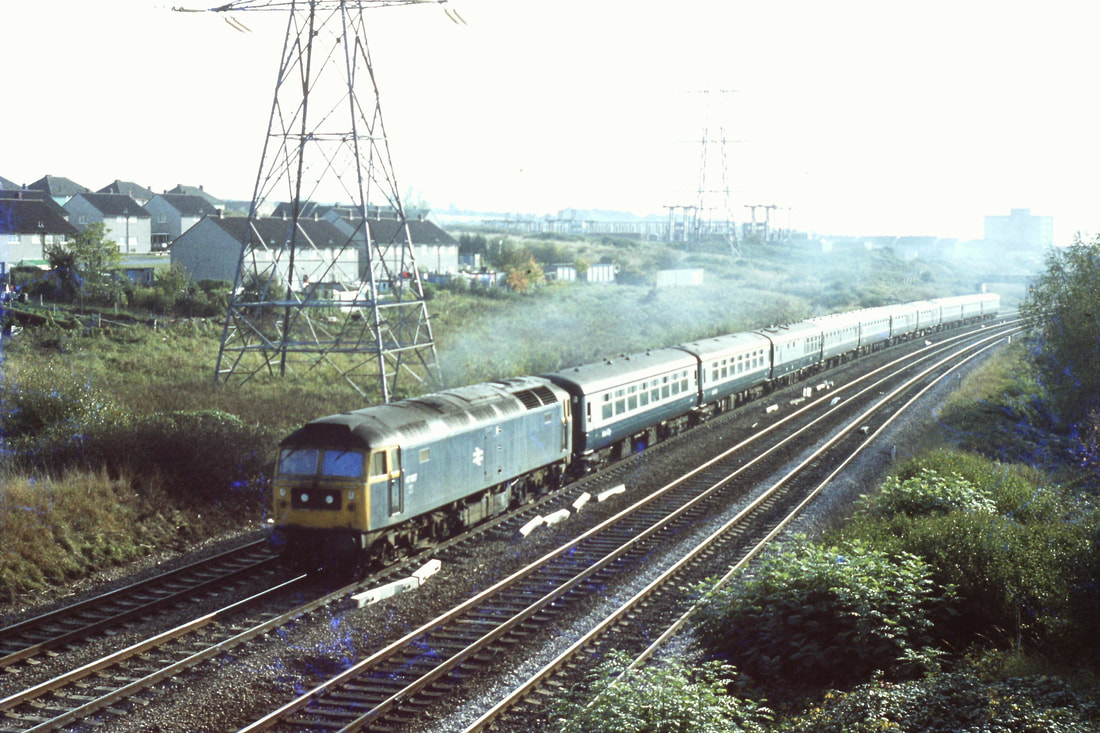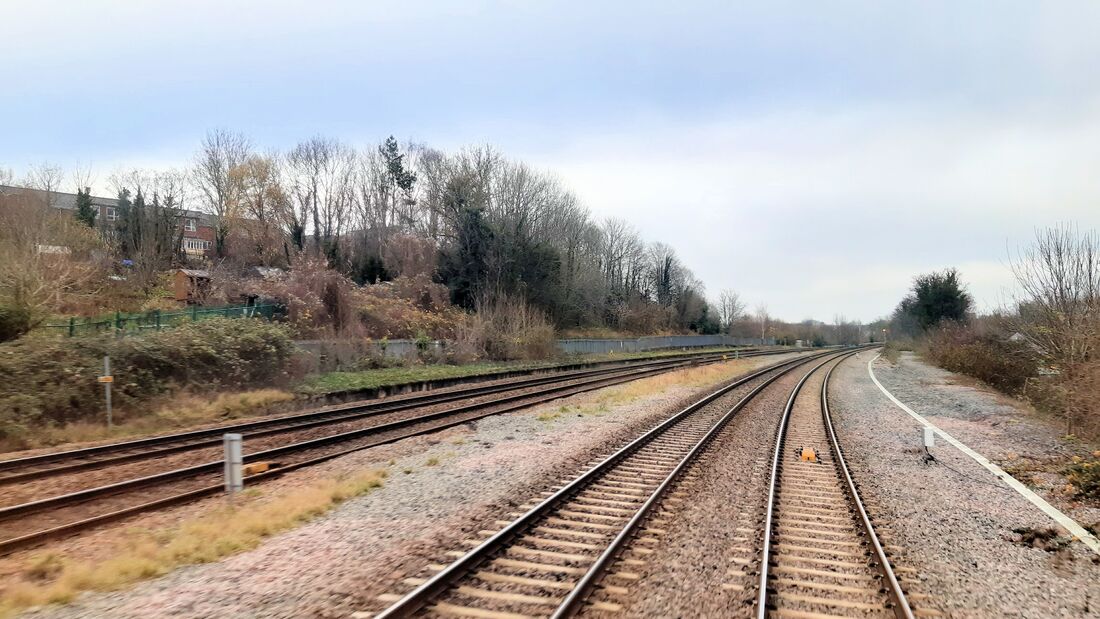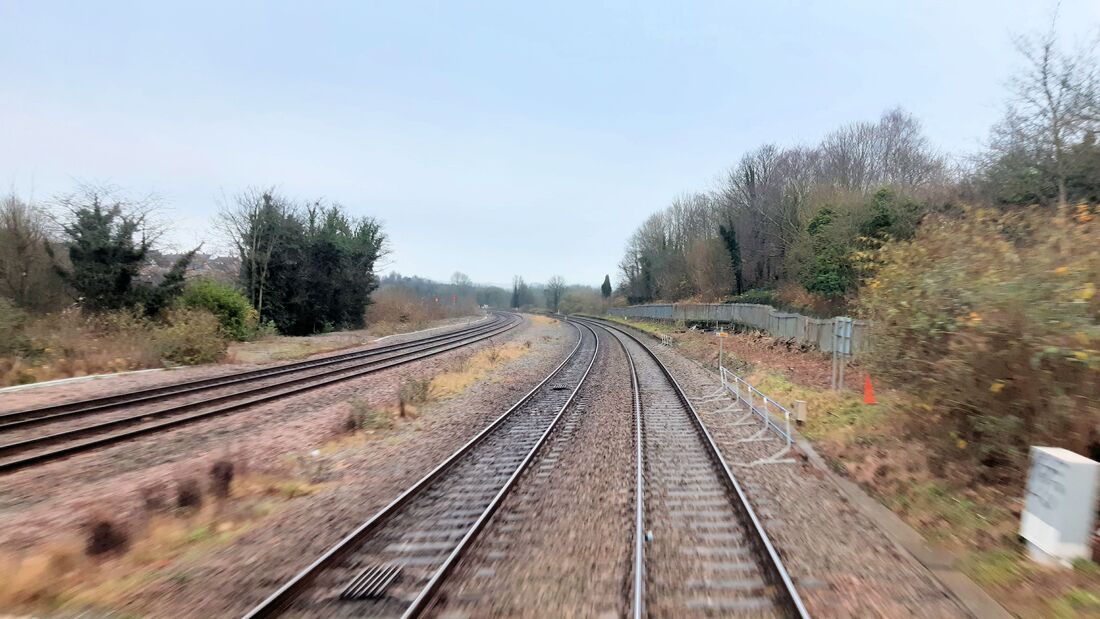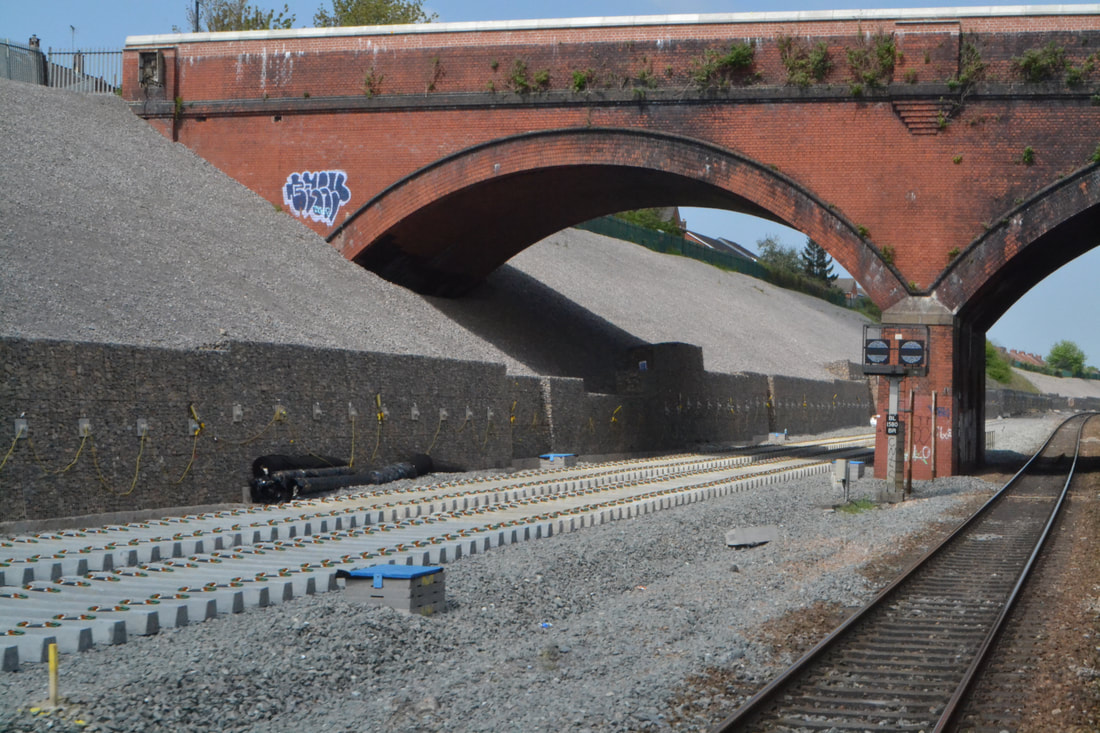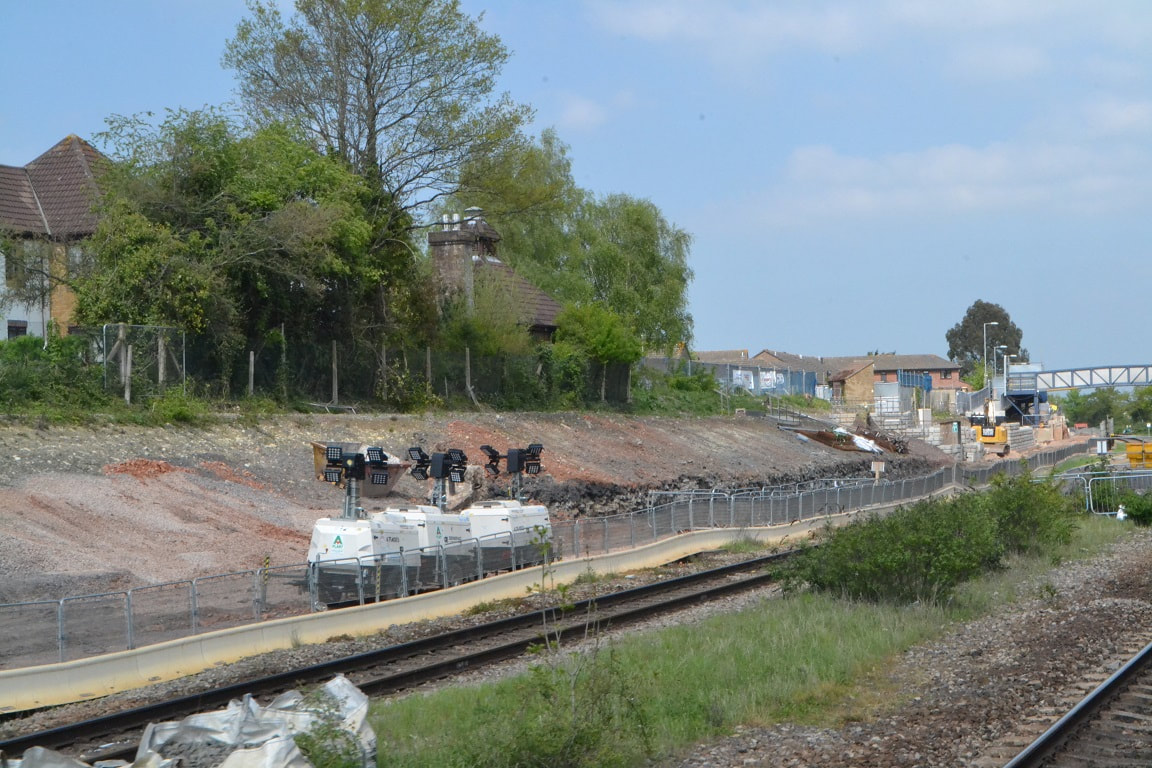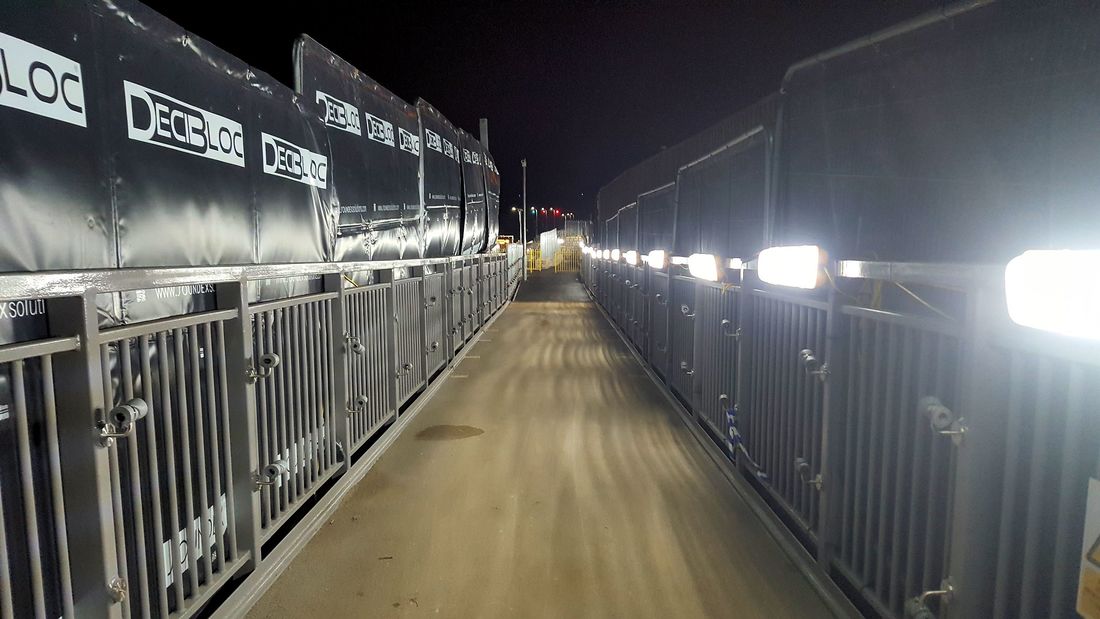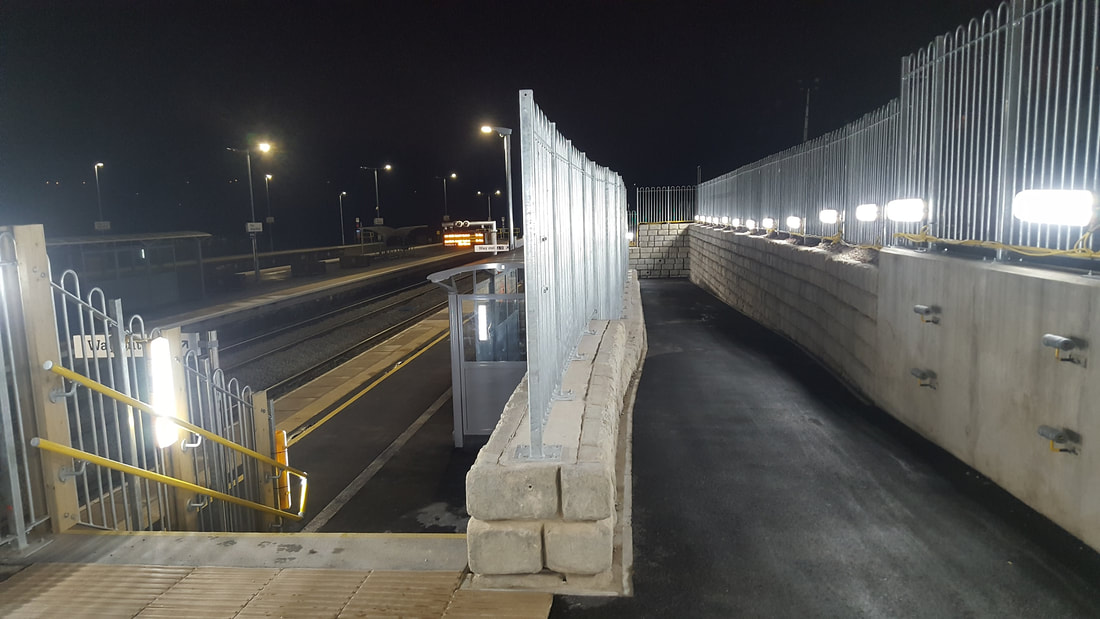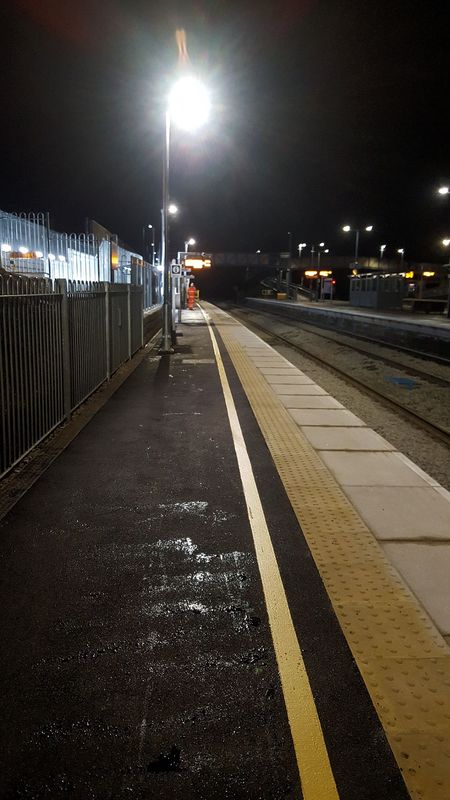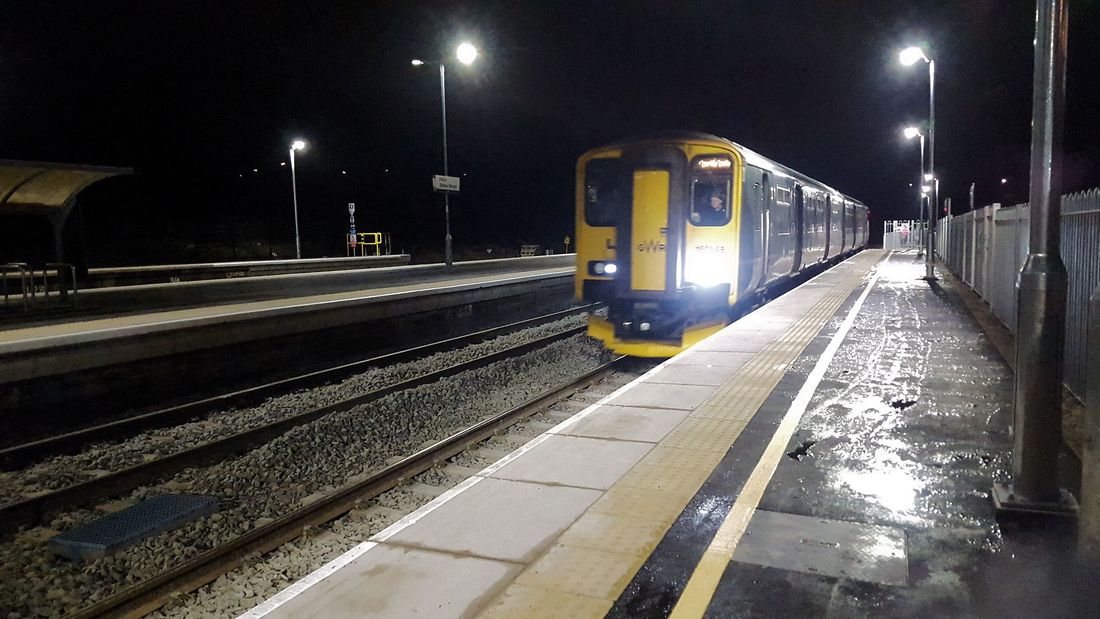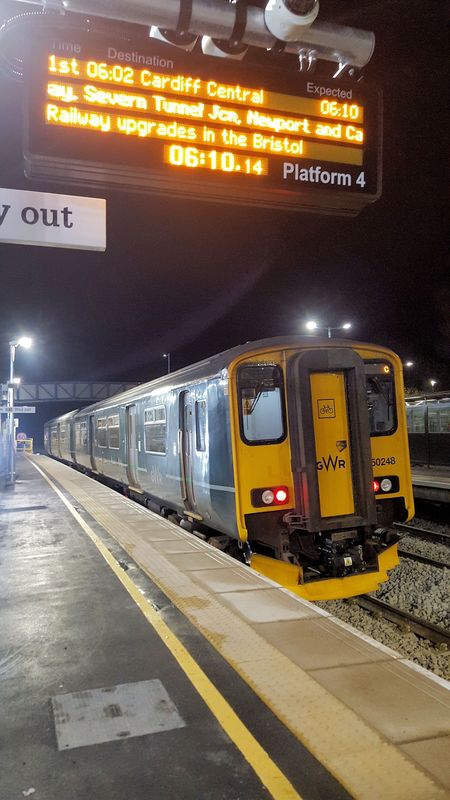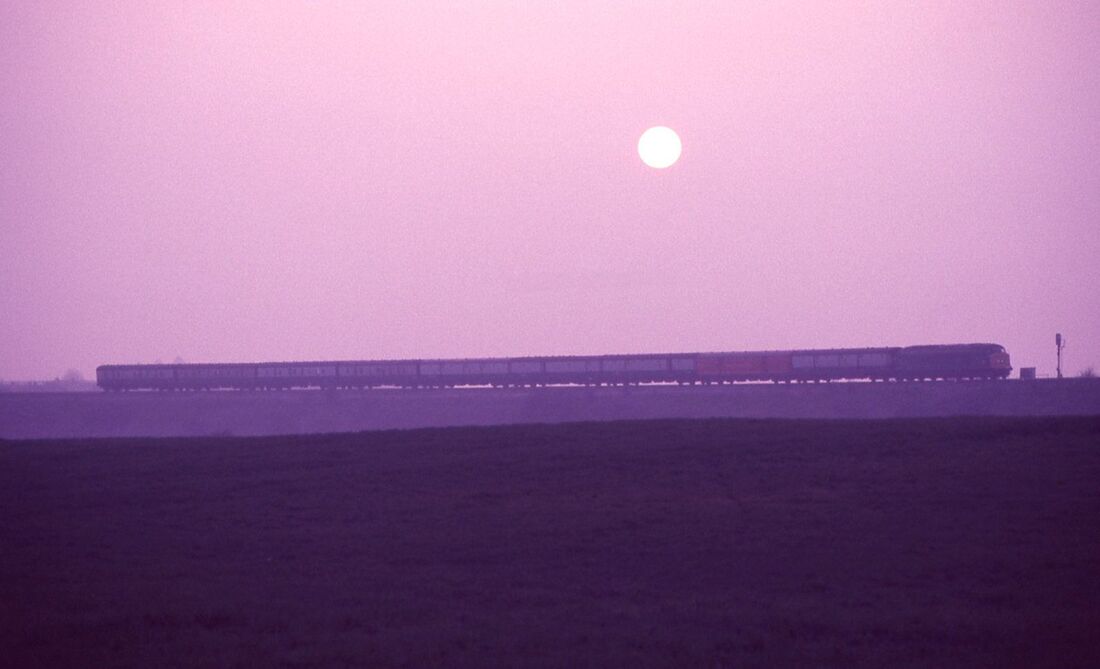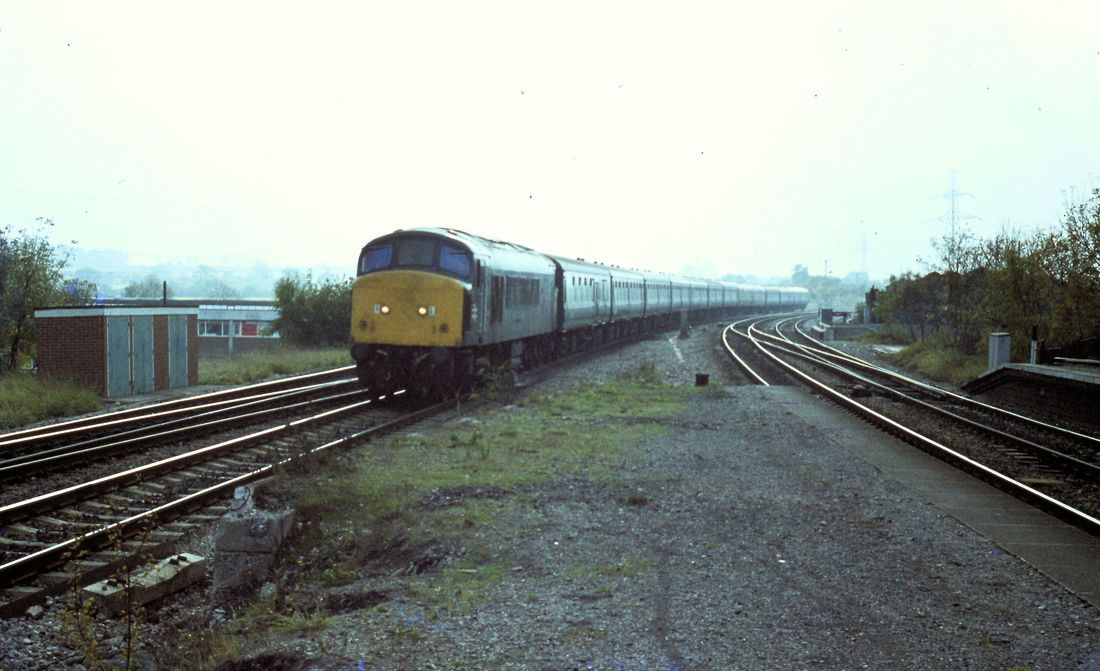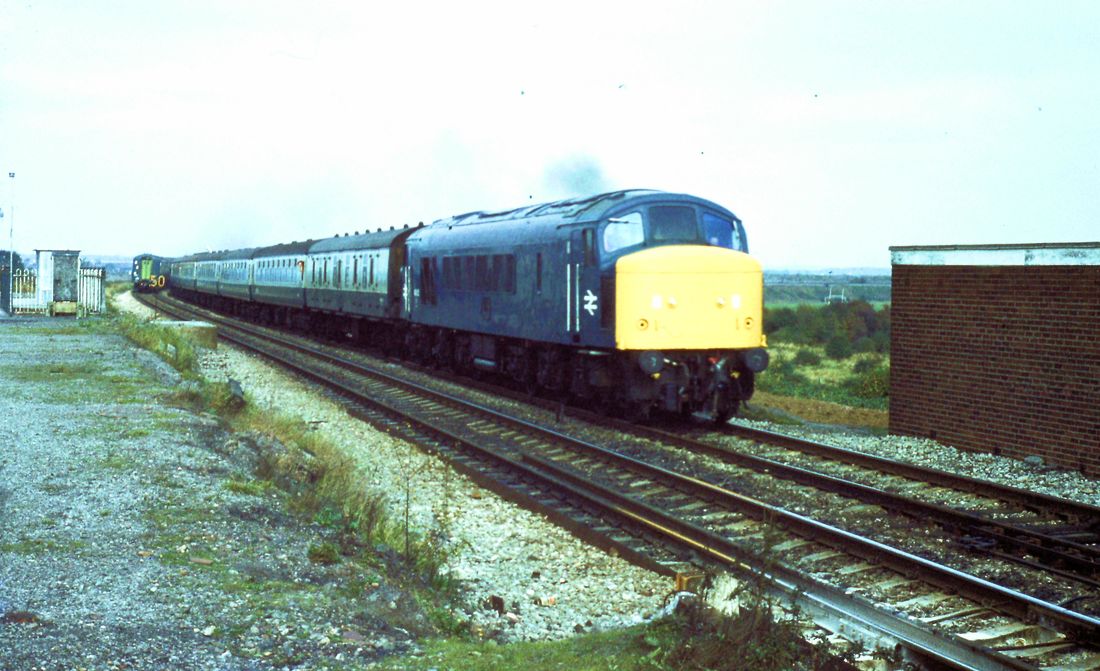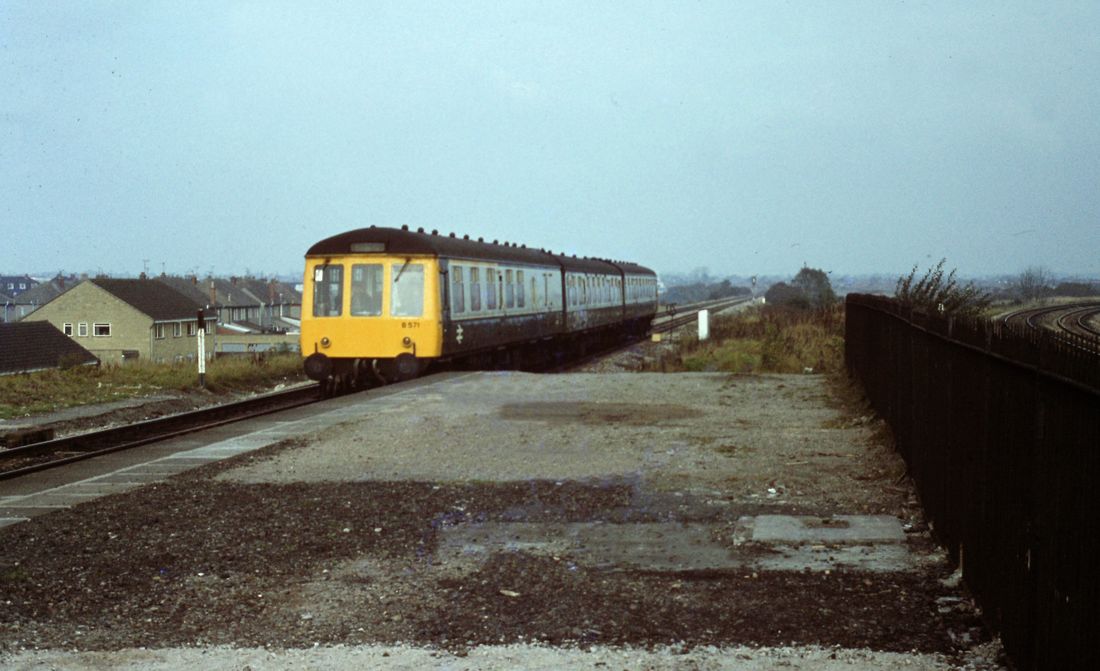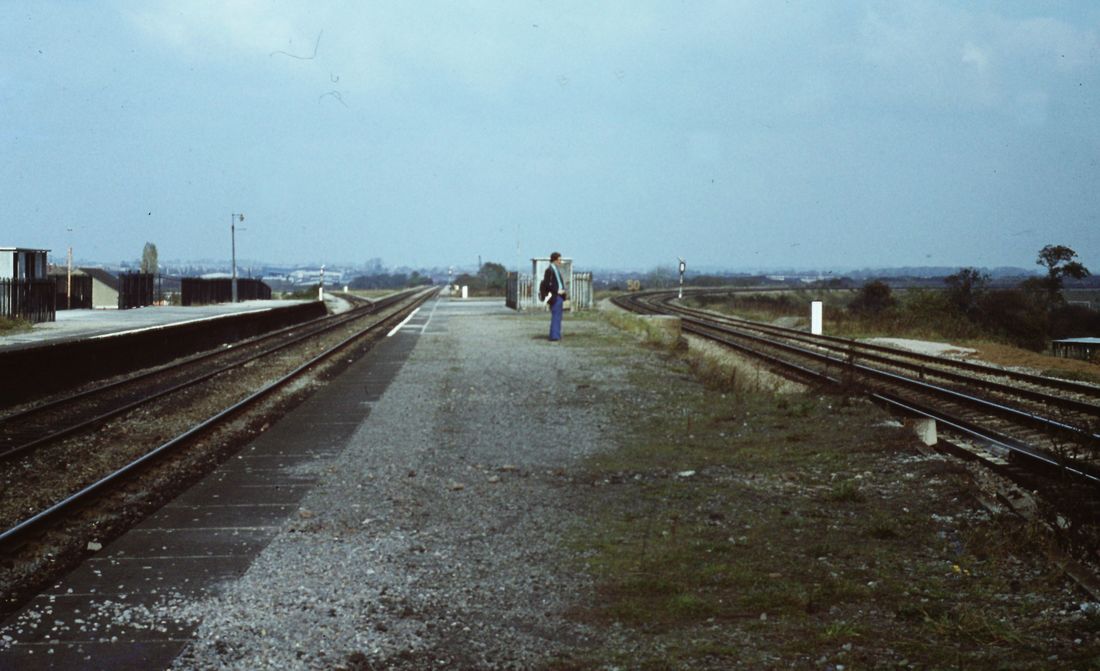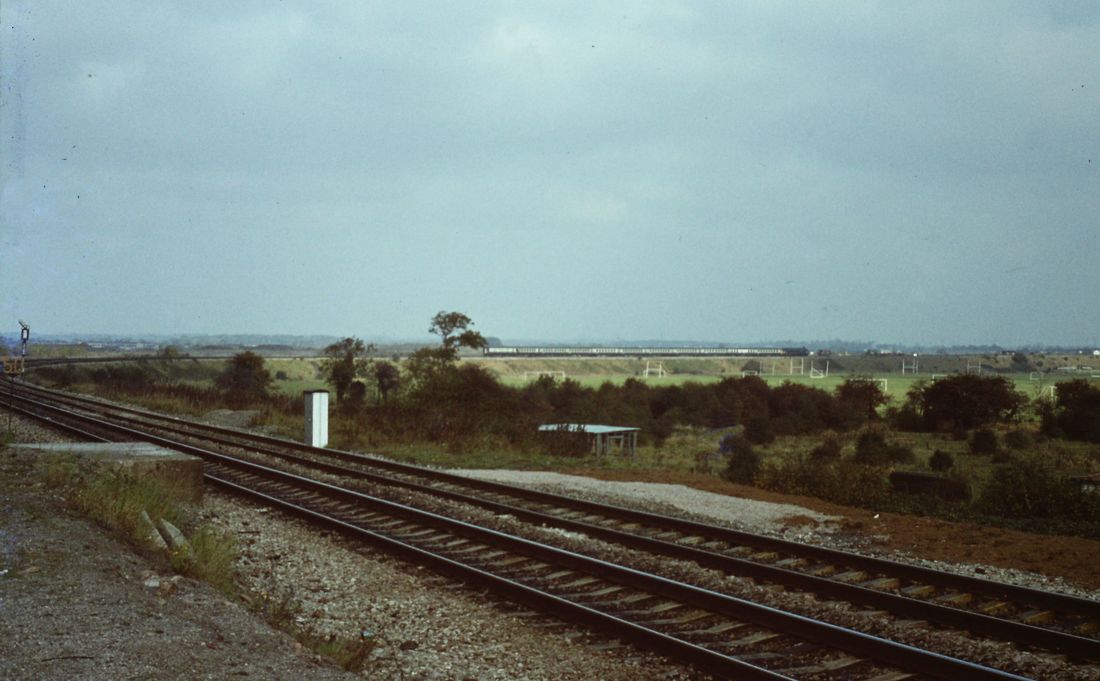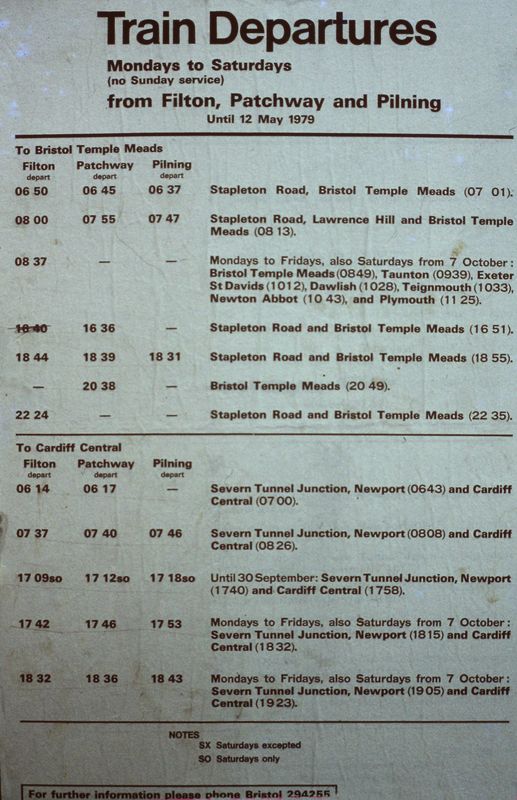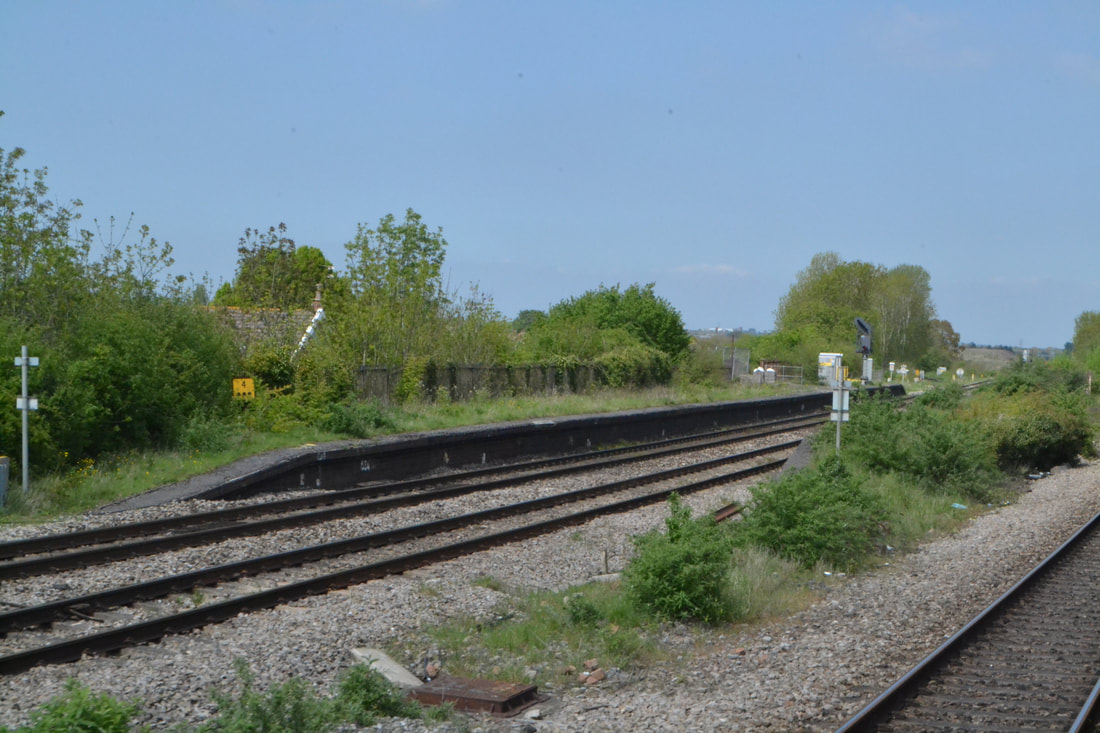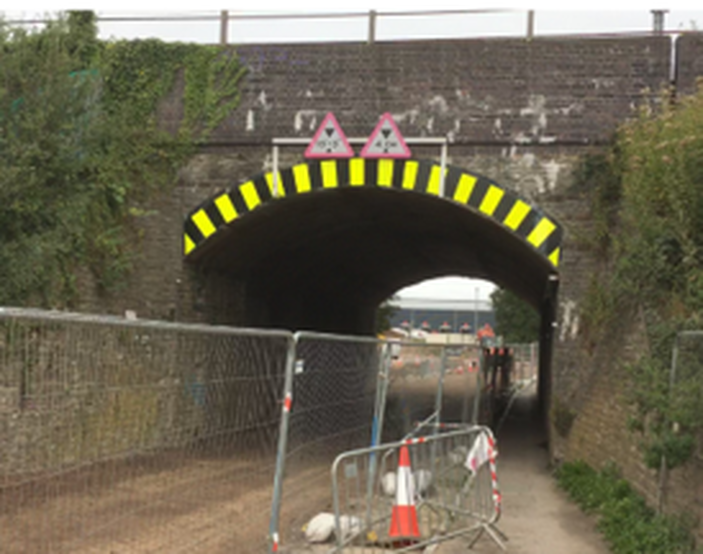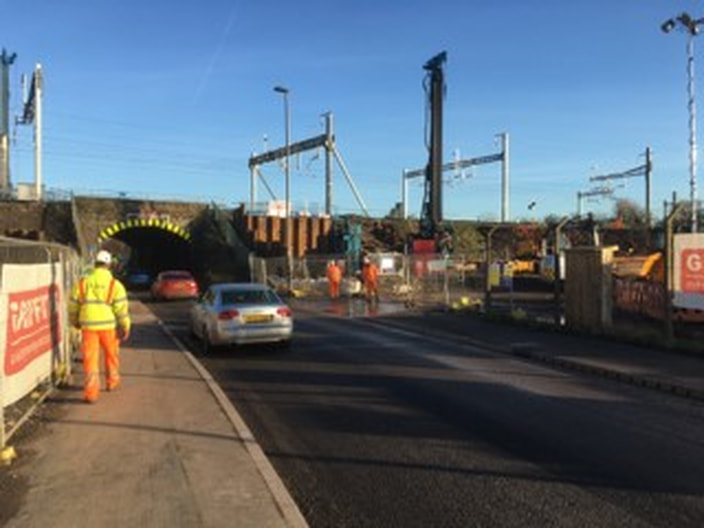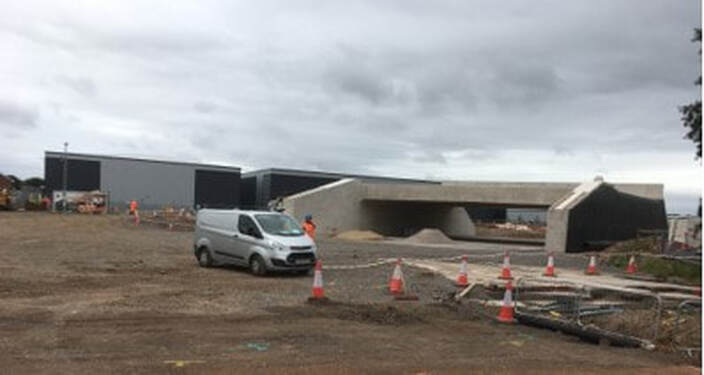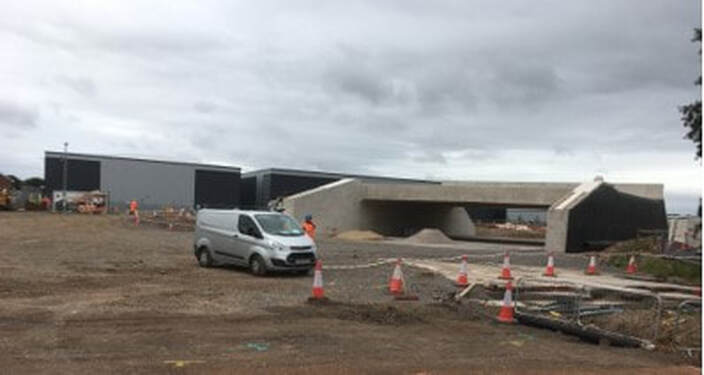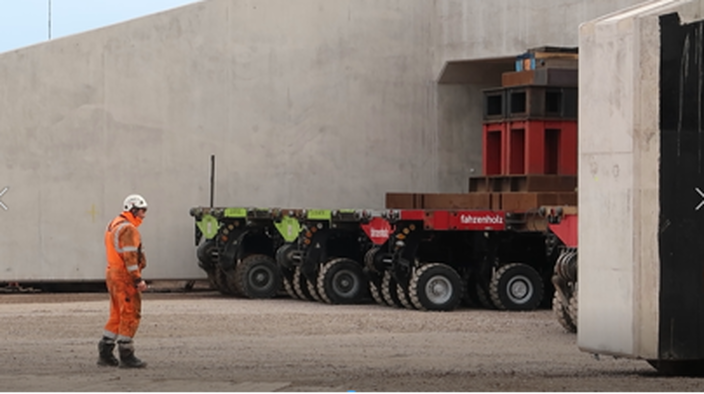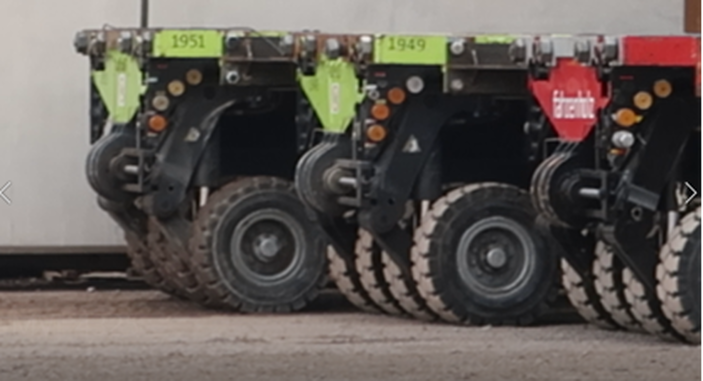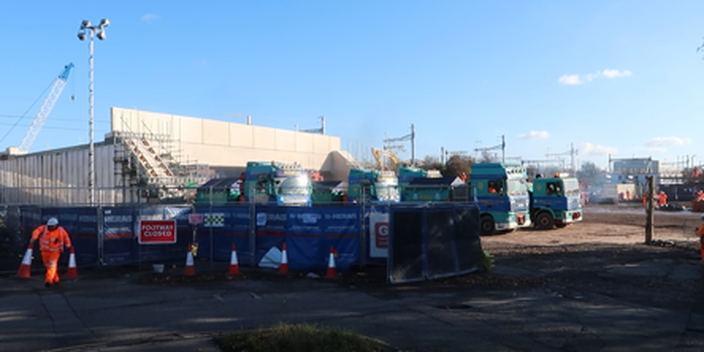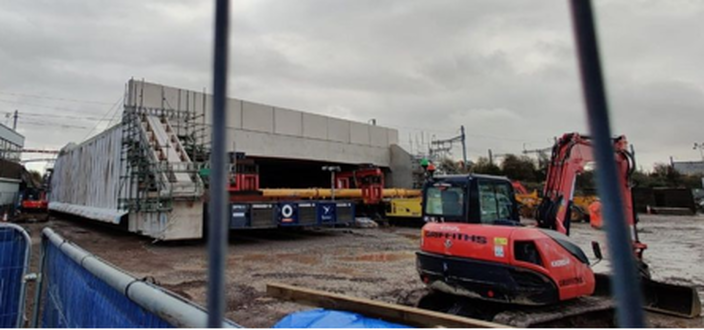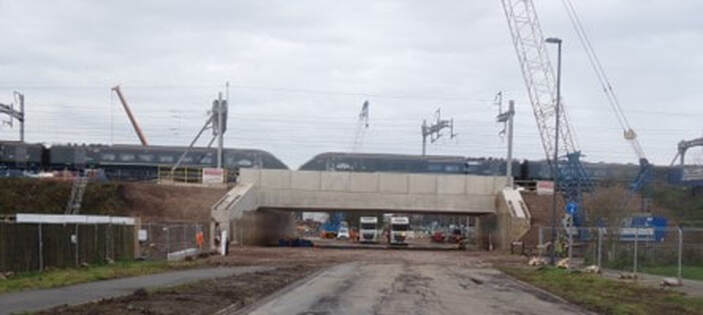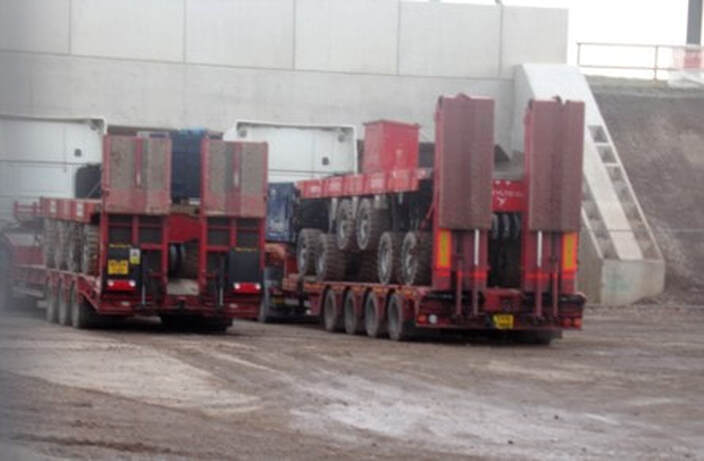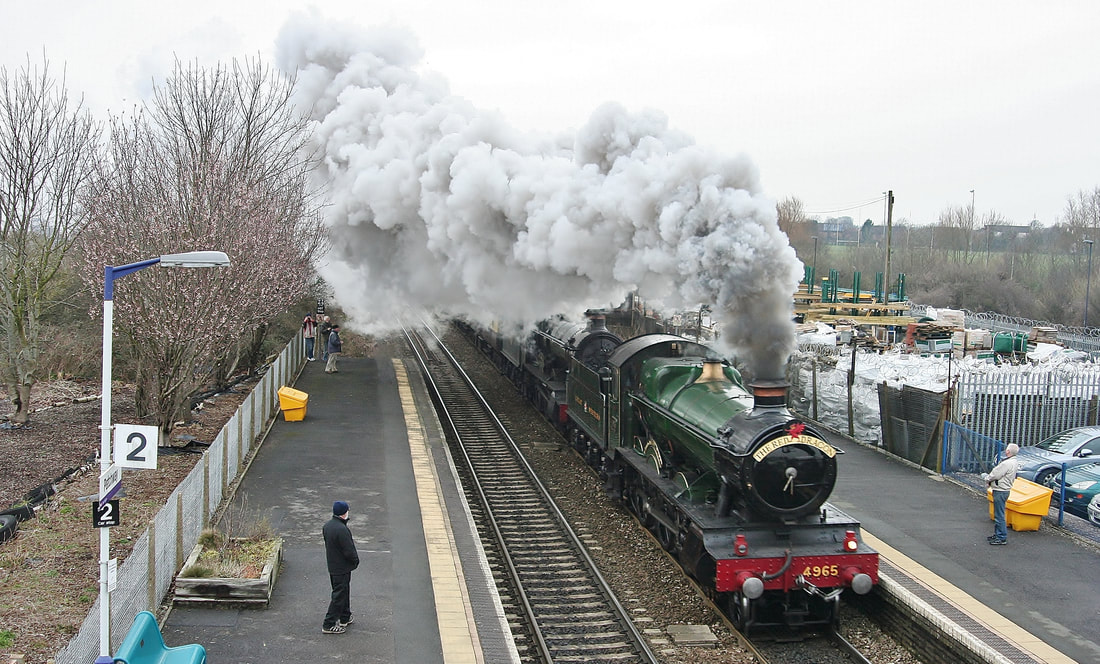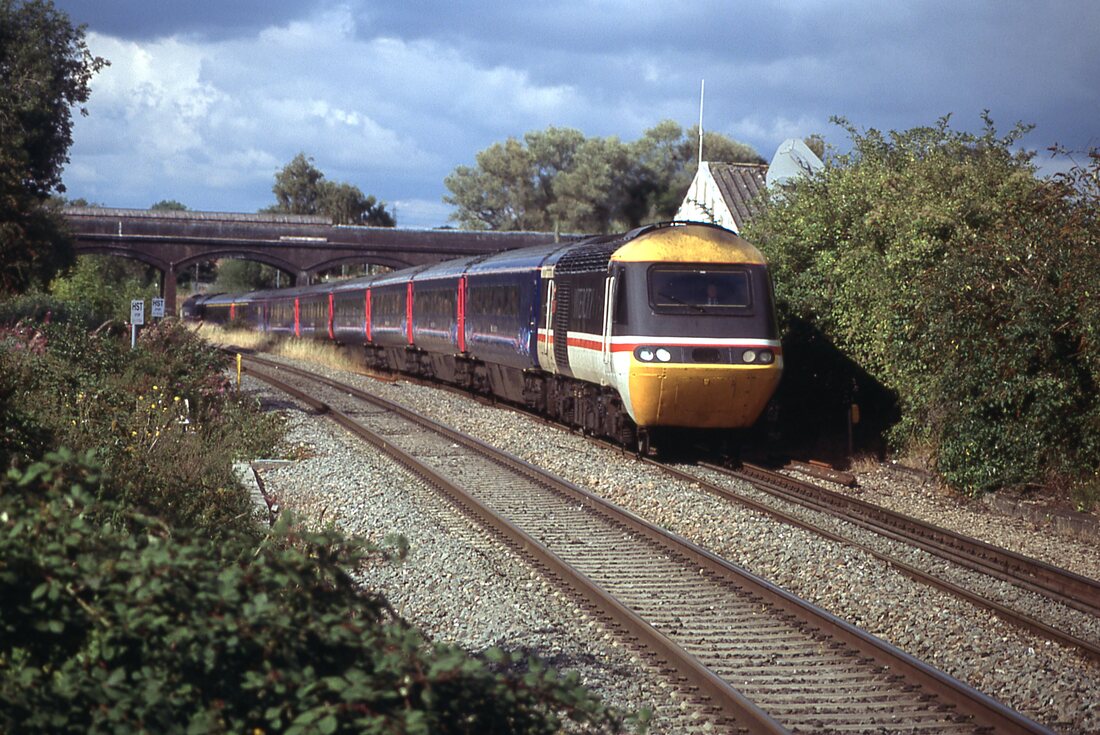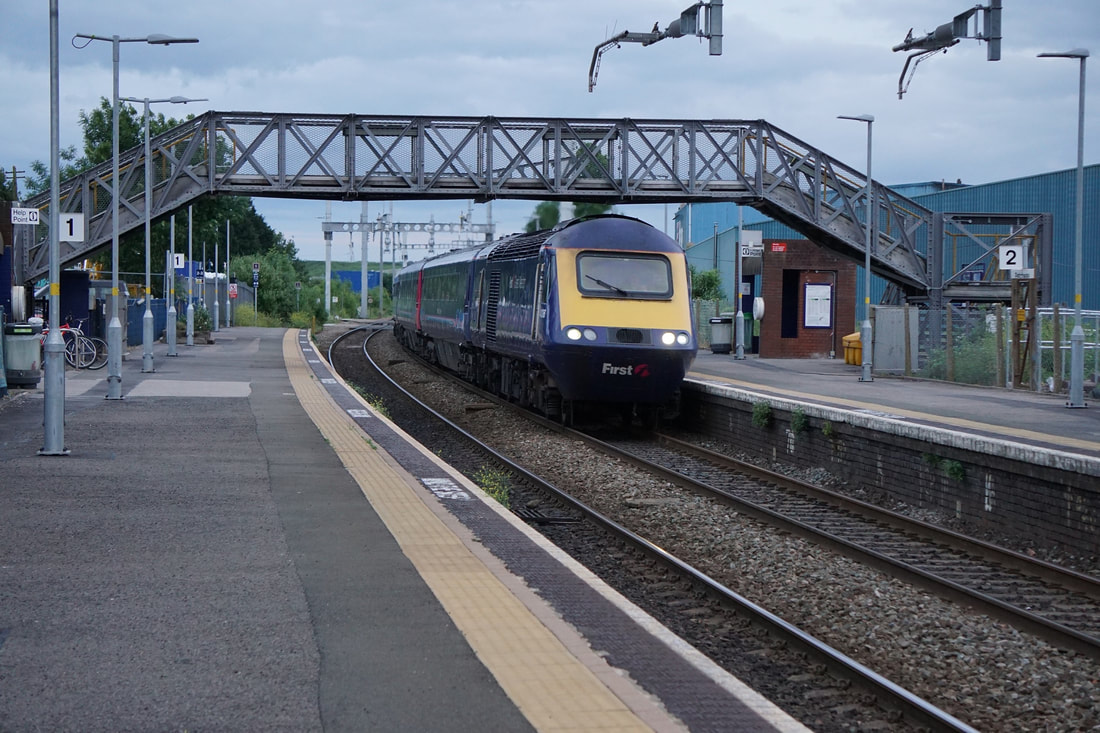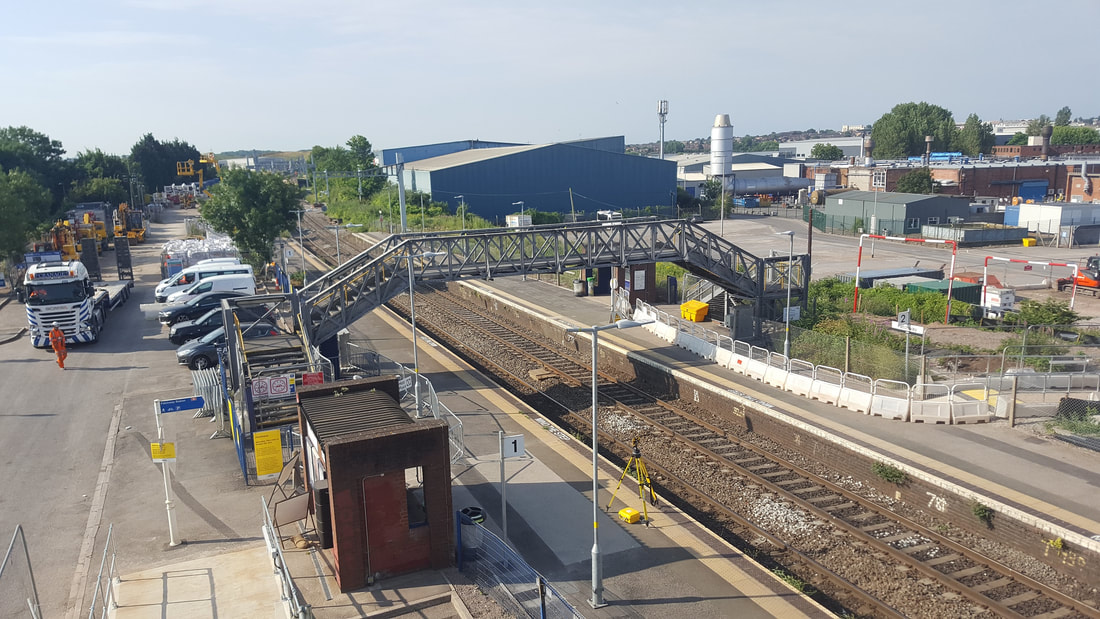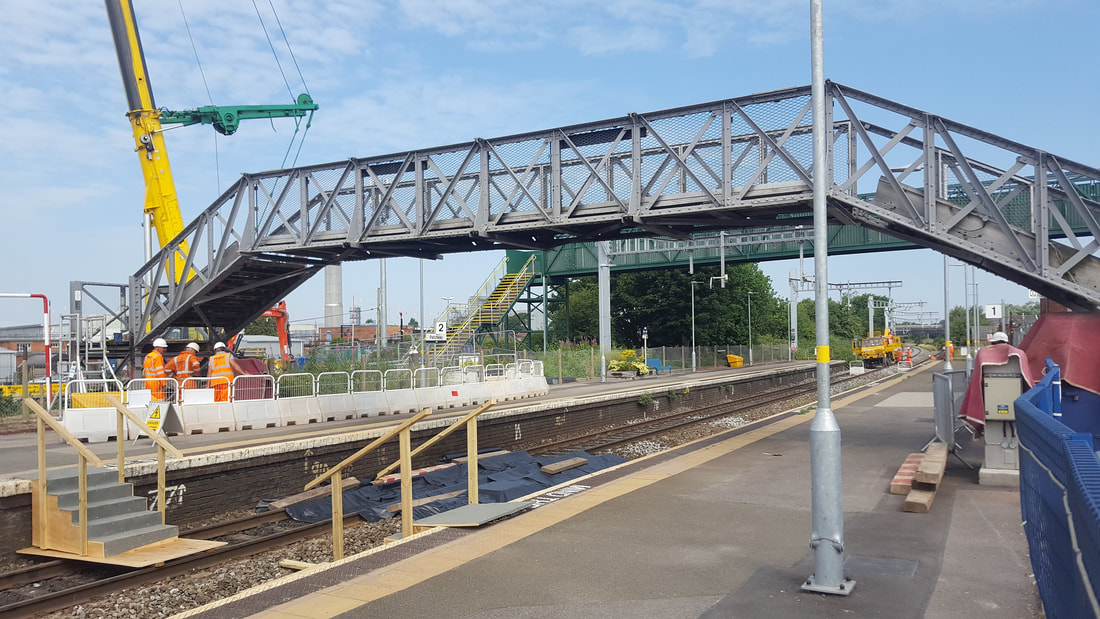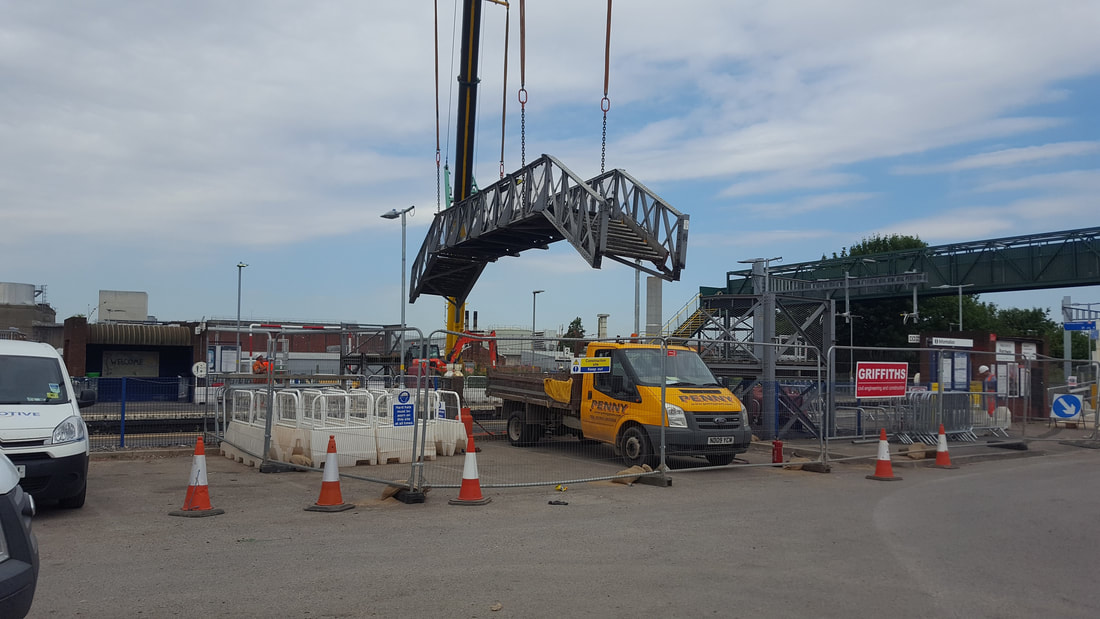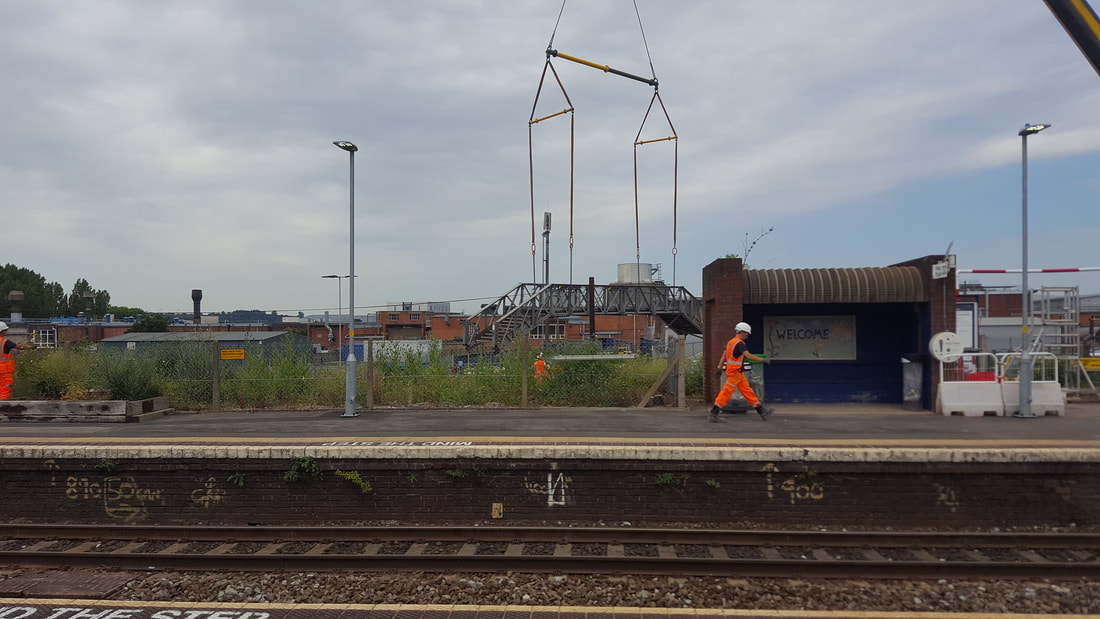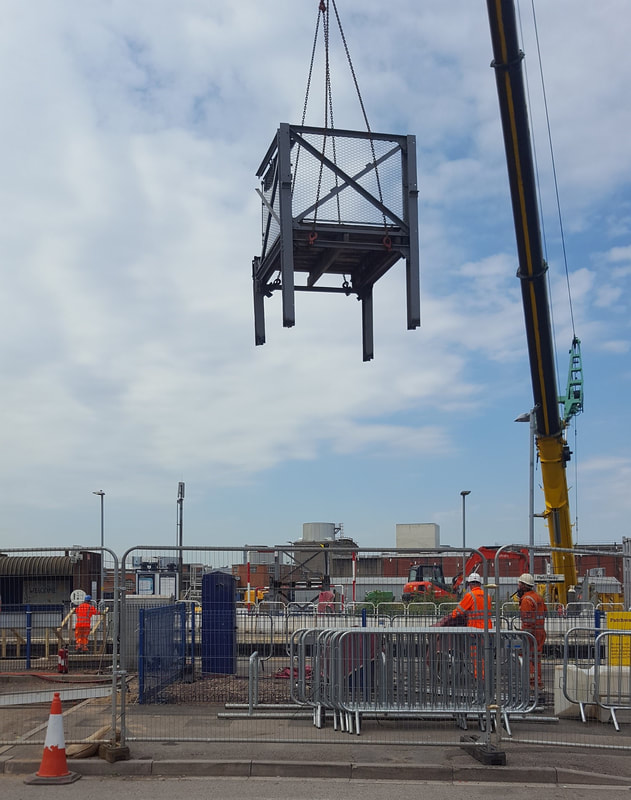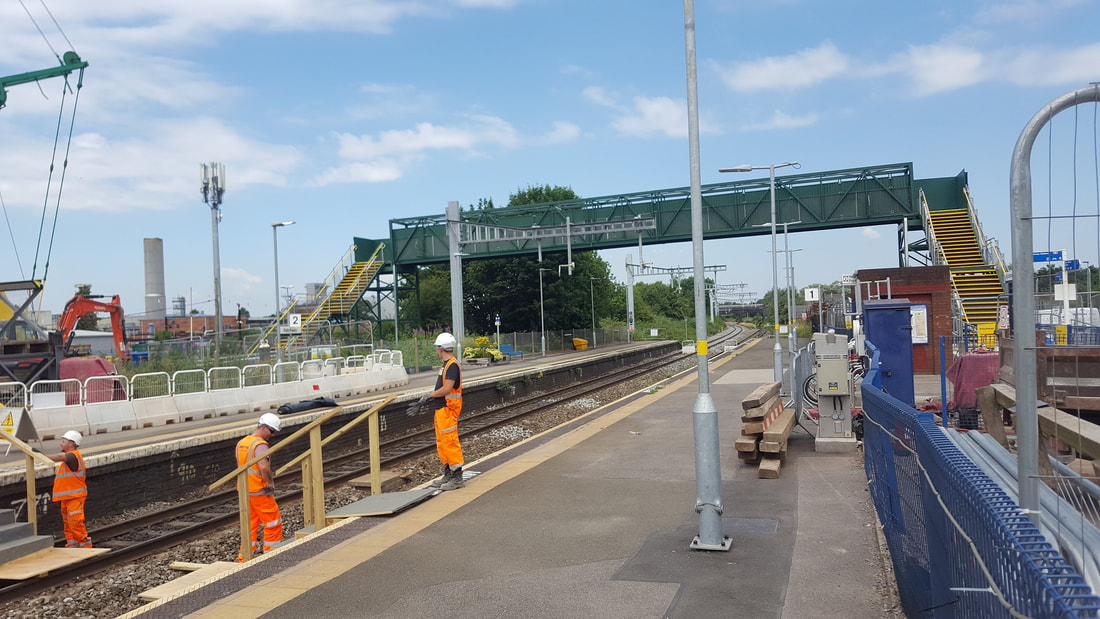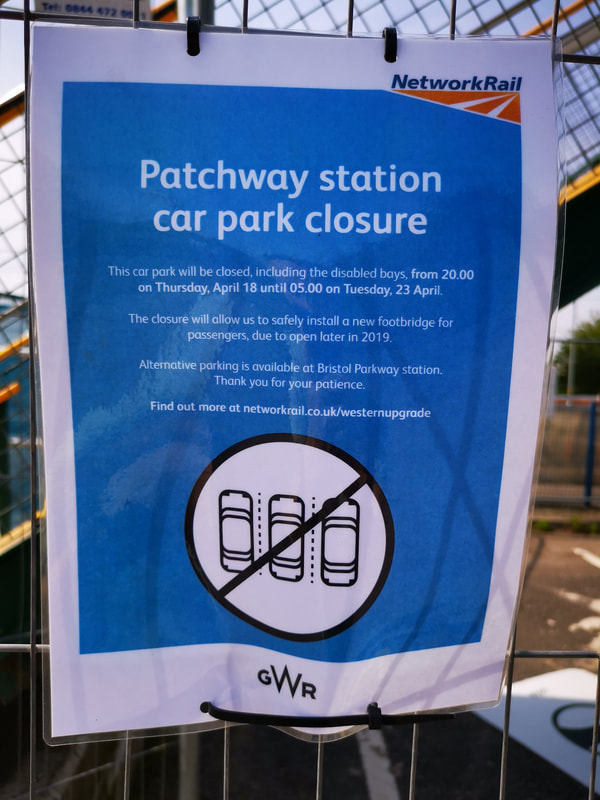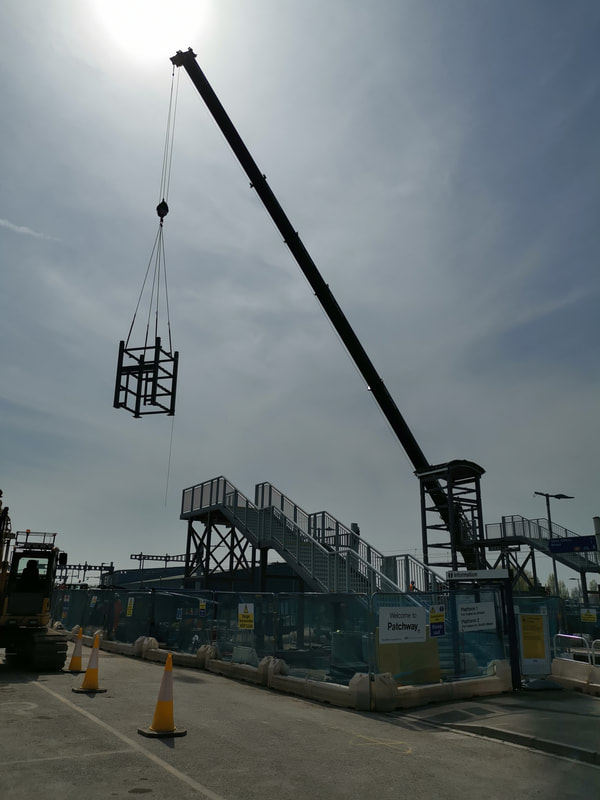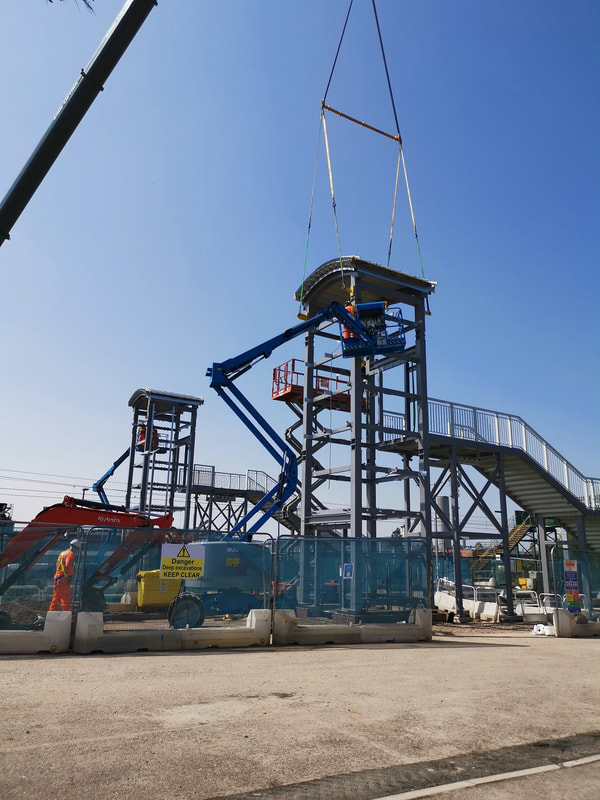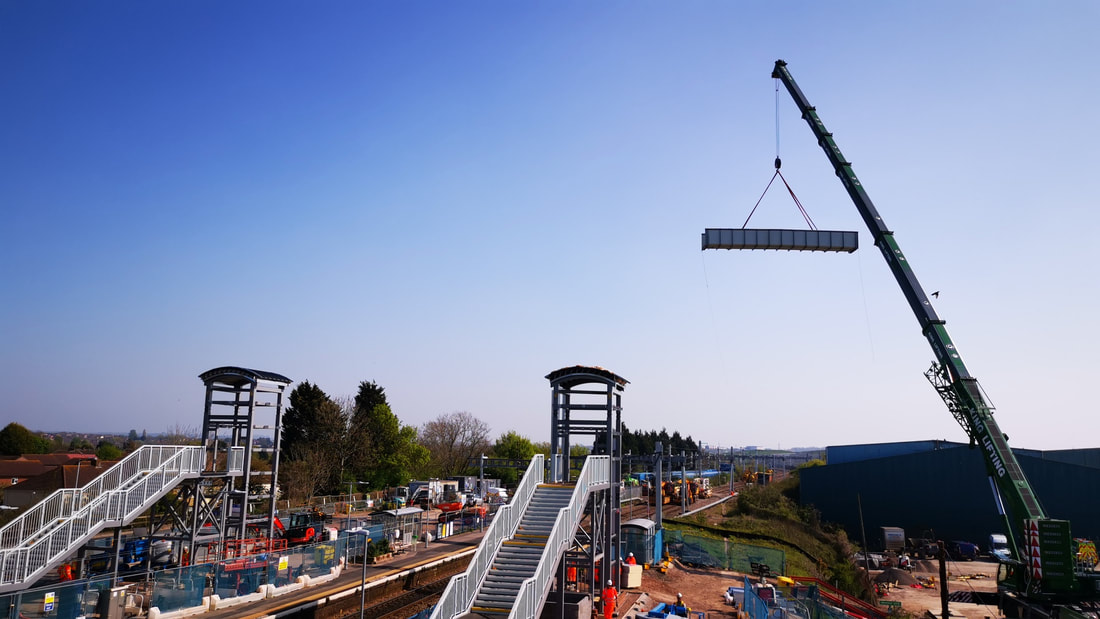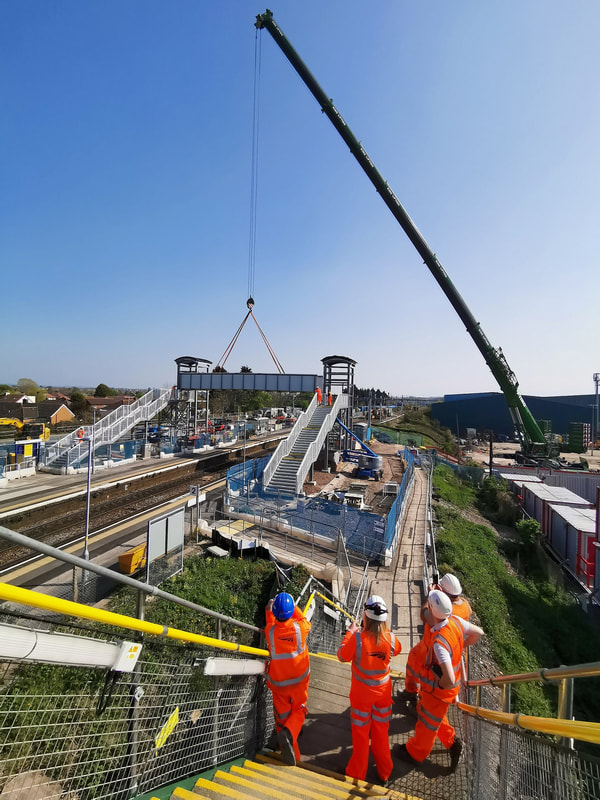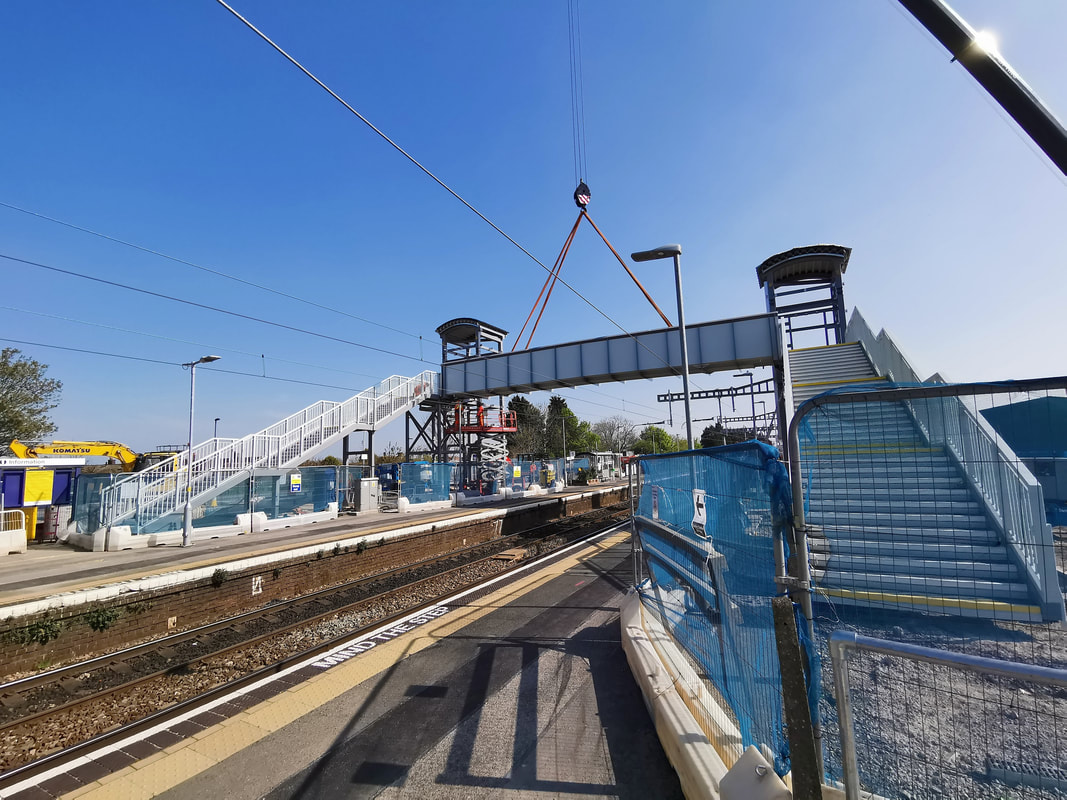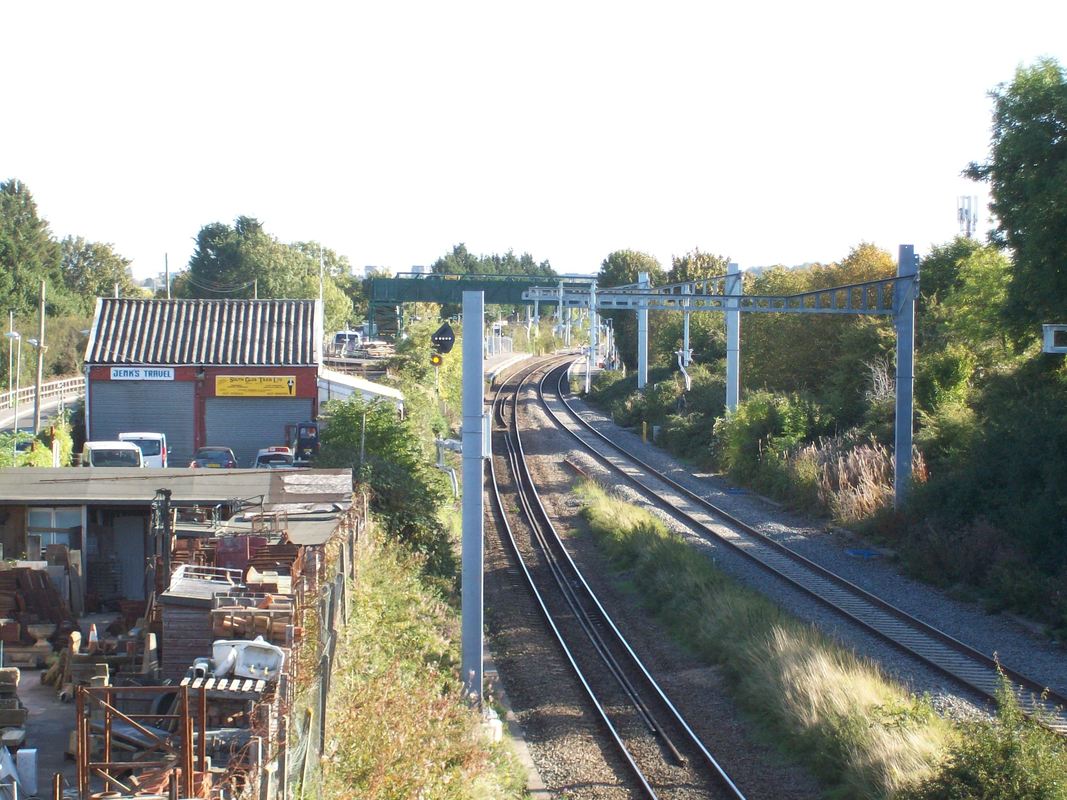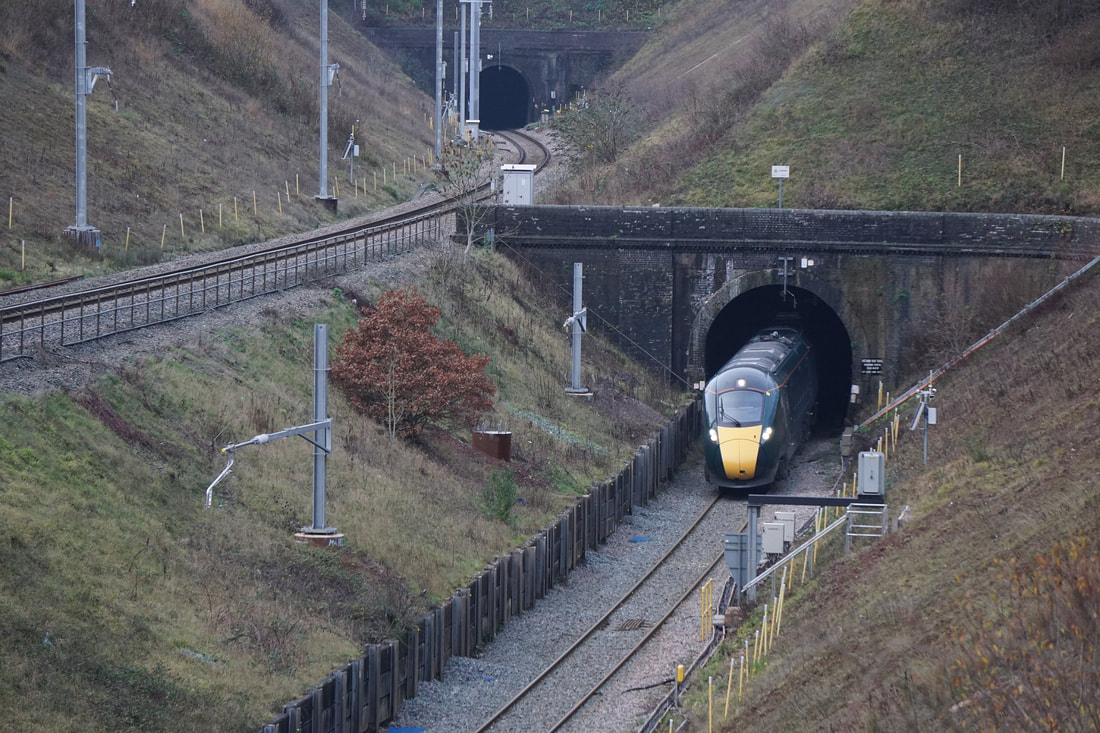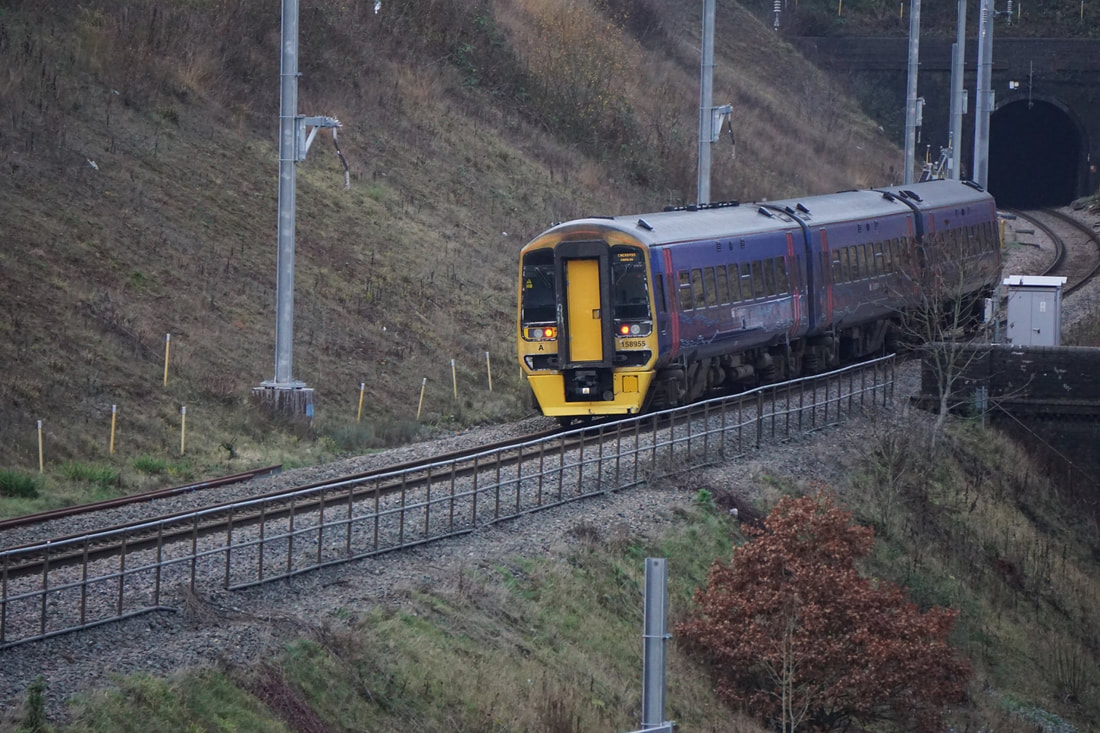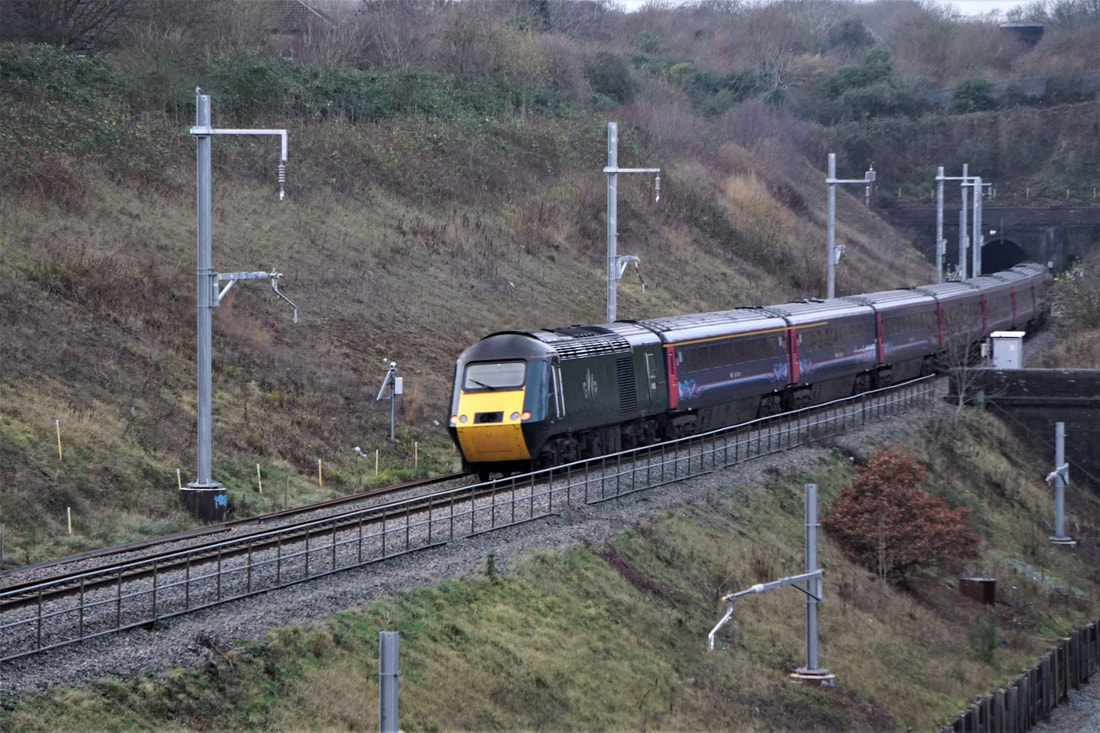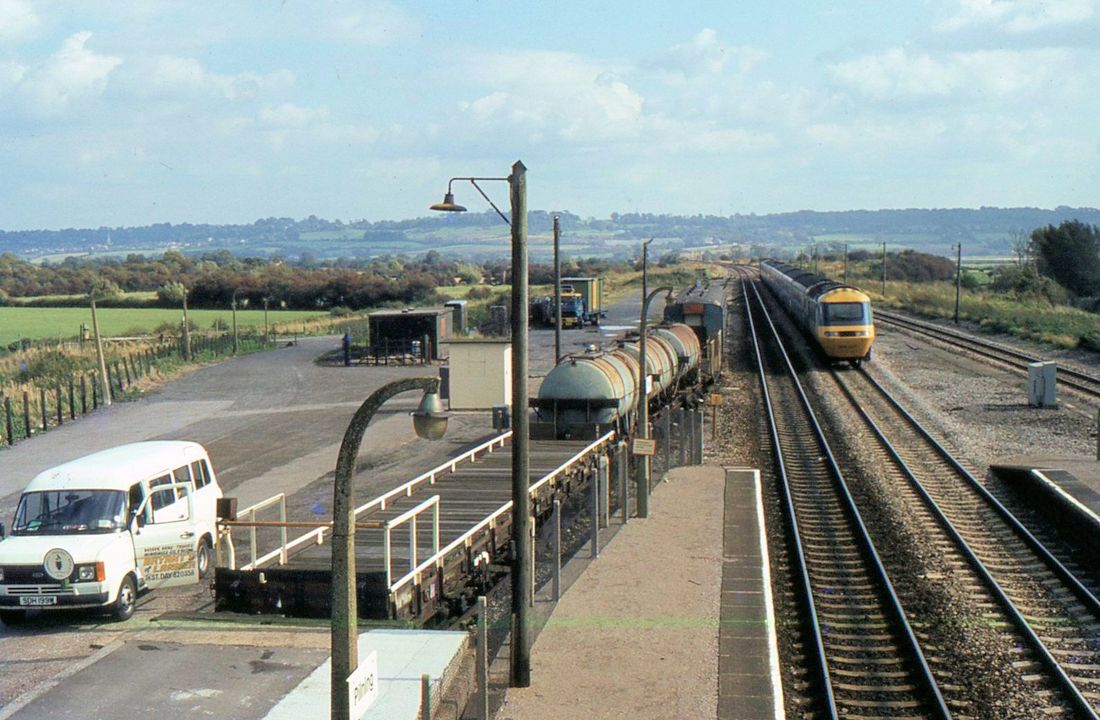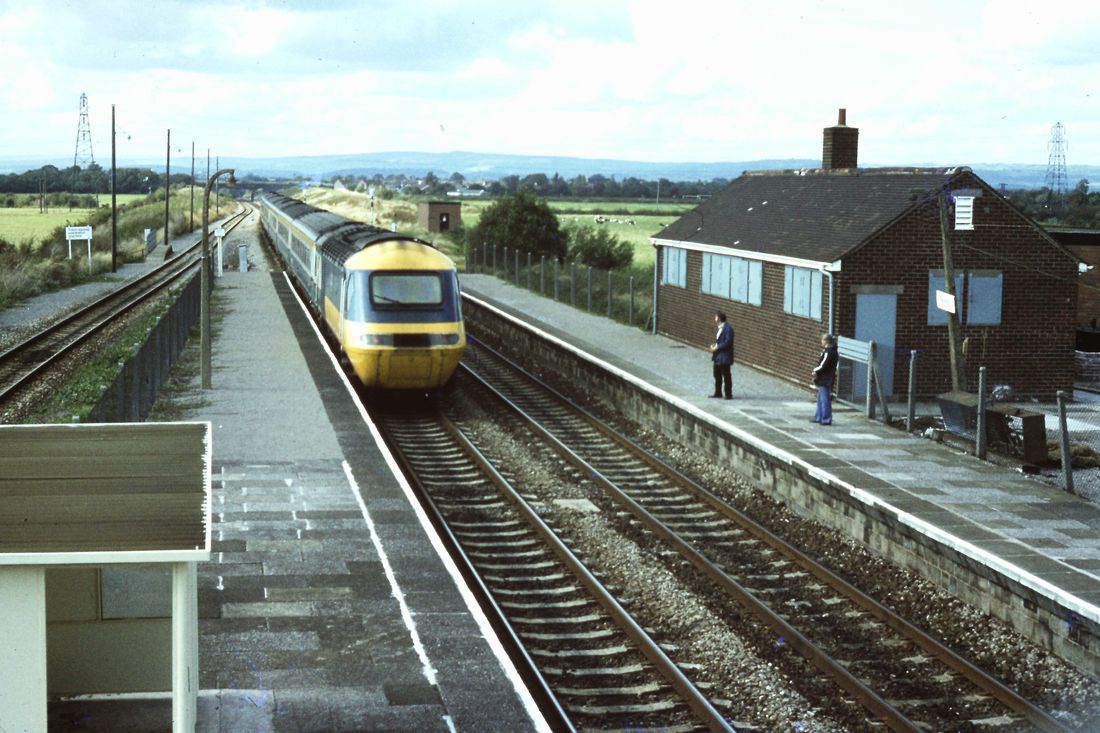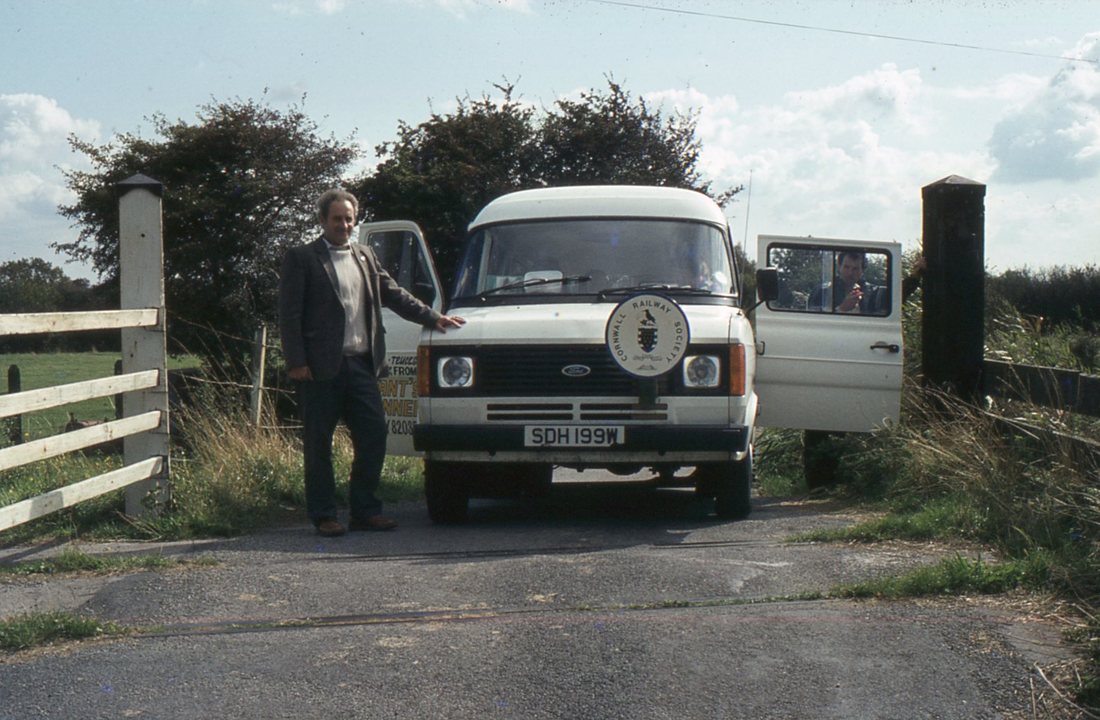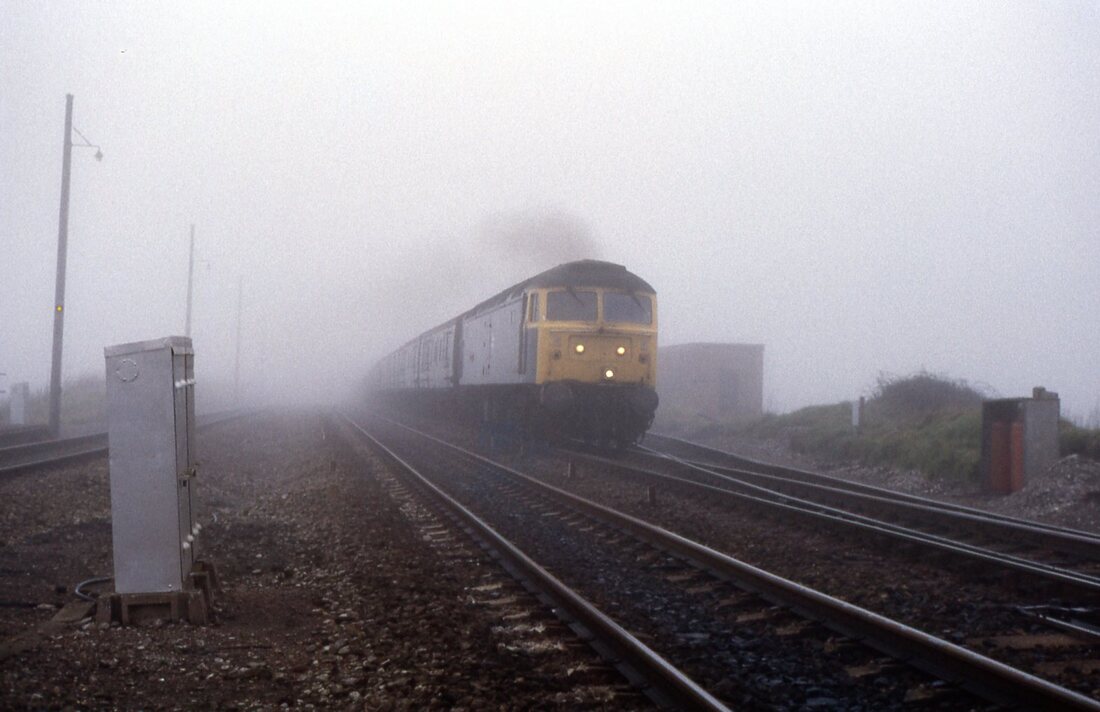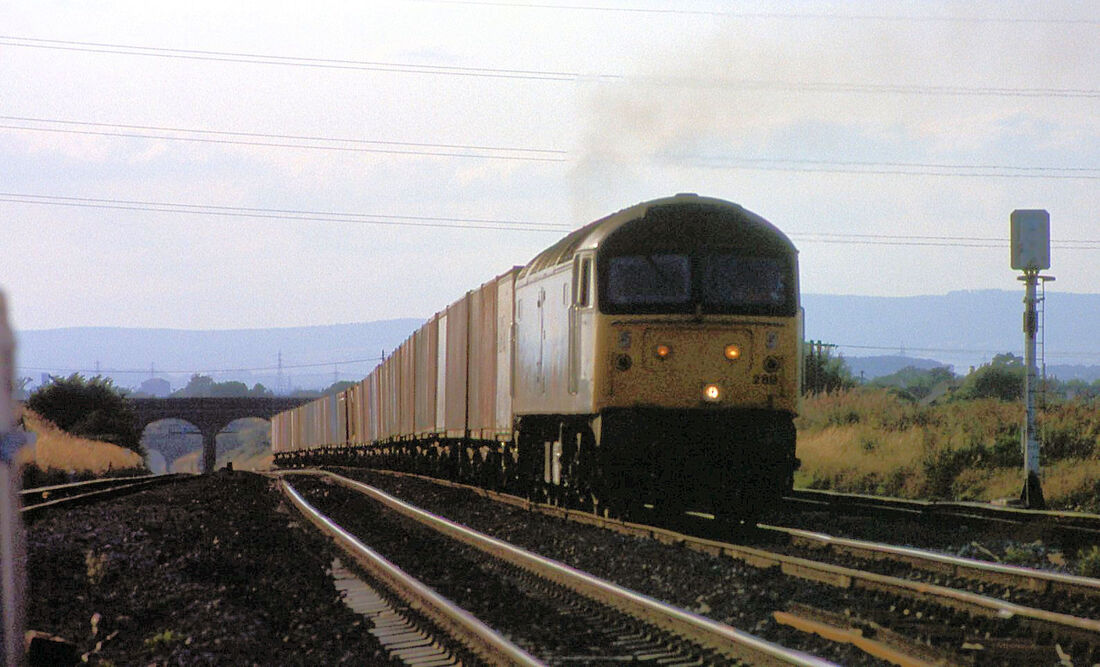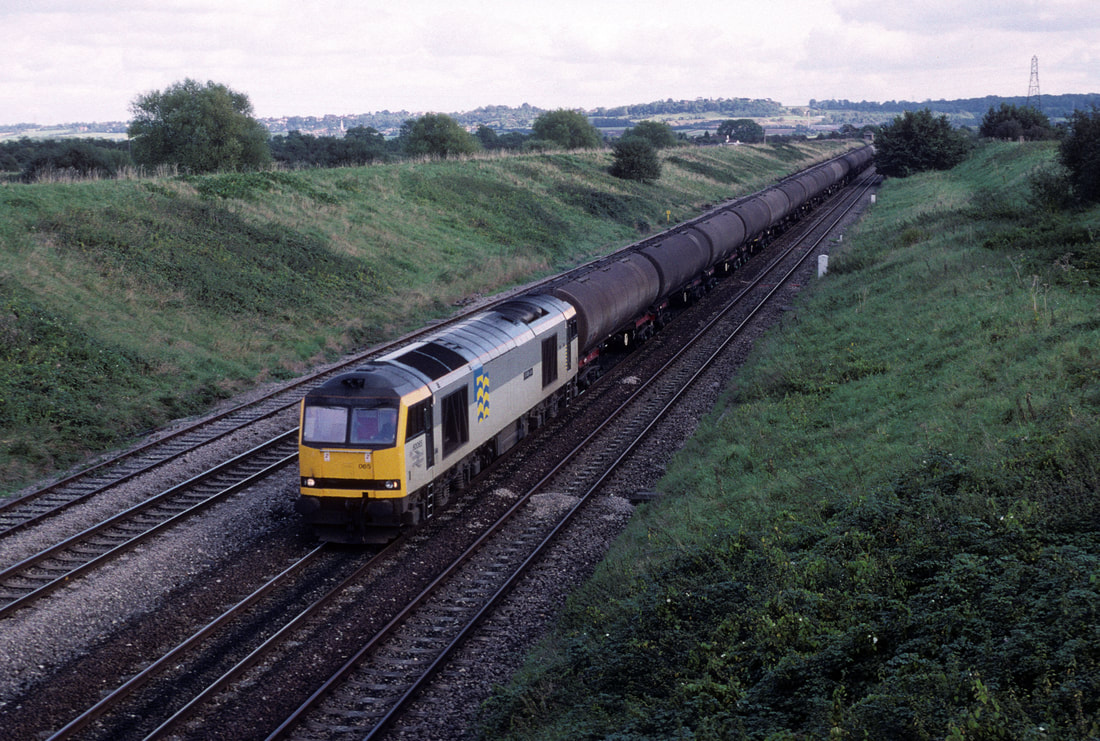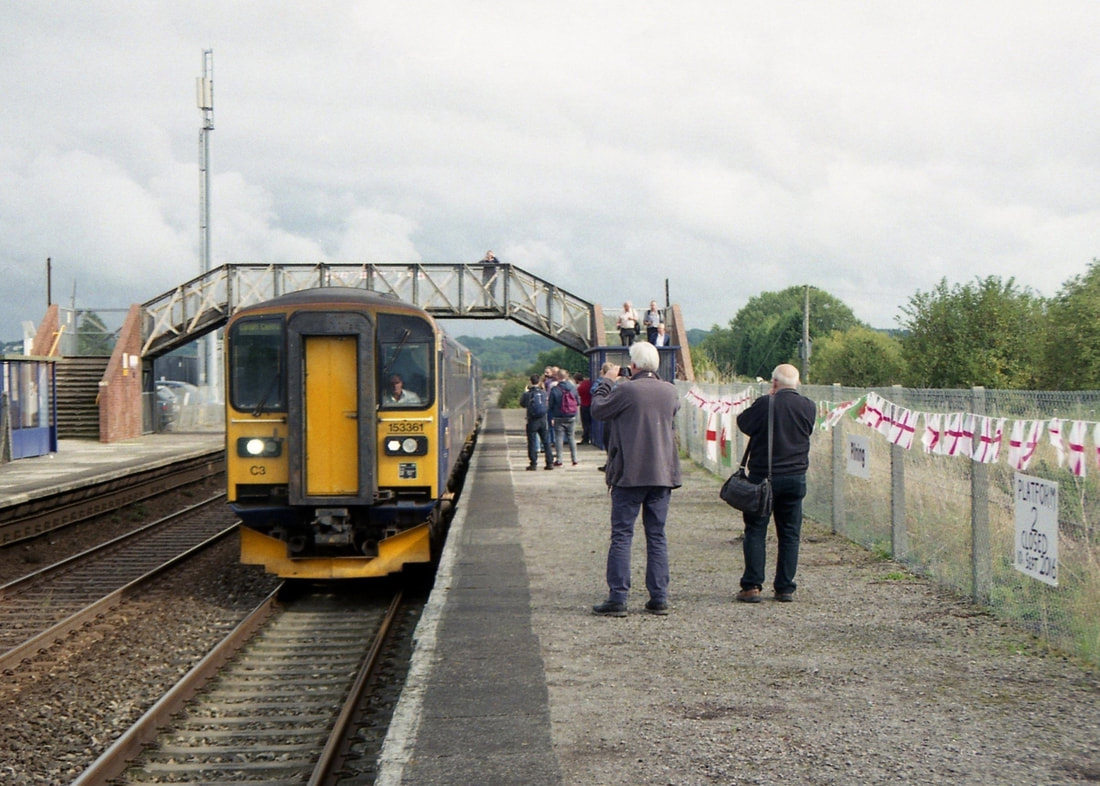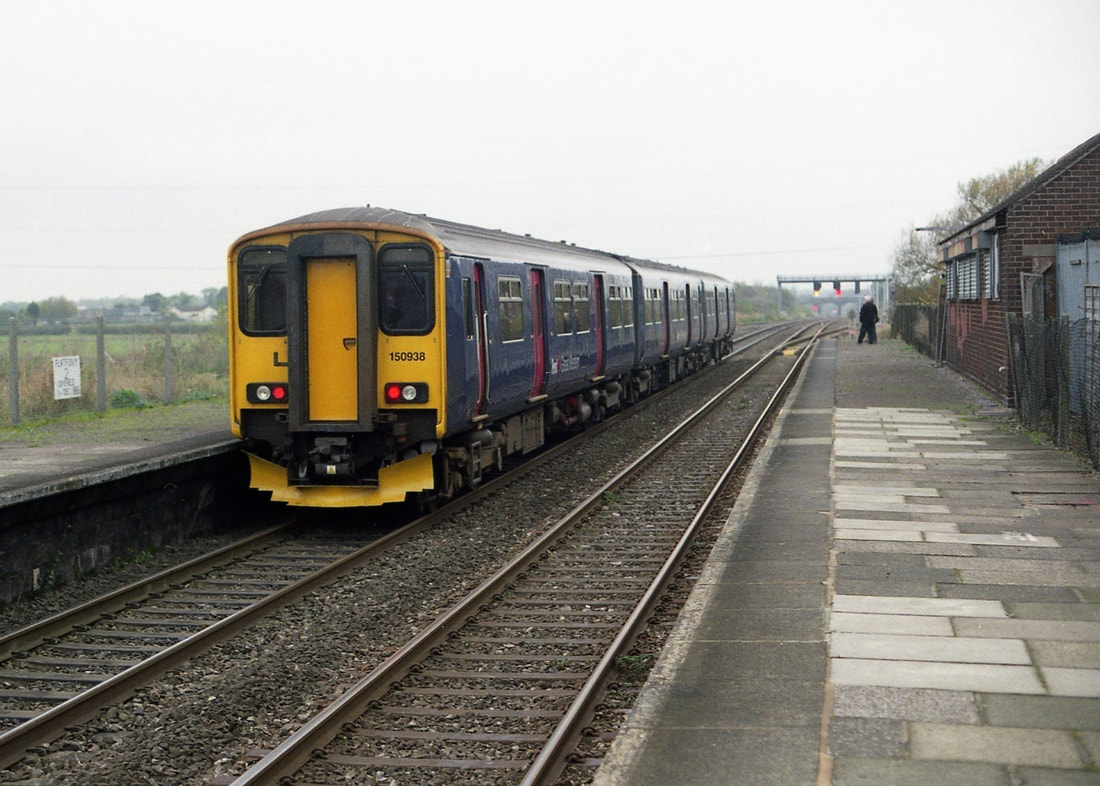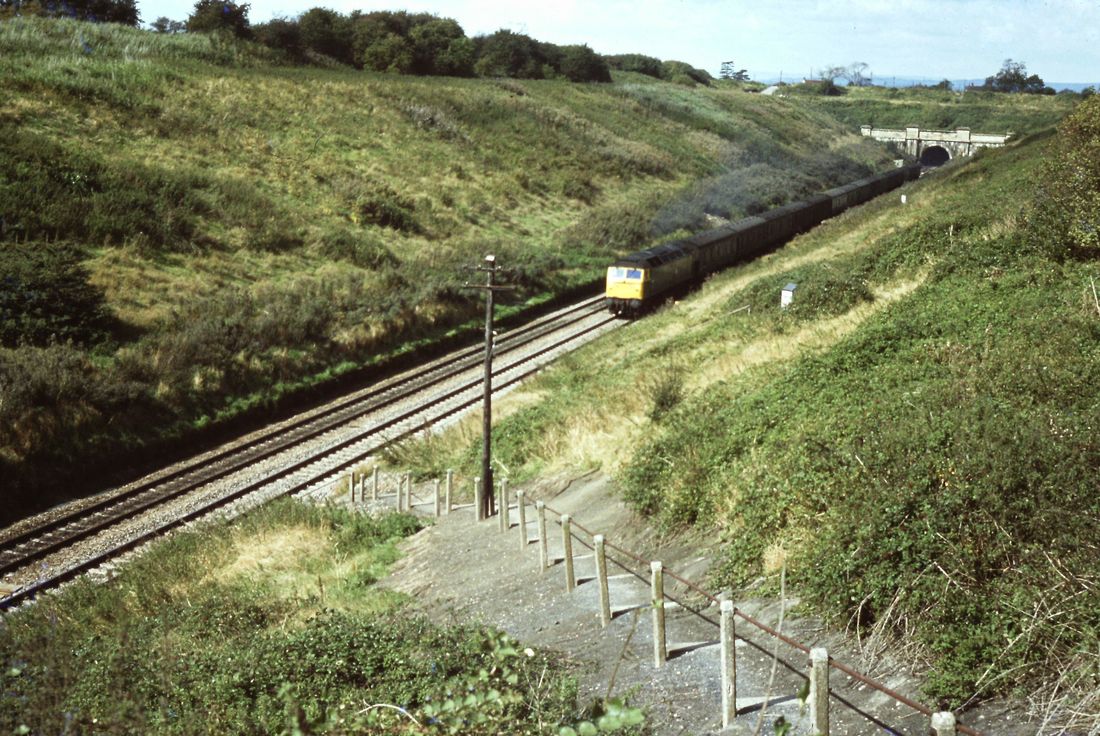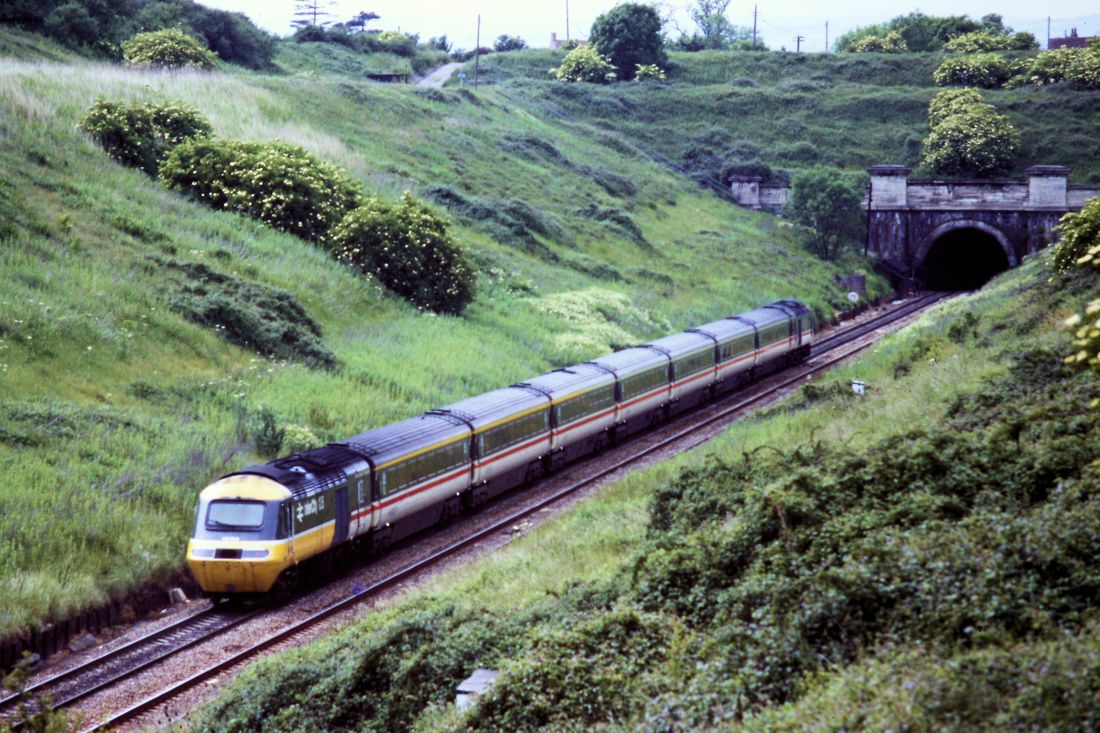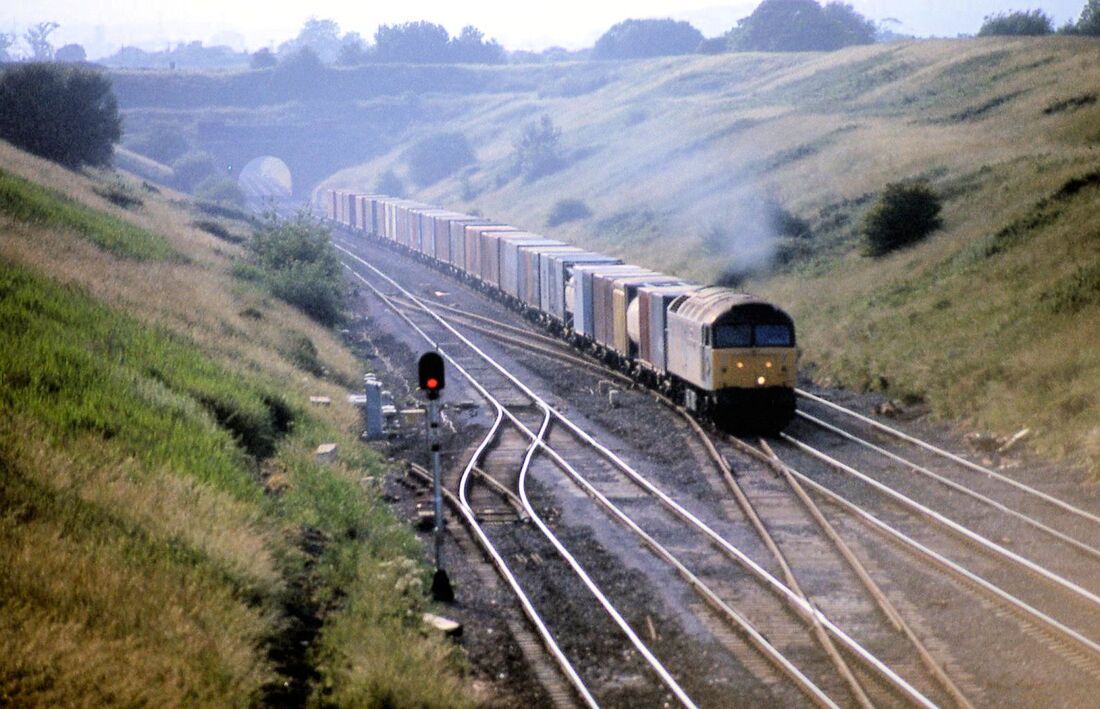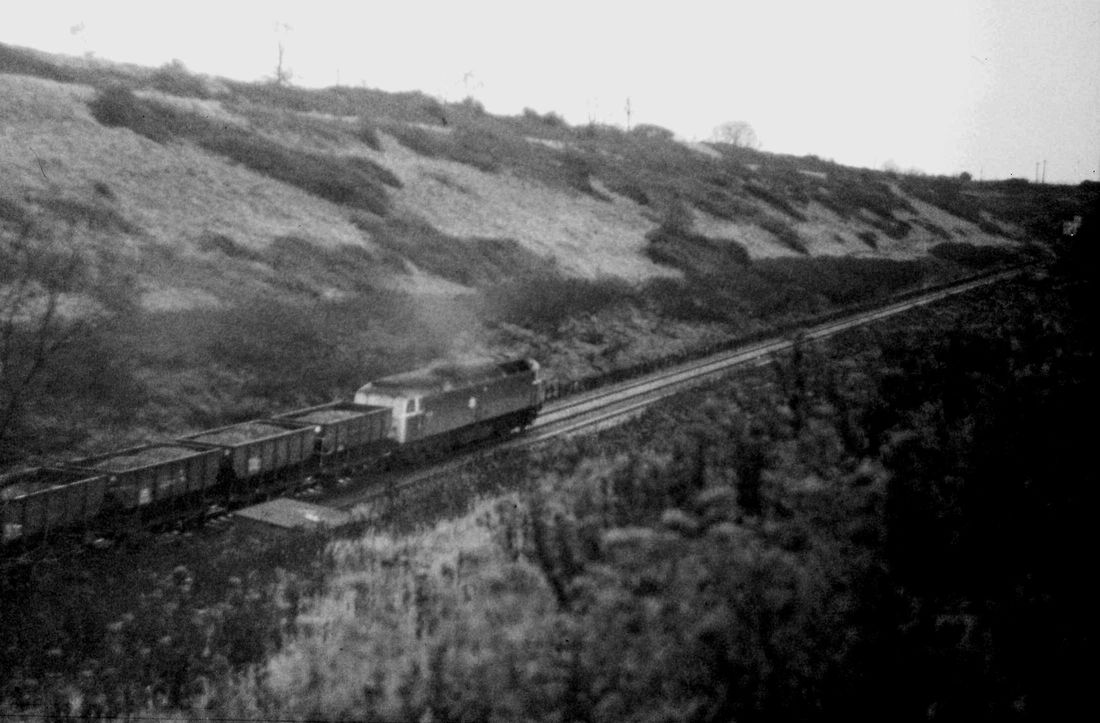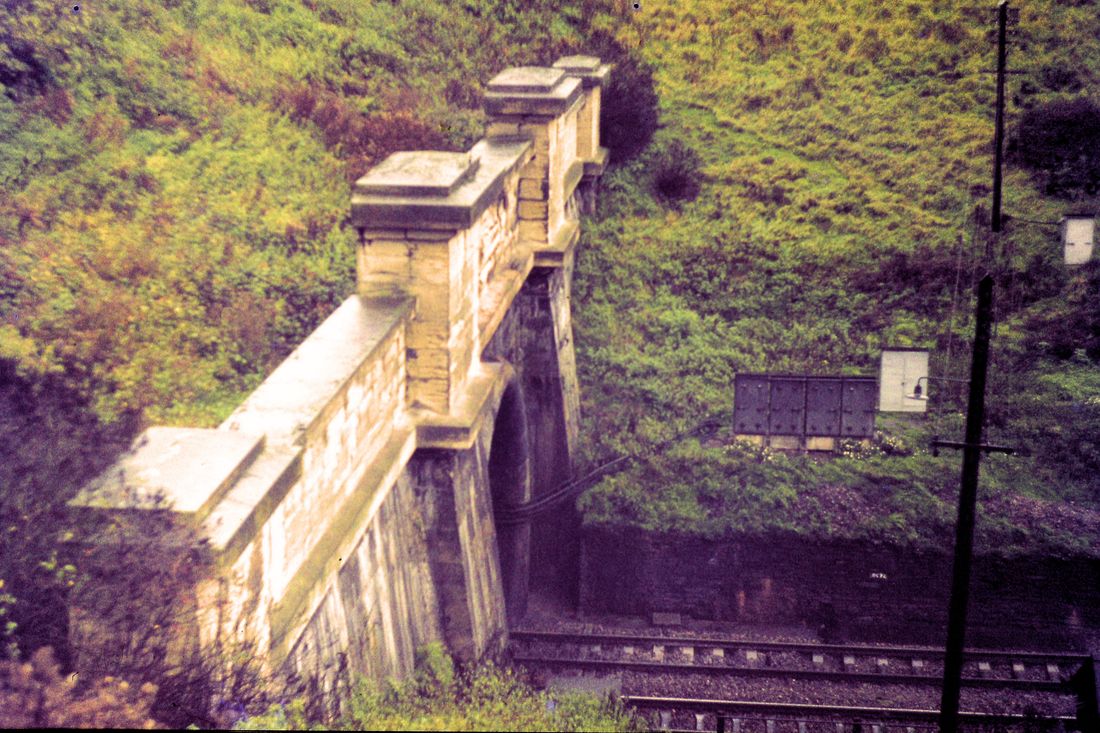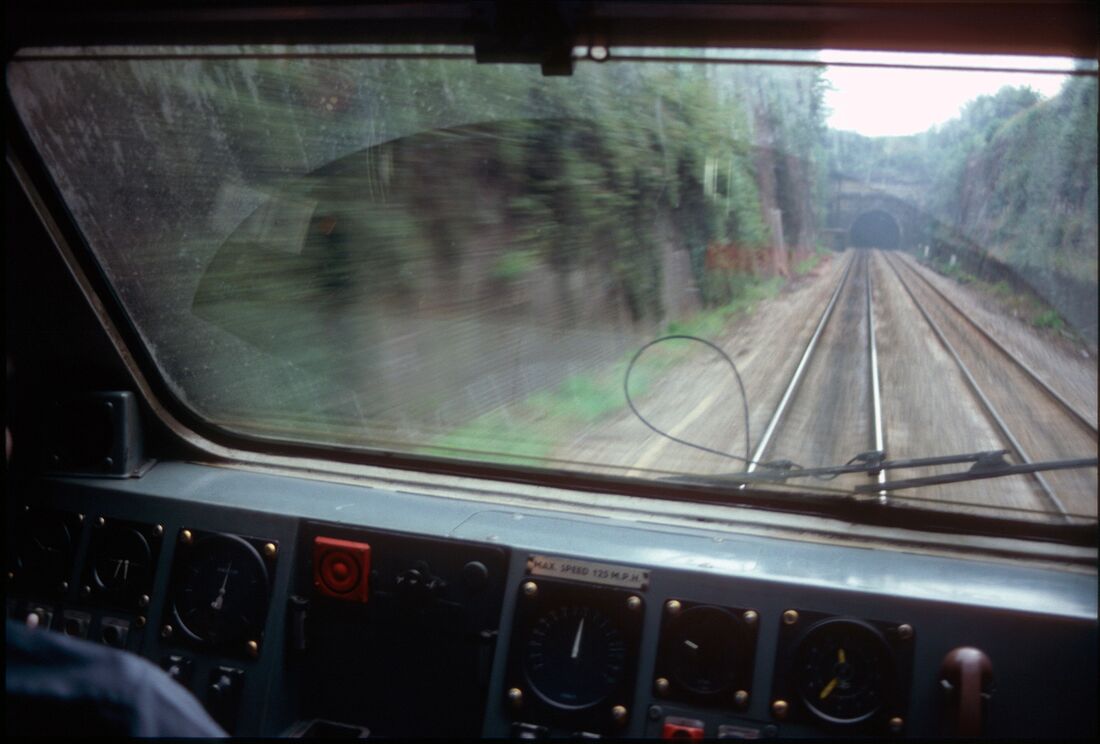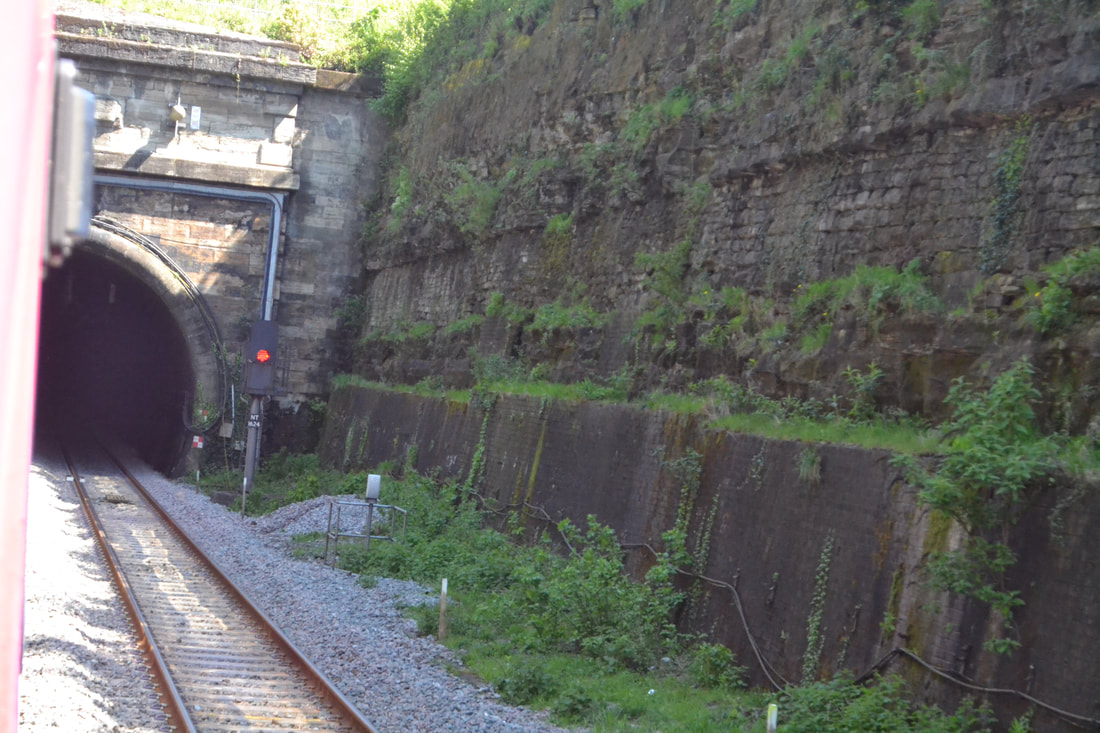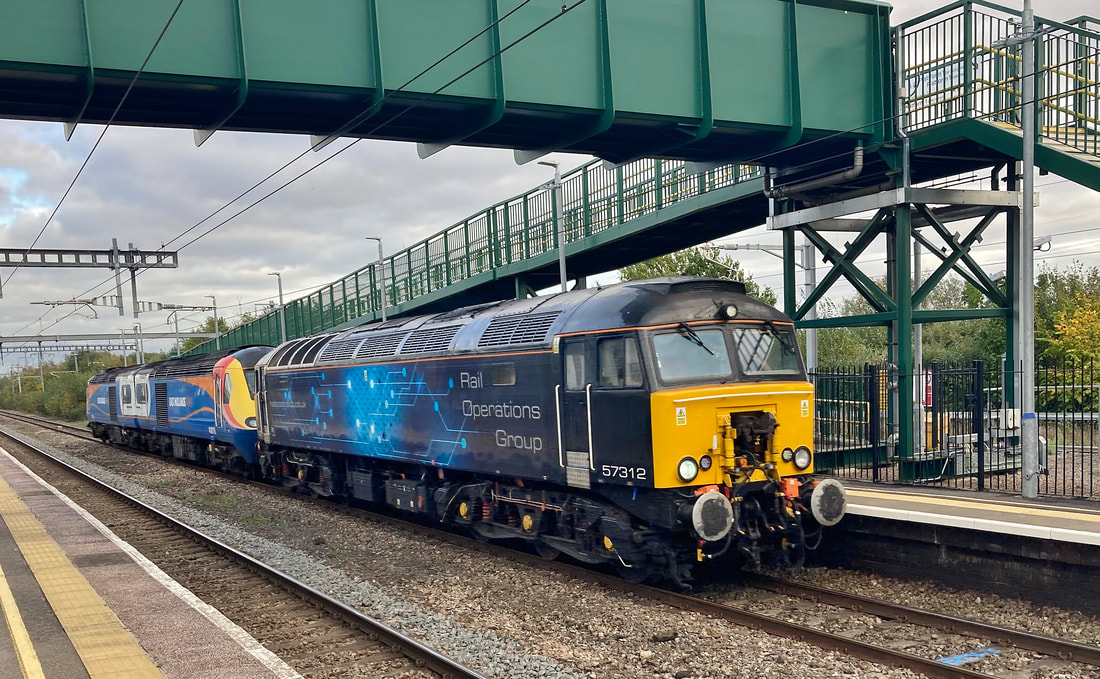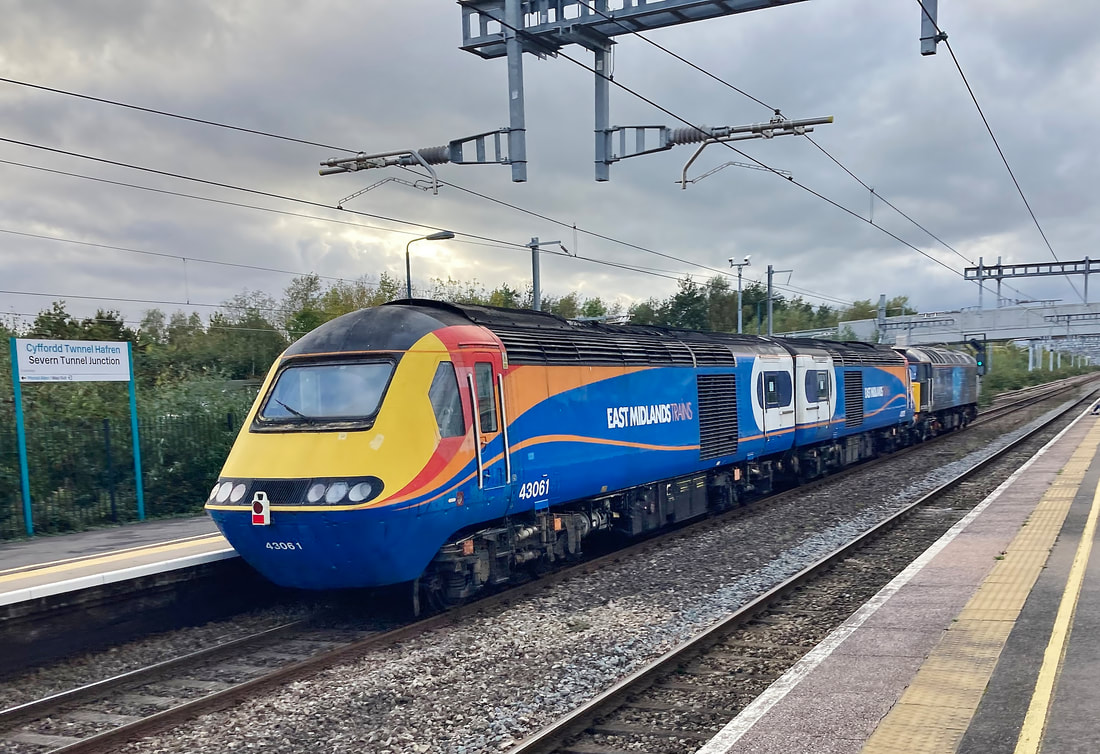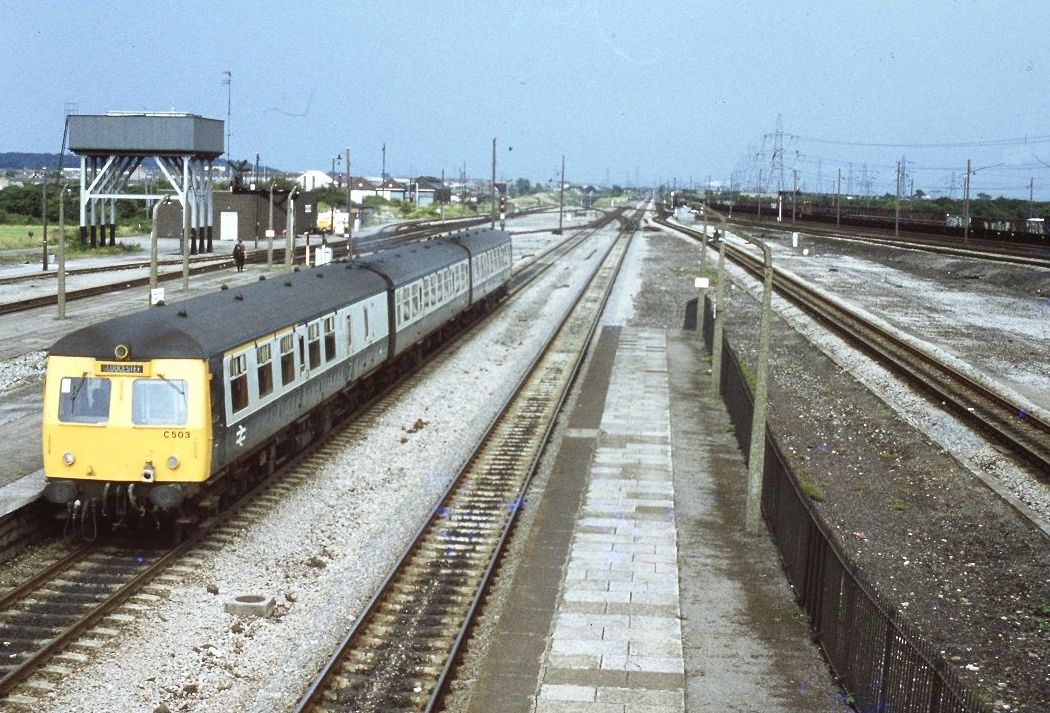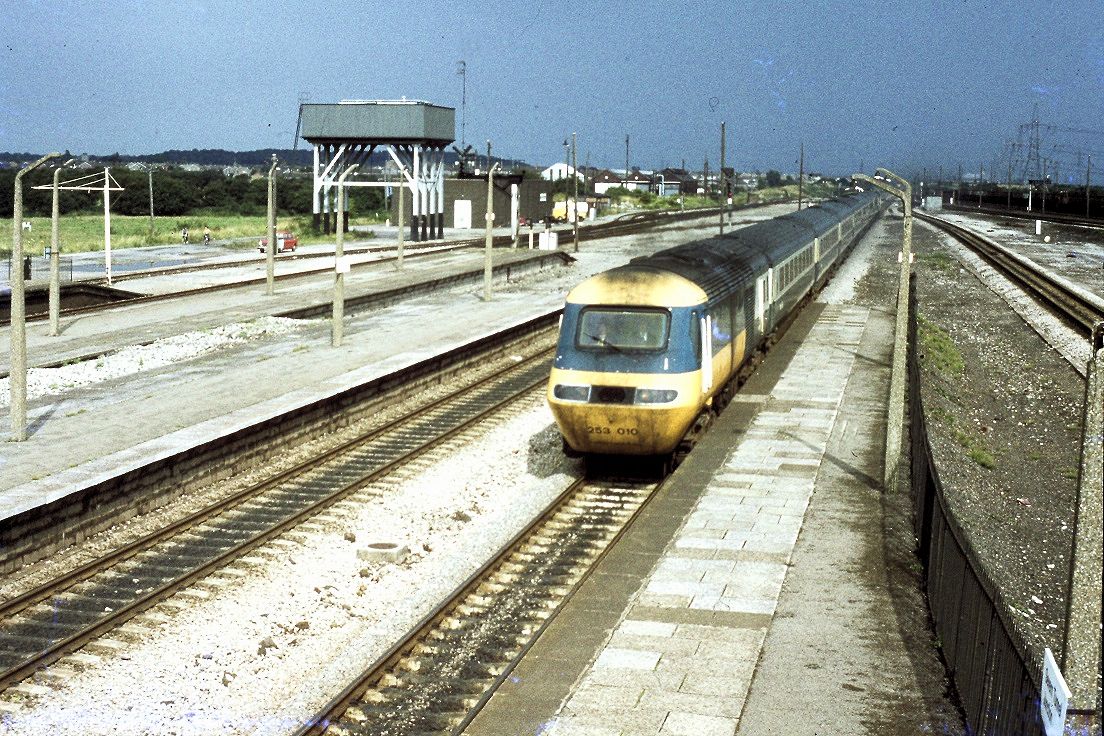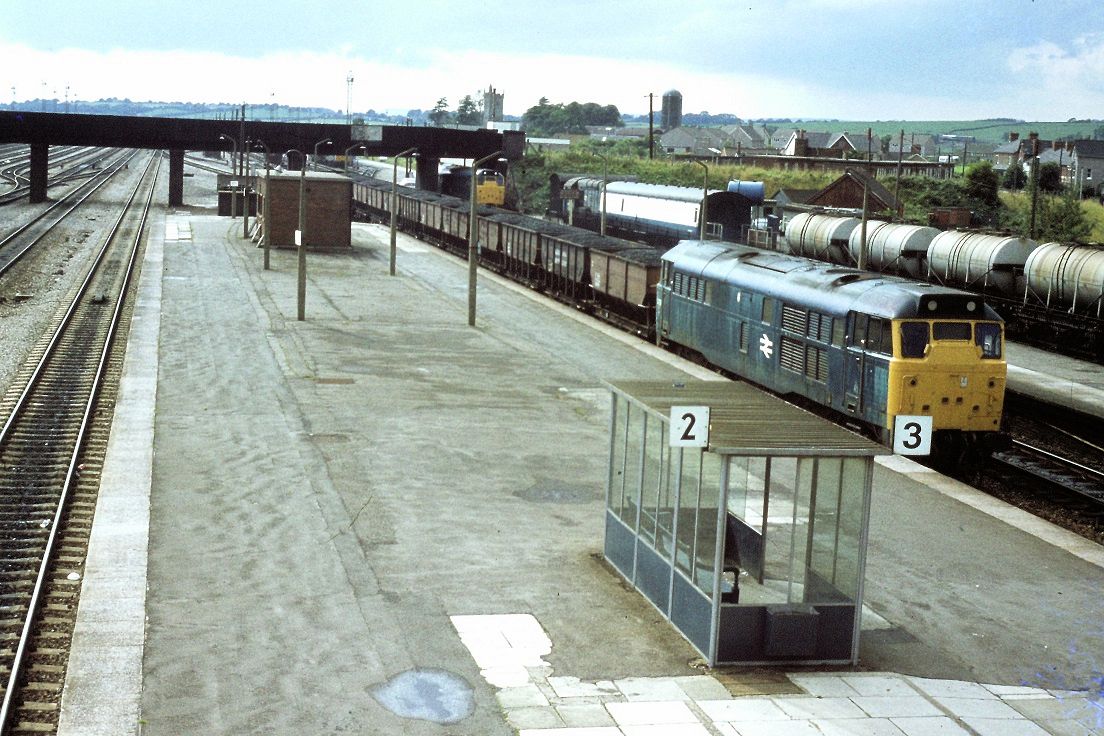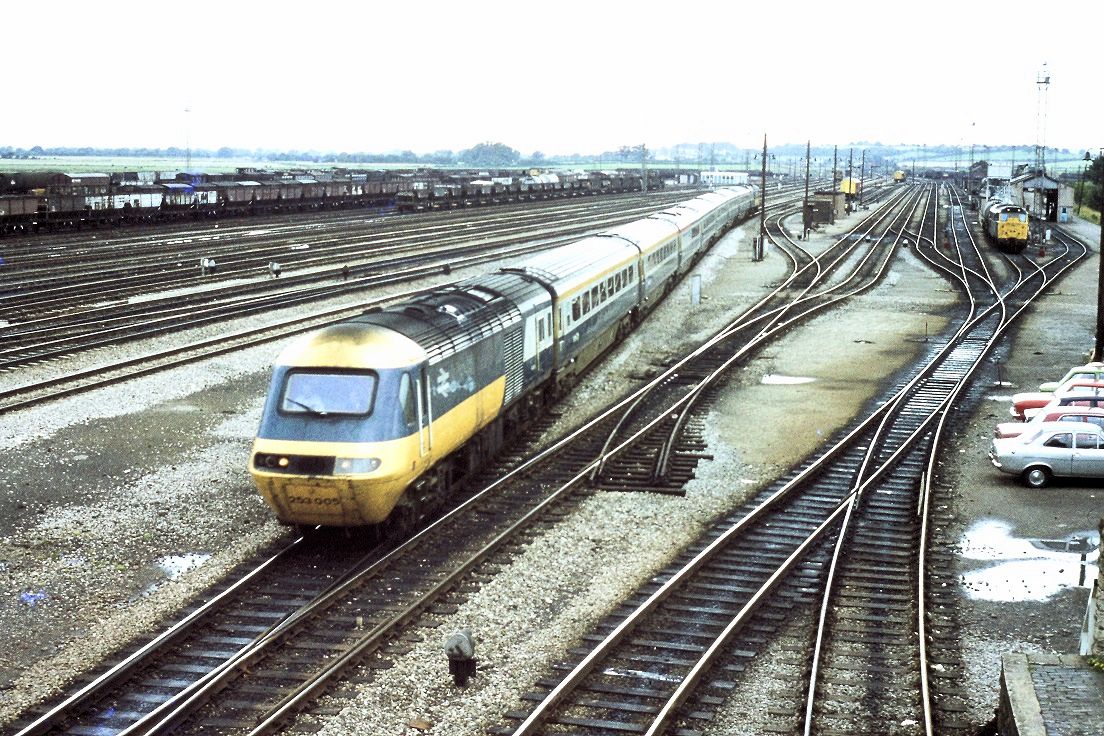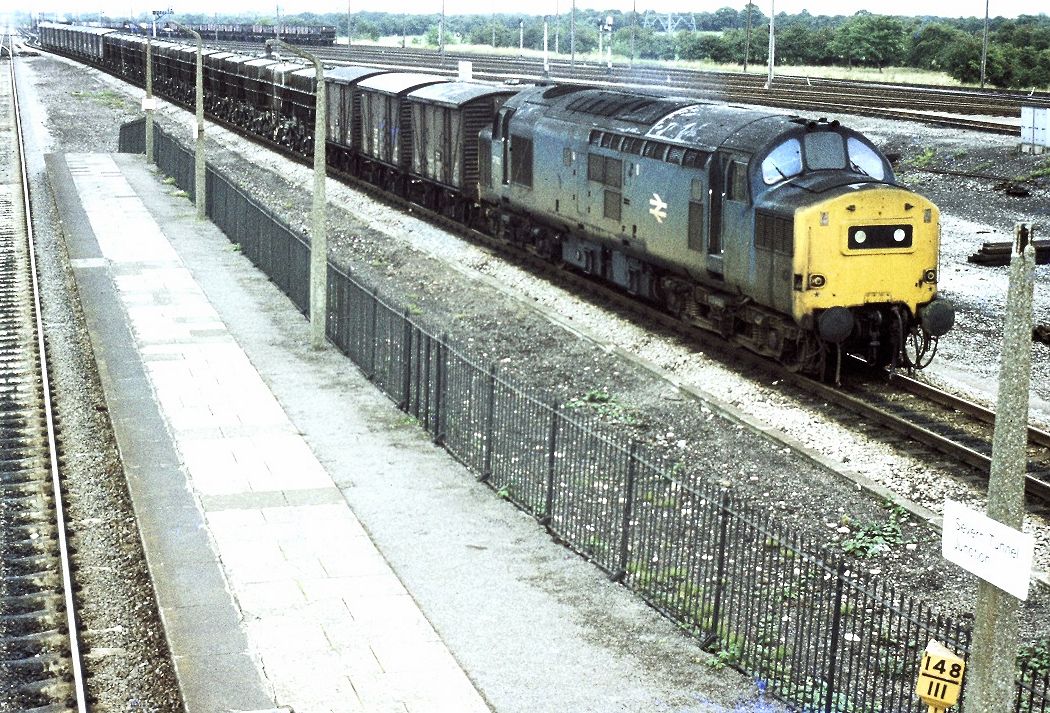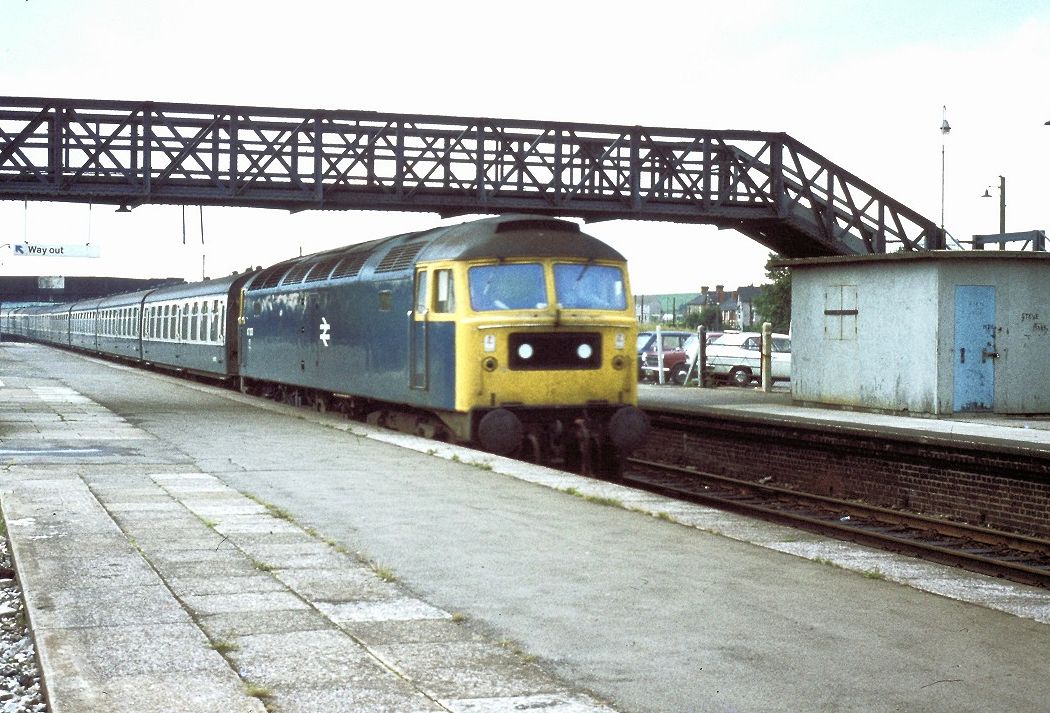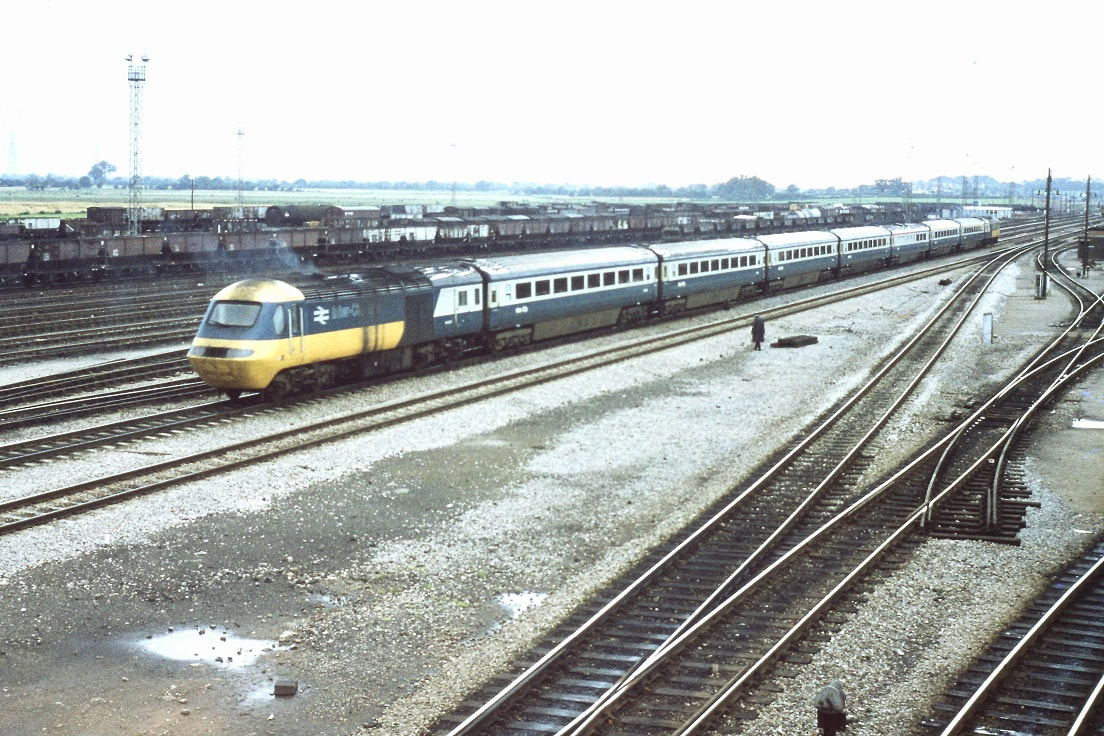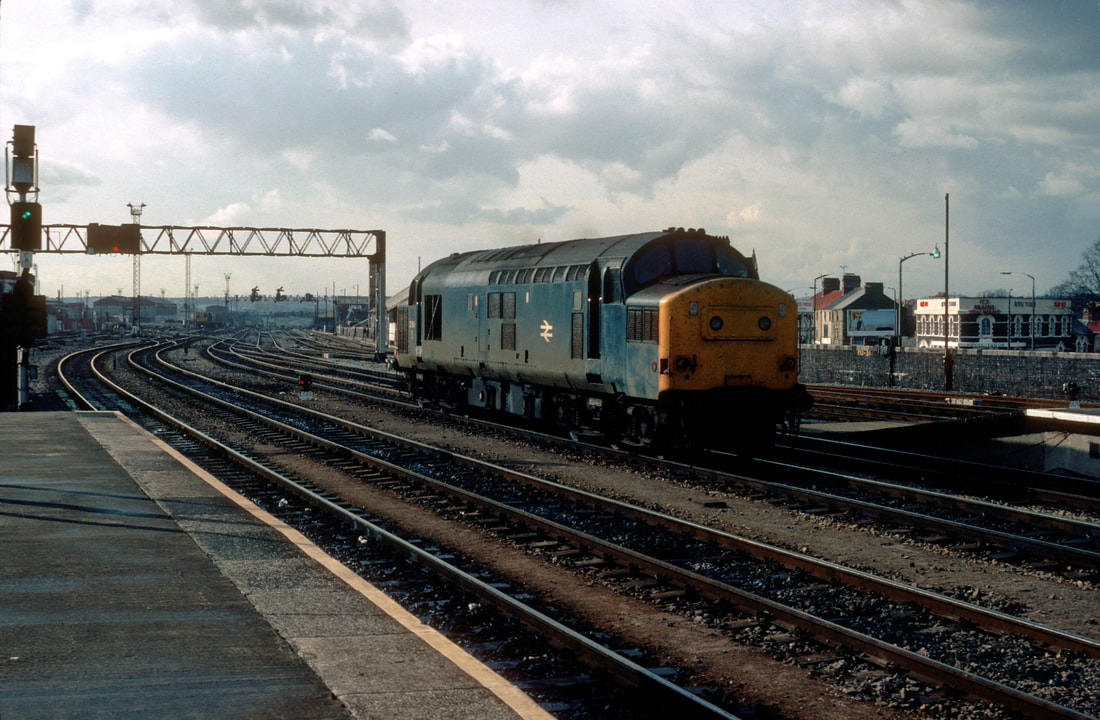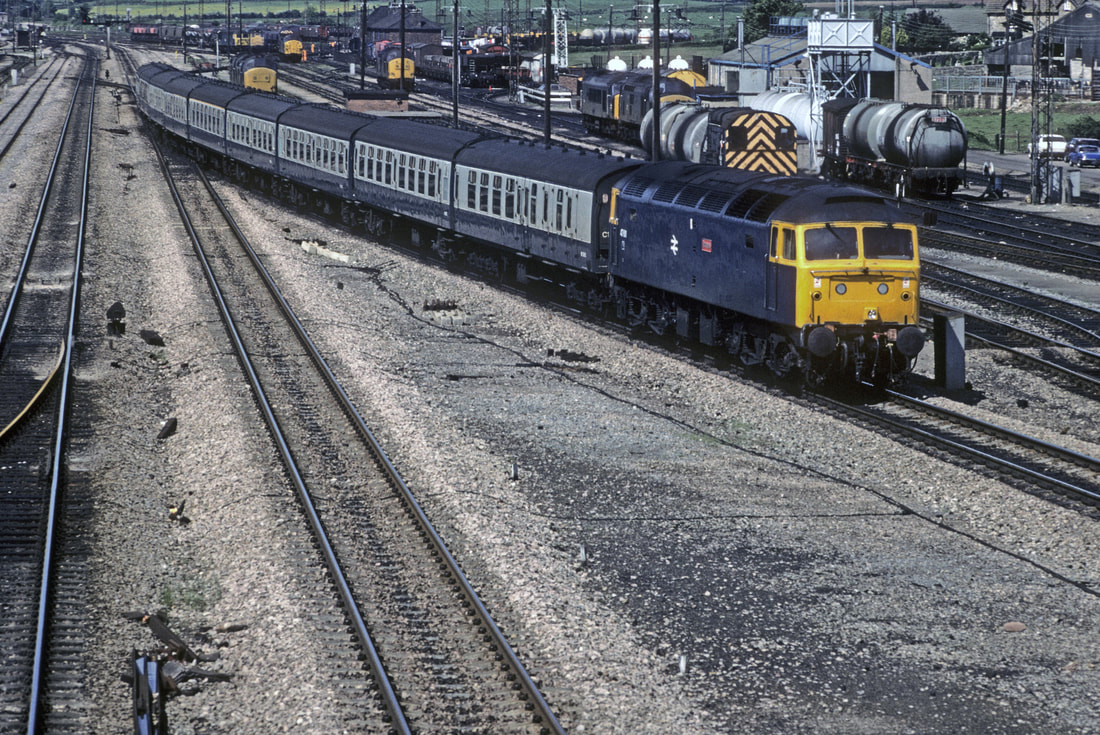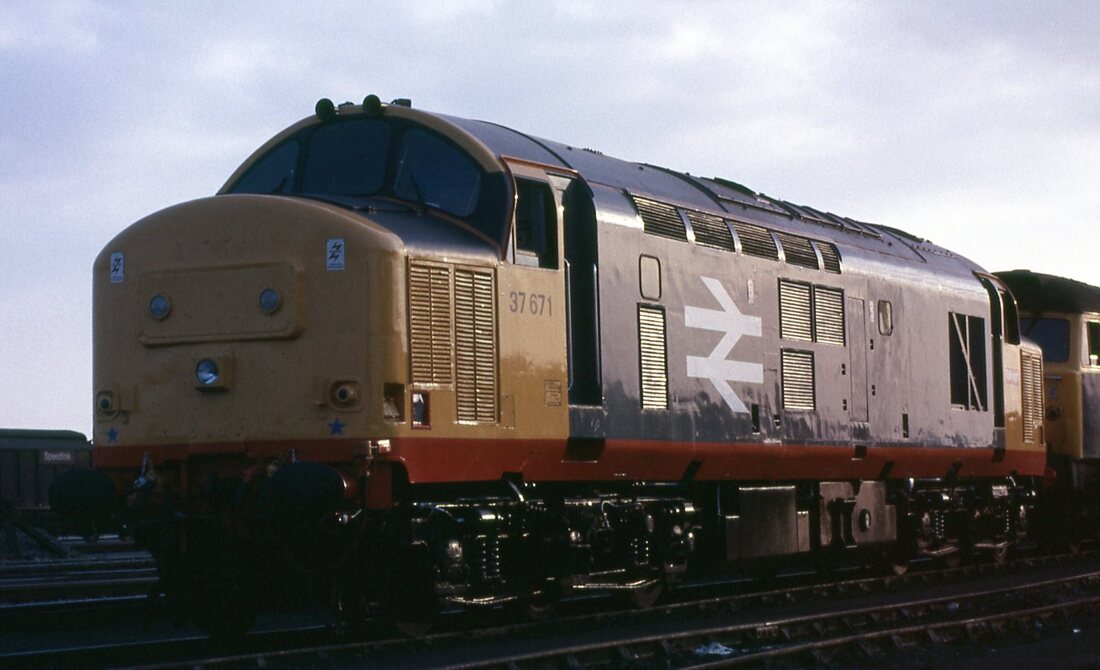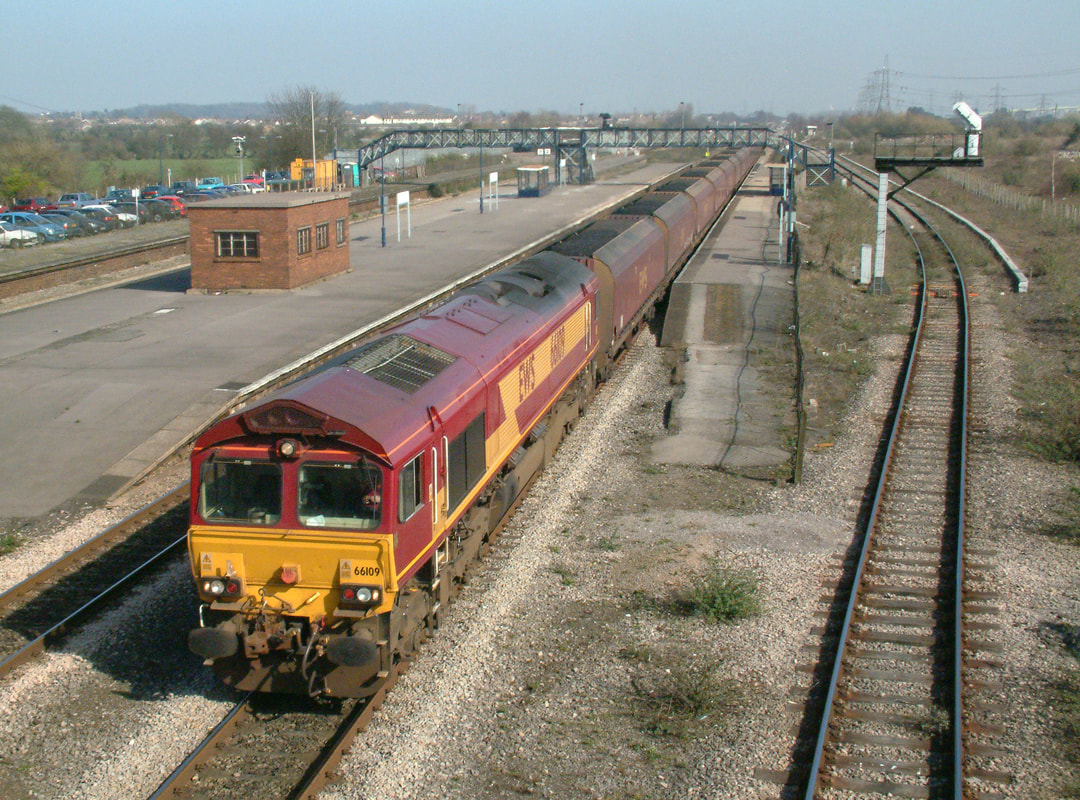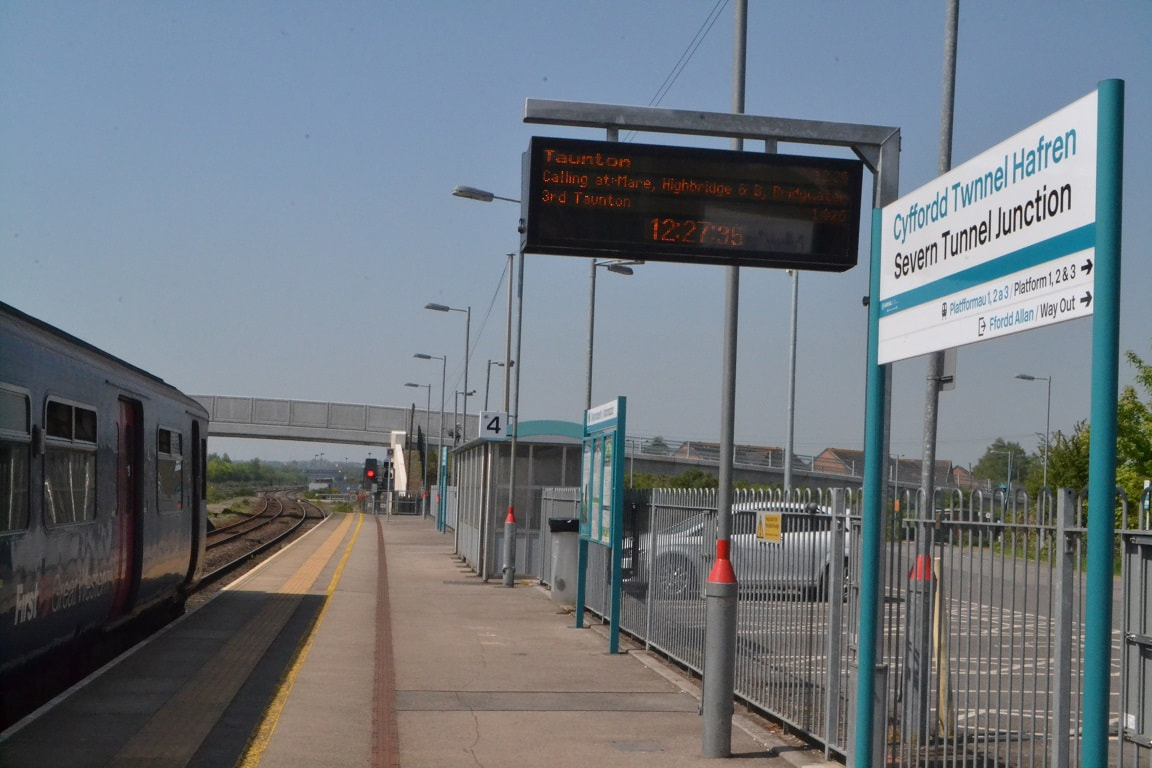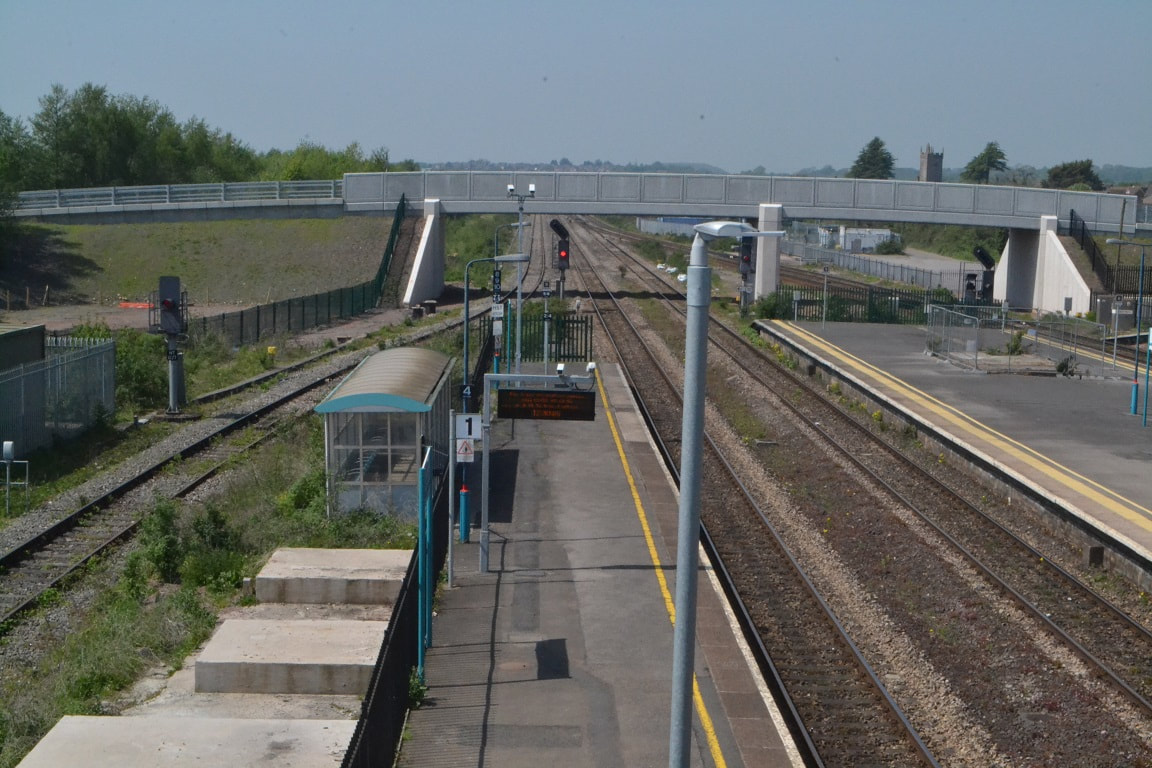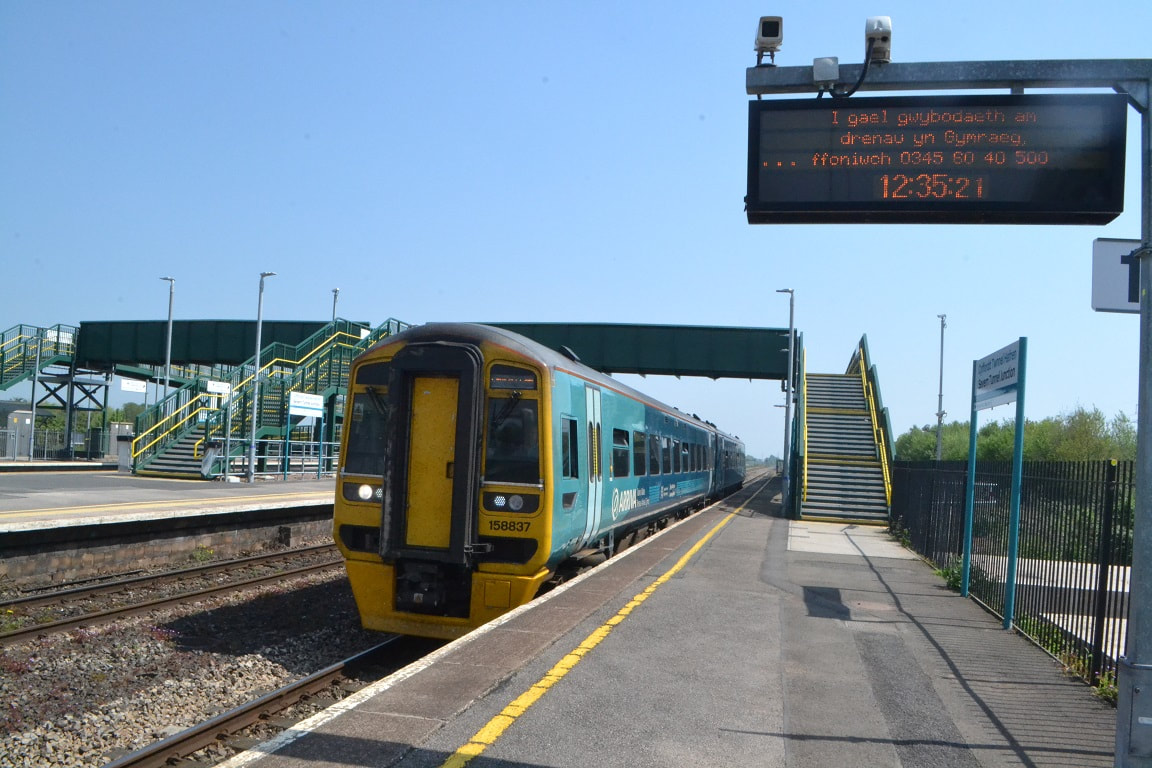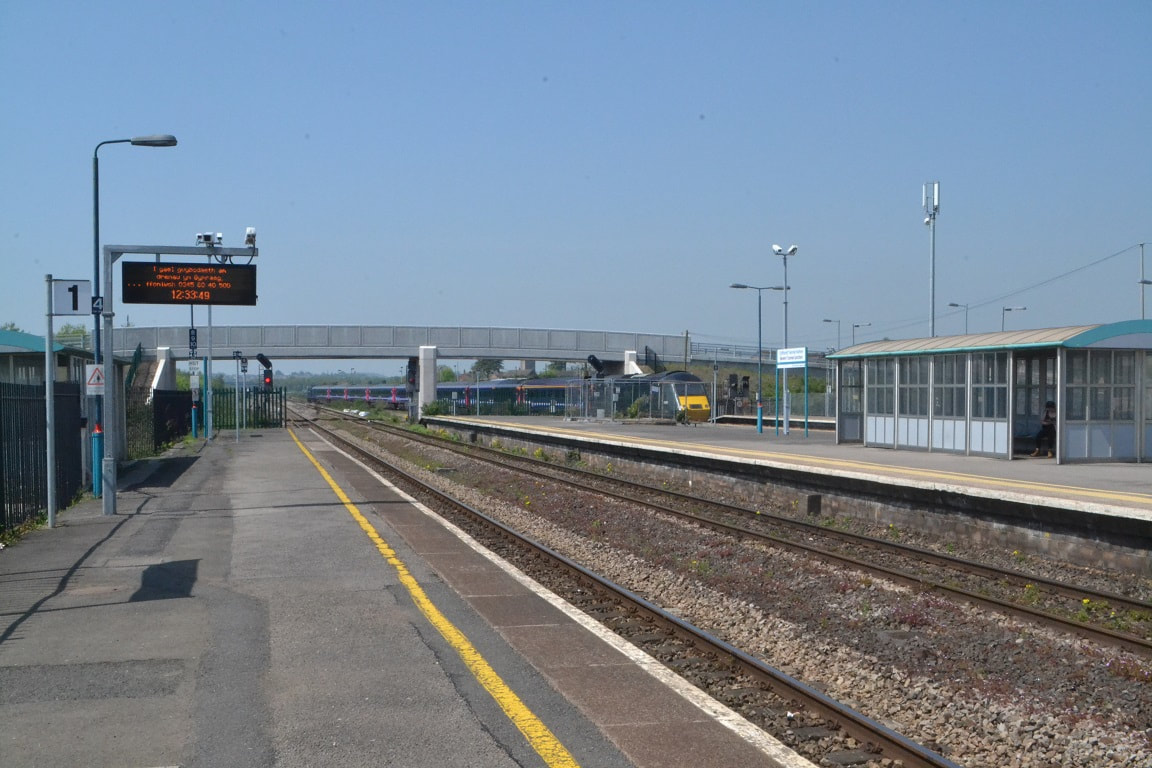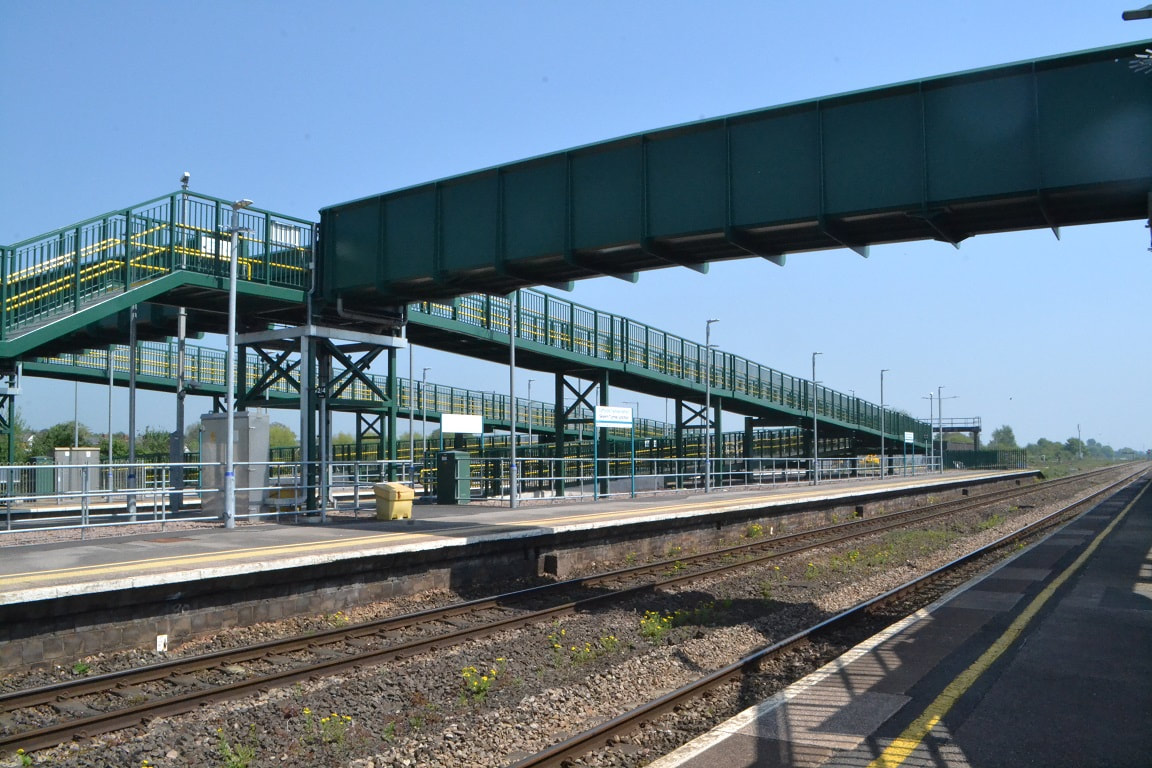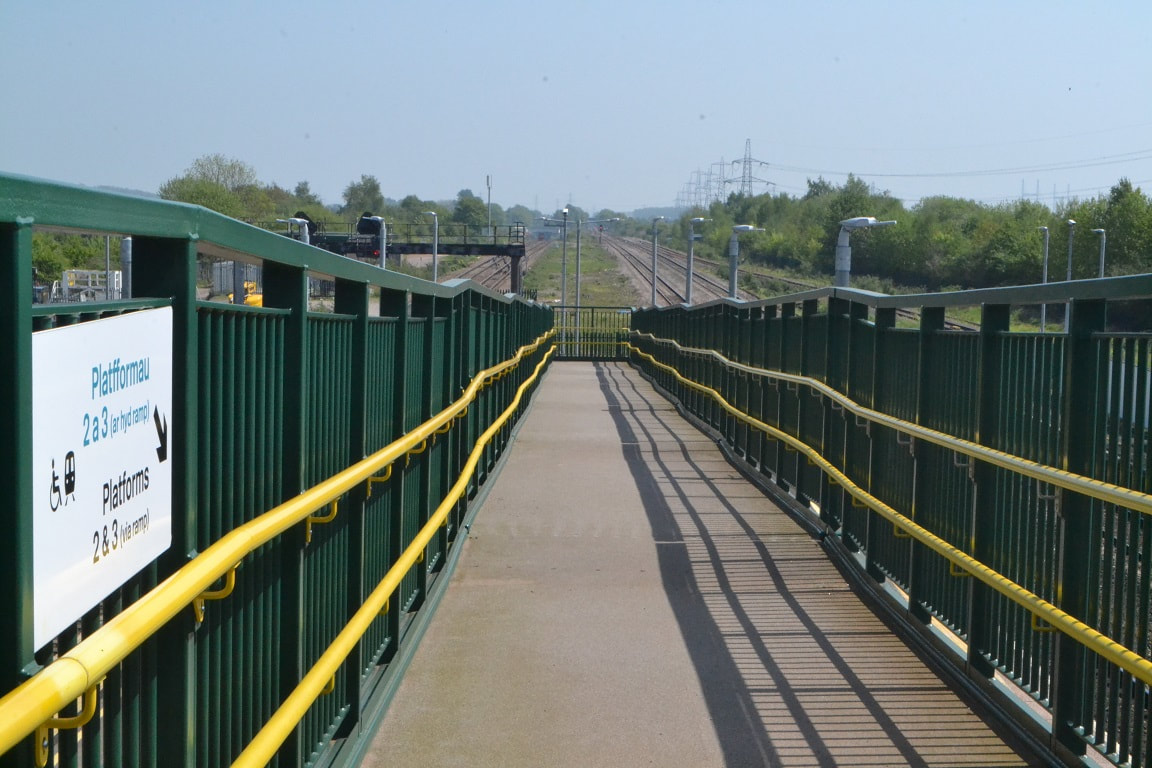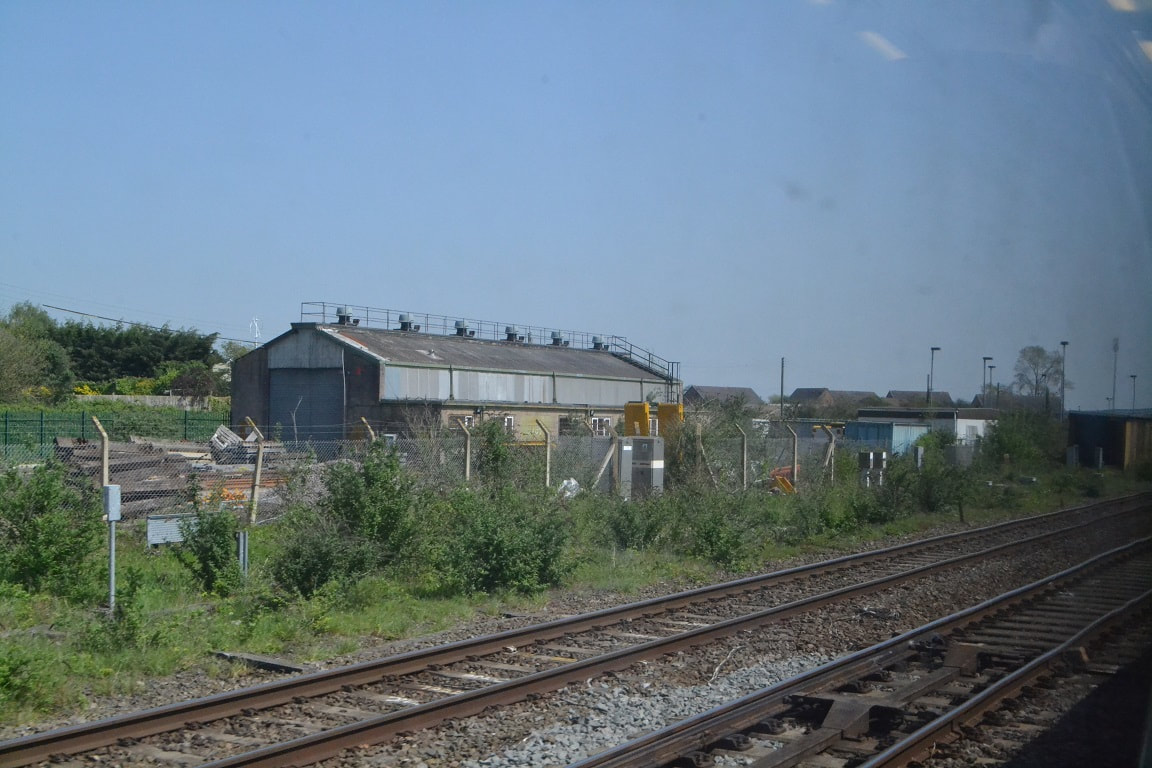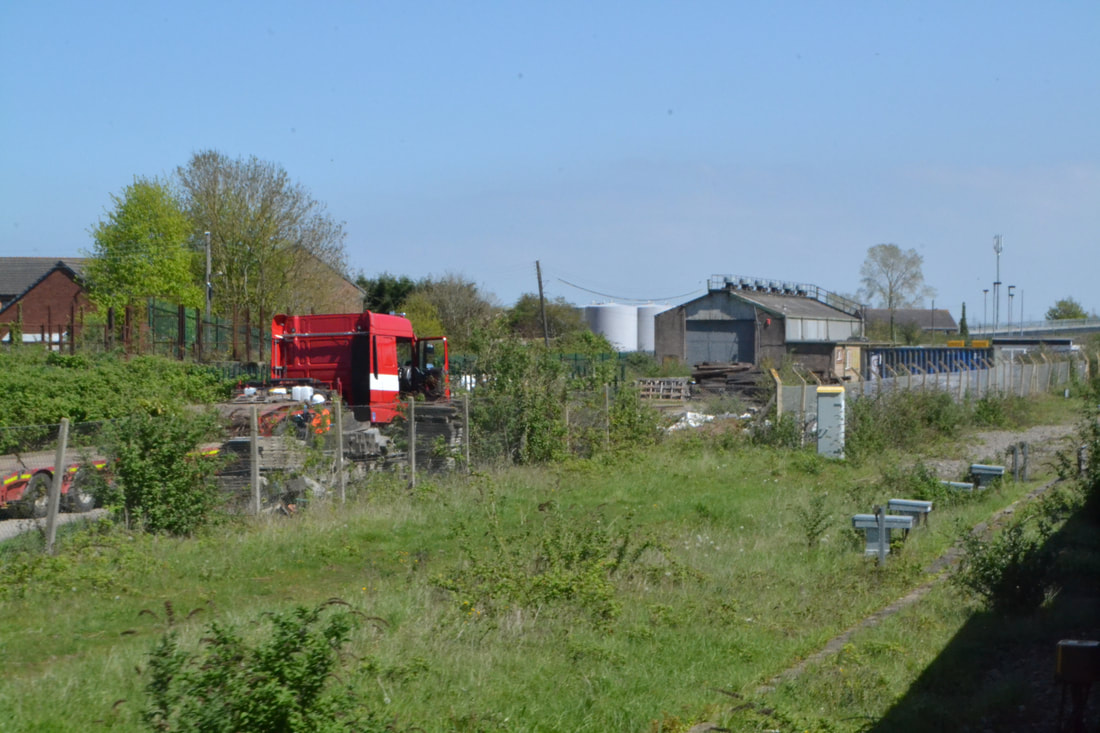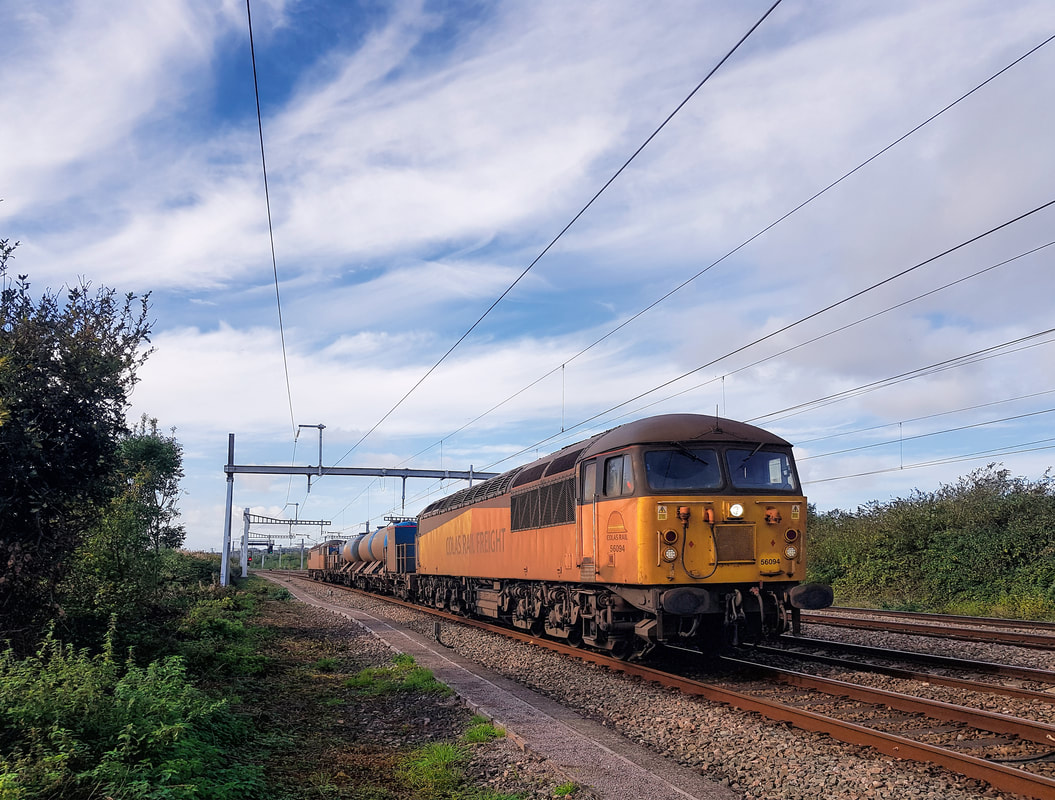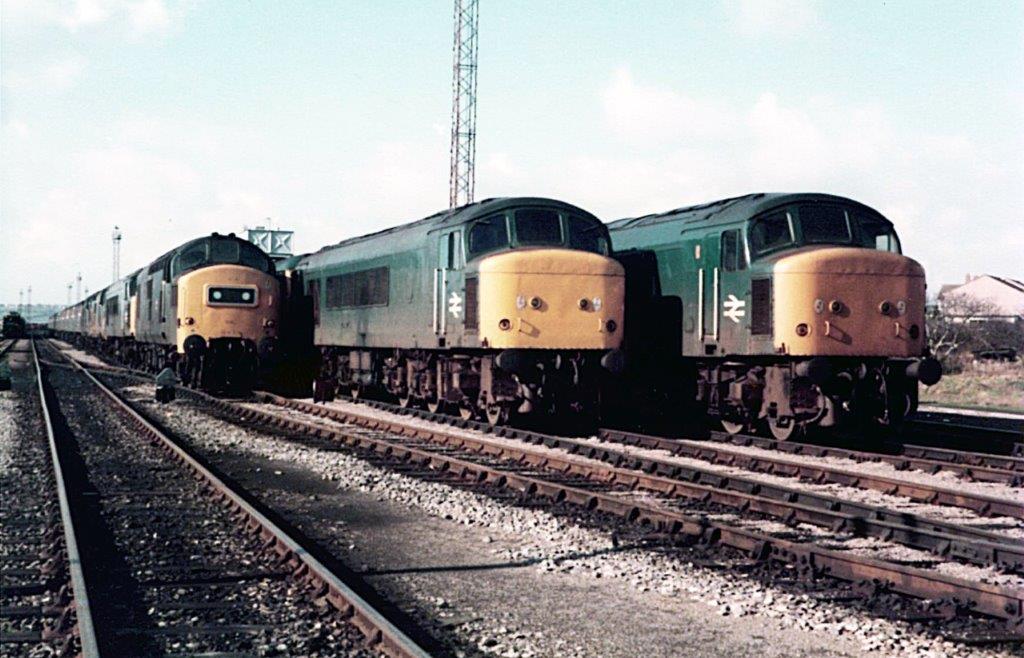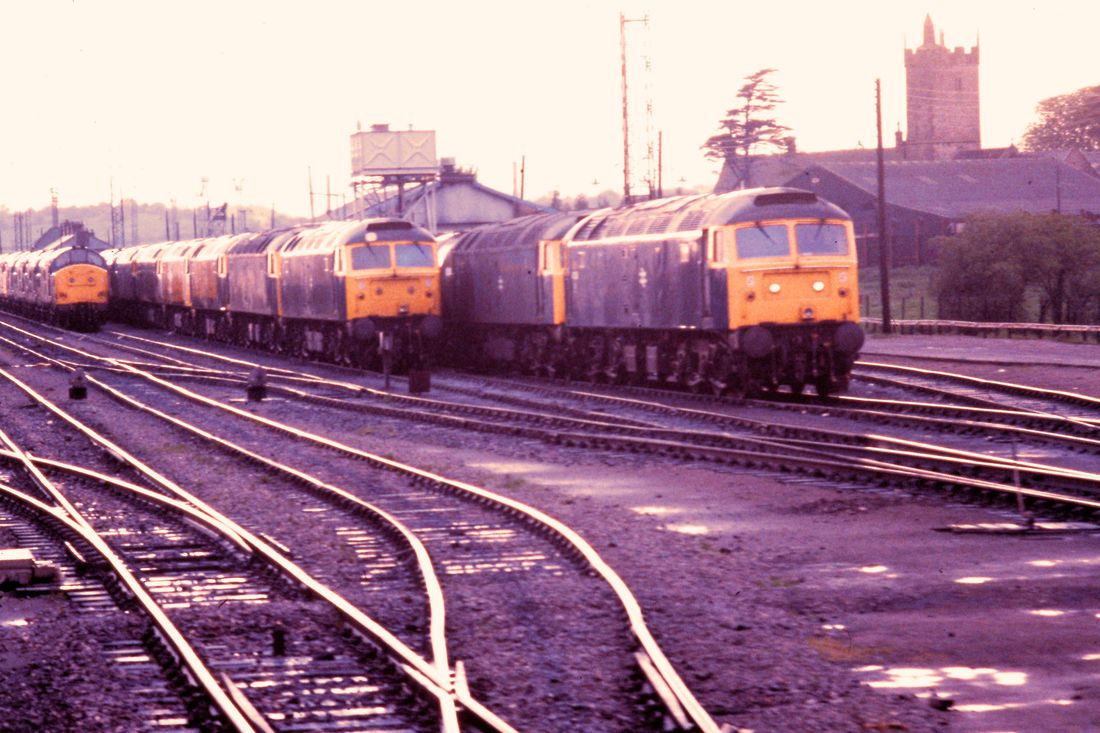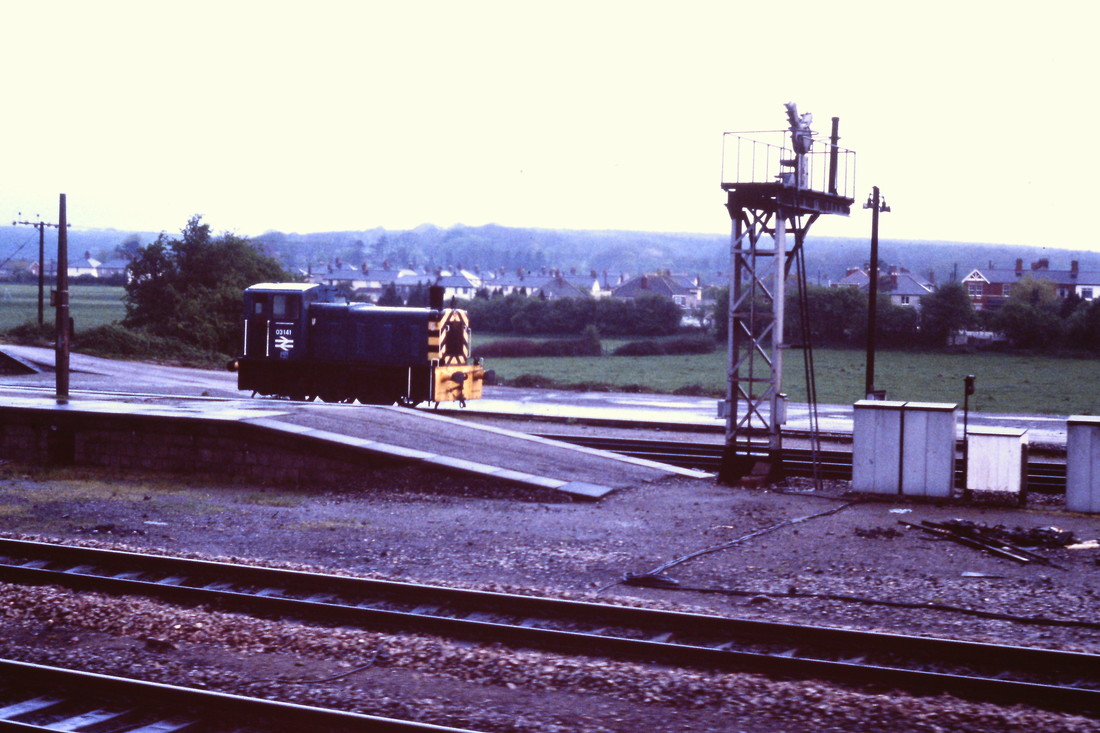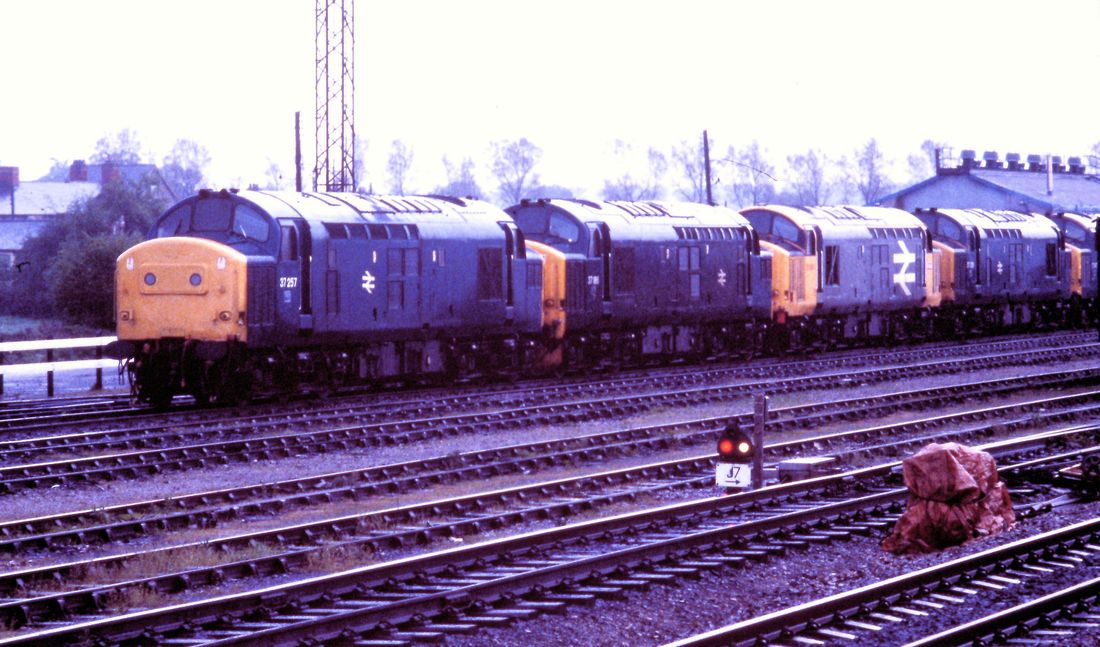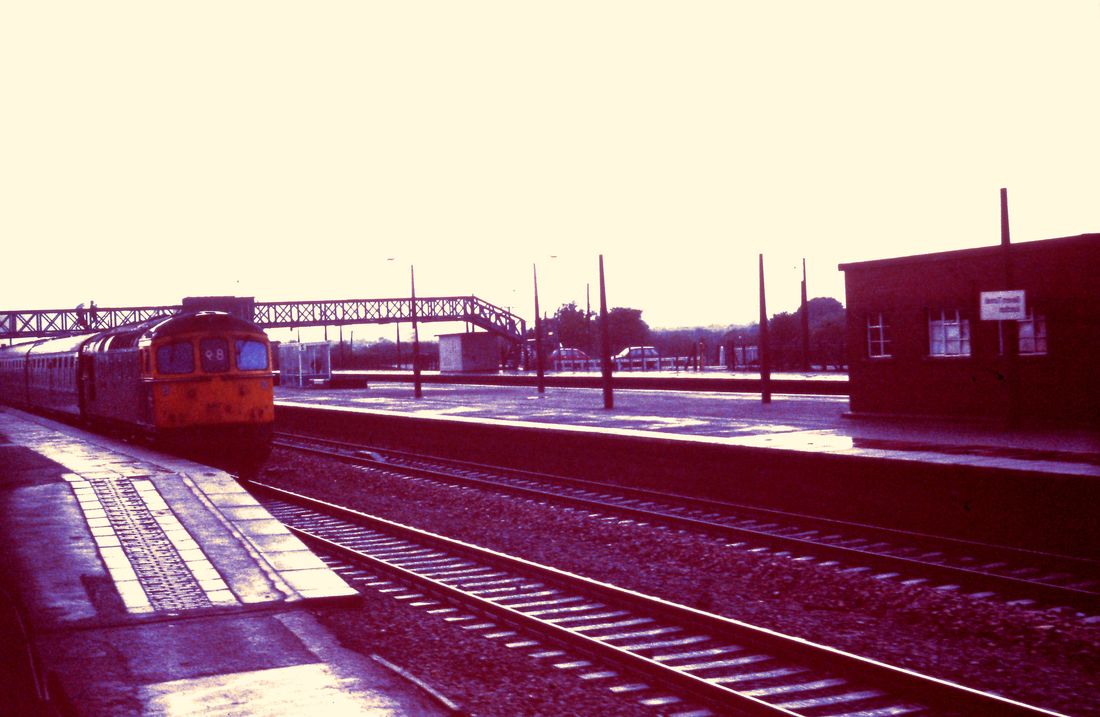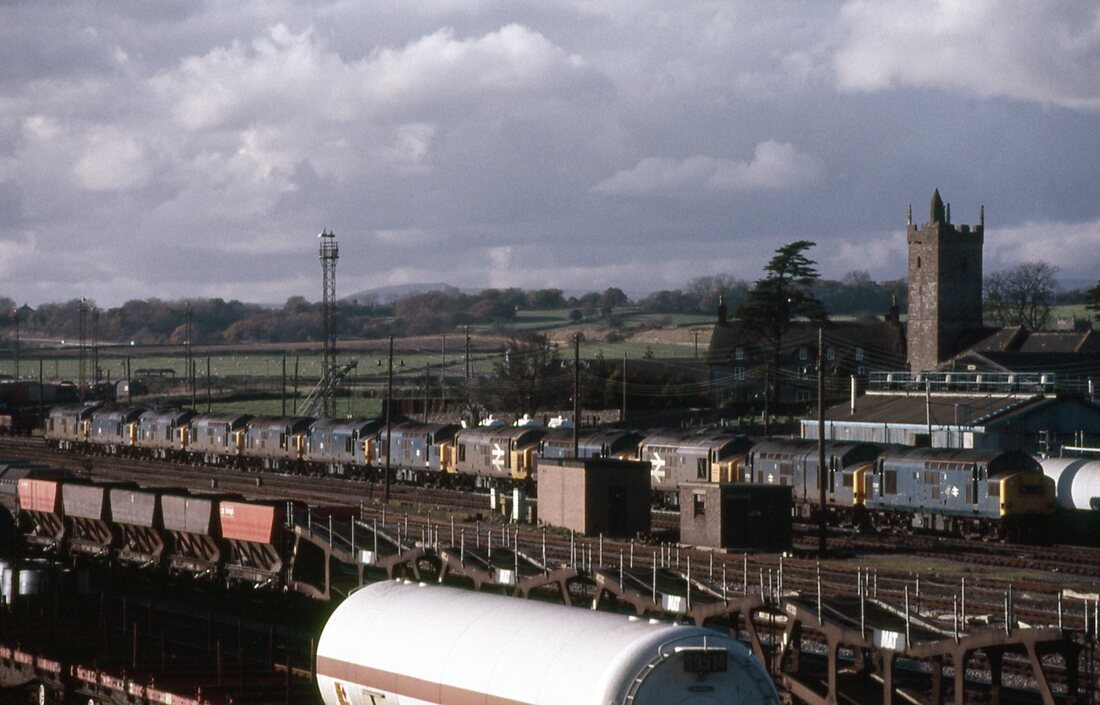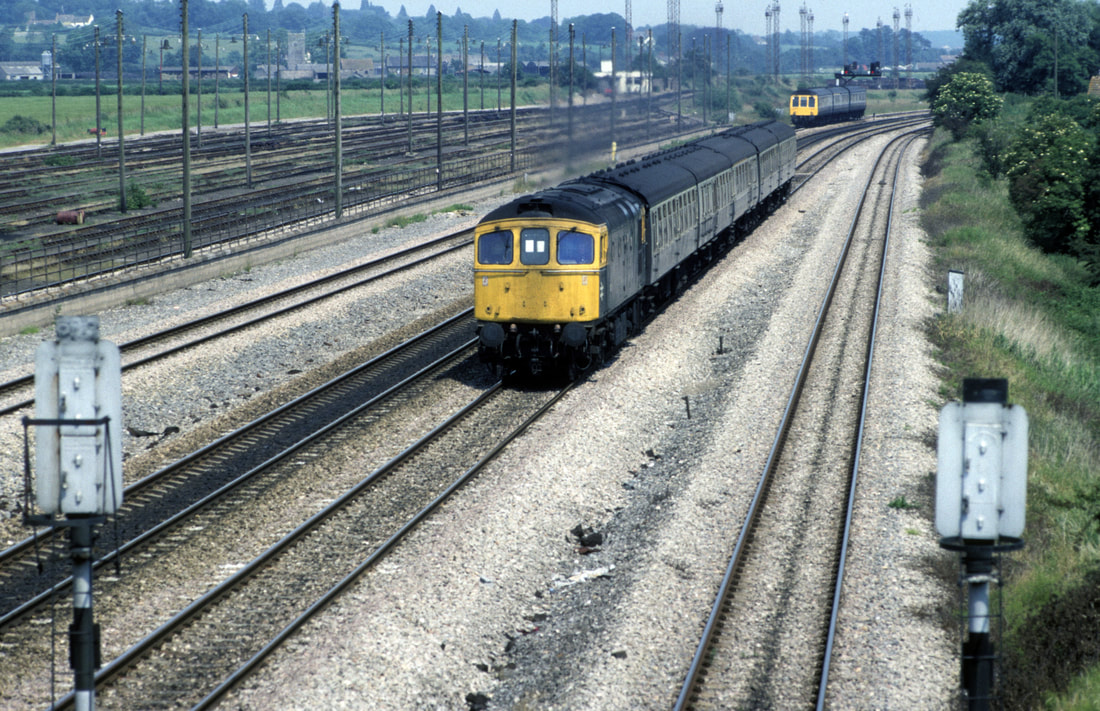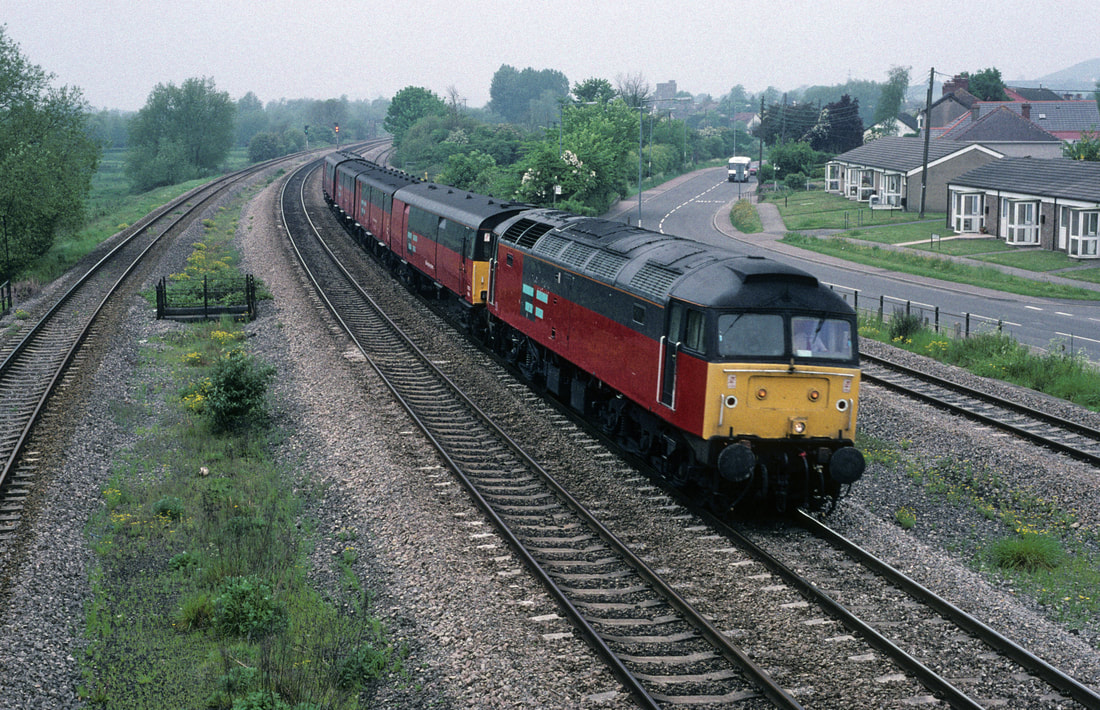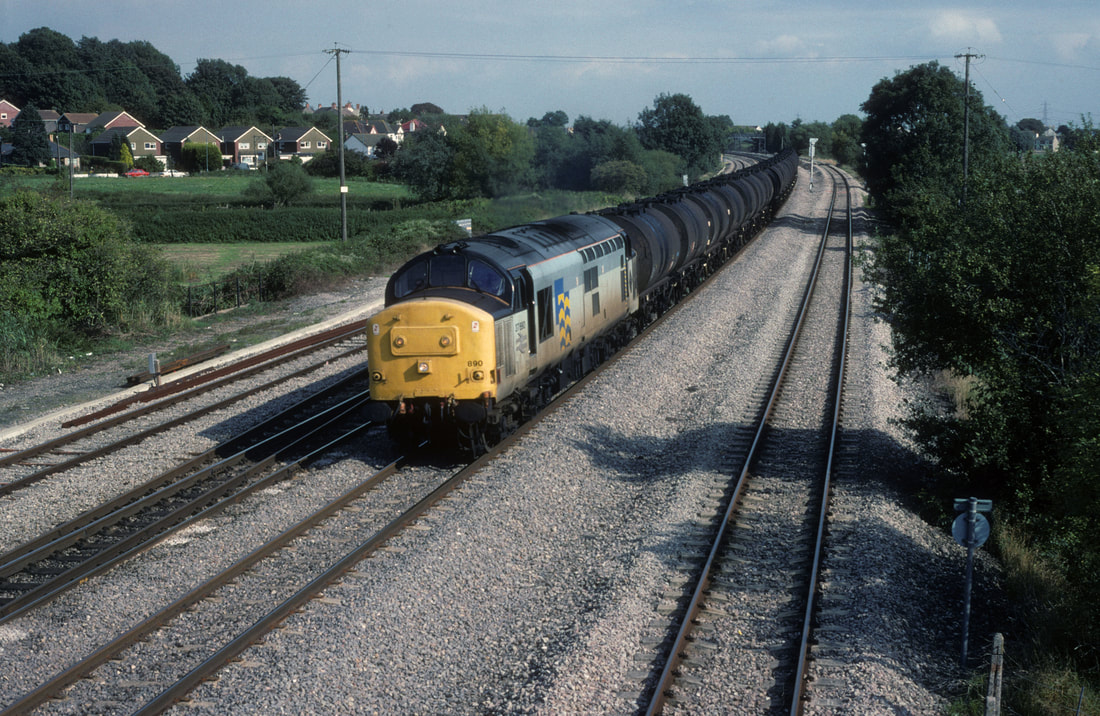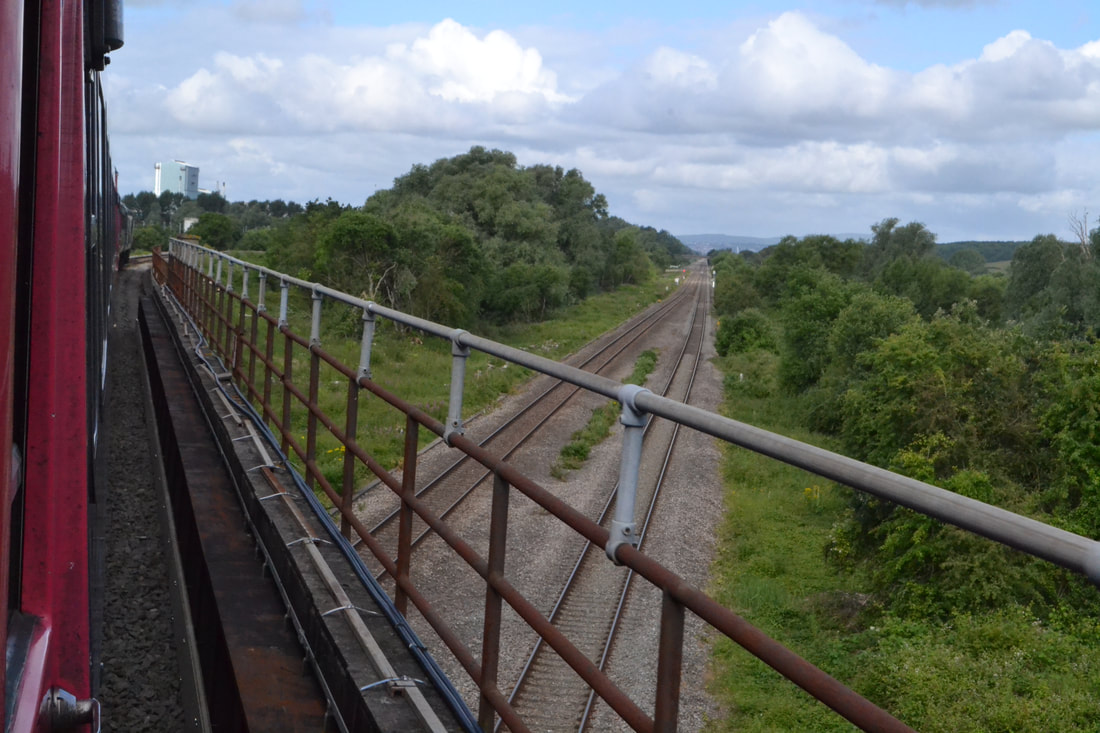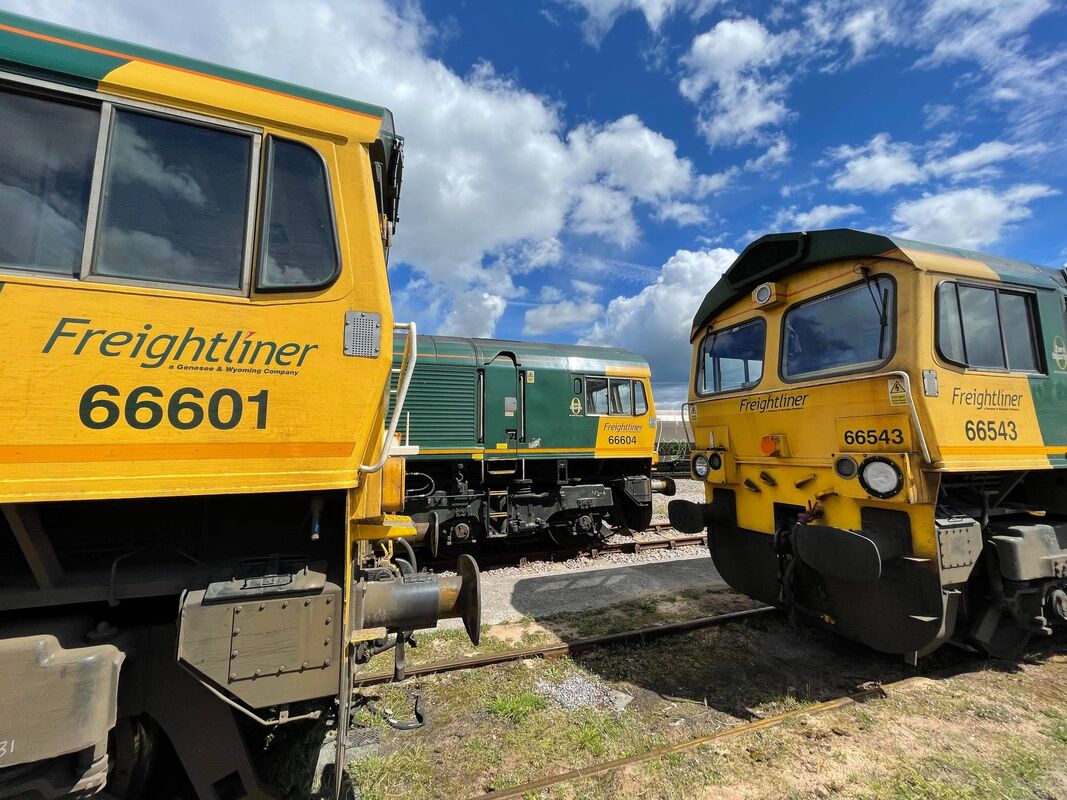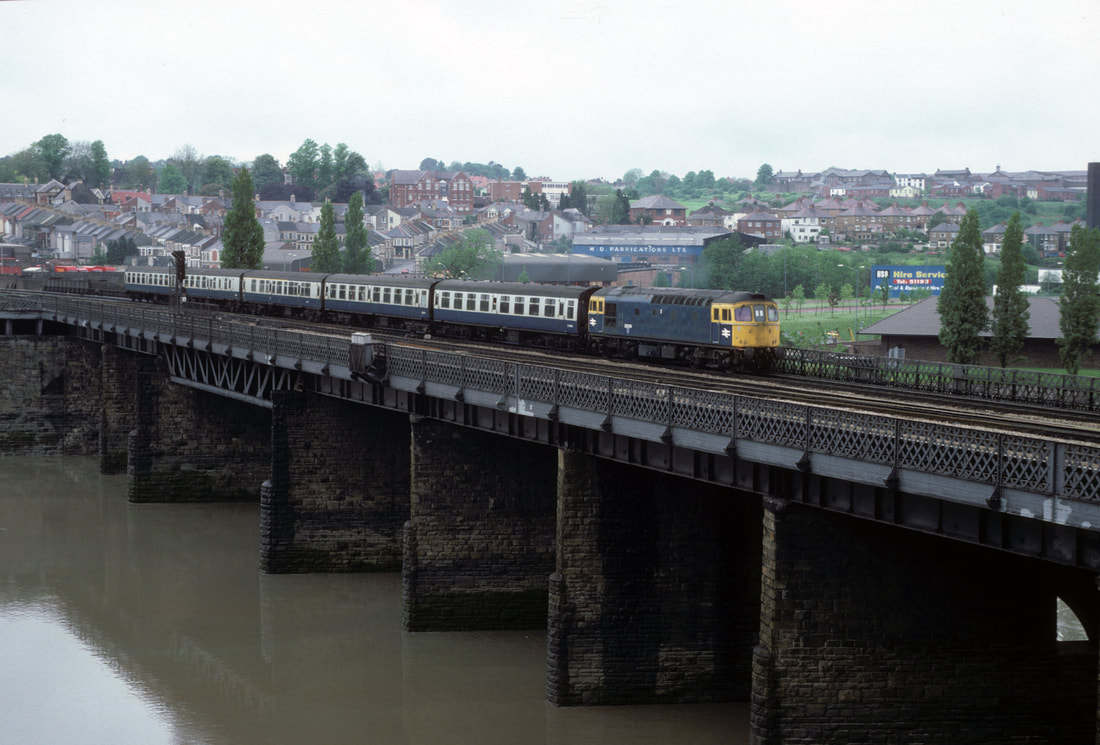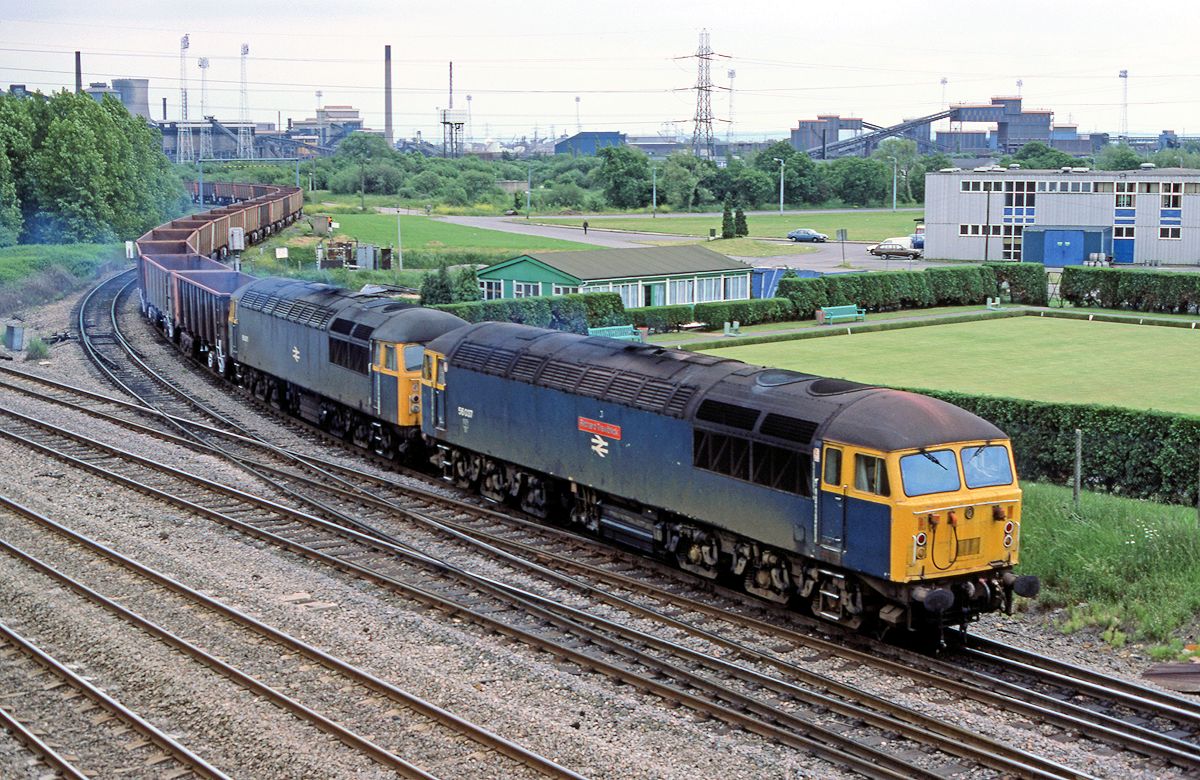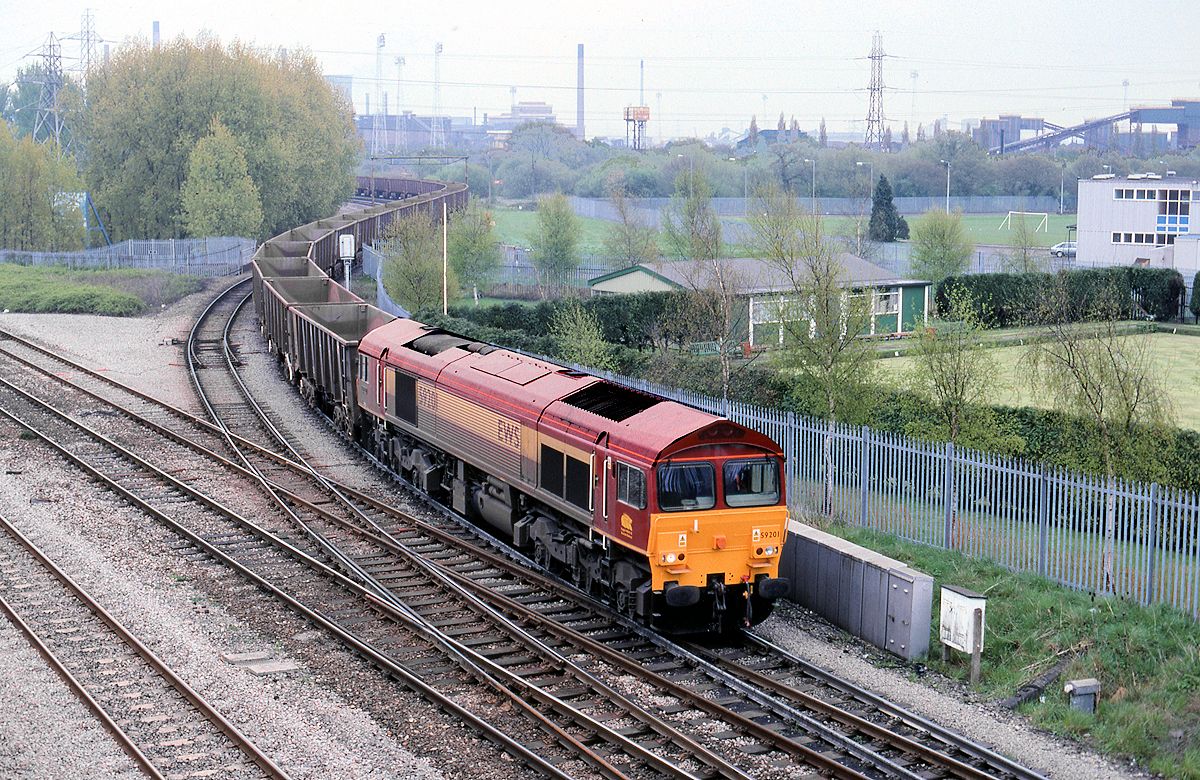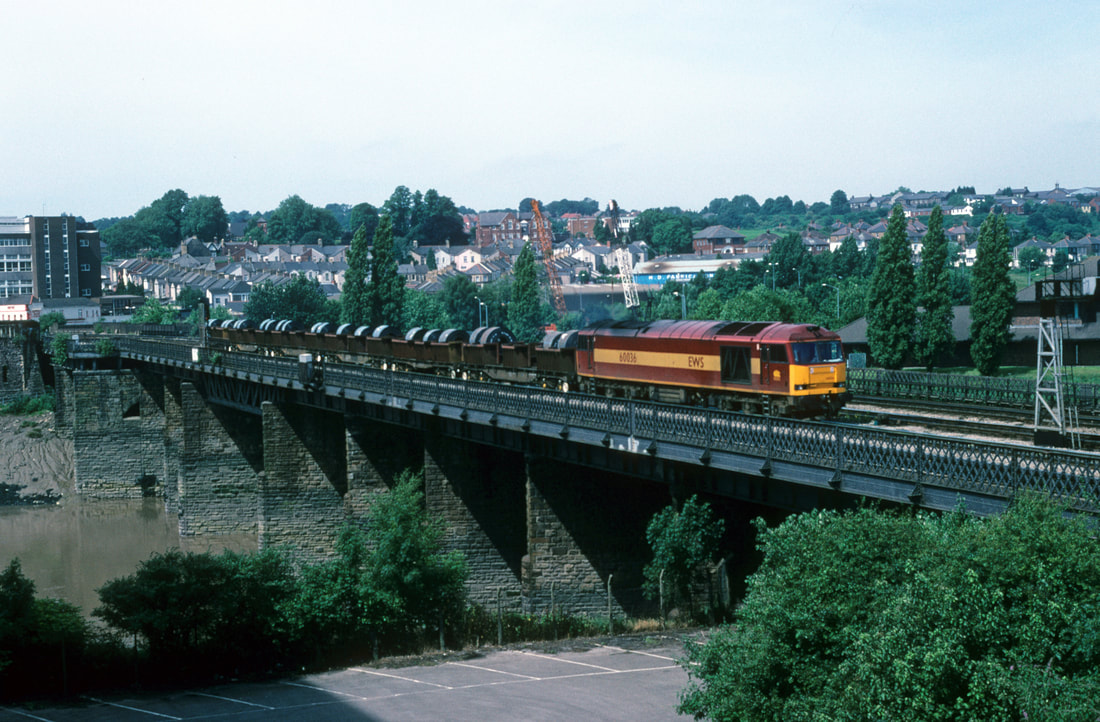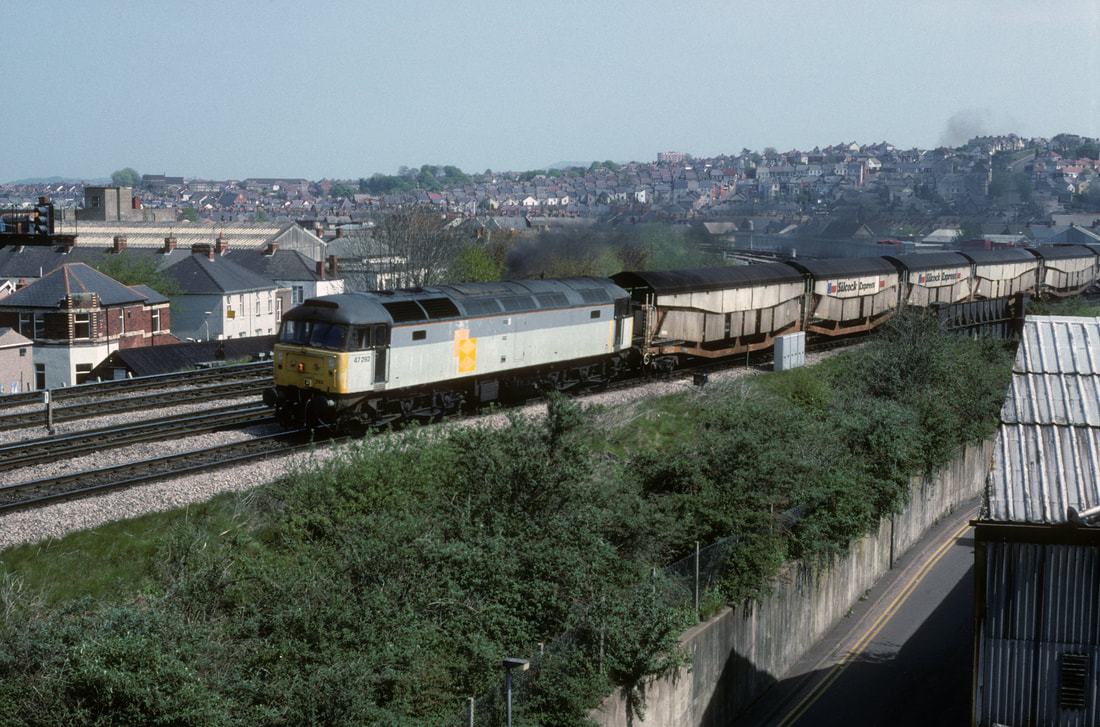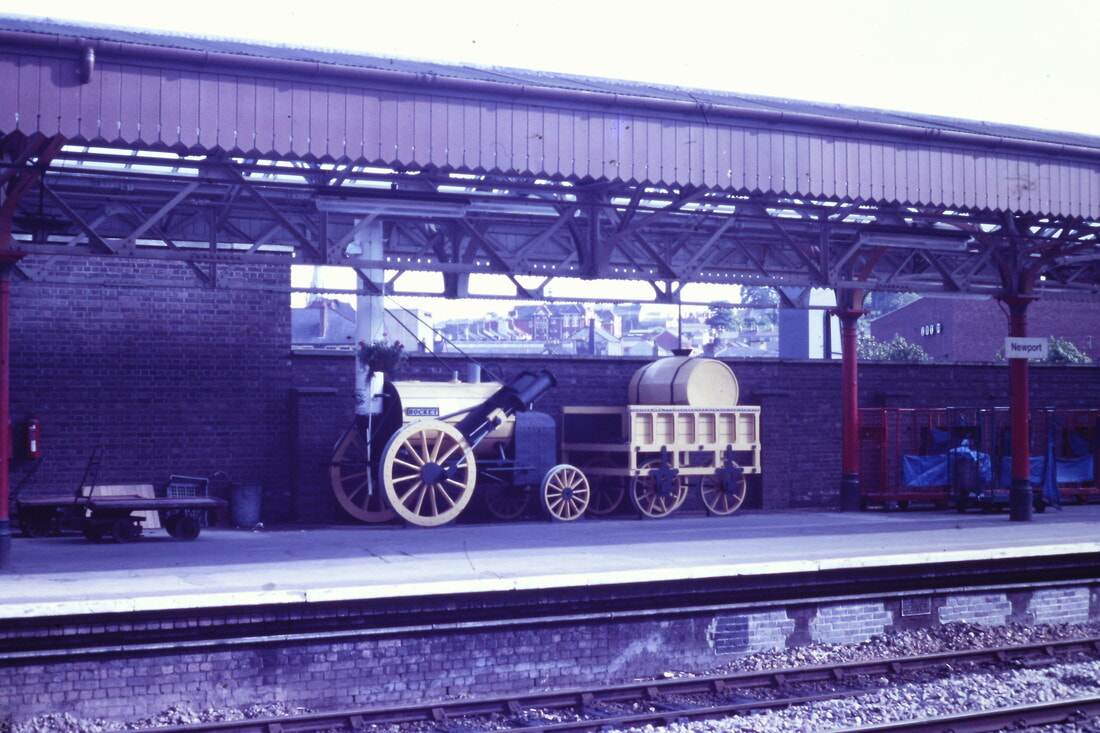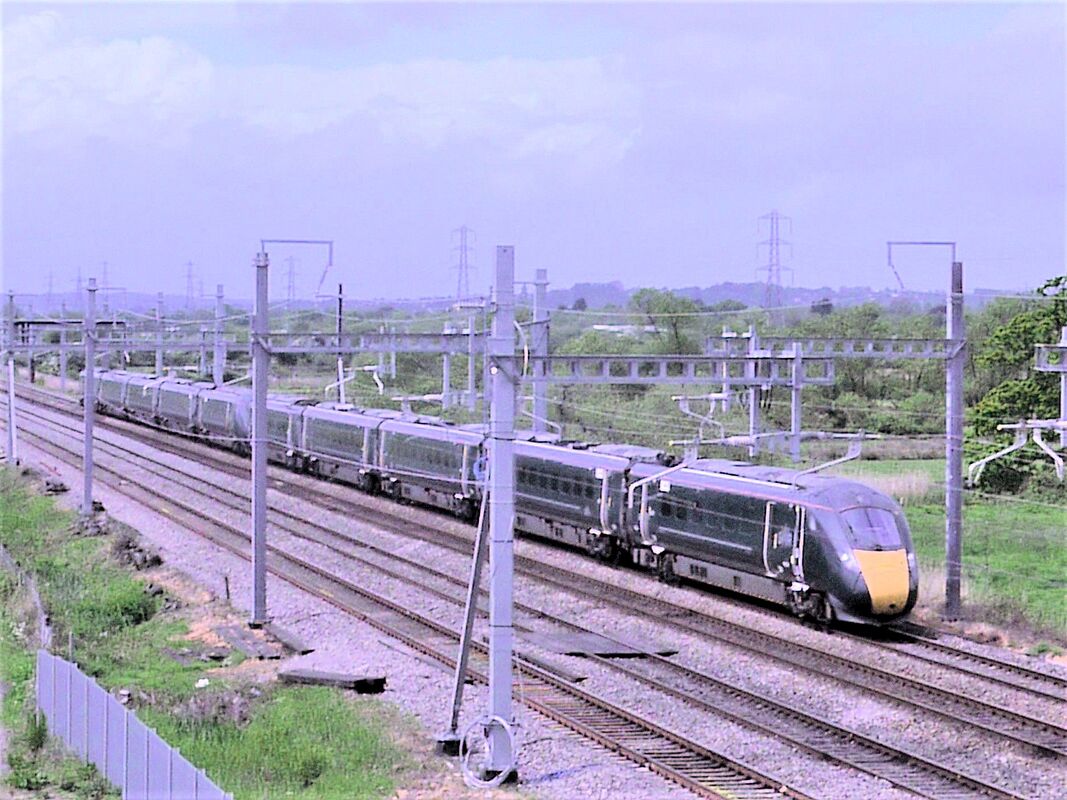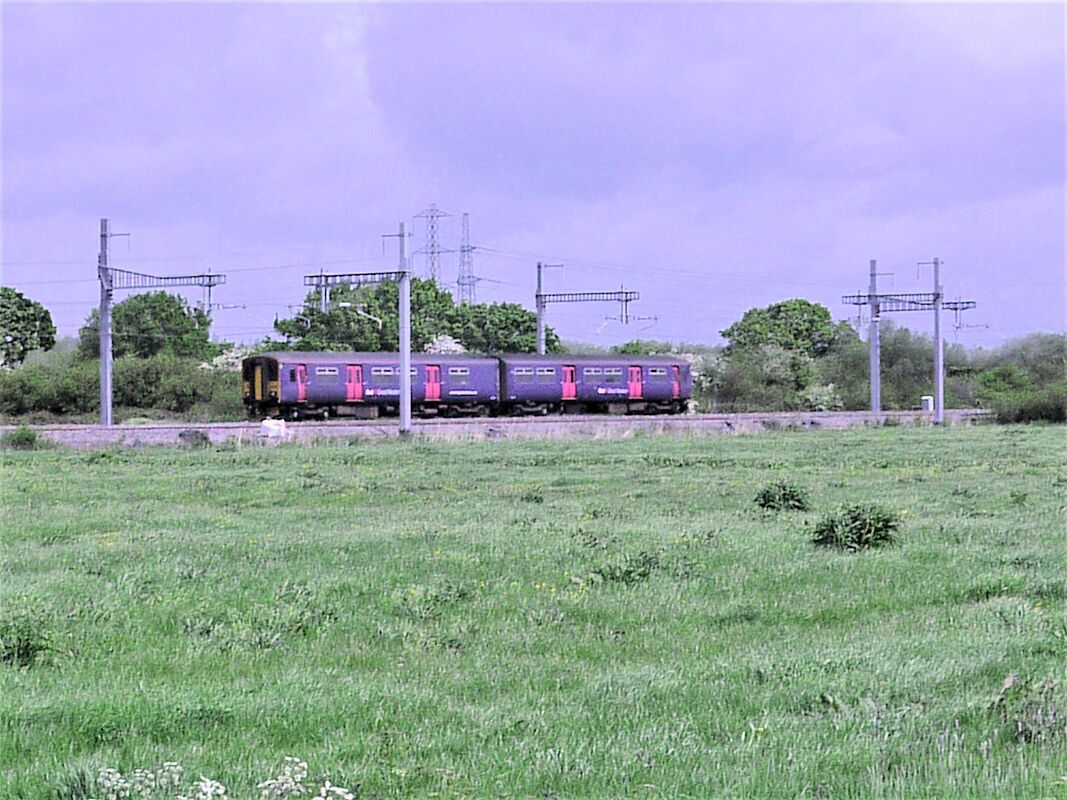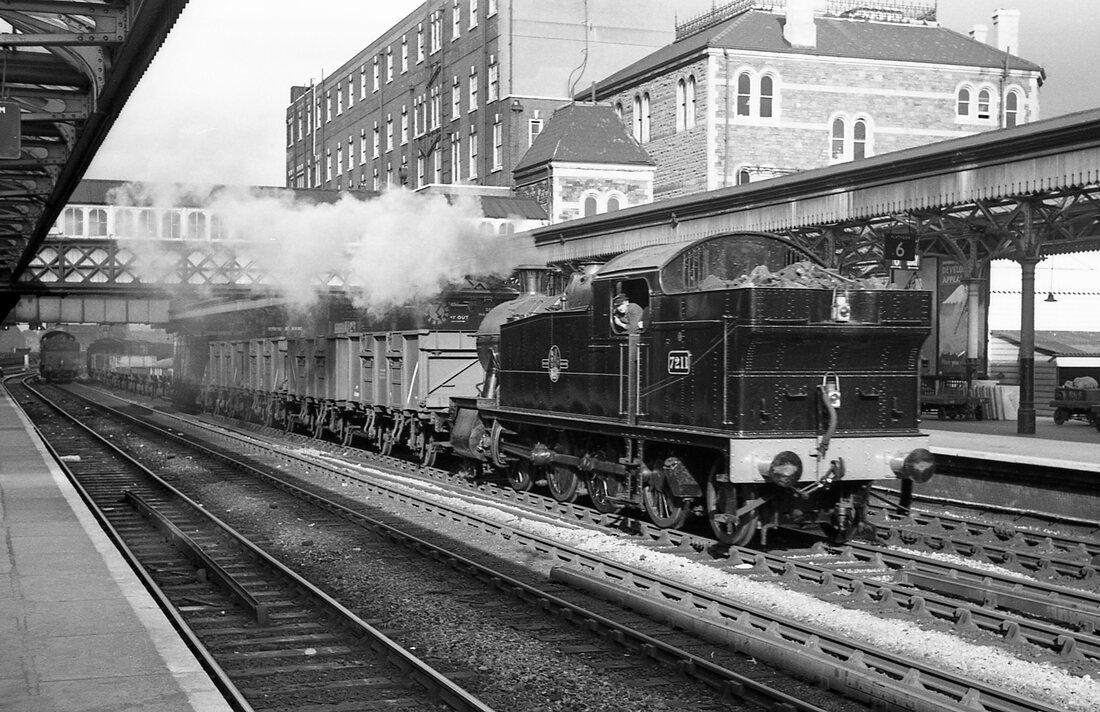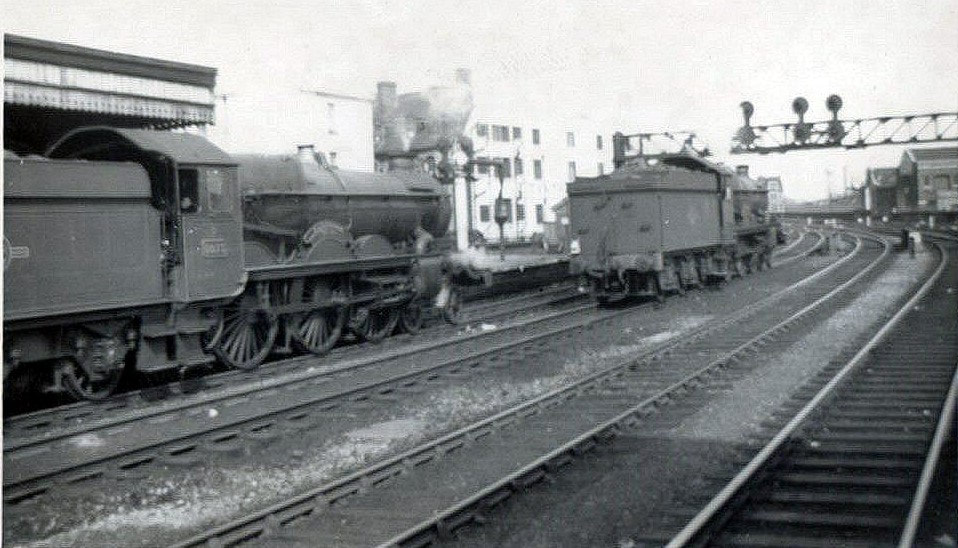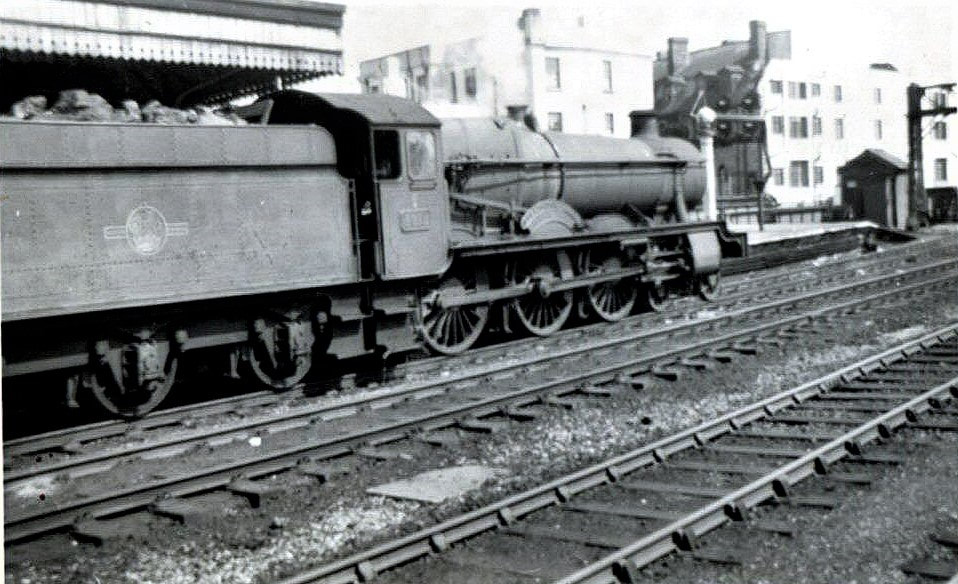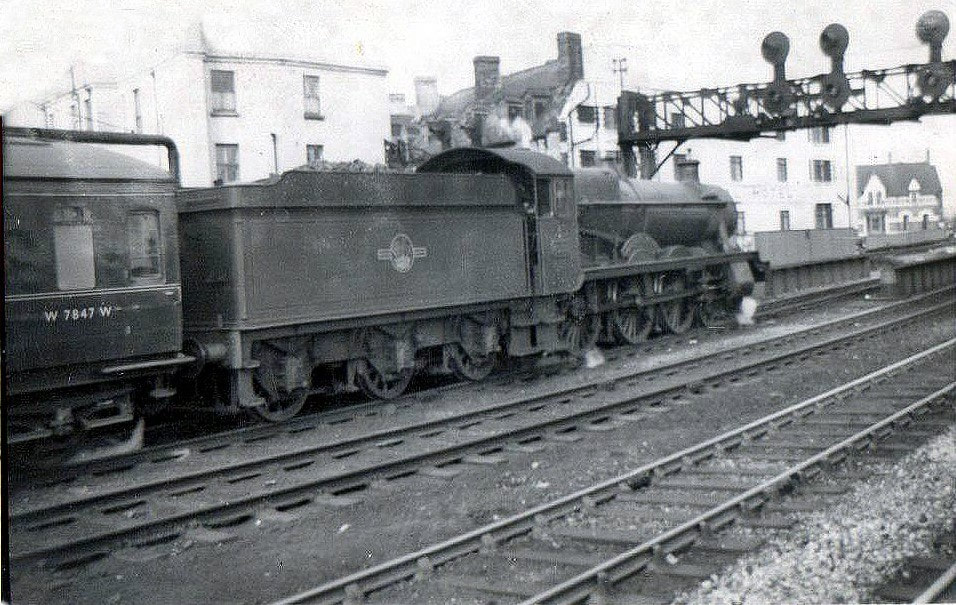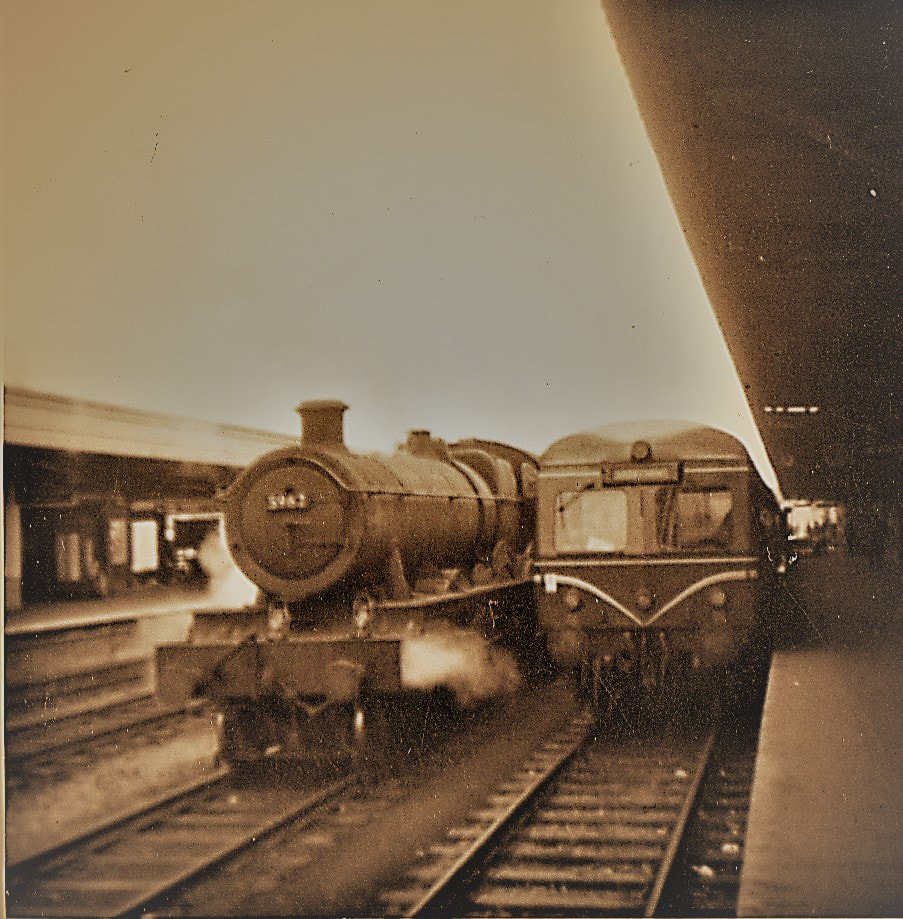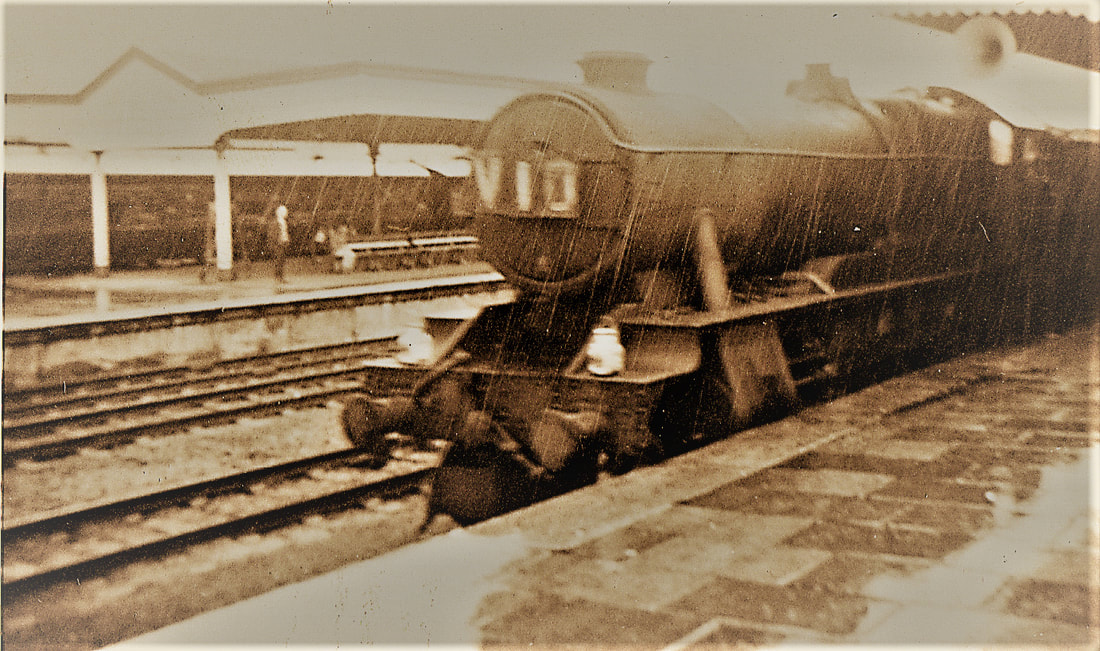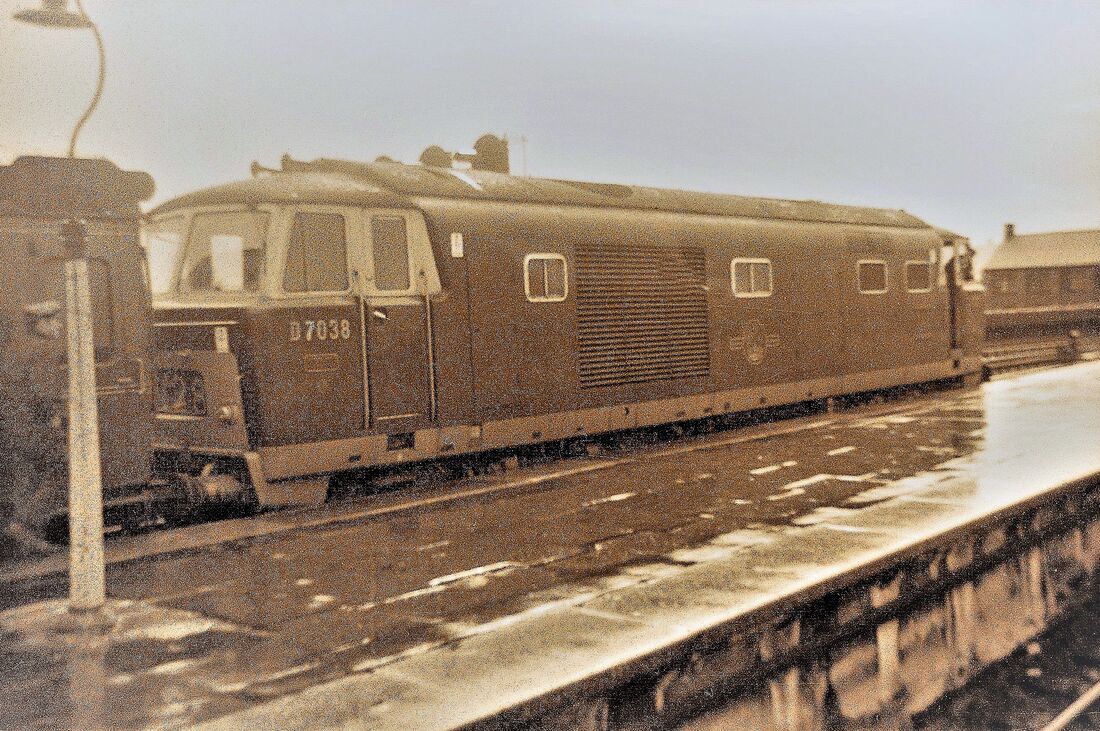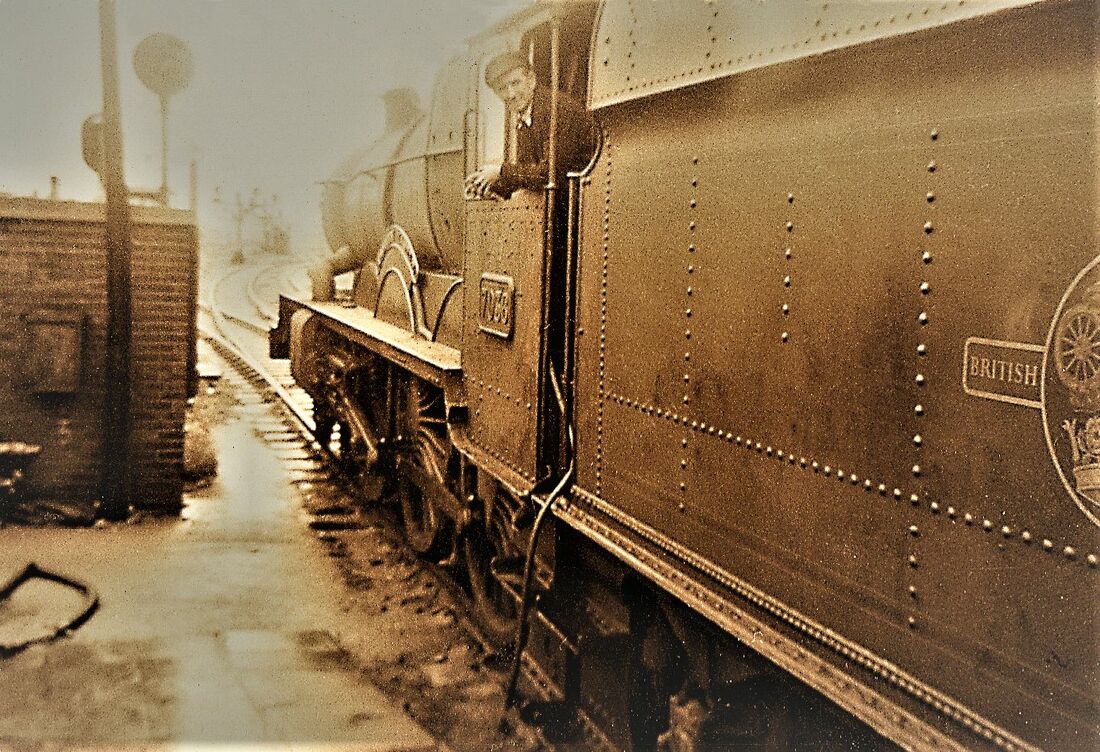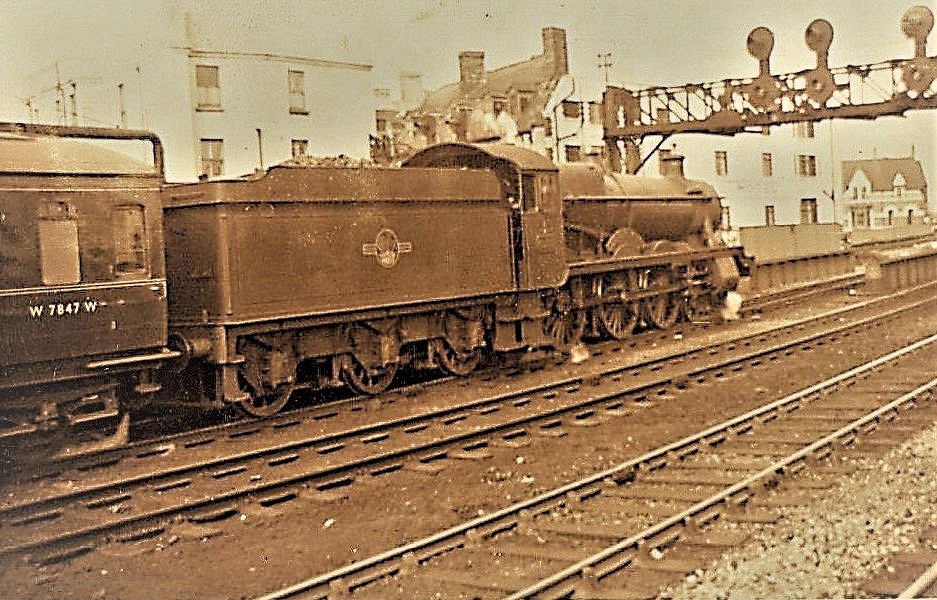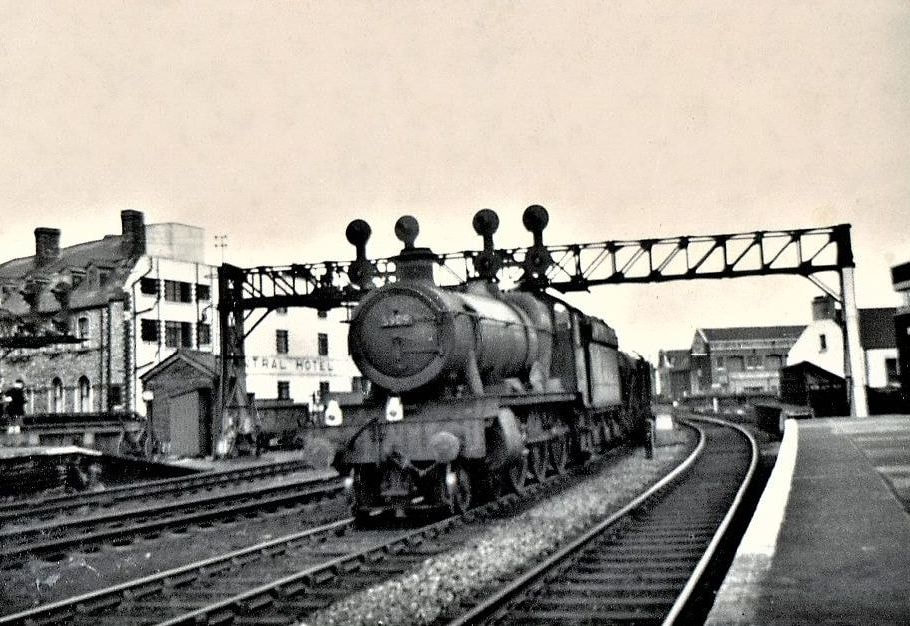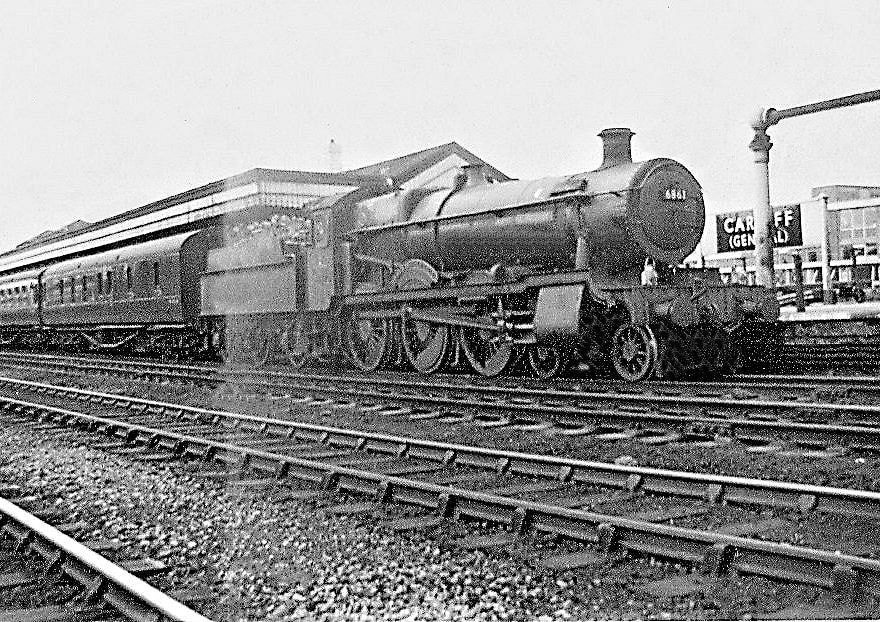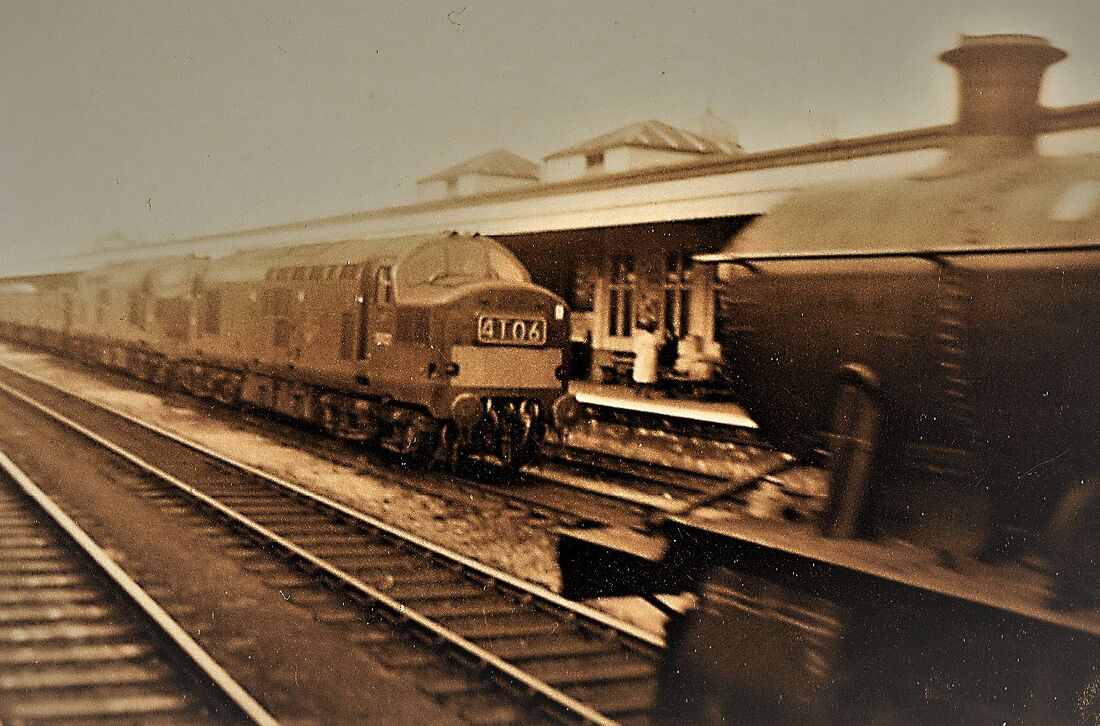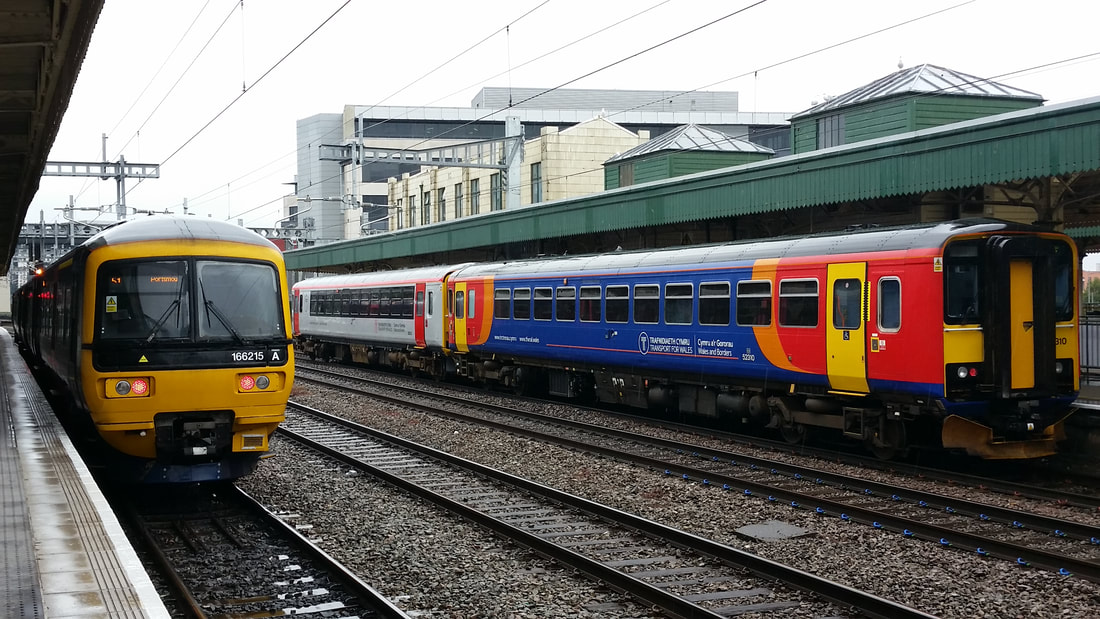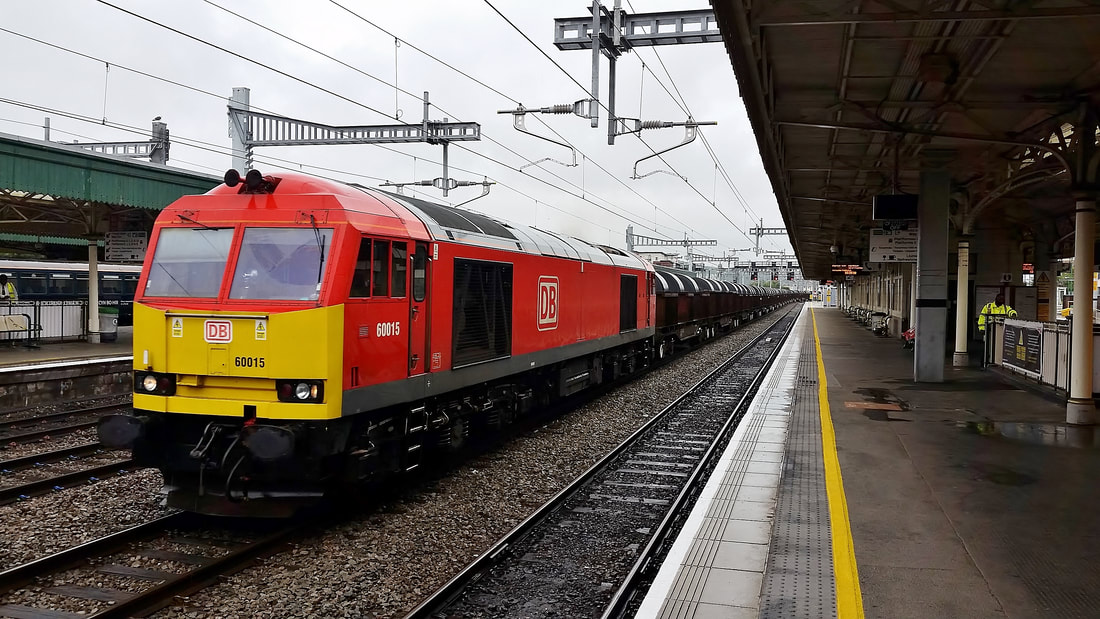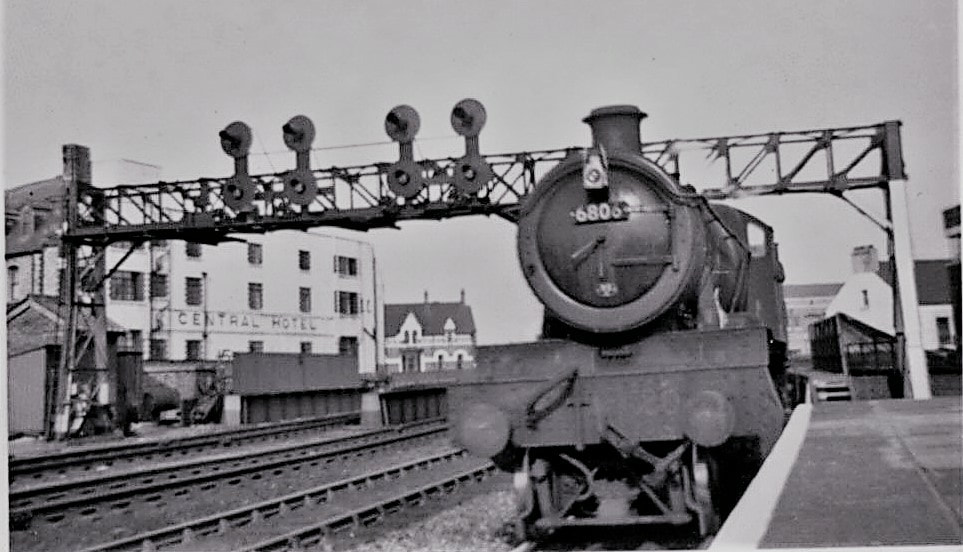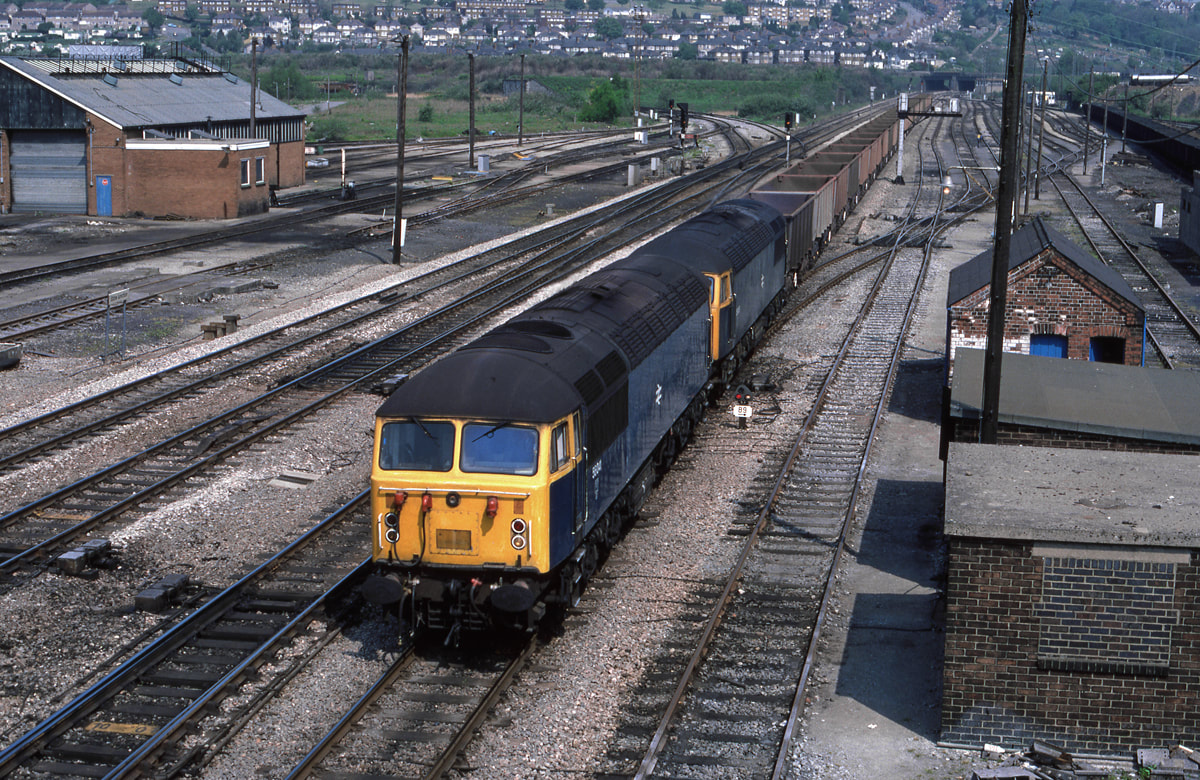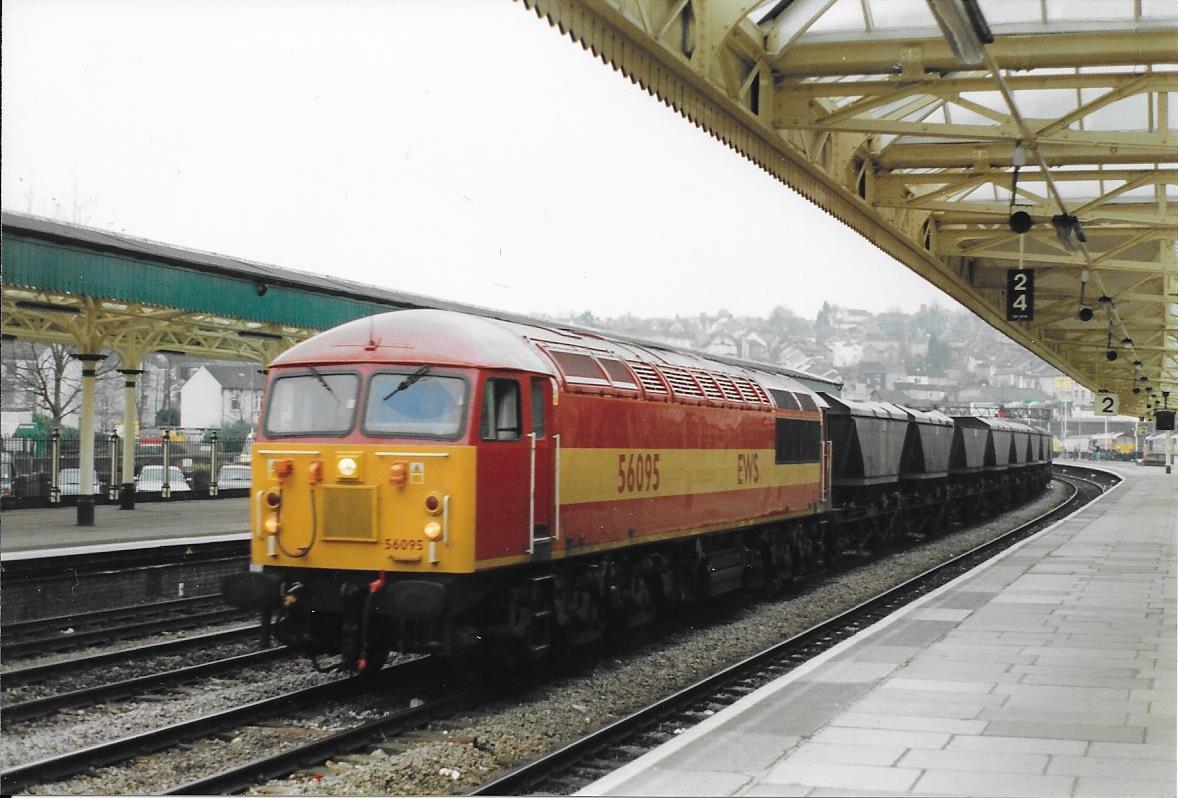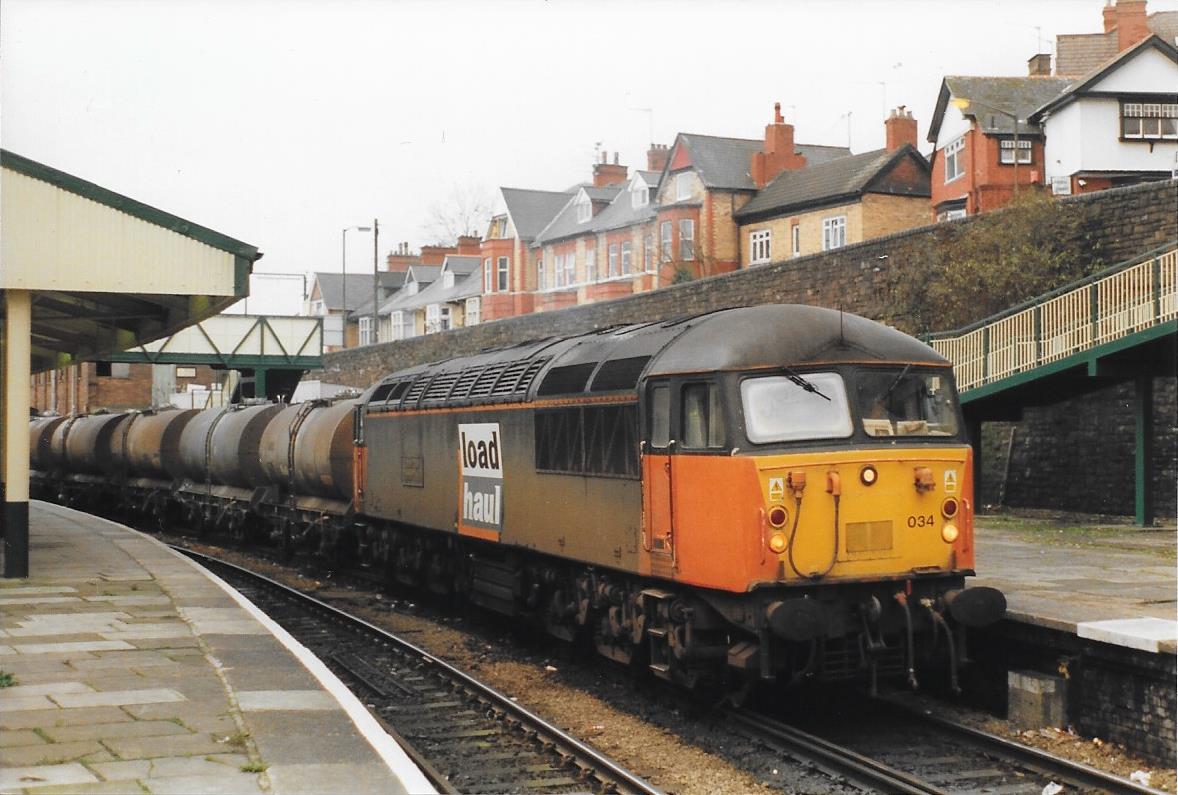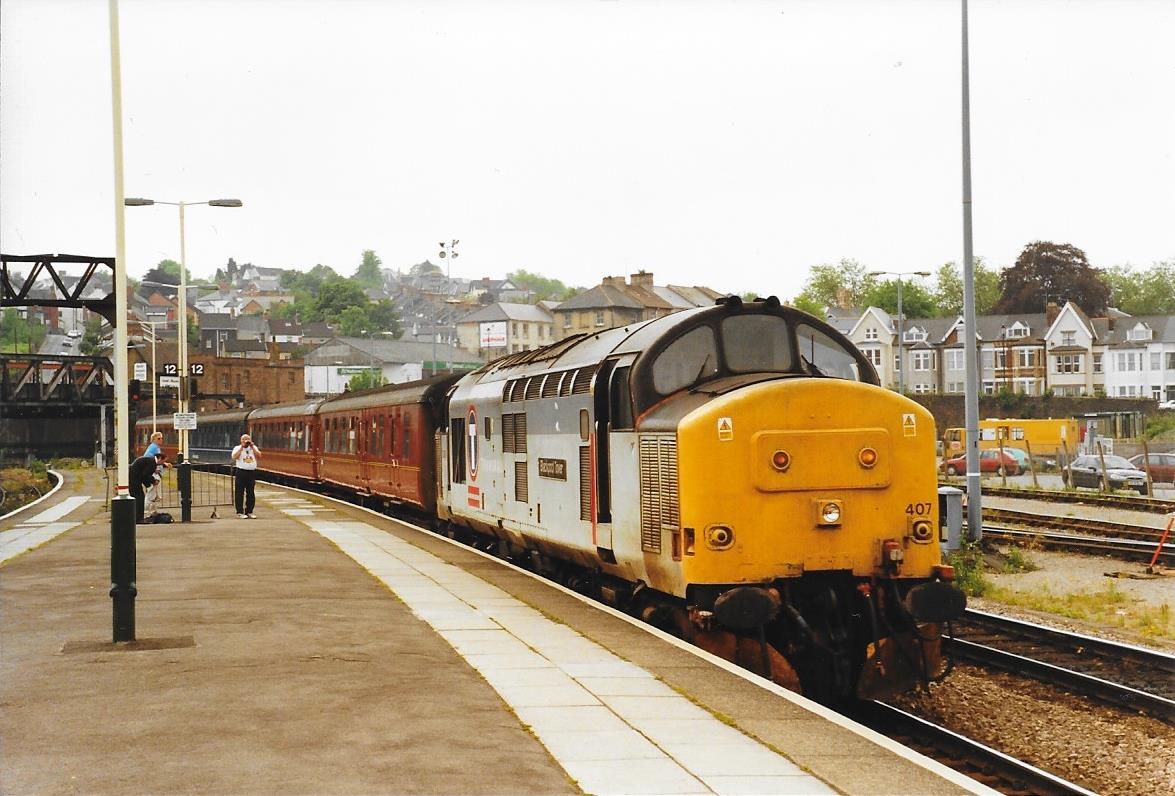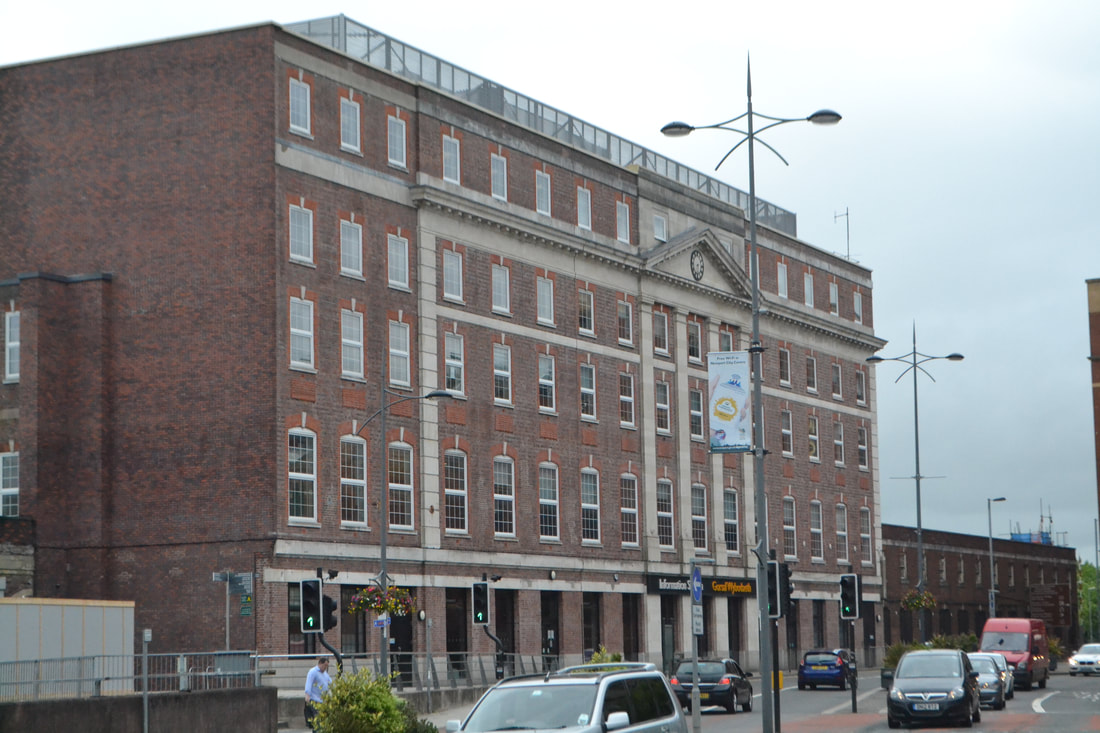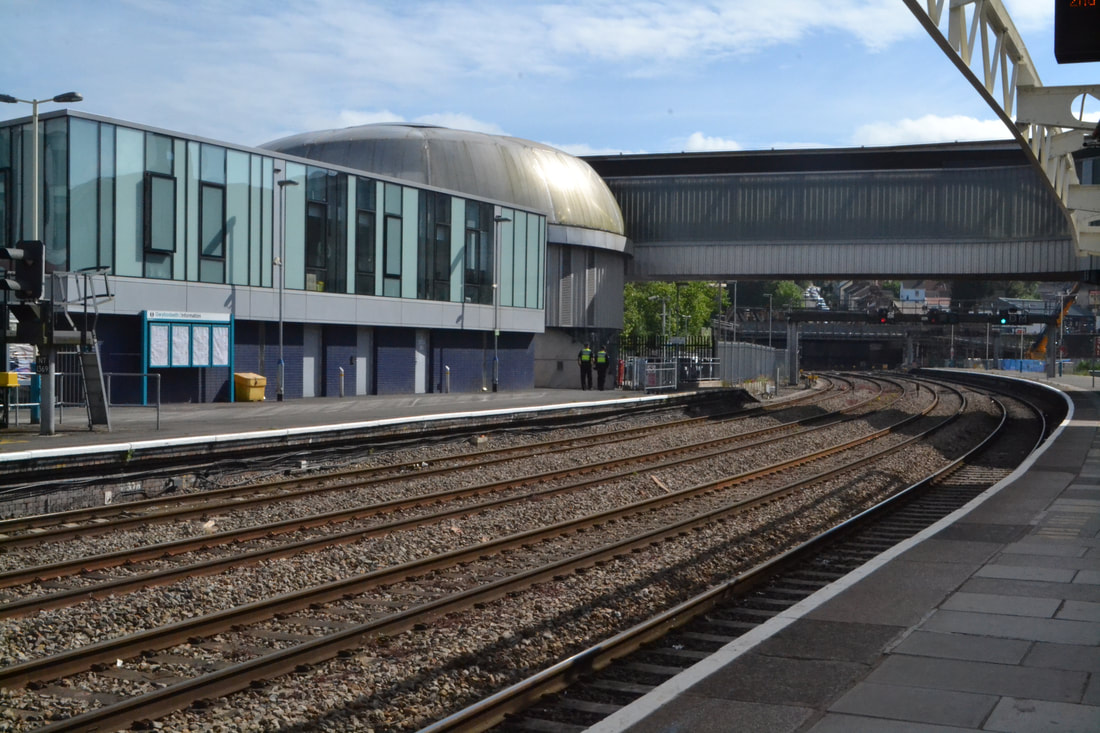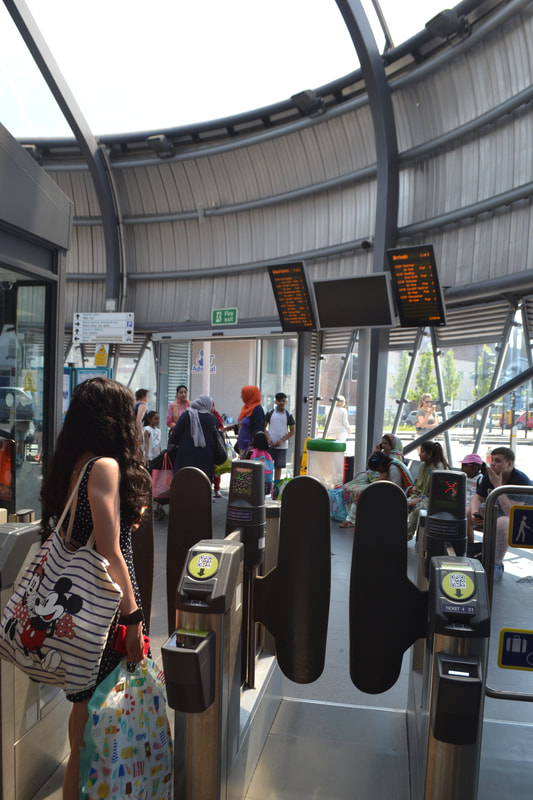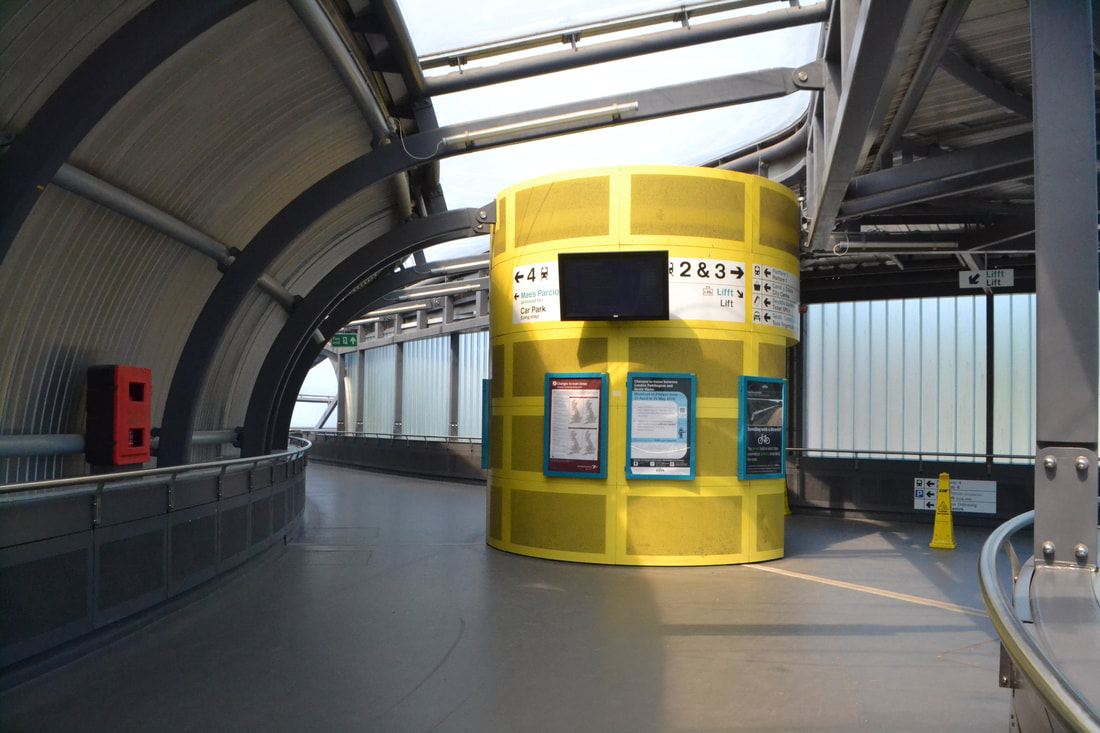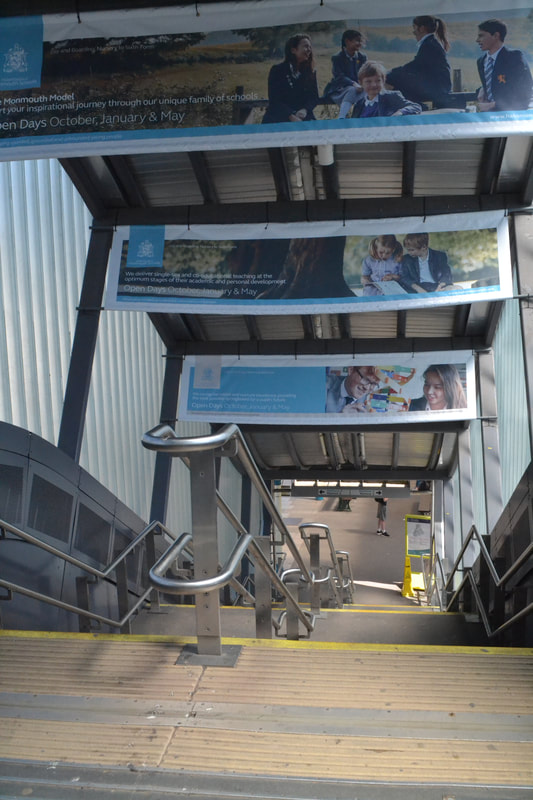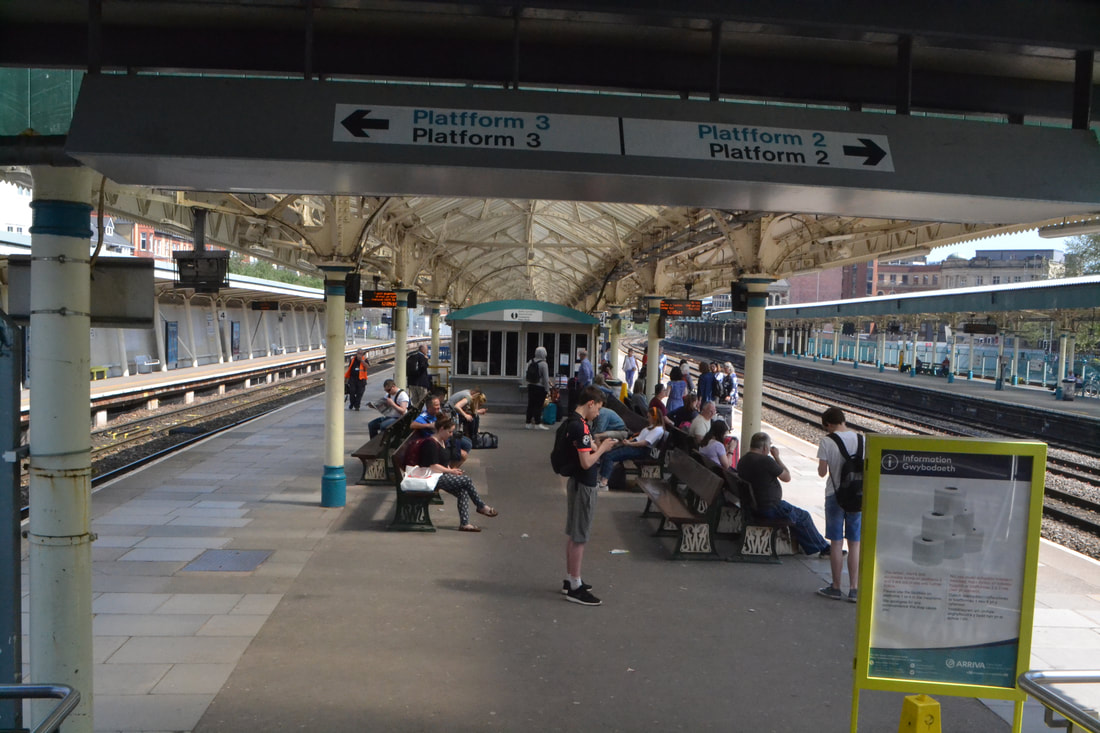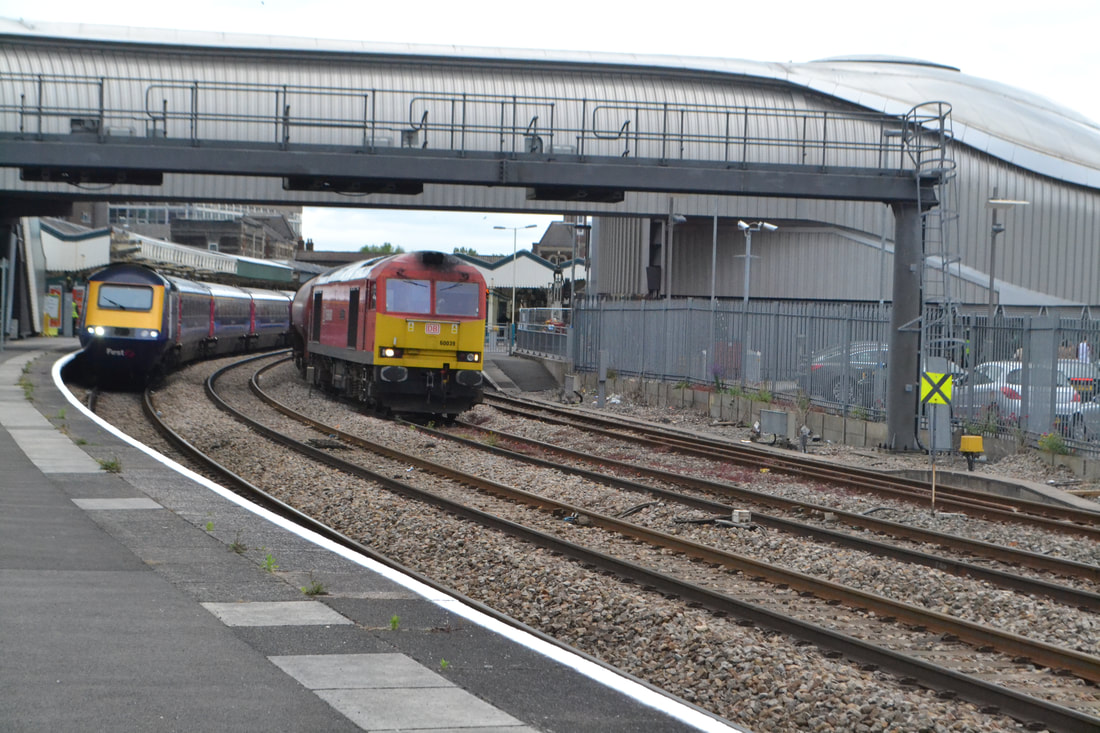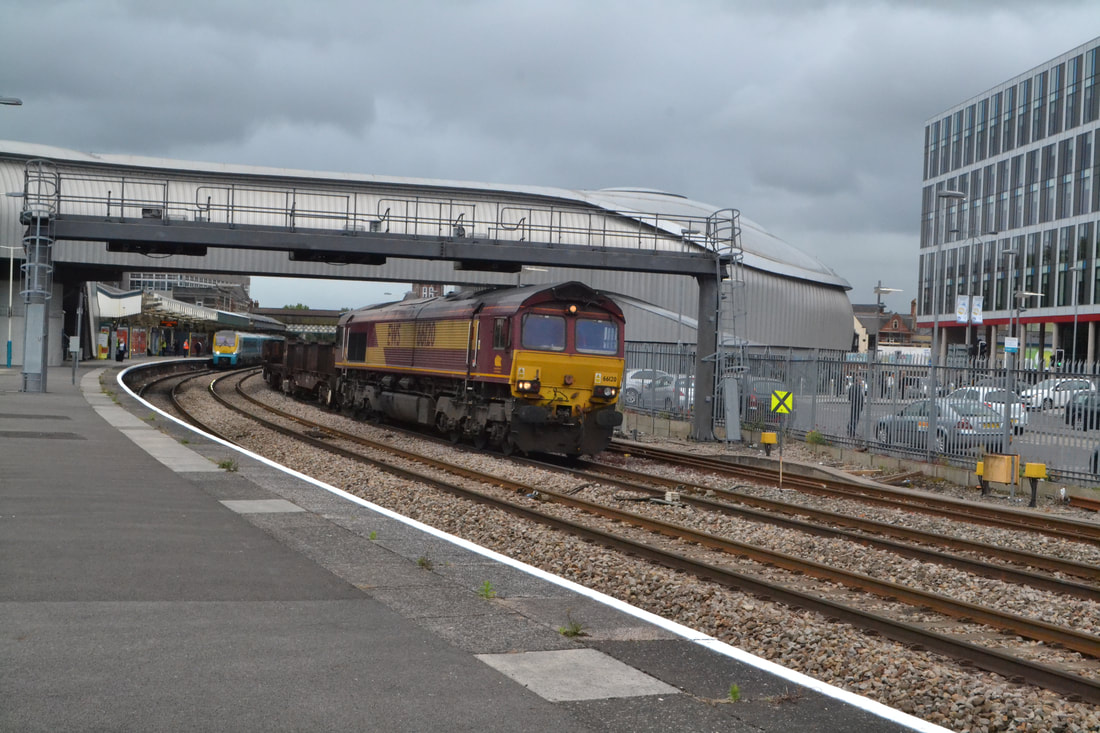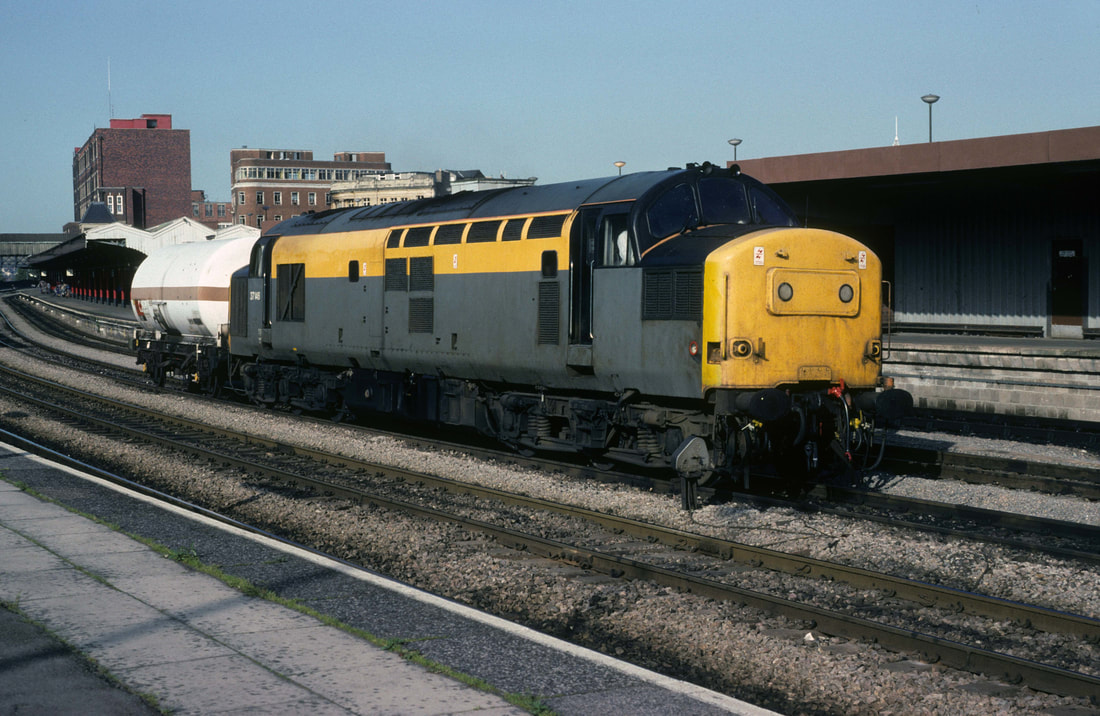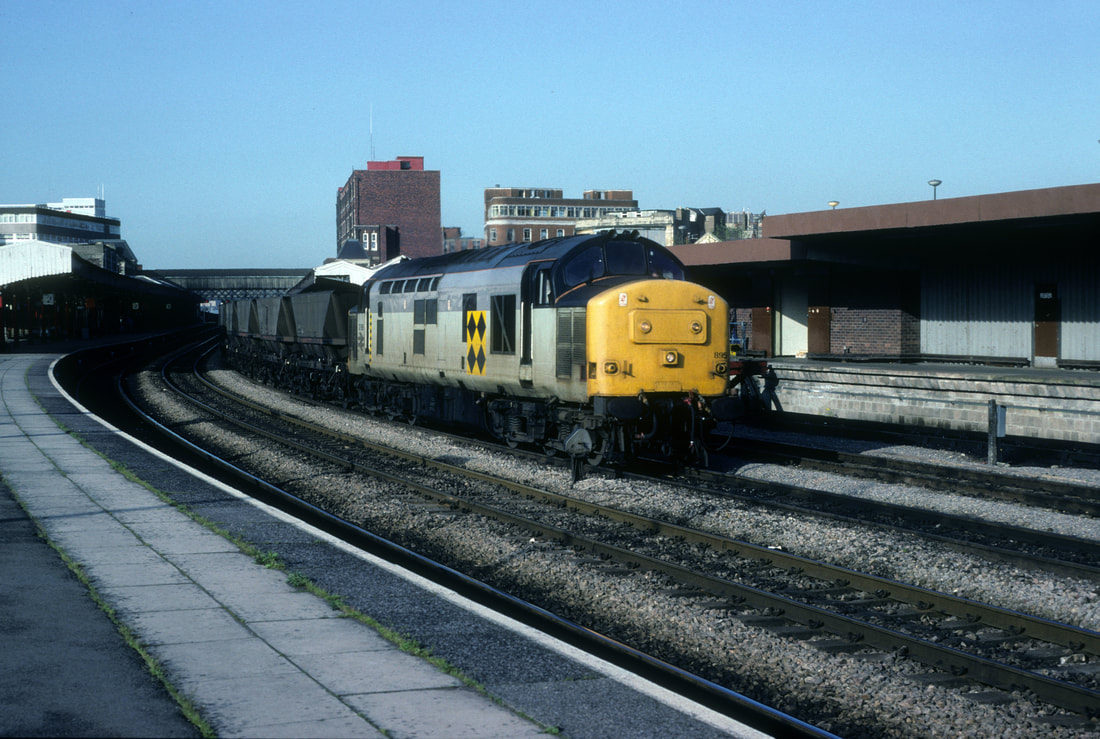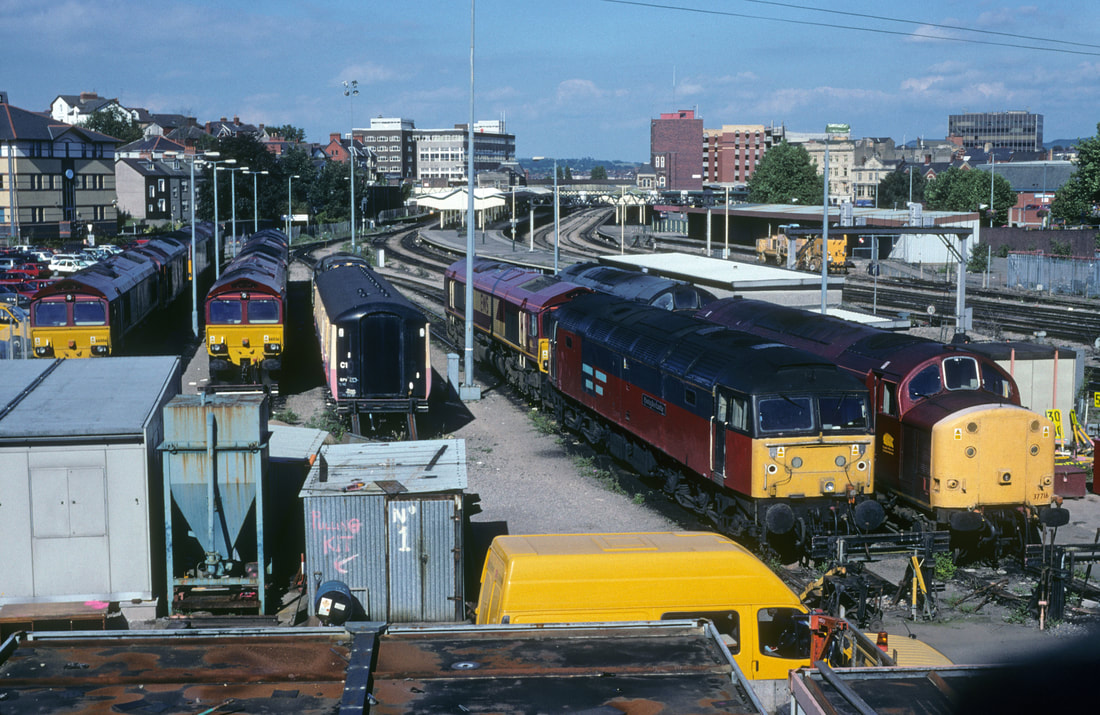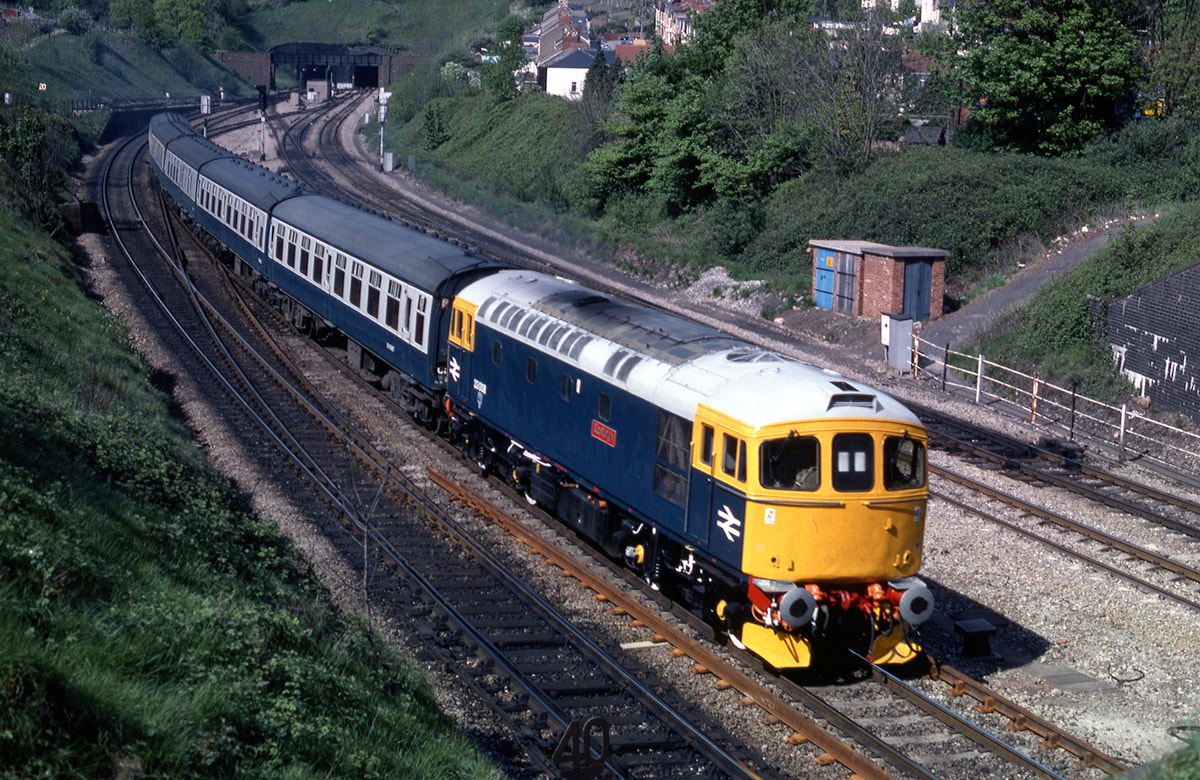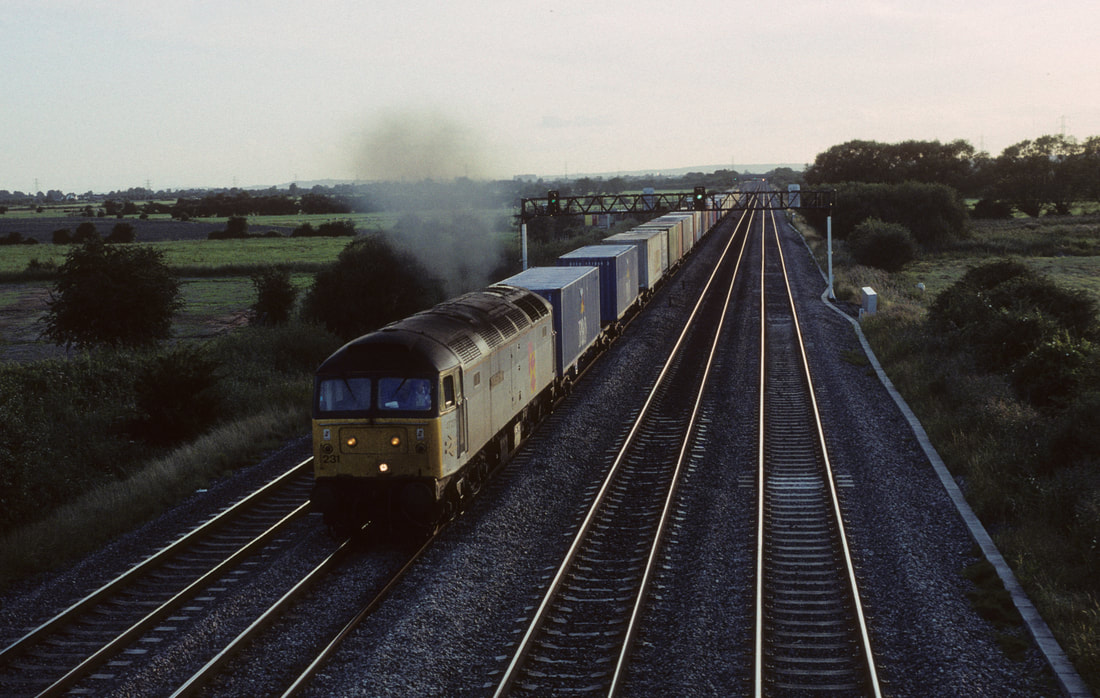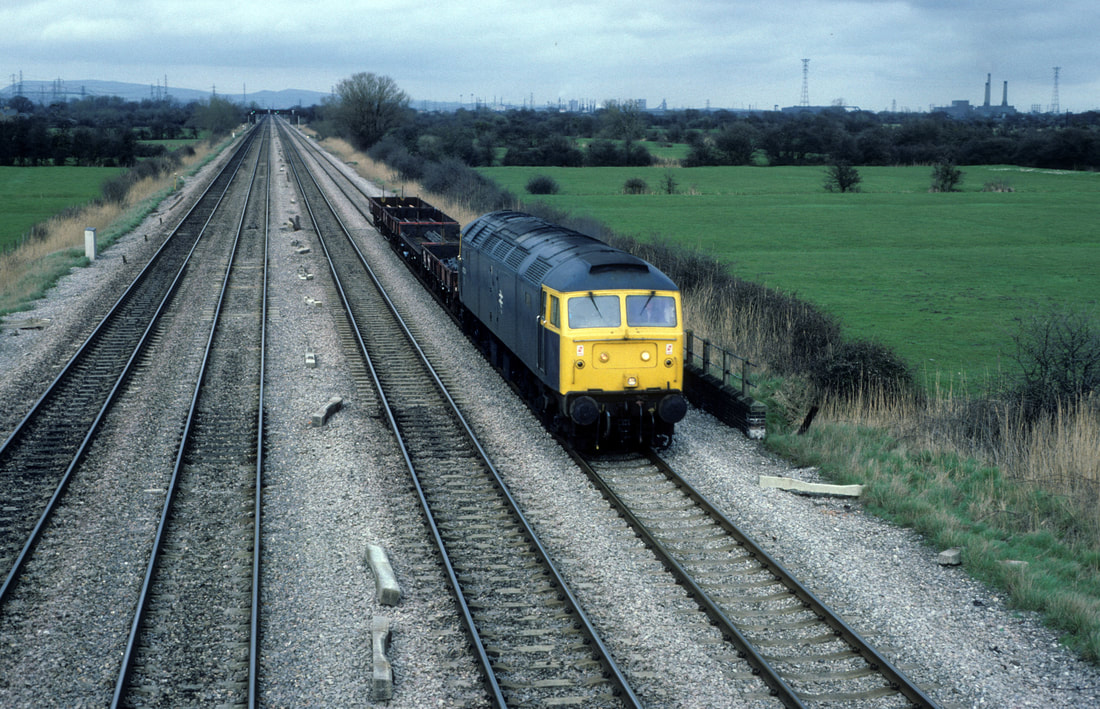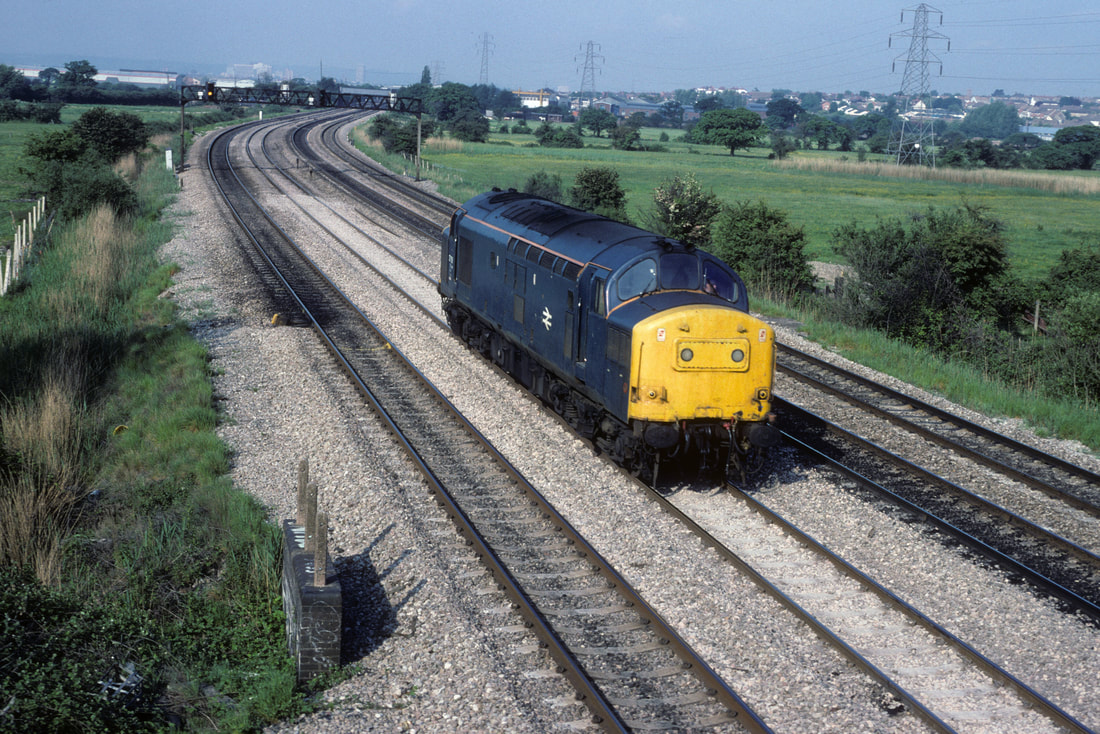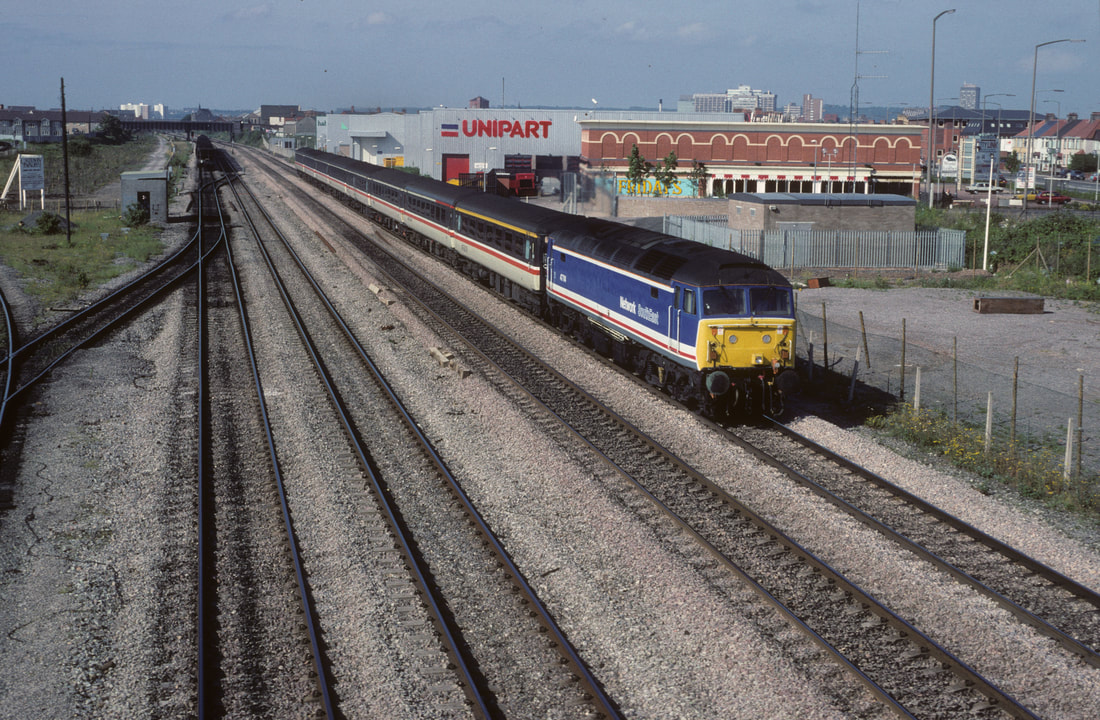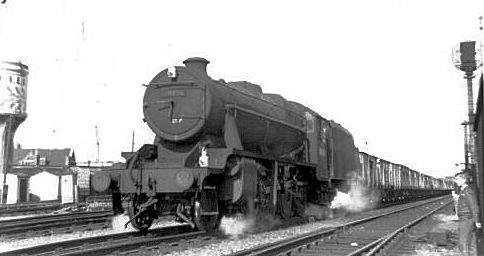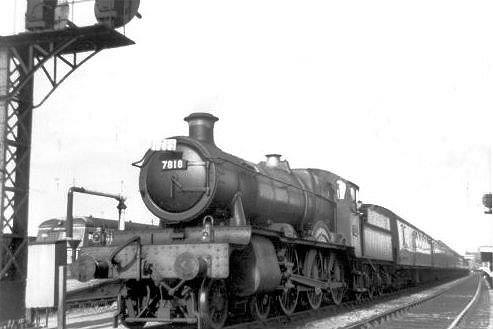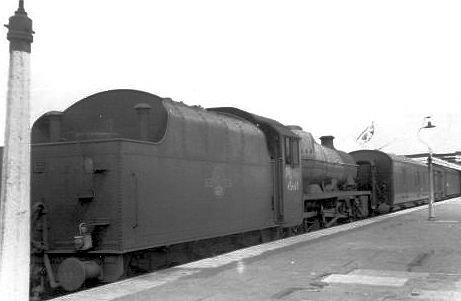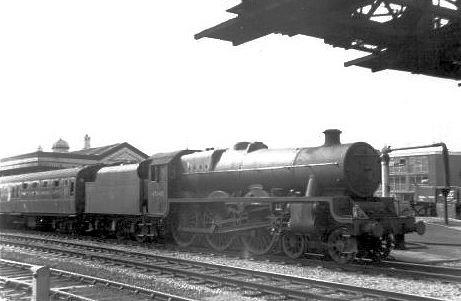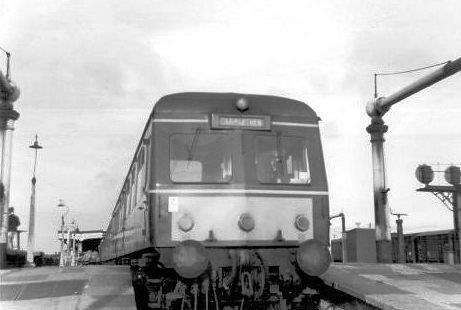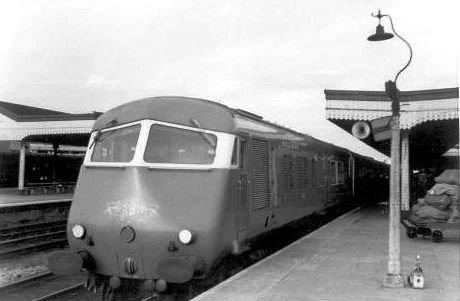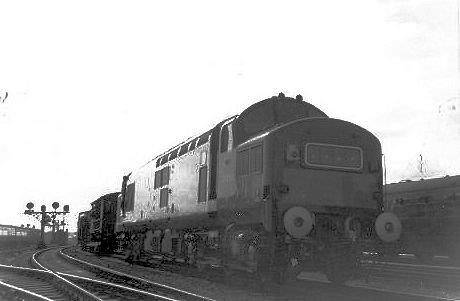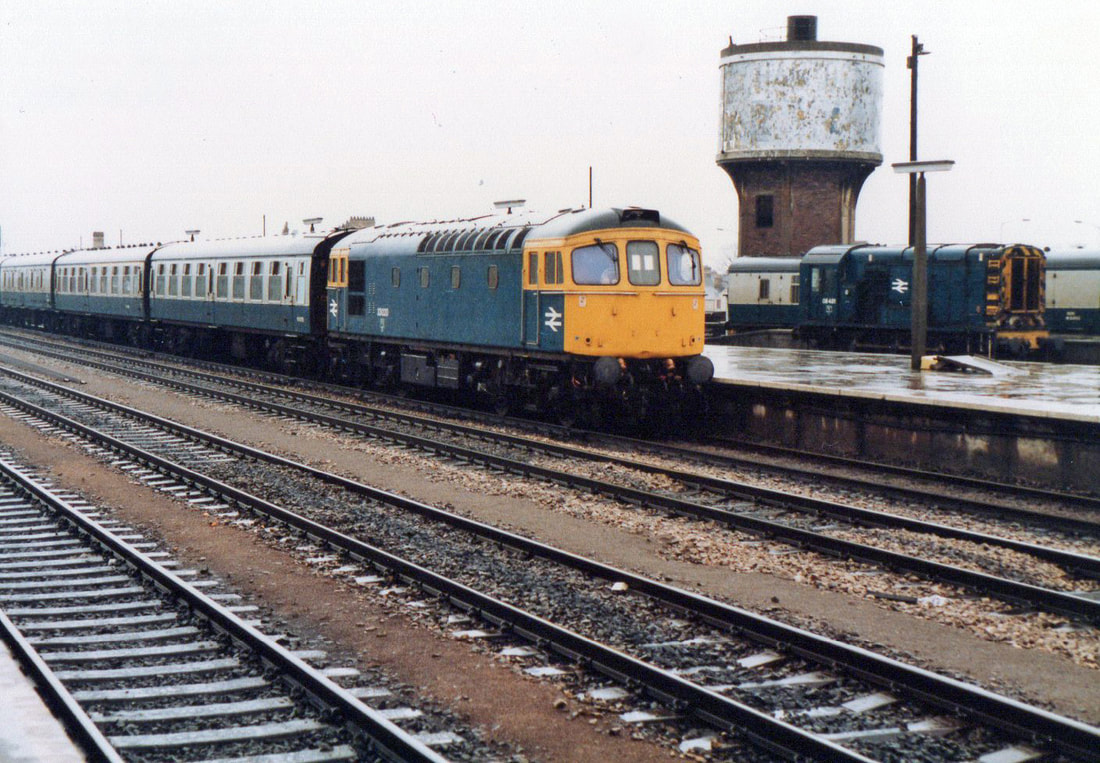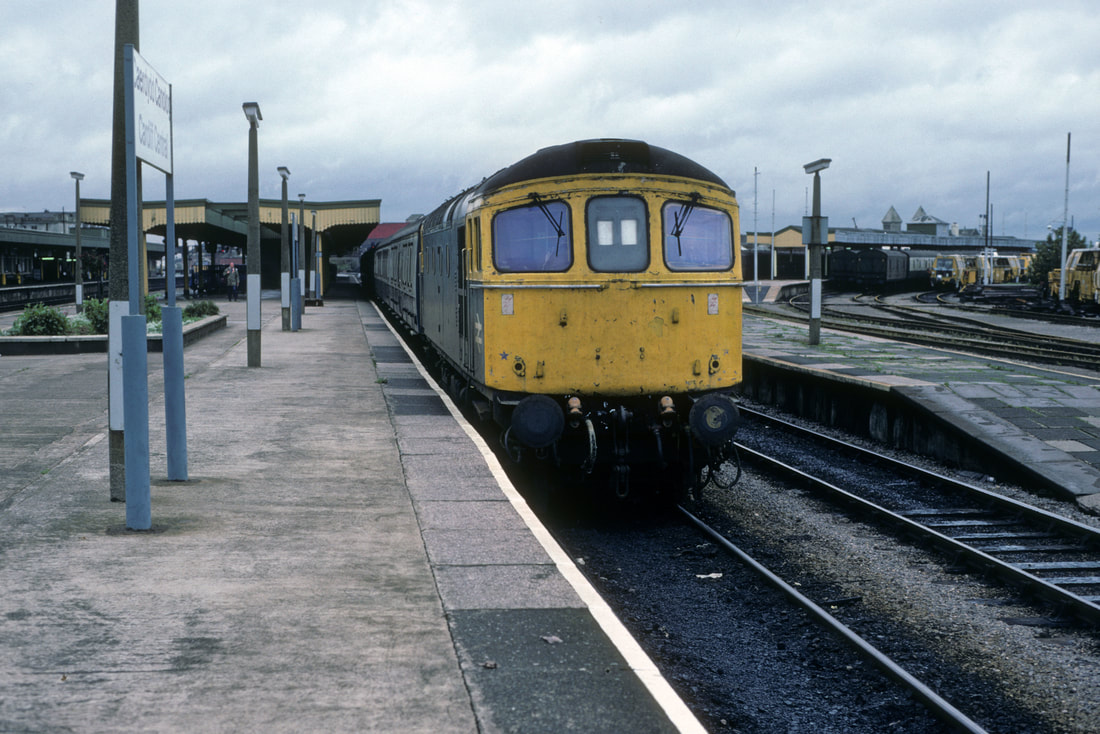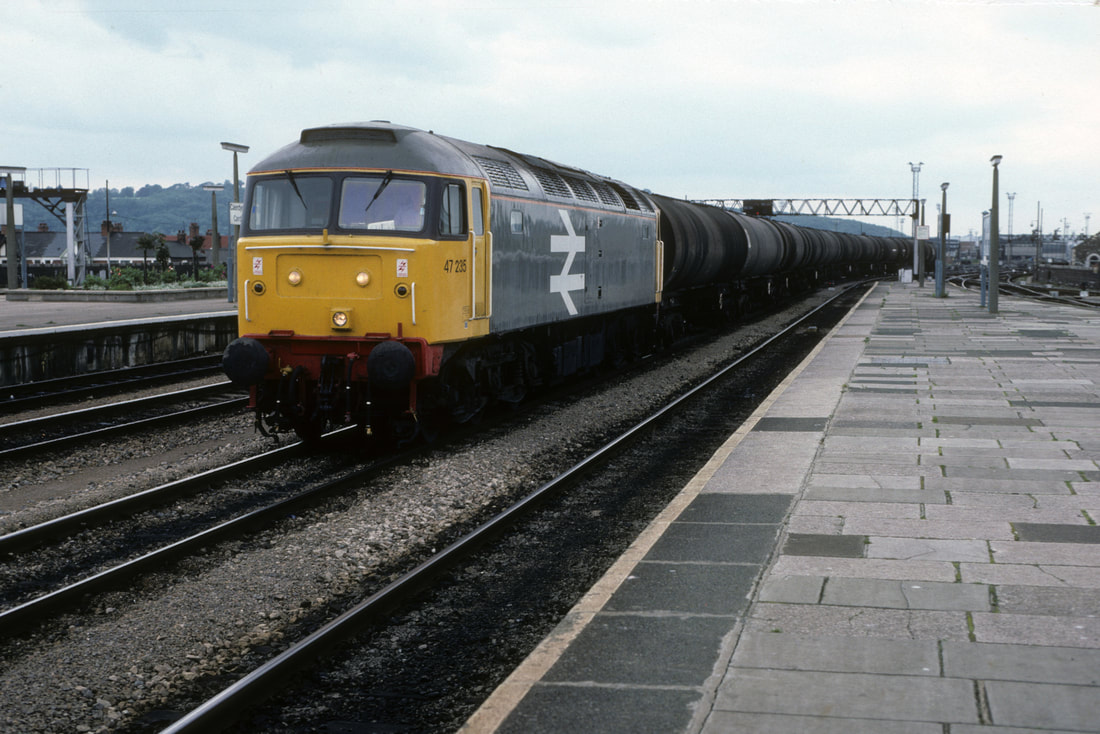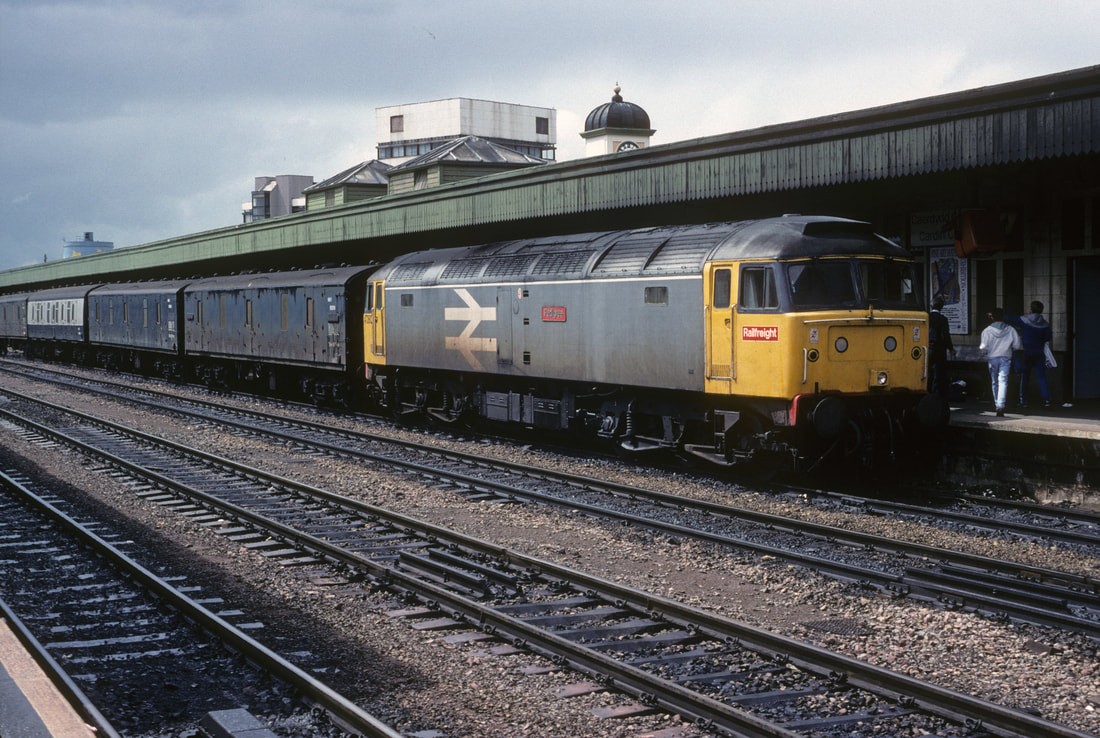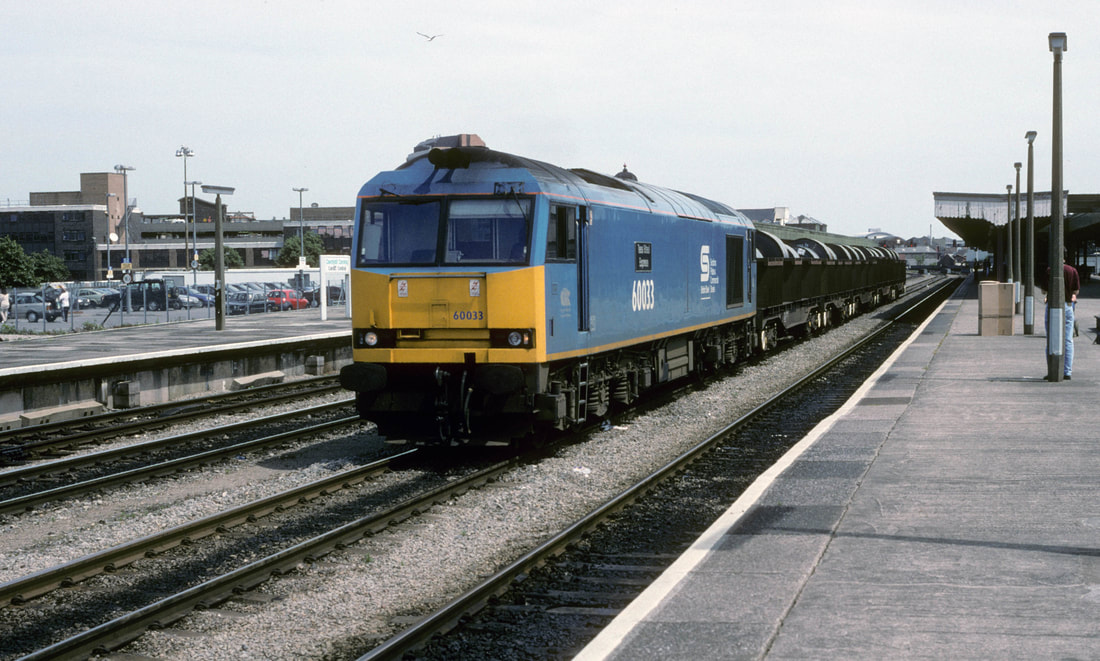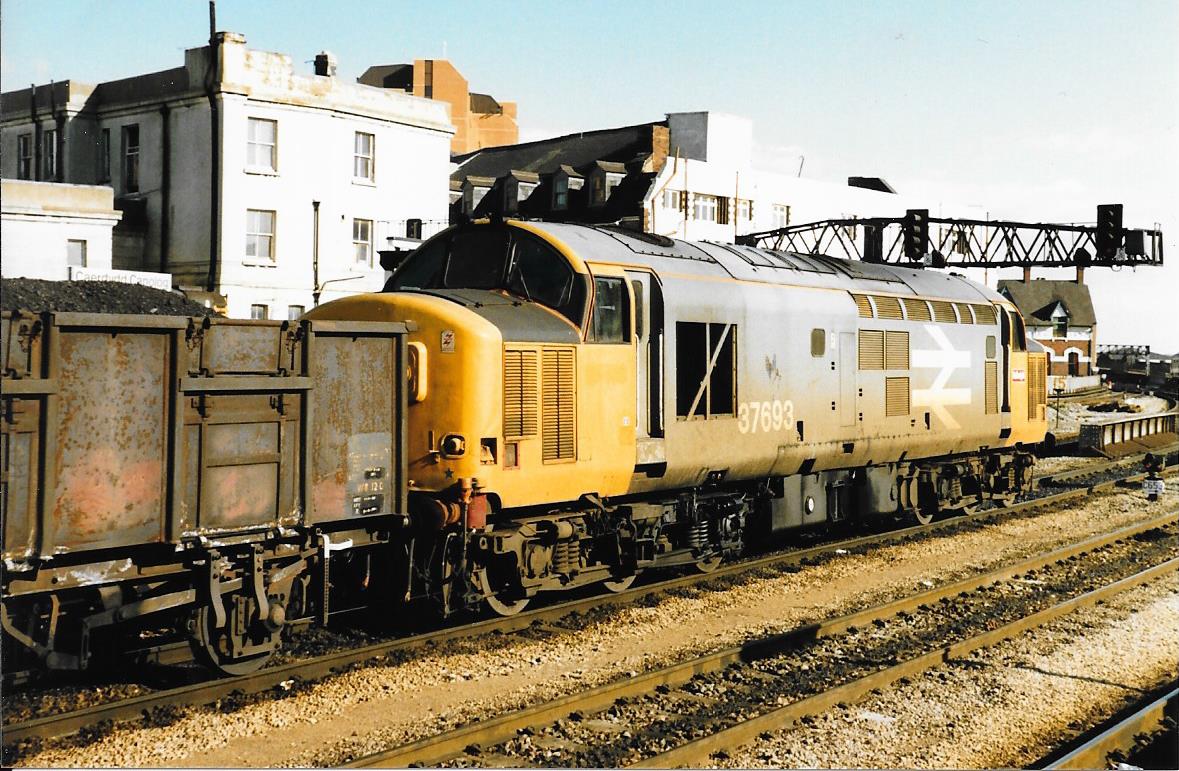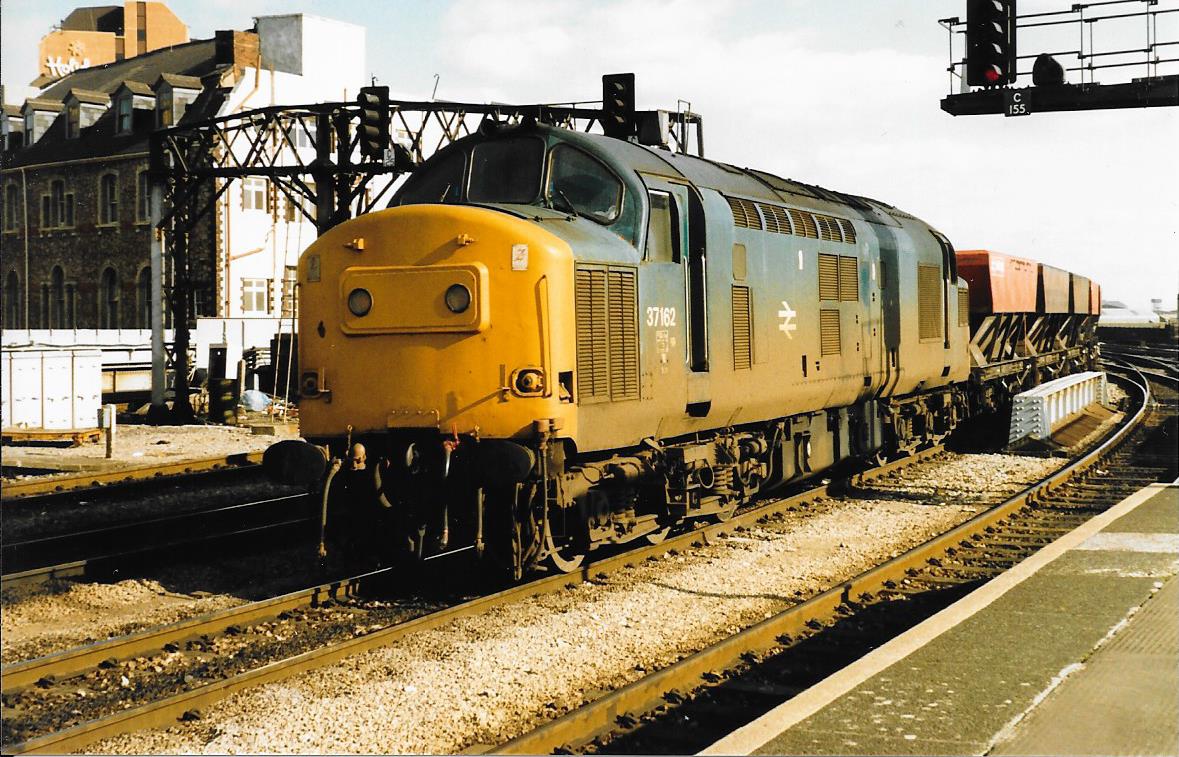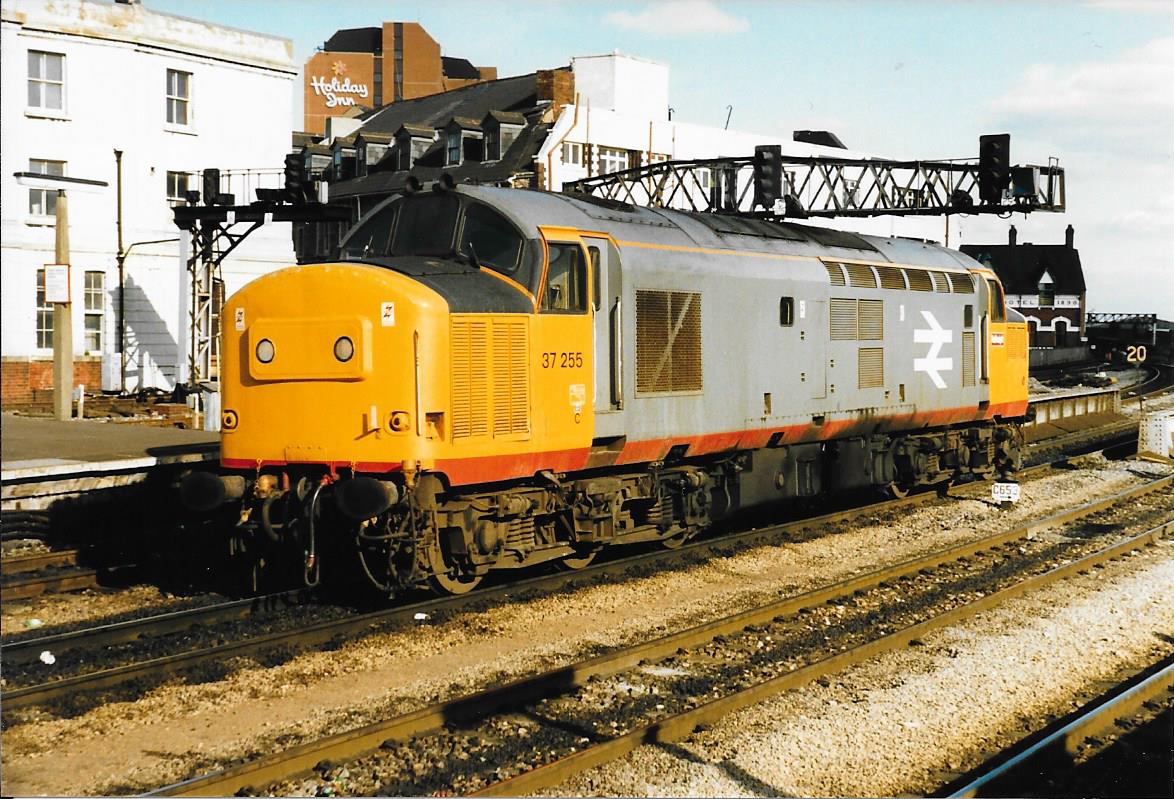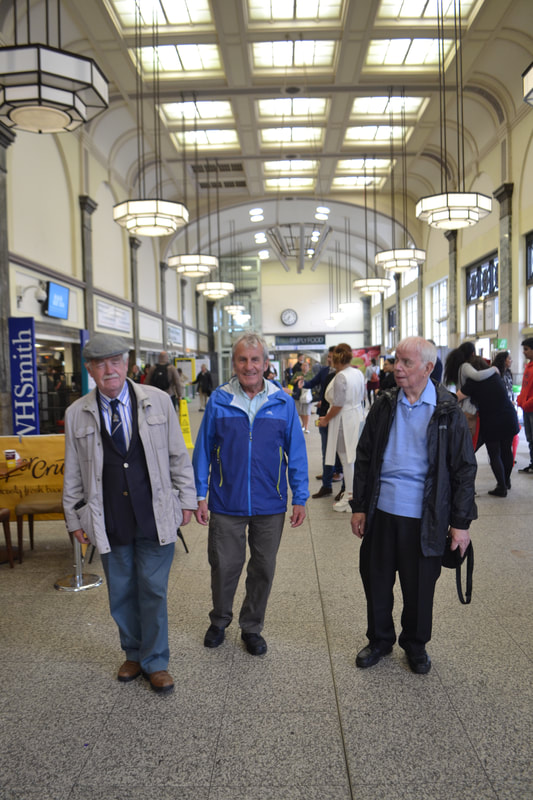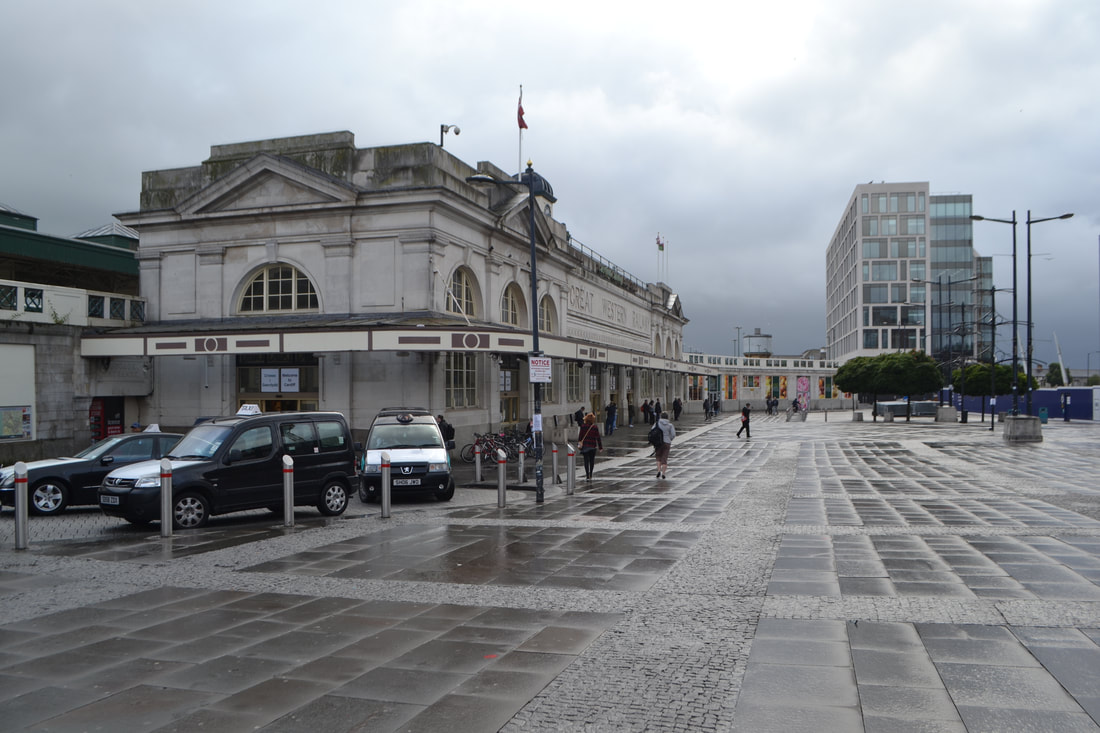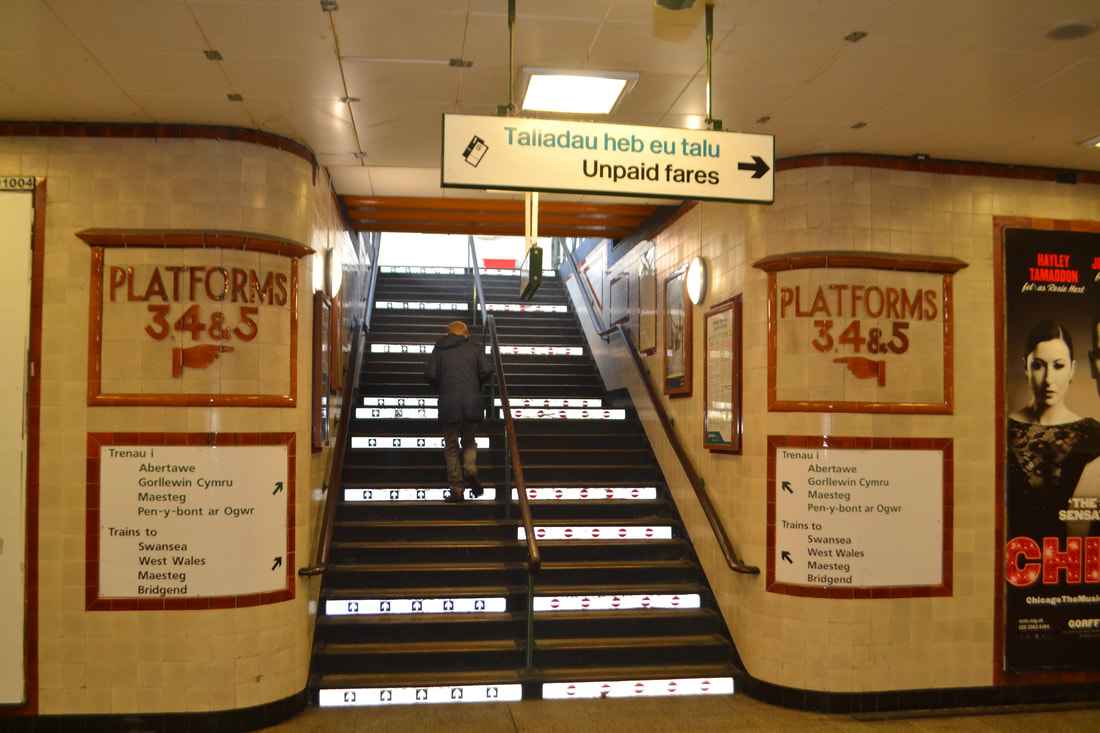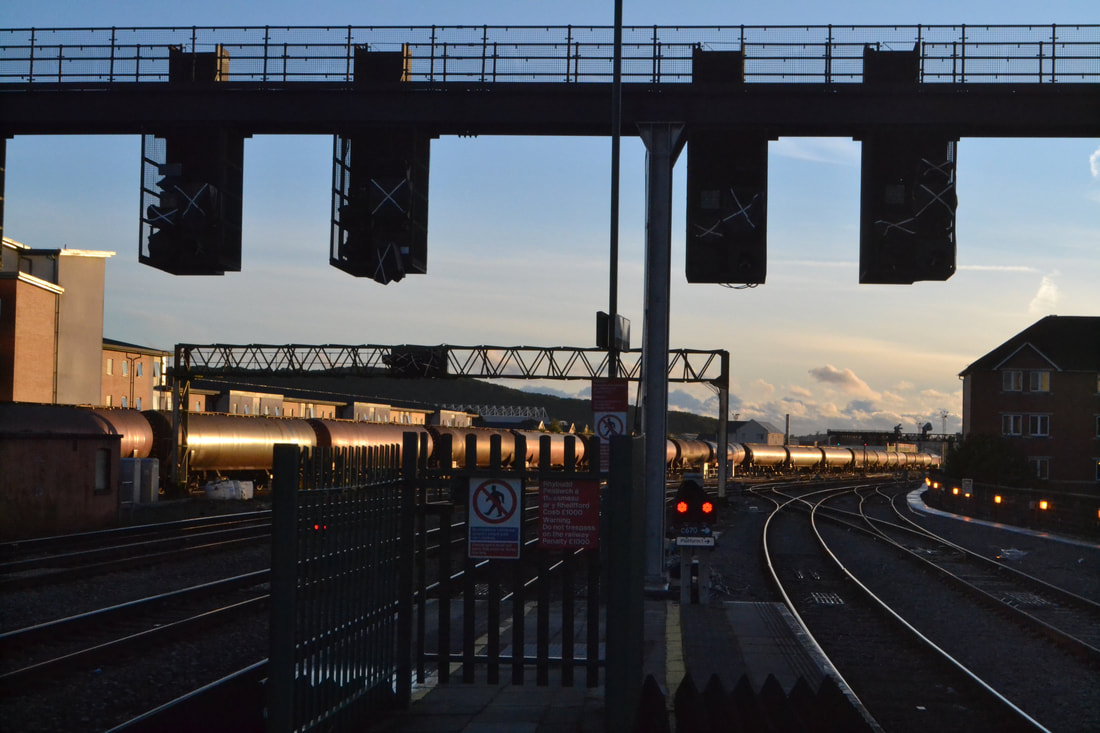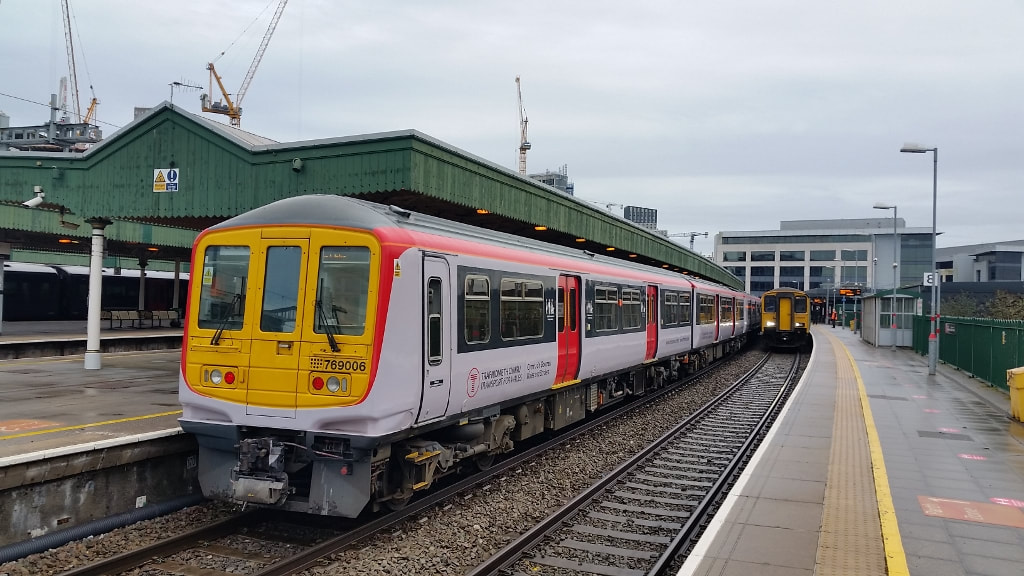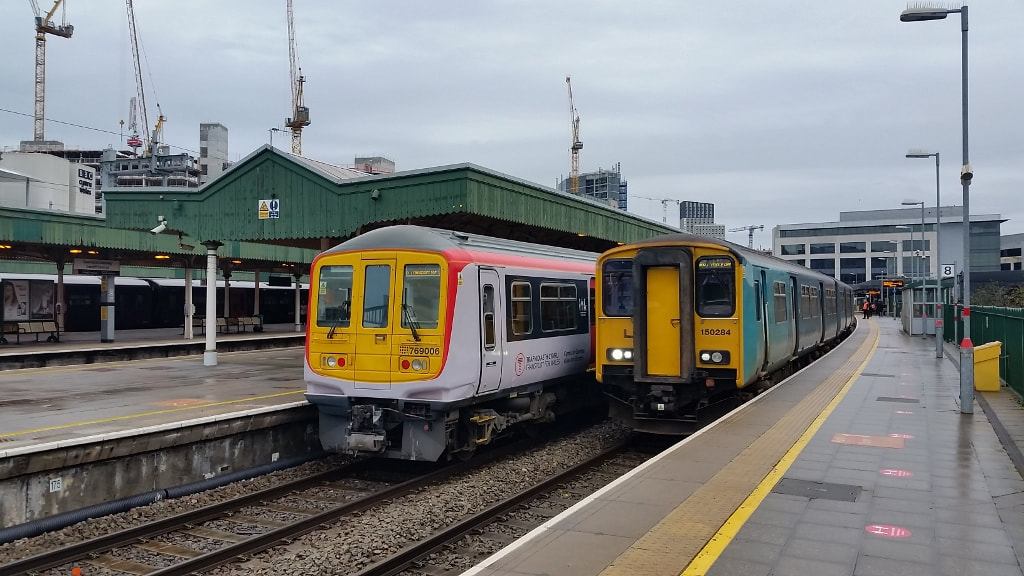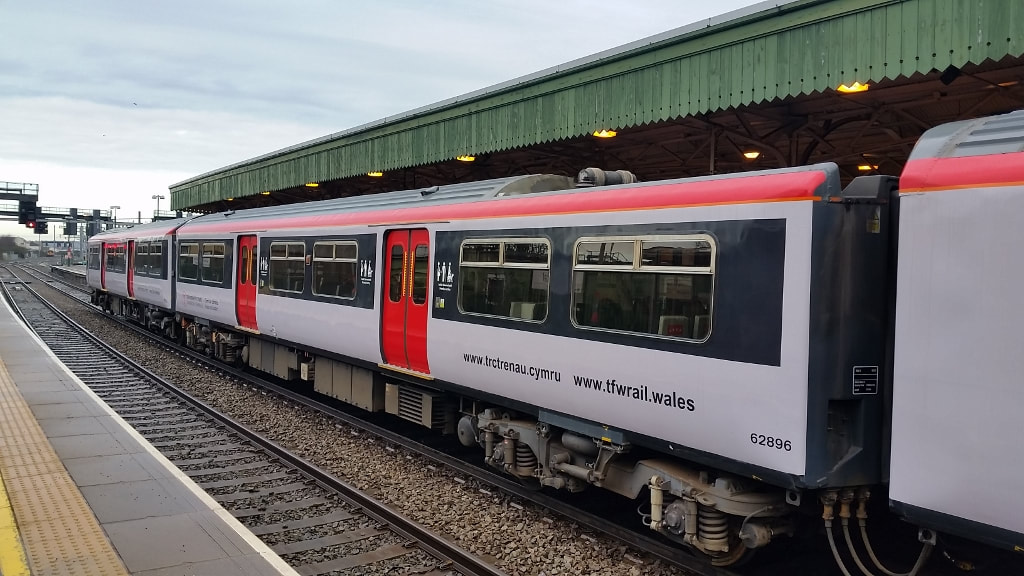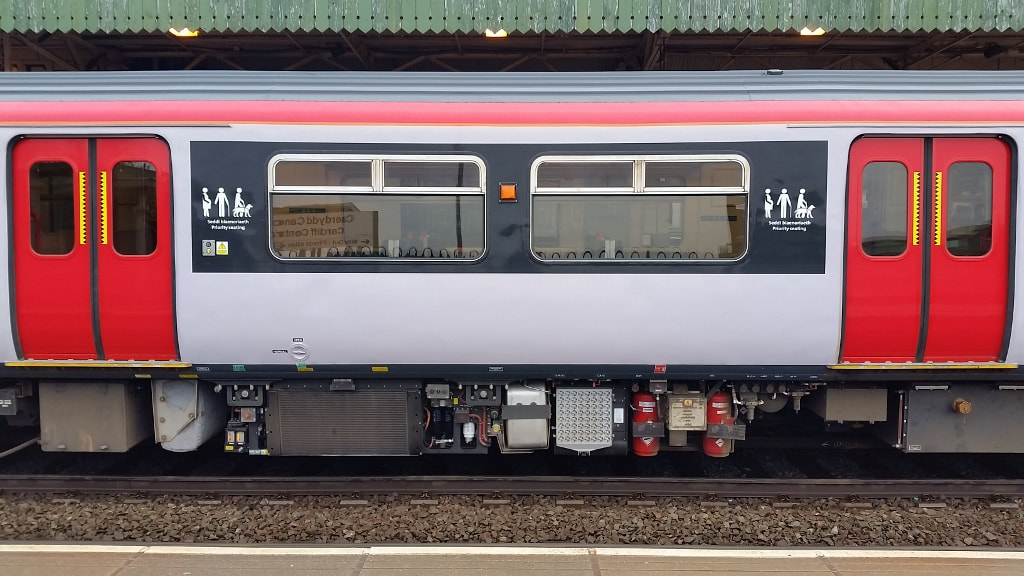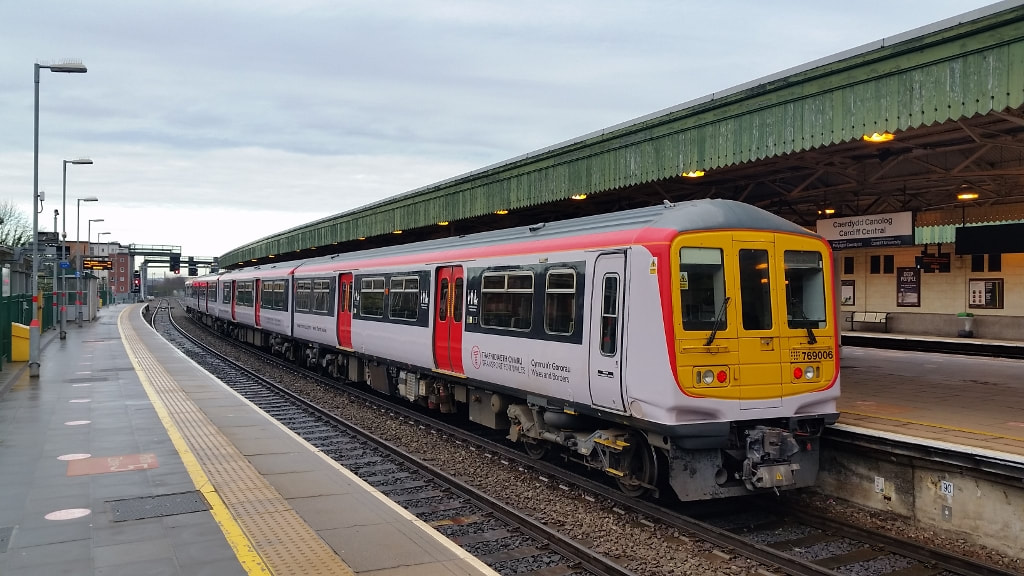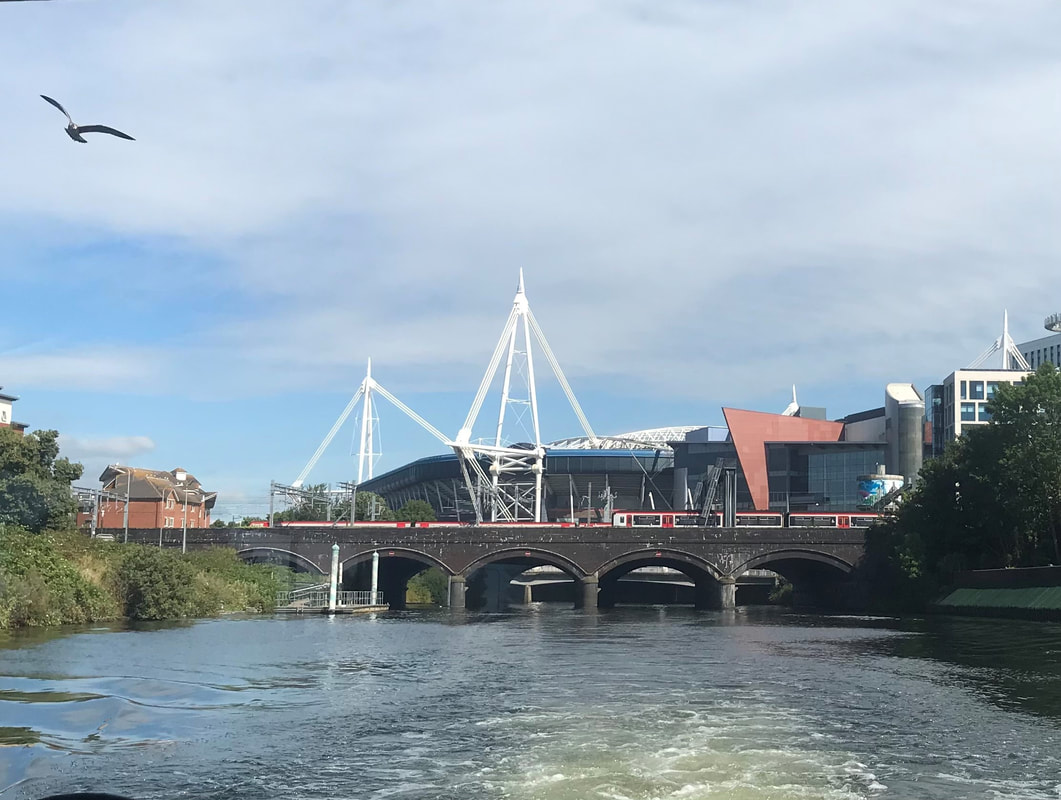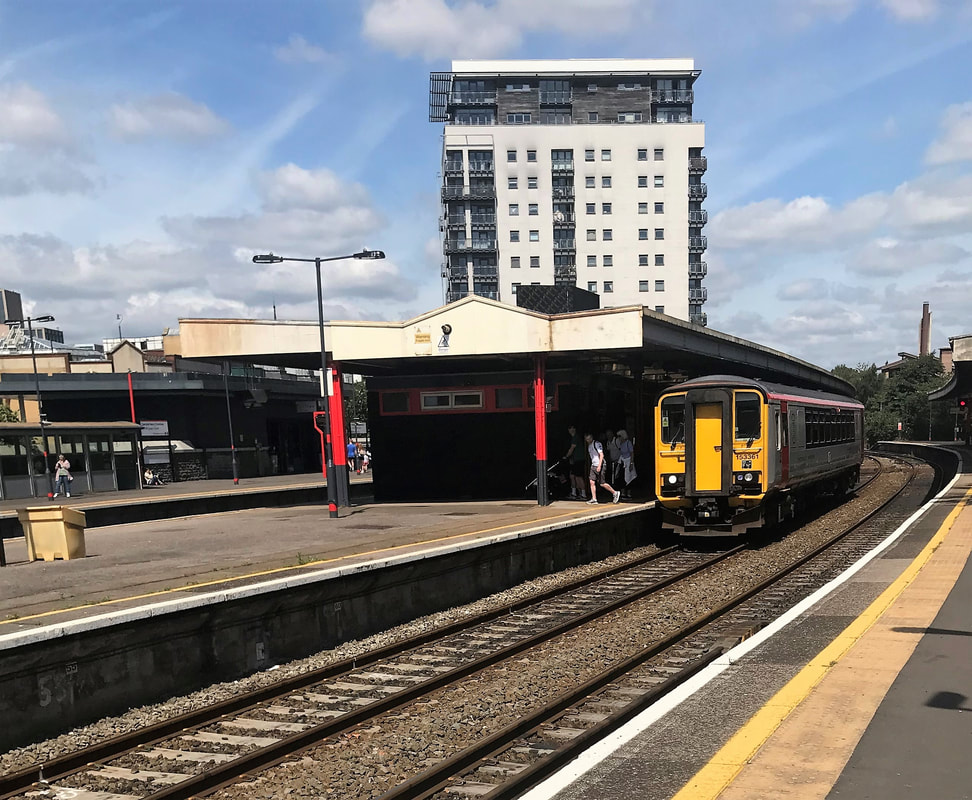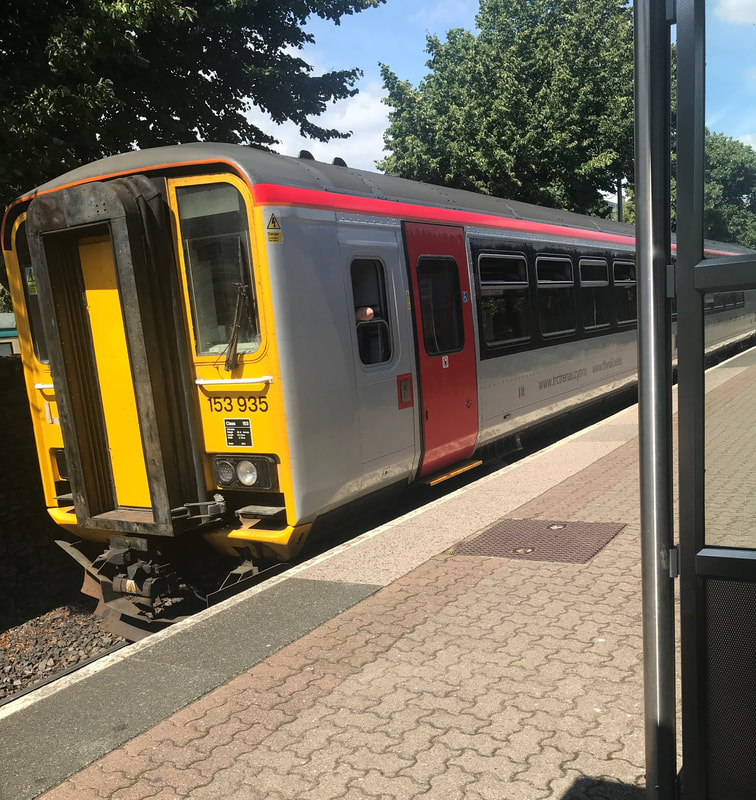Bristol to Cardiff
We are most grateful to Guy Vincent for providing us with a guide to the works involved with the re-quadrupling of the track between Dr. Days Junction and Filton Junction.
This was received on Friday, 11 May 2018, 16:13, guy vincent <[email protected]> wrote:
Afternoon Keith,
Thanks for the above, all read and digested with much interest as always. I looked at Roger's shots on the features section so I shan't need you to send them separately thank you. The 'Filton Bank Project', including preliminary ground investigation works, has now been going on for at least six years but should be more or less complete by spring 2019. The best information on the project I have come across is via Network Rail's own site, type in 'Filton four track' to any search engine for access to Network Rail's site then the 'City of Bristol' and 'South Gloucestershire' sections. Very interesting reading indeed.
I have taken many photos of the work over the past few years and will try to sort a few out and send them to you.
I'll now try answering your questions as far as I am able to, based on what I have read elsewhere:
1) Lawrence Hill will remain with only it's two current platforms, as will Stapleton Road. Both stations will be served as present by Bristol-South Wales & Parkway/Gloucester/Severn Beach trains and the 'down' platforms will be fenced off from the new 'fast' lines.
2) Current lines will be for Severn Beach/South Wales trains and local stopping services towards Bristol Parkway. The new faster lines will be used by Bristol-Padd'n via Parkway and Cross Country services plus, presumably, some freight.
3) A new platform (4) is currently being constructed at Filton Abbey Wood on the far left of the site and will serve South Wales bound trains.
4) Pointwork at Filton will presumably be by ladder connections for higher speeds. I am sure that trains from either route will, in practice, use the new or old lines depending on operating circumstances /requirements at any given time.
5) Dr Day's Junction will be adjusted to allow the new 'fast' lines to be installed. The junction was completely renewed/relayed 5 or 6 years ago but much of that pointwork will have to be replaced!
6) Other than crossovers at Dr Days and Filton, most of which already exist and might just need modifications, I don't think there are any further crossings planned.
New stations have been mentioned, to be built close to Horfield and Ashley Hill but no signs of construction yet.
The total cost of putting back what was removed in 1984 is around £33,000,000. Two major landslides have had to be corrected and the embankments totally rebuilt, several bridges have had to be repaired and made good, and Stapleton Road Viaduct has been removed, partially infilled and a new concrete bridge is under construction.
Do look at the NR sites regarding Filton and the Bristol area in general. You will learn much, as I have done and I suggest putting links onto the CRS site for readers to follow.
With all good wishes
Guy Vincent, Many thanks Guy.
We hope to show you through this section the updates to the Bristol to Cardiff section.
This was received on Friday, 11 May 2018, 16:13, guy vincent <[email protected]> wrote:
Afternoon Keith,
Thanks for the above, all read and digested with much interest as always. I looked at Roger's shots on the features section so I shan't need you to send them separately thank you. The 'Filton Bank Project', including preliminary ground investigation works, has now been going on for at least six years but should be more or less complete by spring 2019. The best information on the project I have come across is via Network Rail's own site, type in 'Filton four track' to any search engine for access to Network Rail's site then the 'City of Bristol' and 'South Gloucestershire' sections. Very interesting reading indeed.
I have taken many photos of the work over the past few years and will try to sort a few out and send them to you.
I'll now try answering your questions as far as I am able to, based on what I have read elsewhere:
1) Lawrence Hill will remain with only it's two current platforms, as will Stapleton Road. Both stations will be served as present by Bristol-South Wales & Parkway/Gloucester/Severn Beach trains and the 'down' platforms will be fenced off from the new 'fast' lines.
2) Current lines will be for Severn Beach/South Wales trains and local stopping services towards Bristol Parkway. The new faster lines will be used by Bristol-Padd'n via Parkway and Cross Country services plus, presumably, some freight.
3) A new platform (4) is currently being constructed at Filton Abbey Wood on the far left of the site and will serve South Wales bound trains.
4) Pointwork at Filton will presumably be by ladder connections for higher speeds. I am sure that trains from either route will, in practice, use the new or old lines depending on operating circumstances /requirements at any given time.
5) Dr Day's Junction will be adjusted to allow the new 'fast' lines to be installed. The junction was completely renewed/relayed 5 or 6 years ago but much of that pointwork will have to be replaced!
6) Other than crossovers at Dr Days and Filton, most of which already exist and might just need modifications, I don't think there are any further crossings planned.
New stations have been mentioned, to be built close to Horfield and Ashley Hill but no signs of construction yet.
The total cost of putting back what was removed in 1984 is around £33,000,000. Two major landslides have had to be corrected and the embankments totally rebuilt, several bridges have had to be repaired and made good, and Stapleton Road Viaduct has been removed, partially infilled and a new concrete bridge is under construction.
Do look at the NR sites regarding Filton and the Bristol area in general. You will learn much, as I have done and I suggest putting links onto the CRS site for readers to follow.
With all good wishes
Guy Vincent, Many thanks Guy.
We hope to show you through this section the updates to the Bristol to Cardiff section.
Dr. Days Junction
Lawrence Hill One Mile from Bristol Temple Meads.
Stapleton Road One and a half miles from Bristol Temple Meads.
Narroways Hill Junction.
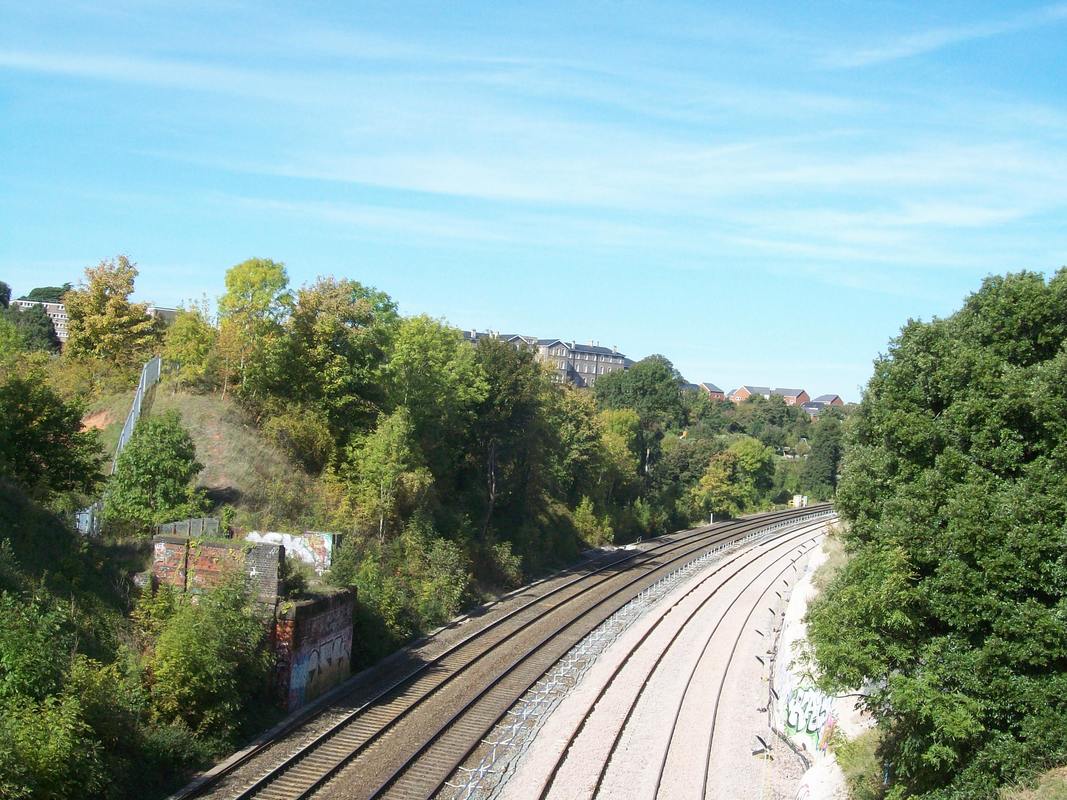
From the same footbridge but facing Filton Junction we see the new track formation to the left. Also to be seen is one of the abutments which supported a bridge carrying the Midland Railway extension line from Mangotsfield to Avonmouth Docks - this joined the Avonmouth line at Ashley Hill Junction.. 29th September 2018. Copyright Colin Burges.
Ashley Hill Two and a half miles from Bristol Temple Meads. Closed 1964
Approaching the site of Horfield station from the SW.
Ashley Hill to be re-opened as Ashley Down - Guy Vincent
The attached photos taken from the rear of a 'Turbo' show the remains of the former GWR station at Ashley Hill, Bristol. Located just north of Narroways Hill Junction at 2 miles 42 chains from Bristol Temple Meads the station originally opened on 13th August 1864 and closed just over 100 years later on 23rd November 1964. Only the former Cardiff-bound platform remains but the station is now due to be rebuilt and re-opened (as Ashley Down) as part of the Bristol Metro project which includes reinstating passenger services over the freight-only Filton Jcn-Avonmouth (via Henbury) route. Due to the location the station will be accessible only by foot or cycle with no car parking facilities. Lifts and a footbridge are to be included. See Wikipedia or the MetroWest website for further details of this scheme.
Regards, Guy Vincent
Regards, Guy Vincent
Horfield Three and three quarter miles from Bristol Temple Meads
The station was opened in 1927 by the Great Western Railway. The station passed to the Western Region of British Railways on nationalisation in 1948. It was closed by the British Railways Board in 1964.
The station was opened in 1927 by the Great Western Railway. The station passed to the Western Region of British Railways on nationalisation in 1948. It was closed by the British Railways Board in 1964.
Filton Abbey Wood
(Filton Abbey Wood railway station serves the town off Filton in South Gloucestershire, inside the Bristol conurbation. It is 4.4 miles from Bristol Temple Meads. Its three letter station code is FIT. There are three platforms oon to be four) but minimal facilities. The station is managed by the GWR the seventh company to be responsible for the station, and the third franchise since privatisation in 1997. They provide most train services at the station, with two trains per day operated by Cross Country. The general service level is eight trains per hour - two to South Wales, two to Bristol Parkway, two toward Weston super Mare and two toward Westbury.
Filton Abbey Wood is the third station on the site.
(Filton Abbey Wood railway station serves the town off Filton in South Gloucestershire, inside the Bristol conurbation. It is 4.4 miles from Bristol Temple Meads. Its three letter station code is FIT. There are three platforms oon to be four) but minimal facilities. The station is managed by the GWR the seventh company to be responsible for the station, and the third franchise since privatisation in 1997. They provide most train services at the station, with two trains per day operated by Cross Country. The general service level is eight trains per hour - two to South Wales, two to Bristol Parkway, two toward Weston super Mare and two toward Westbury.
Filton Abbey Wood is the third station on the site.
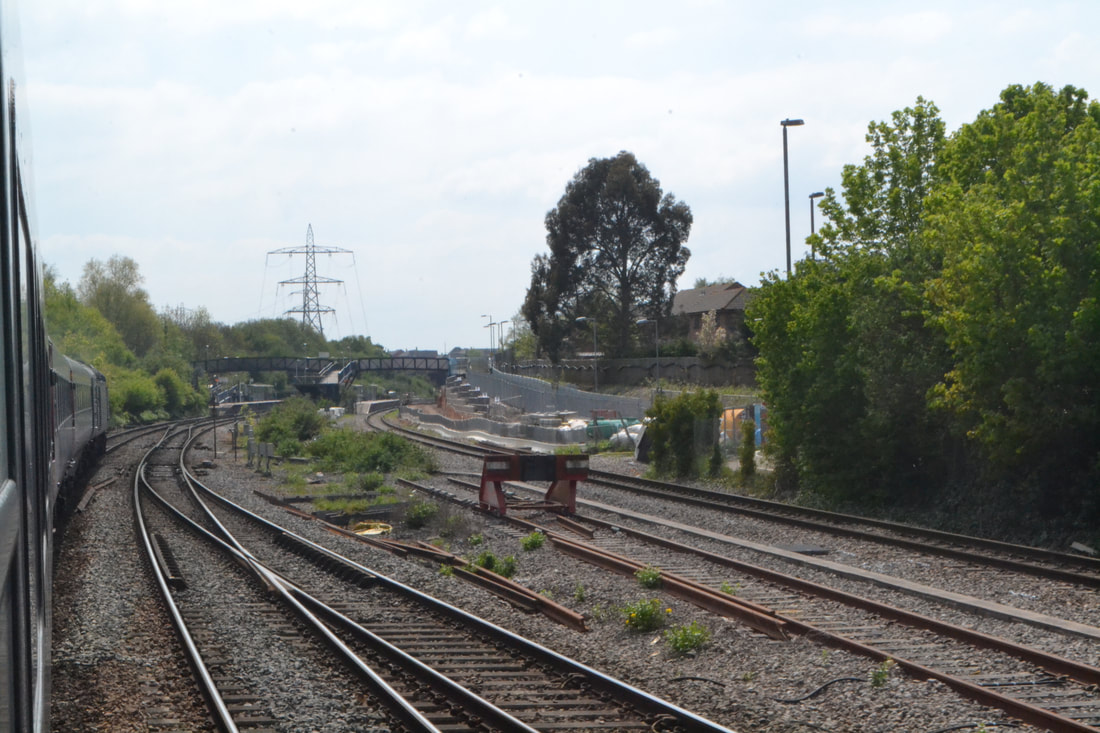
Filton Abbey Wood. Taken from a train heading for Bristol and Bath. We are looking south and this view it gives a good idea of the platform arrangement at Filton Abbey Wood station set as it is in a shallow cutting. The platforms numbering left to right 1, 2, 3, and the works for constructing 4 on the right hand side. 5th May 2018. Copyright Roger Winnen.
Monday 19th November 2018 saw the first trains calling at the additional platform, number 4, at Filton Abbey Wood.
Fortunately for us David Field was at the station to witness the first train to call there. David wrote :- This morning Monday 19th November 2018, saw the return of rail traffic through Filton Abbey Wood station after the 3 week closure to enable the four tracking of Filton Bank. It also heralded the first use by a passenger train of the newly constructed Platform 4 at Filton Abbey Wood. The honour was bestowed on GWR's 150248 on the 2U00 0552 Bristol Temple Meads to Cardiff Central service, which arrived around 9 minutes late. Many thanks to David for being at the station at this very early hour to see the very first train.
Filton Junction
Four and three quarter miles from Bristol Temple Meads.
The first station, Filton, was opened in 1863 by the Bristol and South Wales Union Railway. The station had a single platform, with a second added in 1886 to cope with traffic from the Severn Tunnel. The station was closed in 1903, replaced by a new station, Filton Junction, 0.15 miles further north, which was built at the junction with the newly constructed Badminton Line from Wotton Basset. The new station had four platforms, each with waiting rooms and large canopies. Services at Filton Junction declined in the 1960s with the station buildings and the Badminton line platforms demolished in 1976. The station was closed in September 1996.
Four and three quarter miles from Bristol Temple Meads.
The first station, Filton, was opened in 1863 by the Bristol and South Wales Union Railway. The station had a single platform, with a second added in 1886 to cope with traffic from the Severn Tunnel. The station was closed in 1903, replaced by a new station, Filton Junction, 0.15 miles further north, which was built at the junction with the newly constructed Badminton Line from Wotton Basset. The new station had four platforms, each with waiting rooms and large canopies. Services at Filton Junction declined in the 1960s with the station buildings and the Badminton line platforms demolished in 1976. The station was closed in September 1996.
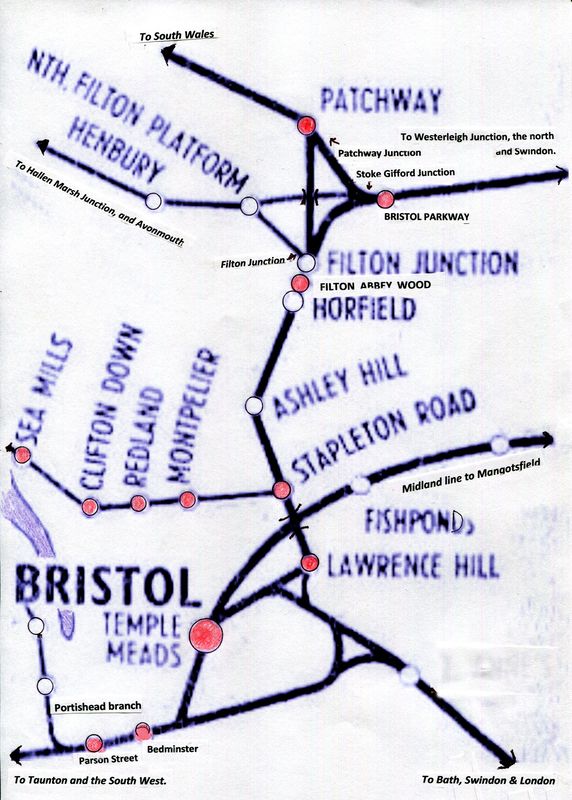
This rough plan based on the bR timetable of 1951 shows the positions of the closed stations and the junctions at Filton. Filton Junction station was at the dividing point between lines to and from Cardiff and lines towards what became Bristol Parkway. The four platform faces were reduced to two on the opening of Bristol Parkway. The closure of Ashley Hill and Horfield came on the 23rd November 1964.
The Replacement of
Gypsy Patch Lane Bridge Filton
an article by Michael Manning
Gypsy Patch Lane Bridge Filton
an article by Michael Manning
Gypsy Patch Len bridge is situated about a quarter of a mile east of Patchway station and barely 100 yards from the north junction at Filton where the main line from Wales divides to go either towards Bristol or to Bristol Parkway. Thus it can be seen that the removal of the railway here had very serious repercussions on any traffic to or from Wales via the Severn tunnel. The old bridge was also very restrictive to road traffic.
This was the accommodation bridge that was built in 1864 by the Bristol & South Wales Junction Railway for the GWR (with some slight alterations over time). Picture taken in January 2020 when it was closed to traffic prior to demolition. The estimated cost was £35 million.
Between the Wars industrial giants like the Bristol Aeroplane Company and Rolls Royce had set up large factories just beyond this bridge. Other industries followed with huge housing estates growing up to satisfy the workers. This Gipsy Patch Lane bridge was now on a commuter route. NetworkRail started to electrify the Paddington to Bristol route as far as the Bristol Parkway station. Then in 2019 they extended it to Cardiff.
The decision to demolish this bridge was made in 2015 but nothing happened. It would have been better before the electrification work.
The above picture shows pilling at work to safeguard all the embankments. The South Wales traffic was re-routed around Gloucester.
For many months during 2019 the new bridge was being built on spare land close by and would be moved into place on wheels. Yes all 4,280 tonnes. I believe nothing this heavy had been attempted before.
The decision to demolish this bridge was made in 2015 but nothing happened. It would have been better before the electrification work.
The above picture shows pilling at work to safeguard all the embankments. The South Wales traffic was re-routed around Gloucester.
For many months during 2019 the new bridge was being built on spare land close by and would be moved into place on wheels. Yes all 4,280 tonnes. I believe nothing this heavy had been attempted before.
The move was scheduled for 24th October weekend to get the main line reopened by the 7th November. The move was going well despite the pouring rain. Then with 30 metres to go it got stuck when the ground gave way. They brought in TV’s ‘Train Truckers’ with their expertise in moving giant objects. For those members that haven’t seen them on the Yesterday channel they are Allelys Group Transport of Studley, Warwicks. Six of their heaviest tractor units assisted in pulling the bridge onto safe ground. Now the road way had to be strengthened. More delays. The projected cost was £65 million before the delays.
Pictured today 24th November with the railway back in place but no road. About 2 metres of earth will have to excavated under the bridge to allow double deck buses through. That could take months and months.
Meanwhile Allelys can take their Tonka Toys back home.
Meanwhile Allelys can take their Tonka Toys back home.
Many thanks to Michael Manning for putting together this comprehensive record of a massive engineering operation.
Patchway 114 FROM Paddington
Patchway railway station first opened on 8 September 1863 when services began on the Bristol and South Wales Union Railway (BSWUR), which ran from Bristol Temple Meads to New passage Pier, north of Bristol on the banks of the River Severn. At New Passage, passengers were transferred to a ferry to cross the Severn to continue on into Wales. The line, engineered by Isambard Kingdom Brunel, was built as single track 7 ft 1⁄4 in (2,140 mm) broad gauge. Patchway was 6 miles 37 chains (10.4 km) from Temple Meads, adjacent to the Bristol to Gloucester road, what is now the A38 Gloucester Road.The station was only a small structure, and very little is known about it.There were initially six trains per day on weekdays in each direction, with three trains per day on Sundays.The BSWUR was amalgamated with the Great Western Railway (GWR), which had from the beginning operated all BSWUR services, in 1868; and in 1873 the line was converted to 1,435 mm (4 ft 8 1⁄2 in) standard gauge. Although the line made travel from Bristol to Wales easier, the change from train to ferry to train was inconvenient, and so a tunnel was built under the Severn. To cope with the anticipated increase in demand, it was decided that the line should be increased to twin track. However, the gradient between Pilning and Patchway, 1 in 68, was considered undesirably steep for trains heading up the hill towards Bristol, particularly for heavy coal trains, and so a three-mile deviation was built with a 1 in 100 gradient between Pilning and a point south of Patchway. Trains uphill towards Bristol would use the new line, while trains downhill towards Wales would continue to use the steeper, original track.The deviation left the two tracks at Patchway at significantly different levels, and so made the original site impractical for a station.[8] The station was rebuilt 40 chains (0.80 km) south along the line at its present site, 5 miles 77 chains (9.6 km) from Bristol Temple Meads.[6] A boulder and information board marks the site of the original station.
The original Patchway railway station was 40 chains (0.80 km) west of the current site. It was abandoned when a new, less steep, track (left) was built for trains from Wales towards Bristol.The new station opened on 10 August 1885, and was originally known as "Patchway & Stoke Gifford", but reverted to "Patchway" from 27 October 1908. The station was on a north/south alignment and had two platforms, separated by two running lines, with a third line, a goods loop, behind the western platform. There was a goods yard to the south of the station on the eastern side, with an adjacent signal box. As now, the eastern platform was for trains towards Bristol, the western platform for trains towards Wales. The station buildings were of a standard 1880s GWR design, with tall chimneys and fretted wooden canopies. The main building was on the eastern platform, containing the booking office, toilets, and waiting rooms. A matching brick shelter with canopy was built on the western platform. The eastern platform also had a "bicycle house" at the northern end. A large covered and glazed footbridge linked the two platforms. The goods yard included two sidings: a short, south-facing one adjacent to a loading dock; and a longer north-facing one. There was also a weigh bridge, coal office. At the north end of the station was a south-facing siding and an oil store. The station did not have a dedicated approach road as it was adjacent to the road between Gloucester Road to the west and Gypsy Patch Lane to the south. The road subsequently became known as Station Road. At the time of construction, the station was mostly surrounded by fields, with the Bristol conurbation almost 3 miles (4.8 km) away.
In 1900, almost all trains from London to Wales travelled via Bath and Bristol, with some still routed via Gloucester. However, the final 15 miles (24 km) to Bristol were relatively slow and congested, so a new route was built further north, the GWR's Badminton Line, now part of the South Wales Main Line, running from Wootton Bassett to a junction just south of Patchway. The new line opened in 1903, and allowed faster services to Wales. There was a new triangular junction between Patchway and Filton, with the new line coming in from the east. As part of the work, the station signal box was closed, replaced by a larger one closer to the junction on 19 October 1902. The signal box would later become one of only a few to be double glazed, due to the noise from jet engine testing from the Bristol Siddeley Aero-Engines factory (now the Rolls Royce factory) opposite the box. The Henbury Loop Line opened in 1910, connecting Avonmouth to the main lines south of Patchway. From 1928, some trains from Bristol would travel in loops via Patchway and Severn Beach.
A passenger train passes west through Patchway in 1958. In the background on the right, a freight train can be seen using the goods loop.When the railways were nationalised in 1948, Patchway came under the aegis of the Western Region of British Railways. In 1949, there were 11 trains towards South Wales and 13 towards Bristol each weekday, with three trains per day in each direction on Sundays. However, by 1965 this had reduced to eight trains on weekdays towards South Wales and six towards Bristol, with no Sunday service.Traffic levels fell - the station was closed to goods traffic on 5 July 1965, and subsequently had all staff withdrawn on 14 October 1968. The goods loop was taken up and the station buildings demolished, replaced by small brick shelters. The structure of the footbridge remained, but the roof was removed. The goods yard was repurposed as vehicle storage.
In 1974, when the Local Government Act 1972 came into effect, the southern part of Gloucestershire, including the district of Patchway, became part of the new county of Avon. Avon was disbanded in 1996, with the region now governed by South Gloucestershire council.
South of Patchway is Patchway Junction, where the lines from London, Bristol and Avonmouth converge. British Rail was split into business-led sectors in the 1980s, at which time operations at Patchway passed to Regional Railways. When the railway was privatised in 1997, local services were franchised to Wales & West, which was succeeded by Wessex Trains, an arm of National Express, in 2001. The Wessex franchise was amalgamated with the Great Western franchise into the Greater Western franchise from 2006, and responsibility passed to First Great Western, a subsidiary company of FirstGroup, and rebranded as Great Western Railway in 2015. From December 2006, Virgin CrossCountry began operating a single daily service Newcastle to Cardiff Central via Bristol Temple Meads and Patchway. This service was taken over by Arriva CrossCountrywhen the CrossCountry franchise changed hands in 2007, and then replaced by a daily service each direction between Cardiff Central and Manchester Piccadilly.
Since the mid-2000s, the Severnside Community Rail Partnership have been working to enhance Patchway station. One of the first acts was installing new community notice boards. A local working group was formed to "adopt" the station, and the group negotiated with Rolls Royce to use their CCTV system to cover the station. A successful bid was made to the Department for Transport's "Access for All" scheme, which provided for improved signage, lighting and seats. A station garden was created in partnership with nearby Patchway Community College, and two decorative mosaics were installed. The disused railway land adjacent to the station was cleared through a Community Paybackscheme.
The above extensive notes are courtesy Wikipedia.
Patchway railway station first opened on 8 September 1863 when services began on the Bristol and South Wales Union Railway (BSWUR), which ran from Bristol Temple Meads to New passage Pier, north of Bristol on the banks of the River Severn. At New Passage, passengers were transferred to a ferry to cross the Severn to continue on into Wales. The line, engineered by Isambard Kingdom Brunel, was built as single track 7 ft 1⁄4 in (2,140 mm) broad gauge. Patchway was 6 miles 37 chains (10.4 km) from Temple Meads, adjacent to the Bristol to Gloucester road, what is now the A38 Gloucester Road.The station was only a small structure, and very little is known about it.There were initially six trains per day on weekdays in each direction, with three trains per day on Sundays.The BSWUR was amalgamated with the Great Western Railway (GWR), which had from the beginning operated all BSWUR services, in 1868; and in 1873 the line was converted to 1,435 mm (4 ft 8 1⁄2 in) standard gauge. Although the line made travel from Bristol to Wales easier, the change from train to ferry to train was inconvenient, and so a tunnel was built under the Severn. To cope with the anticipated increase in demand, it was decided that the line should be increased to twin track. However, the gradient between Pilning and Patchway, 1 in 68, was considered undesirably steep for trains heading up the hill towards Bristol, particularly for heavy coal trains, and so a three-mile deviation was built with a 1 in 100 gradient between Pilning and a point south of Patchway. Trains uphill towards Bristol would use the new line, while trains downhill towards Wales would continue to use the steeper, original track.The deviation left the two tracks at Patchway at significantly different levels, and so made the original site impractical for a station.[8] The station was rebuilt 40 chains (0.80 km) south along the line at its present site, 5 miles 77 chains (9.6 km) from Bristol Temple Meads.[6] A boulder and information board marks the site of the original station.
The original Patchway railway station was 40 chains (0.80 km) west of the current site. It was abandoned when a new, less steep, track (left) was built for trains from Wales towards Bristol.The new station opened on 10 August 1885, and was originally known as "Patchway & Stoke Gifford", but reverted to "Patchway" from 27 October 1908. The station was on a north/south alignment and had two platforms, separated by two running lines, with a third line, a goods loop, behind the western platform. There was a goods yard to the south of the station on the eastern side, with an adjacent signal box. As now, the eastern platform was for trains towards Bristol, the western platform for trains towards Wales. The station buildings were of a standard 1880s GWR design, with tall chimneys and fretted wooden canopies. The main building was on the eastern platform, containing the booking office, toilets, and waiting rooms. A matching brick shelter with canopy was built on the western platform. The eastern platform also had a "bicycle house" at the northern end. A large covered and glazed footbridge linked the two platforms. The goods yard included two sidings: a short, south-facing one adjacent to a loading dock; and a longer north-facing one. There was also a weigh bridge, coal office. At the north end of the station was a south-facing siding and an oil store. The station did not have a dedicated approach road as it was adjacent to the road between Gloucester Road to the west and Gypsy Patch Lane to the south. The road subsequently became known as Station Road. At the time of construction, the station was mostly surrounded by fields, with the Bristol conurbation almost 3 miles (4.8 km) away.
In 1900, almost all trains from London to Wales travelled via Bath and Bristol, with some still routed via Gloucester. However, the final 15 miles (24 km) to Bristol were relatively slow and congested, so a new route was built further north, the GWR's Badminton Line, now part of the South Wales Main Line, running from Wootton Bassett to a junction just south of Patchway. The new line opened in 1903, and allowed faster services to Wales. There was a new triangular junction between Patchway and Filton, with the new line coming in from the east. As part of the work, the station signal box was closed, replaced by a larger one closer to the junction on 19 October 1902. The signal box would later become one of only a few to be double glazed, due to the noise from jet engine testing from the Bristol Siddeley Aero-Engines factory (now the Rolls Royce factory) opposite the box. The Henbury Loop Line opened in 1910, connecting Avonmouth to the main lines south of Patchway. From 1928, some trains from Bristol would travel in loops via Patchway and Severn Beach.
A passenger train passes west through Patchway in 1958. In the background on the right, a freight train can be seen using the goods loop.When the railways were nationalised in 1948, Patchway came under the aegis of the Western Region of British Railways. In 1949, there were 11 trains towards South Wales and 13 towards Bristol each weekday, with three trains per day in each direction on Sundays. However, by 1965 this had reduced to eight trains on weekdays towards South Wales and six towards Bristol, with no Sunday service.Traffic levels fell - the station was closed to goods traffic on 5 July 1965, and subsequently had all staff withdrawn on 14 October 1968. The goods loop was taken up and the station buildings demolished, replaced by small brick shelters. The structure of the footbridge remained, but the roof was removed. The goods yard was repurposed as vehicle storage.
In 1974, when the Local Government Act 1972 came into effect, the southern part of Gloucestershire, including the district of Patchway, became part of the new county of Avon. Avon was disbanded in 1996, with the region now governed by South Gloucestershire council.
South of Patchway is Patchway Junction, where the lines from London, Bristol and Avonmouth converge. British Rail was split into business-led sectors in the 1980s, at which time operations at Patchway passed to Regional Railways. When the railway was privatised in 1997, local services were franchised to Wales & West, which was succeeded by Wessex Trains, an arm of National Express, in 2001. The Wessex franchise was amalgamated with the Great Western franchise into the Greater Western franchise from 2006, and responsibility passed to First Great Western, a subsidiary company of FirstGroup, and rebranded as Great Western Railway in 2015. From December 2006, Virgin CrossCountry began operating a single daily service Newcastle to Cardiff Central via Bristol Temple Meads and Patchway. This service was taken over by Arriva CrossCountrywhen the CrossCountry franchise changed hands in 2007, and then replaced by a daily service each direction between Cardiff Central and Manchester Piccadilly.
Since the mid-2000s, the Severnside Community Rail Partnership have been working to enhance Patchway station. One of the first acts was installing new community notice boards. A local working group was formed to "adopt" the station, and the group negotiated with Rolls Royce to use their CCTV system to cover the station. A successful bid was made to the Department for Transport's "Access for All" scheme, which provided for improved signage, lighting and seats. A station garden was created in partnership with nearby Patchway Community College, and two decorative mosaics were installed. The disused railway land adjacent to the station was cleared through a Community Paybackscheme.
The above extensive notes are courtesy Wikipedia.
Footbridge replacement work at Patchway Part 1
Many thanks to David Field.
Many thanks to David Field.
Footbridge replacement work at Patchway Part 2
Many thanks to David Field.
Many thanks to David Field.
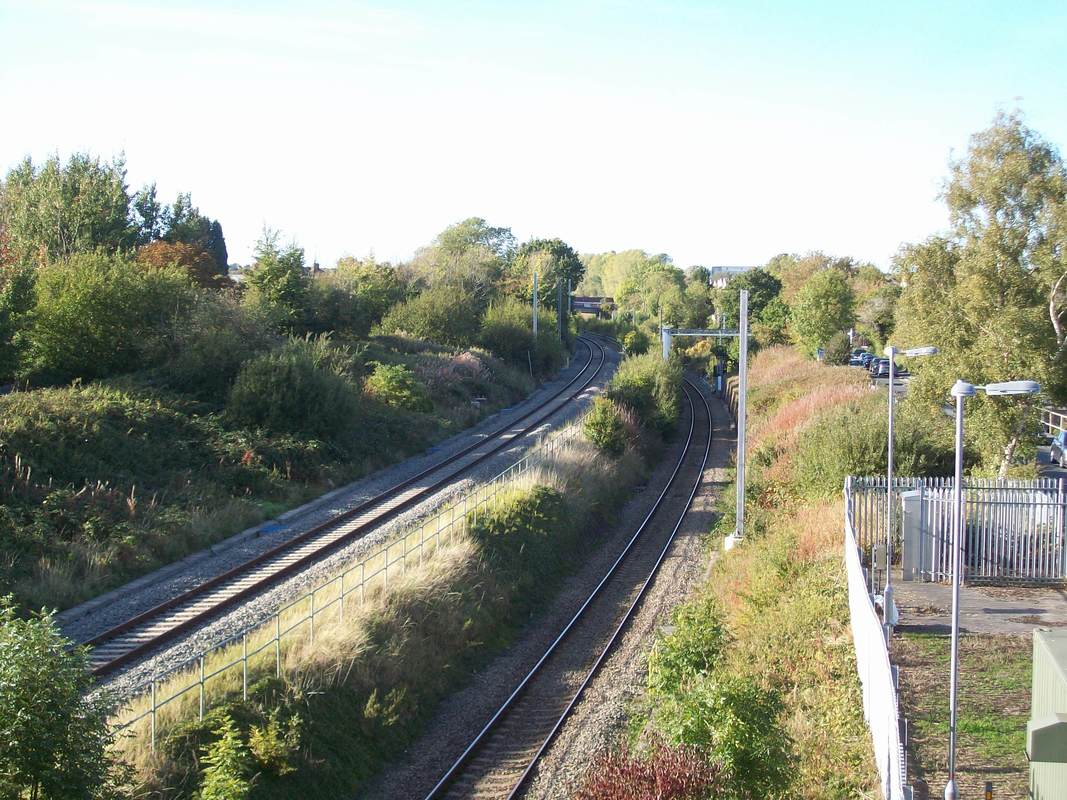
Looking west from the footbridge. The main lines can be seen moving apart as they near Patchway tunnels. To the left the down line passes though the older shorter tunnels (1246 & 62 yards).. Whereas to ease the gradient from Pilning towards Patchway the approach for the up line is through a longer tunnel 1760 yards. Picture dated 29th September 2018 Copyright Colin Burges.
Patchway Tunnels - just prior to electrification
24th December 2018
24th December 2018
The shutdown of the railways in the Bristol area over the 2018 Christmas period (and beyond) should finally herald the arrival of electrification wires from Bristol Parkway through Patchway station and up to the Patchway Old and New Tunnels. At the other end of the tunnels, wires will be strung from Pilning, which is already partially wired, up to the Patchway New and Patchway Short Tunnel portals, and also completed down to the Severn Tunnel.
The photos I have sent were taken today at the Patchway end of the Old and New Tunnels. I thought I would try and get some last minute photos without the wires. The HST photo isn't the best, but they are now so few and far between these days on services into South Wales that I thought I would include it. For information, Patchway New Tunnel is the lower and closer of the two in the photos,.
A Merry Christmas to you and all the CRS members, contributors and readers of this wonderful website.
Kind Regards, Dave Field Many thanks David
The photos I have sent were taken today at the Patchway end of the Old and New Tunnels. I thought I would try and get some last minute photos without the wires. The HST photo isn't the best, but they are now so few and far between these days on services into South Wales that I thought I would include it. For information, Patchway New Tunnel is the lower and closer of the two in the photos,.
A Merry Christmas to you and all the CRS members, contributors and readers of this wonderful website.
Kind Regards, Dave Field Many thanks David
Near Pilning
Support the Pilning Project. Footbridge for Pilning.
Colin Burgess, a constant campaigner for positive things on our railways writes:-
Dear Keith,
Talk of the soon to be redundant Totnes footbridge reminded me that Pilning, like Lostwithiel, is also in need of a such a structure.
On the Pilning group's web pages, there is another campaign song, this time to the tune of Lennon's Imagine.
http://www.pilningstation.uk/
Cheers, Colin
If you have a few minutes it's well worth clicking above - many thanks Colin and best wishes to the Pilning Footbridge Project.
Colin Burgess, a constant campaigner for positive things on our railways writes:-
Dear Keith,
Talk of the soon to be redundant Totnes footbridge reminded me that Pilning, like Lostwithiel, is also in need of a such a structure.
On the Pilning group's web pages, there is another campaign song, this time to the tune of Lennon's Imagine.
http://www.pilningstation.uk/
Cheers, Colin
If you have a few minutes it's well worth clicking above - many thanks Colin and best wishes to the Pilning Footbridge Project.
Pilning High Level 116 and a half from Paddington
Pilning Low Level Located on the former line through to Severn Beach and situated only yards from the High Level station but as the name suggests at a slightly lower level. This line en-route to Severn Beach crossed over the South Wales line at the south end of the Severn Tunnel.
Thanks Roger.
Pilning - you're not forgotten
Richard Giles
There's some hope yet
Richard Giles
There's some hope yet
Hello Keith
Sorry for the late reply on this subject (due to recent holidays) - reference Phil Smith's 3rd , published 9th September view.
Pilning Station, South Gloucestershire has always been an interesting subject, cited on the South Wales mainline between Patchway (the Severn Tunnel) and Severn Tunnel Junction Stations being in latter times poorly served, currently having only two trains calling a week both on a Saturday despite several recent changes in the surrounding landscape regarding a large TESCO distribution depot and the WAVE an inland water surfing park (probably not as good as Newquay and the North Cornwall Coast!) but popularity here is growing non the less, nearby.
The placard Platform 2 opened 1st December 1886, relates to its unpopular closure during the Autumn of 2016 as electrification was nearing. Image 1 (copyright Richard Giles) taken on 10th September 2016 shows 153361 + 150127 with 2U12 1407 Taunton - Cardiff Central service 'the last train' (so called by many at the time!) as an engineering work line blockade was to start the next day, 11th September through to 21st October for internal tunnel electrification 'contact rail' installation to take place. The footbridge (which was already observed to have had some flame cutting taken place on this date) was to be removed to accommodate the passage of overhead line wires and supports and as can be seen a number of locals, a village councilor, members of the excellent Friends of the Surburban Railway (FOBSR) area pro-rail lobby group (now known as Bristol Rail Campaign Friends of Surburban Bristol Railways) and rail enthusiasts were present, the latter in fact causing problems as the train guard who was in the second coach of 150127 (57127) had to cancel at least two departure attempts (this eventually taking place at 1542) as persons kept jumping out of its front coach (52127) presumably wanting to be the final passenger to get off and last back on a train to call at this station platform prior to closure! Bunting, flags and other home-made placards which had been put up by station supporters to mark the occasion, completed the scene.
HOWEVER, this was not to be and two more trains (the first being on Saturday 22nd October) later, Image 2 (copyright Richard Giles) 150938 (formed 57219+52238+57238) which is seen with 2U20 1407 Taunton - Cardiff Central (which was started at Bristol Temple Meads on the day at 1521 - the original set having failed with a door defect) departing at 1545 (5 minutes late) in not so good weather conditions and a lower turn out re observers, this being the 'real' final train to call on 29th October 2016. Two further week-end blockades following the six-week work period had been 'overlooked' and these were the ones planned for the eventual demise of the foot-bridge this having been completed by mid-November.
Hope of interest, regards,
RICHARD GILES Clevedon. North Somerset.
Sorry for the late reply on this subject (due to recent holidays) - reference Phil Smith's 3rd , published 9th September view.
Pilning Station, South Gloucestershire has always been an interesting subject, cited on the South Wales mainline between Patchway (the Severn Tunnel) and Severn Tunnel Junction Stations being in latter times poorly served, currently having only two trains calling a week both on a Saturday despite several recent changes in the surrounding landscape regarding a large TESCO distribution depot and the WAVE an inland water surfing park (probably not as good as Newquay and the North Cornwall Coast!) but popularity here is growing non the less, nearby.
The placard Platform 2 opened 1st December 1886, relates to its unpopular closure during the Autumn of 2016 as electrification was nearing. Image 1 (copyright Richard Giles) taken on 10th September 2016 shows 153361 + 150127 with 2U12 1407 Taunton - Cardiff Central service 'the last train' (so called by many at the time!) as an engineering work line blockade was to start the next day, 11th September through to 21st October for internal tunnel electrification 'contact rail' installation to take place. The footbridge (which was already observed to have had some flame cutting taken place on this date) was to be removed to accommodate the passage of overhead line wires and supports and as can be seen a number of locals, a village councilor, members of the excellent Friends of the Surburban Railway (FOBSR) area pro-rail lobby group (now known as Bristol Rail Campaign Friends of Surburban Bristol Railways) and rail enthusiasts were present, the latter in fact causing problems as the train guard who was in the second coach of 150127 (57127) had to cancel at least two departure attempts (this eventually taking place at 1542) as persons kept jumping out of its front coach (52127) presumably wanting to be the final passenger to get off and last back on a train to call at this station platform prior to closure! Bunting, flags and other home-made placards which had been put up by station supporters to mark the occasion, completed the scene.
HOWEVER, this was not to be and two more trains (the first being on Saturday 22nd October) later, Image 2 (copyright Richard Giles) 150938 (formed 57219+52238+57238) which is seen with 2U20 1407 Taunton - Cardiff Central (which was started at Bristol Temple Meads on the day at 1521 - the original set having failed with a door defect) departing at 1545 (5 minutes late) in not so good weather conditions and a lower turn out re observers, this being the 'real' final train to call on 29th October 2016. Two further week-end blockades following the six-week work period had been 'overlooked' and these were the ones planned for the eventual demise of the foot-bridge this having been completed by mid-November.
Hope of interest, regards,
RICHARD GILES Clevedon. North Somerset.
Thanks Richard.
The Severn Tunnel - the English End
The tunnel is 4 miles 674 yards long.
N.B. The views below were taken from safe places which were, at the time easily accessible. This is no longer the case and all notices and barriers must be obeyed.
Please use this link for further details of the tunnel and its history.
The tunnel is 4 miles 674 yards long.
N.B. The views below were taken from safe places which were, at the time easily accessible. This is no longer the case and all notices and barriers must be obeyed.
Please use this link for further details of the tunnel and its history.
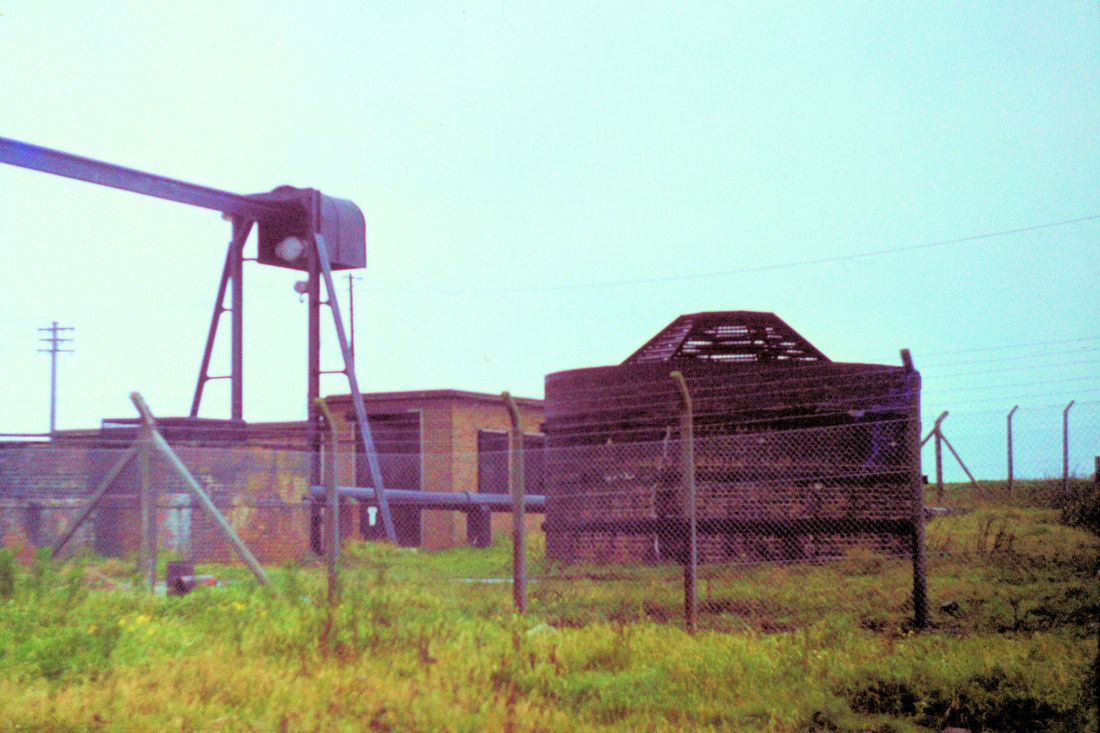
The Severn Tunnel Air Vent. 9th November 1974. Copyright Roger Winnen This vent shaft lies in a securely fenced are some 670 yards from the tunnels west end and about 70 yards inland from the high water mark. In the days of steam traction steam could be seen issuing from this shaft! The location is alongside appropriately named 'Shaft Road'.
Severn Tunnel - the west end.
Severn Tunnel Junction 123 and a half from Paddington
Wednesday October 27th 2021 was a milestone date in the history of the hugely successful 'Inter City 125' fleet when the first pair of power cars were dispatched for scrap through redundancy as opposed to collision damage which is the only reason several others have so far been disposed of. My colleague Adrian Watts went to Severn Tunnel Junction and recorded the sad scene as 57312 ( the former 47330) hauled ex East Midlands duo 43061 and 43075 on their final one-way trip to oblivion. These were both built in 1977 for use on the East Coast main line and were part of sets 254004 and 254011 respectively. The working was 5Q76 1130 Long Marston-Newport Docks (Sims Group) and if rumours are to be believed further deliveries are reportedly due to made in coming weeks as more PCs become scheduled for disposal.
Guy V (photos courtesy of Adrian Watts)
Guy V (photos courtesy of Adrian Watts)
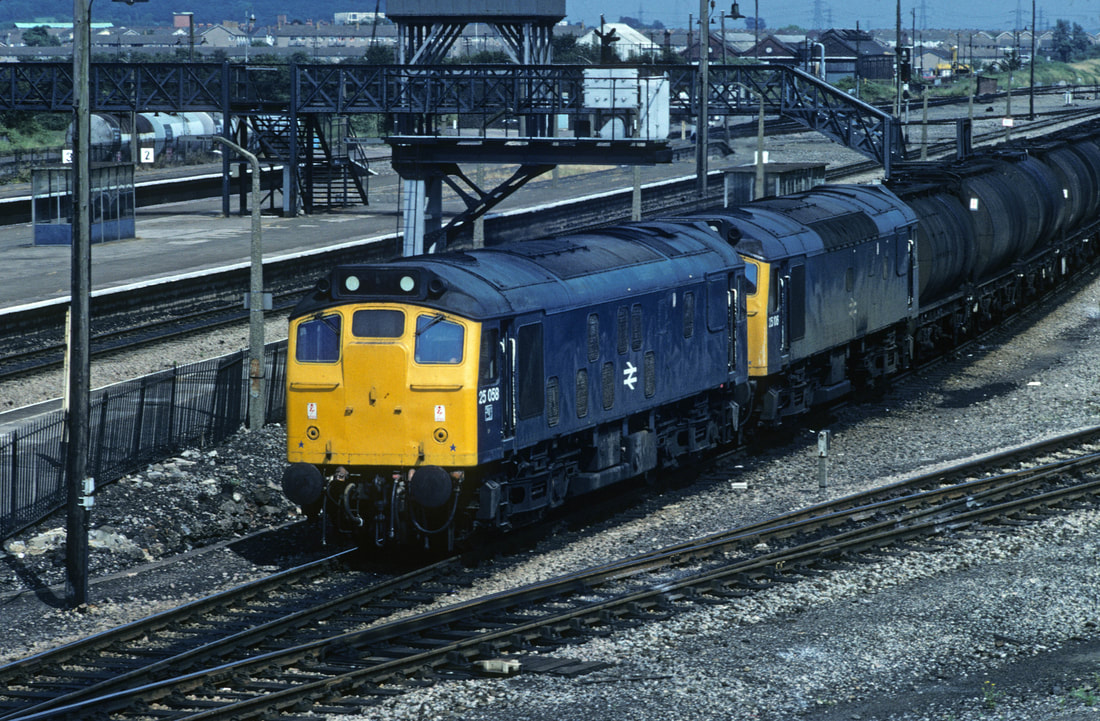
25058 and 25106 on a return Cranmore to Stanlow bitumin train at Severn Tunnel Junction 25058 was a Plymouth loco based at Laira from May 1978 to the end of Oct 1980 so was seen on many occasions in Cornwall. This view taken on the 14th July 1981 Copyright Roger Geach A nice scene full of interest - though even in those days the platforms seem pretty barren.
The RHTT Circuits Alan Peters
The RHTT season takes me away from home in Cornwall, as Colas operate the Bristol RHTT circuit, the Shrewsbury RHTT circuit and the Gloucester RHTT circuit, the latter which I work covers Gloucester to Swindon via Kemble and return, Gloucester to Worcester then Oxford via Moreton in Marsh, Worcester to Hereford and Craven Arms, Worcester to Barnt Green then Severn Tunnel Junction and back to Gloucester utilising class 56 traction. Pictured at Severn Tunnel junction is 56094 with the Gloucester RHTT, working in multiple top and tail with 56078 on the rear, the train will work back to Gloucester Horton Road via Lydney where it is stabled on the old depot inlet road, on 16/10/19 - Alan Peters. Many thanks Alan.
The RHTT season takes me away from home in Cornwall, as Colas operate the Bristol RHTT circuit, the Shrewsbury RHTT circuit and the Gloucester RHTT circuit, the latter which I work covers Gloucester to Swindon via Kemble and return, Gloucester to Worcester then Oxford via Moreton in Marsh, Worcester to Hereford and Craven Arms, Worcester to Barnt Green then Severn Tunnel Junction and back to Gloucester utilising class 56 traction. Pictured at Severn Tunnel junction is 56094 with the Gloucester RHTT, working in multiple top and tail with 56078 on the rear, the train will work back to Gloucester Horton Road via Lydney where it is stabled on the old depot inlet road, on 16/10/19 - Alan Peters. Many thanks Alan.
Looking back to 1986 - The Severn Valley Railtour
On the 7th May 1986 the CRS ran a very successful railtour to the Severn Valley Railway. On our return journey we were routed via Severn Tunnel Junction, here we were placed for the run round on a line without a platform. Hence only pictures grabbed through the windows.
On the 7th May 1986 the CRS ran a very successful railtour to the Severn Valley Railway. On our return journey we were routed via Severn Tunnel Junction, here we were placed for the run round on a line without a platform. Hence only pictures grabbed through the windows.
Undy Halt 125 and a half from Paddington
Magor 126 miles
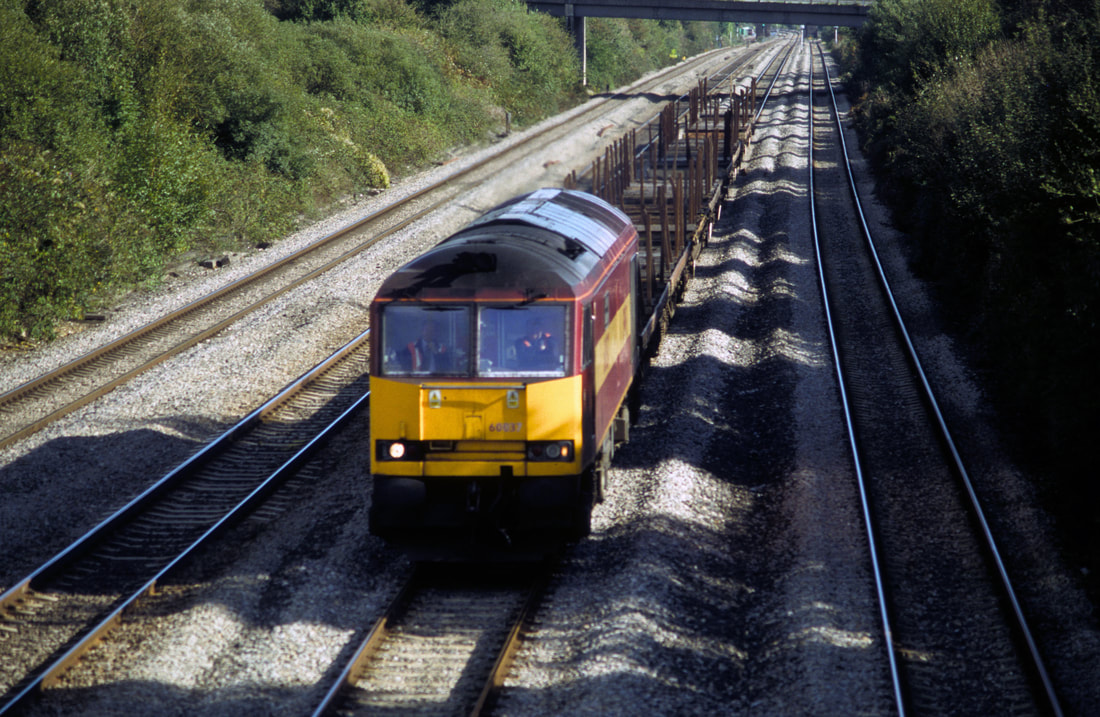 60037 near Bishton with a Bristol to Alexander Dock Jct. 20th October 2005 Copyright Roger Geach
60037 near Bishton with a Bristol to Alexander Dock Jct. 20th October 2005 Copyright Roger Geach
Bishton Flyover Approx 128 miles from London Paddington
Newport 133 and a half from London Paddington
AUTOMATIC TRAIN CONTROL
As developed by the Great Western Railway
An article by Michael L. Roach
As developed by the Great Western Railway
An article by Michael L. Roach
The GWR started to experiment with a system of automatic train control in 1906 and devised a system consisting of a ramp between the running rails located at distant signals which lifted a shoe on the locomotive causing a bell to sound in the cab if the distant signal was at caution. The GWR system remained in use until the 1970s when it was superseded by the BR system. Ninety years ago today on 2 September 1931 the Company finally finished installing the ATC system on all its main lines. The equipment had been installed at every distant signal on 2,130 miles of track and 2,500 locomotives at a total cost of £250,000. The GWR Magazine of the time waxed lyrical about the system and the fact that “in the event of a distant signal being passed at caution, it would stop the train automatically before it reaches the next signal.” The last six ramps had been installed on the Weston-super-Mare loop line.
ADDENDUM
After writing the above in July 2021 I came across a further news item, probably culled from a GWR press release years later, on exactly the same subject. It appeared in the Railway Observer for November 1939 and reported that the scheme of installing its own system of automatic train control throughout the main line between Paddington and Penzance, Fishguard and Chester was completed by the fitting of the last ramp at Penzance on 9 November 1939. This time the report said that 3,250 engine had been fitted, and 2,114 ramps installed, but the cost was still in the region of £250,000. The GWR claimed that “tests have proved that at 60mph a train can be brought smoothly and automatically to a standstill in 900 yards or 450 yards before reaching a stop signal.”
Cardiff
Taken in summer school holidays 1962. The weather was none too good!!
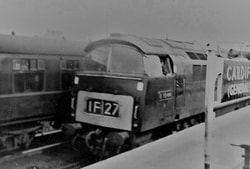 Cardiff Summer D1044 Western Duchess has just arrived from Paddinton with a train for Swansea in 1963 Copyright Adrain King.
Cardiff Summer D1044 Western Duchess has just arrived from Paddinton with a train for Swansea in 1963 Copyright Adrain King.
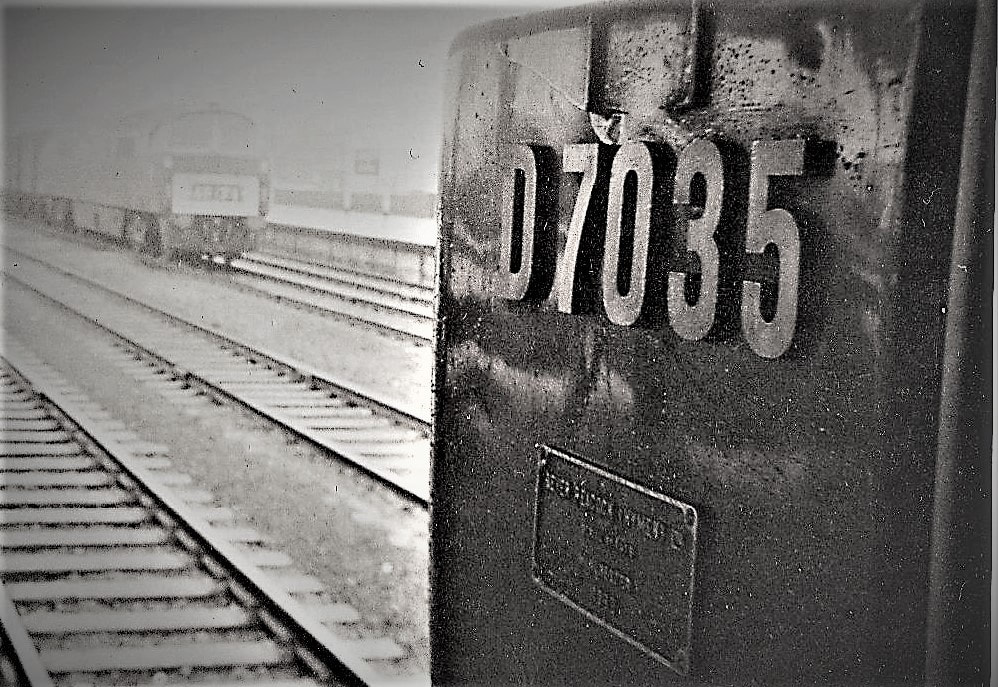
3. Another of my early attempts at photography with apologies for the quality. Its the summer of 1963 at Cardiff General and Hymek D7035 stands at Platform 3 with a service for Swansea, while through the haze an unidentified 'Western' brings a mixed freight through the centre road. Copyright Adrian King.
Many thanks indeed Adrian.
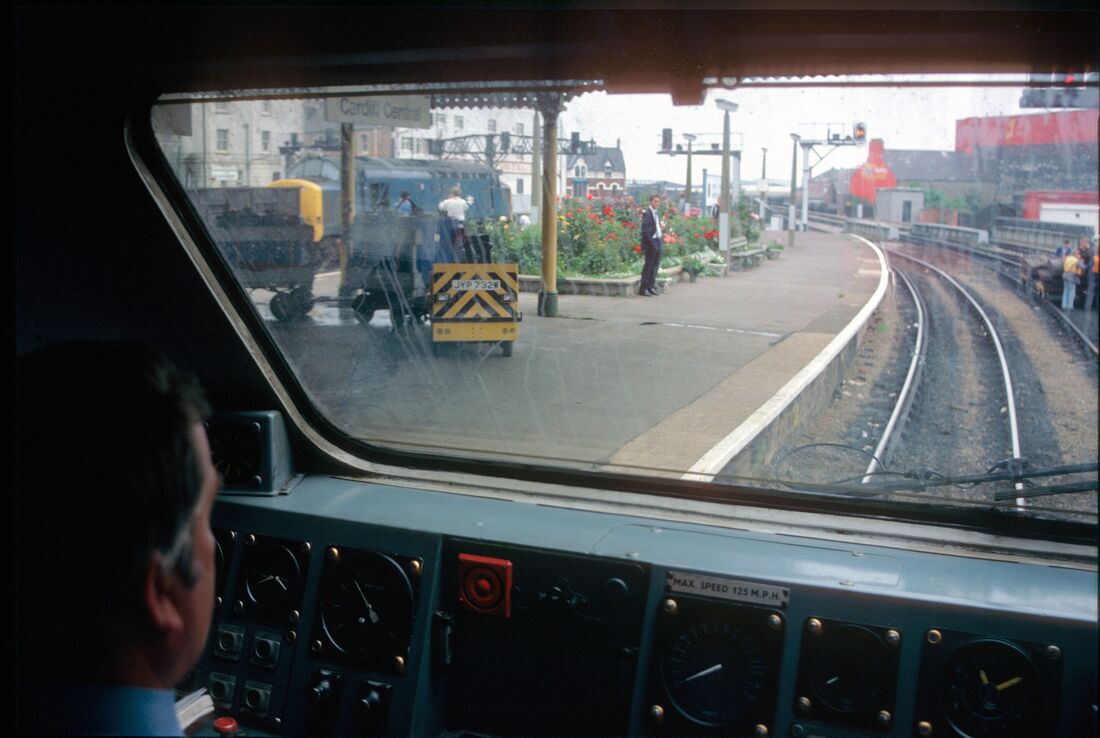
Alan peters writes :- My first cab ride in a HST was on 13th August 1986 aboard 43015 from Cardiff Central to Bristol Parkway, departing from platform 4 where a single yellow is displayed. This is a scene that has changed with electrification, note the class 37 waiting on the Up Main, the flower beds and T lighting, also of note the P Way with a trolley wearing just short H/V vests before the days of full orange and hard hat. The Driver is Ken Mitchel at the time a Saltley Driver originally starting at Edge Hill and later moving to St Blazey, unfortunately I have no notes on the workings although being a Saltley turn this was possibly a Cross Country service via the tunnel in the days before the Cardiff to Nottingham service. Copyright.
June 2020 at Cardiff.
Cardiff Central this morning (18th June 2020), a very wet and gloomy day after several weeks of fine dry weather. Colourful ex East Midlands Trains 153310 with Transport for Wales liveried 153312 both stand in platform 3 on the 1W07 1037 Manchester Piccadilly service with GWR Turbo 166215 in P2 on the 1F13 1030 to Portsmouth Harbour. At the same time 60015 came rumbling through on a well loaded 6H25 0920 Margam-Llanwern steel coil train. Freight in South Wales seems to be holding up reasonably well despite the current world situation. Guy Vincent. Many thanks Guy.
Newport
Pride of place must go to this nostalgic picture taken by Mike Roach at Newport
- memories are made of this.
- memories are made of this.
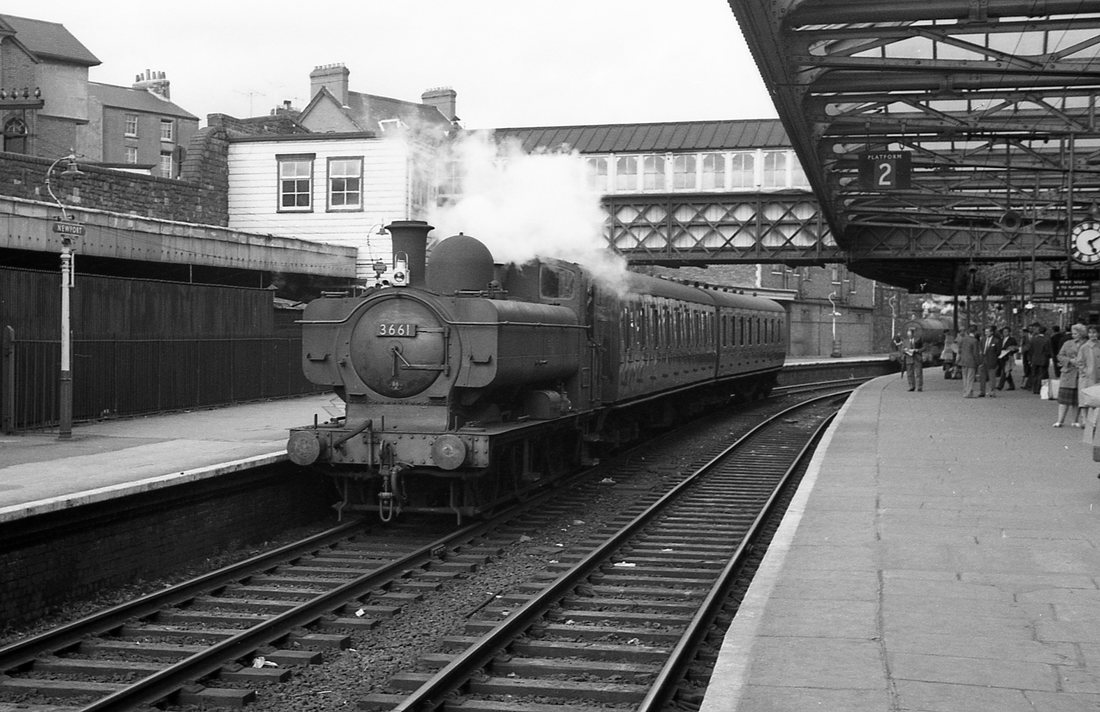
Pannier tank 3661 of Ebbw Junction Shed waits to leave Newport in September 1962 with the 5.15pm to New Tredegar 21 miles away in the Rhymney Valley. There were only 3 trains a day making that journey from Newport to New Tredegar and they were all withdrawn at the end of 1962. 3661 was transferred to Cardiff East Dock Shed the following month and withdrawn in April 1965.
Regards, Mike Copyright Mike Roach.
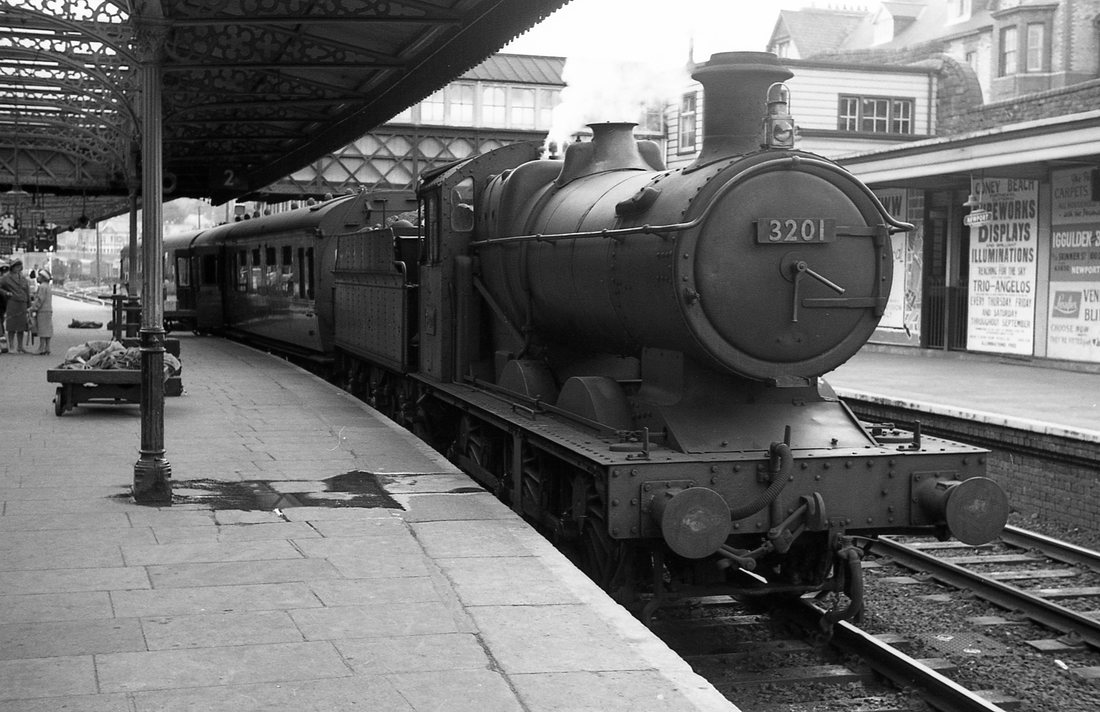
The time is 4.27pm on 6 September 1962 and the photographer has just arrived at Newport on this train from Brecon. The train left Brecon at 2.05 and arrived at platform 2 at 4.26pm, having taken 2 hours and 21 mins for the 47 miles. There were 21 intermediate stops and amazingly this was the last train of the day from Brecon to Newport Monday to Friday. It was possible to leave Brecon later at 4.10 to Hereford; 5.05 to Moat Lane Junction; 6.00 to Three Cocks Junction; and 6.20 to Neath. Copyright Mike Roach
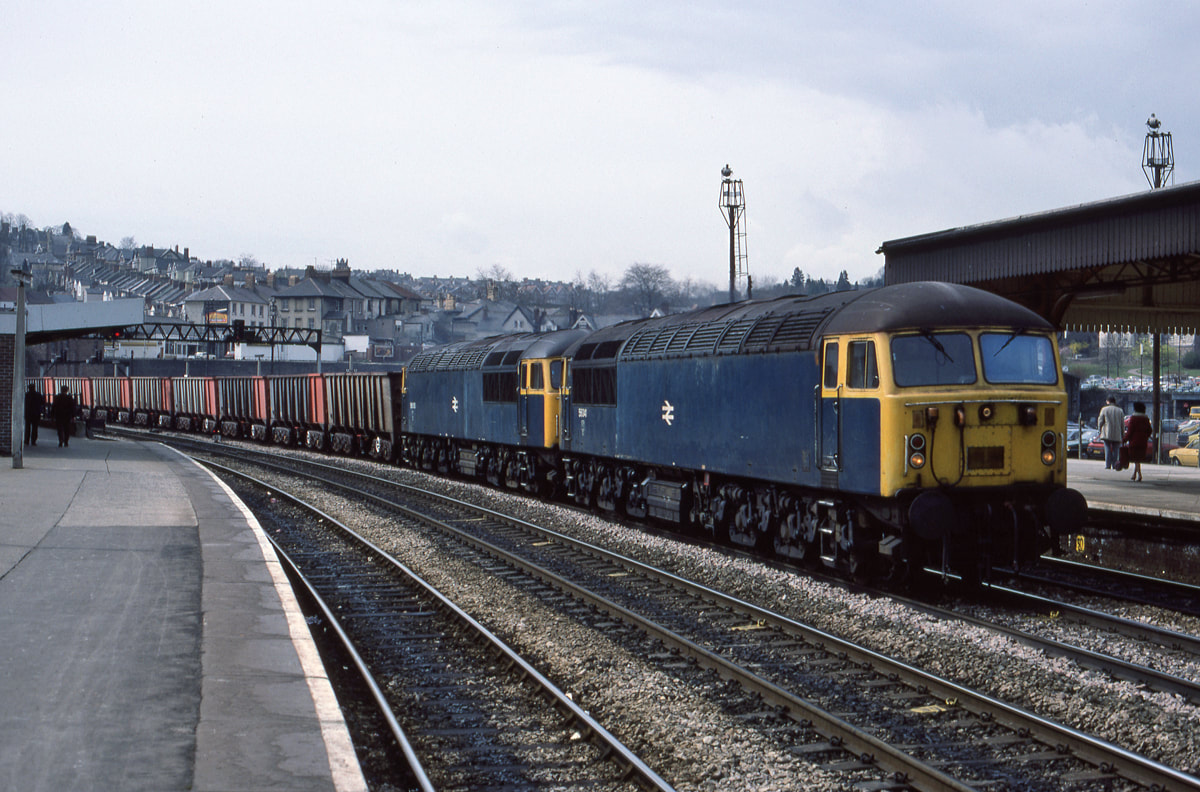
17th April 1984
At this time the Port Talbot to Llanwern iron ore circuit was worked by pairs of Class 56’s.
56041 and 56050 can be seen passing through Newport station heading for Llanwern with a loaded train, and later passing Ebbw Junction heading once again for Port Talbot with the empties.
Note the former Ebbw Junction mpd on the left. Copyright Ron Kosys
Hello Roger, Hope you are well.Great pictures on the site,as ever.
I now send a picture taken on a cold, grey but very busy Newport on 17 December 1998.Great variety of locos and lots of freight.
We see 56095 on one of the then frequent coal trains from Grange sidings to Llanwern steelworks.In the background ,on the stabling point,you can see a class37.a 60 and one of the relatively new 66s.how things have changed. Copyright Michael Forward
Thanks, Michael.
I now send a picture taken on a cold, grey but very busy Newport on 17 December 1998.Great variety of locos and lots of freight.
We see 56095 on one of the then frequent coal trains from Grange sidings to Llanwern steelworks.In the background ,on the stabling point,you can see a class37.a 60 and one of the relatively new 66s.how things have changed. Copyright Michael Forward
Thanks, Michael.
Hello Roger,Thank you for dealing with my last picture,it made a nice contrast to the Collett Goods.
Photo of another 56 on the same day is attached,this time of 56034 in Load haul livery, with a working from Alexandra Dock to Mossend.
best wishes and thanks for all your work on the website.Michael
Photo of another 56 on the same day is attached,this time of 56034 in Load haul livery, with a working from Alexandra Dock to Mossend.
best wishes and thanks for all your work on the website.Michael
Here is another picture taken at Newport on 19 May 1999 and it shows 37407 ‘Blackpool Tower’ arriving(at 14.25) with a Cardiff to Bristol service,a proper train!
Its good to know that this loco. is still working,in DRS livery ,and is presently at Norwich. Copyright Michael Forward
Its good to know that this loco. is still working,in DRS livery ,and is presently at Norwich. Copyright Michael Forward
Newport Old and New
Planned to enable the station to cope with passenger traffic associated with the 2010 Ryder Cup a second passenger bridge was built linking the whole station with a lift for all platforms. Network Rail claimed accessibility and safety are at the heart of the new design. The new bridge is clad in ethylene tetrafluoroethylene (ETFE), the material which protects the Eden Project in Cornwall.
Gaer Junction and the Newport tunnels.
Marshfield Closed passengers 10th August 1959 Goods 4th January 1964
Rumney
Pengham (Cardiff)
Cardiff 145 and a quarter
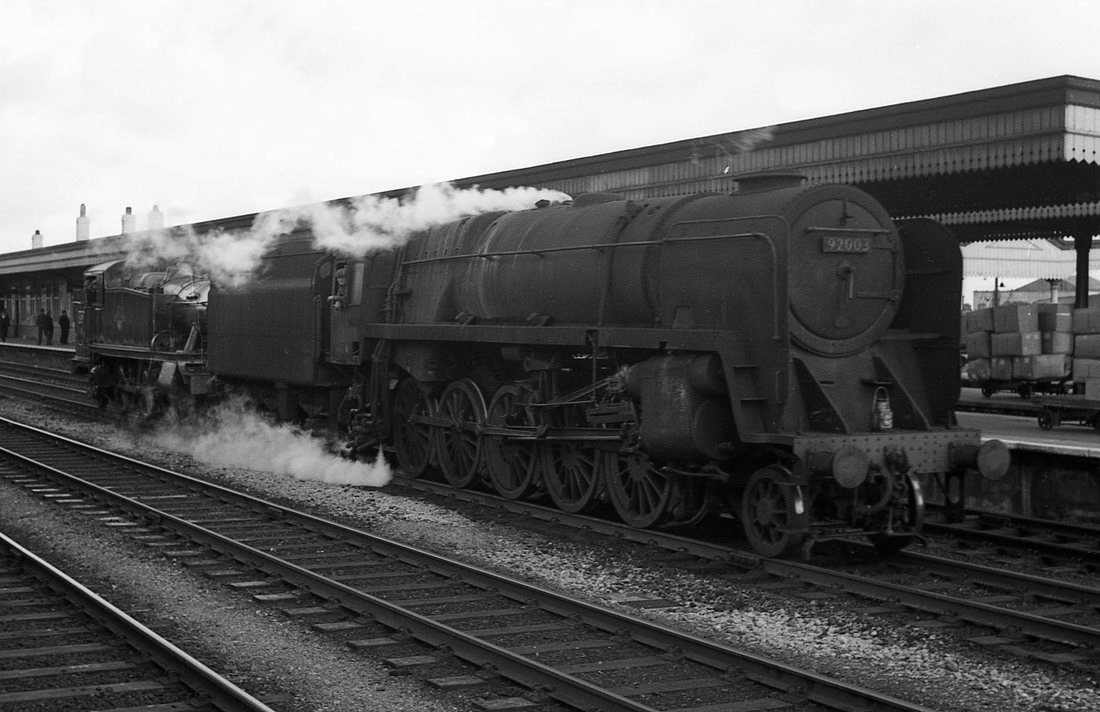
Here we see 92003 and 4109 (ex-works) heading west through Cardiff General in September 1962. Since 4109 was shedded at Gloucester it could be travelling from Caerphilly Works to Canton Shed before heading for its home shed later. Caerphilly works closed the following year. This photo is dedicated to the memory of Charles Fennamore who passed away recently. Charles and I did many rail trips through Cardiff General together when we both lived in South Wales during 1960 - 61.
Regards
Mike Copyright Mike Roach
The above photograph is in memory of Charles Fennamore who passed away on 9th November 2018 aged 78.
Cardiff in the 60's - a sequence of seven pictures kindly supplied by Ken Mumford.
Hello Roger,Thanks for dealing with my last picture,here is another from Cardiff on 17 February and shows 37693 at the East end with loaded coal.The emblem on the side shows(I think) the Thornaby kingfisher so maybe the loco. was a long way from home or recently re-allocated. Copyright Michael Forward
The most recent at Cardiff 22nd February 2021
A much appreciated report from Guy Vincent.
A much appreciated report from Guy Vincent.
Recently converted former class 319 electric multiple unit 319006 standing in Cardiff Central station at 0850 this morning, no longer powered by electricity but by two MAN D2876 6-cylinder, 12.8 litre diesel engines and renumbered 769006. TFW recently withdrew their fleet of 142 and 143 pacers and the 769s had been intended to come into service before this happened, however the conversion project has taken far longer than originally planned. The unit was not in passenger service today and returned to Canton depot. The 319s were introduced in 1988 and spent over 30 years running between Bedford and Brighton on the Thameslink route through London.
Regards, Guy V
Regards, Guy V
Many thanks Guy.
August '22 views in Cardiff - brought to us by Adrian King.
